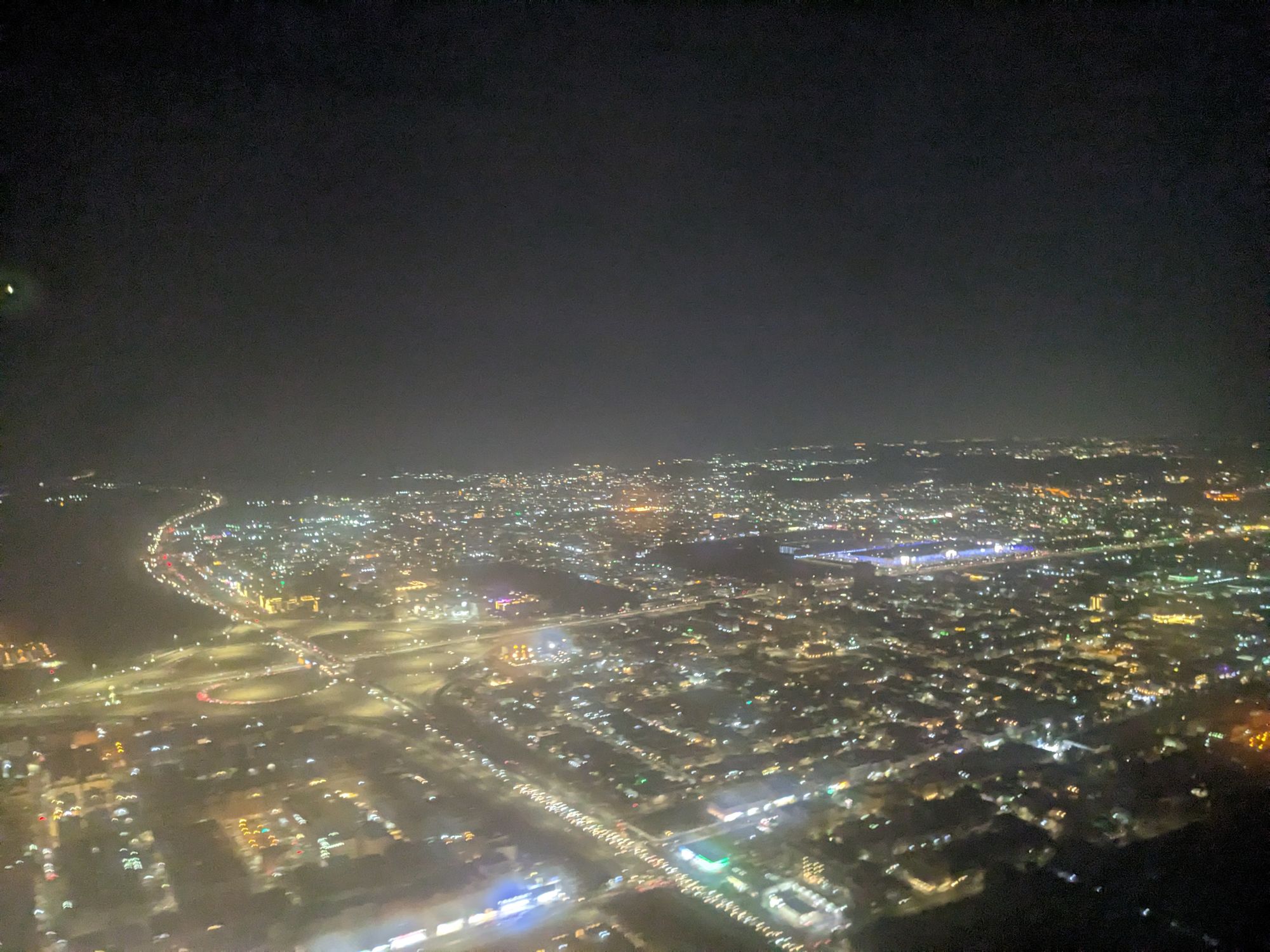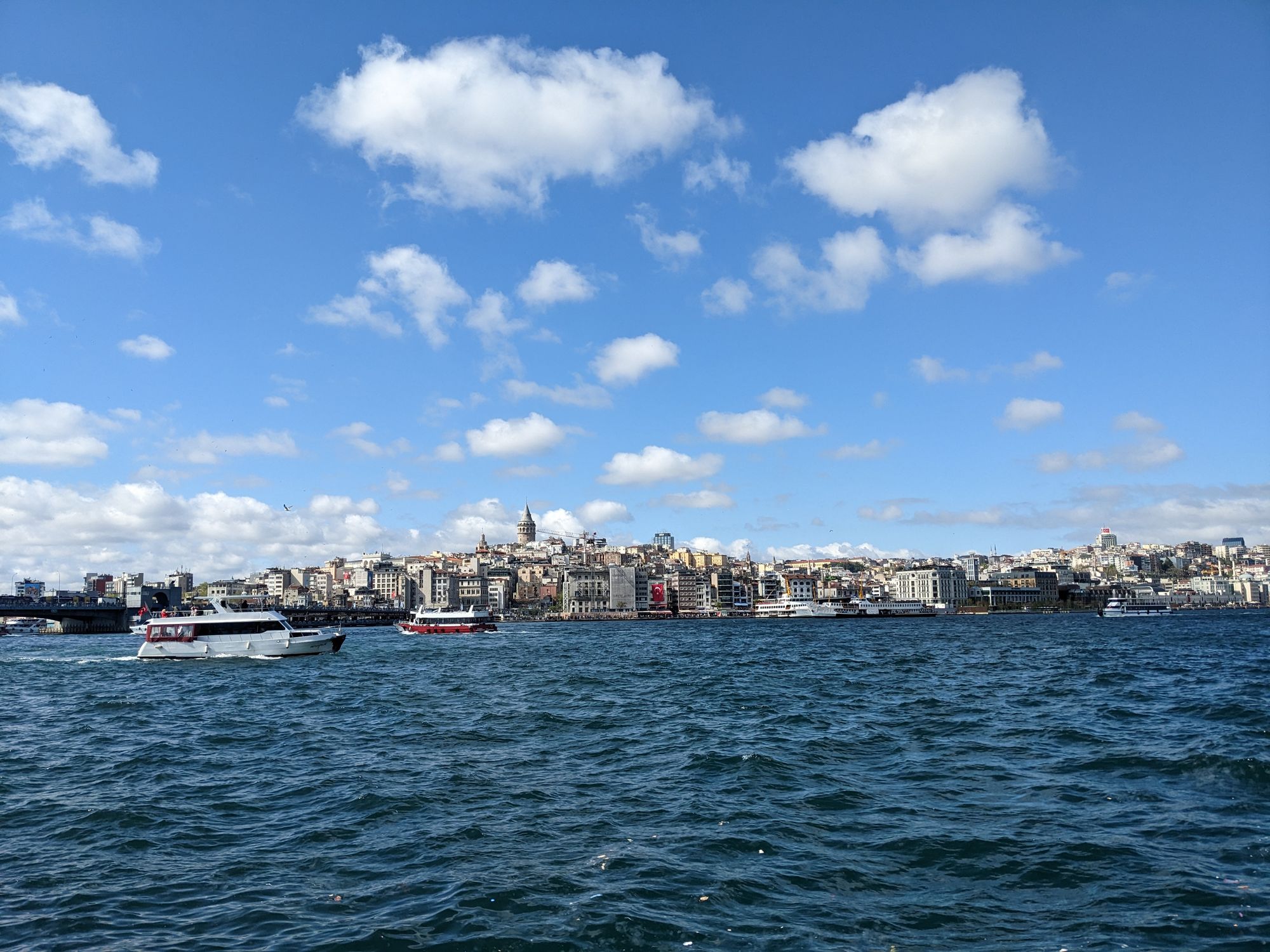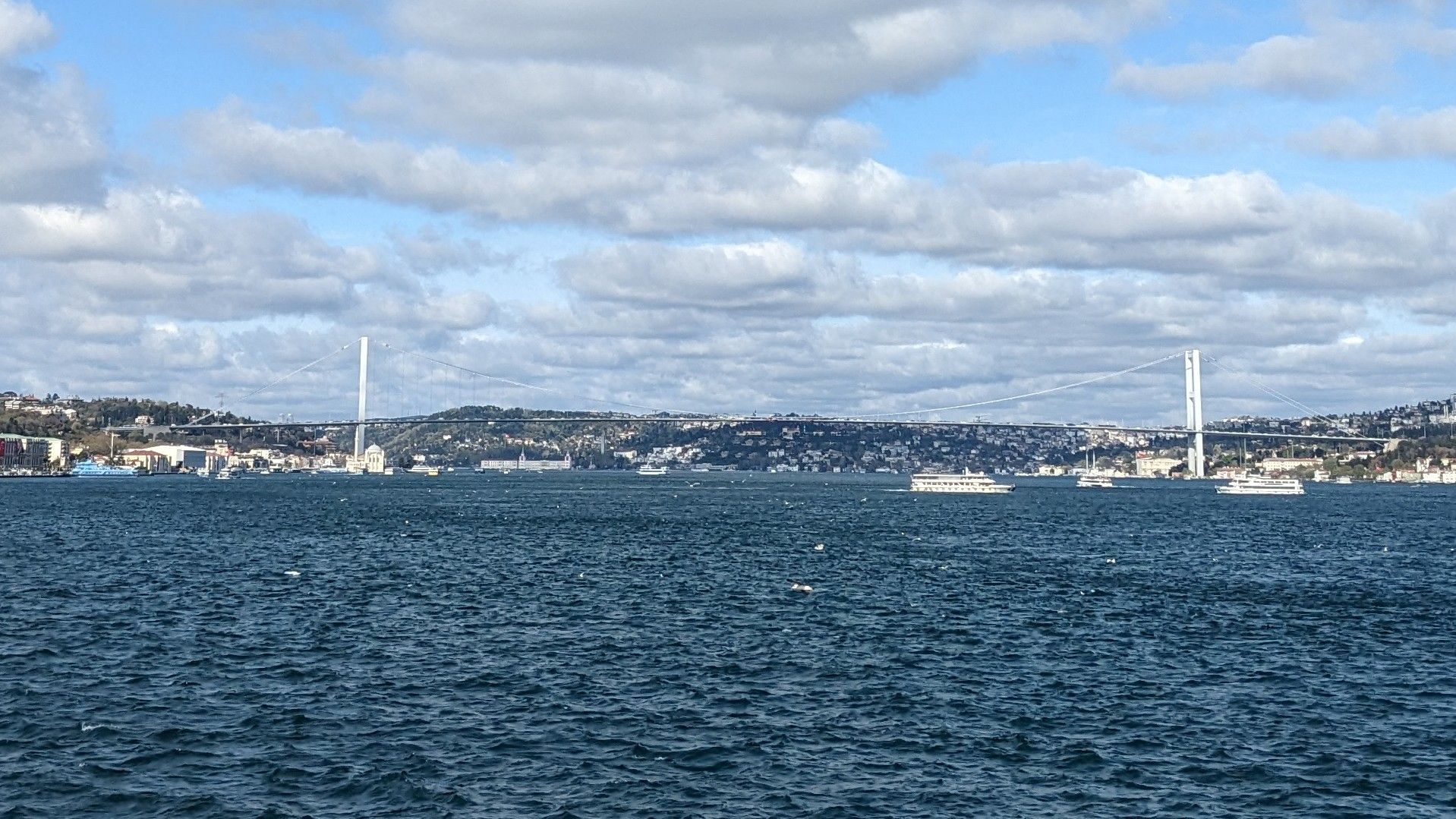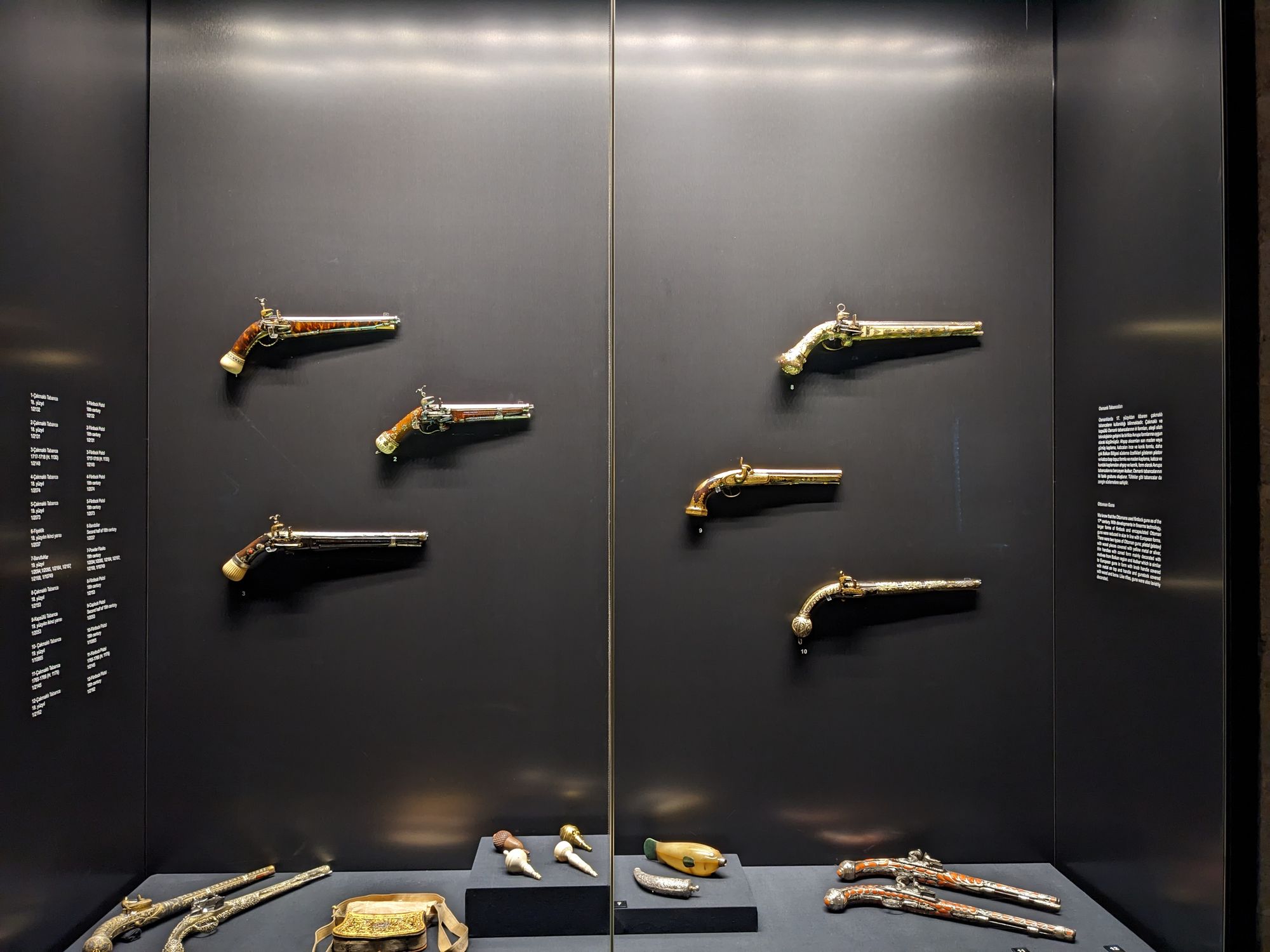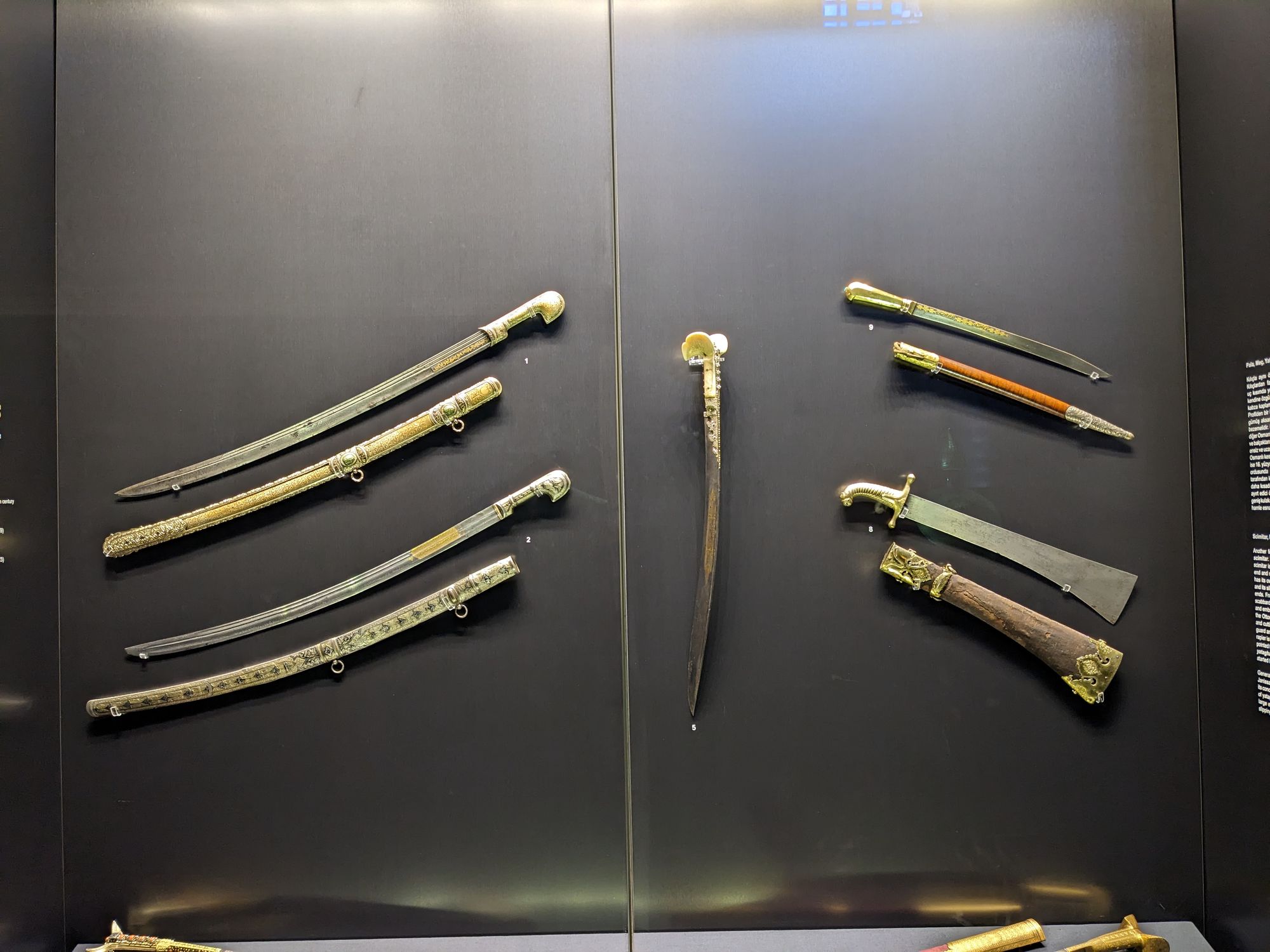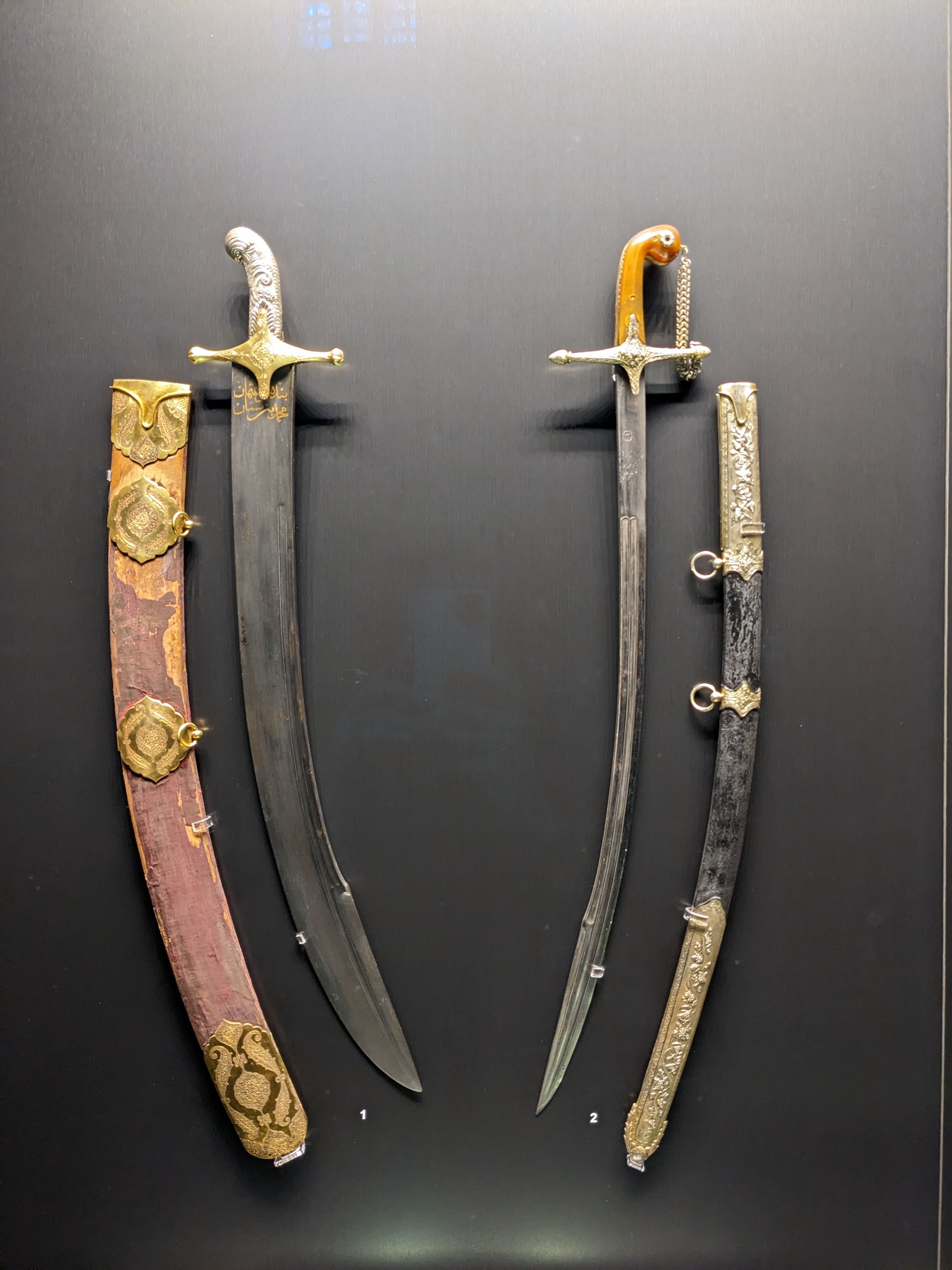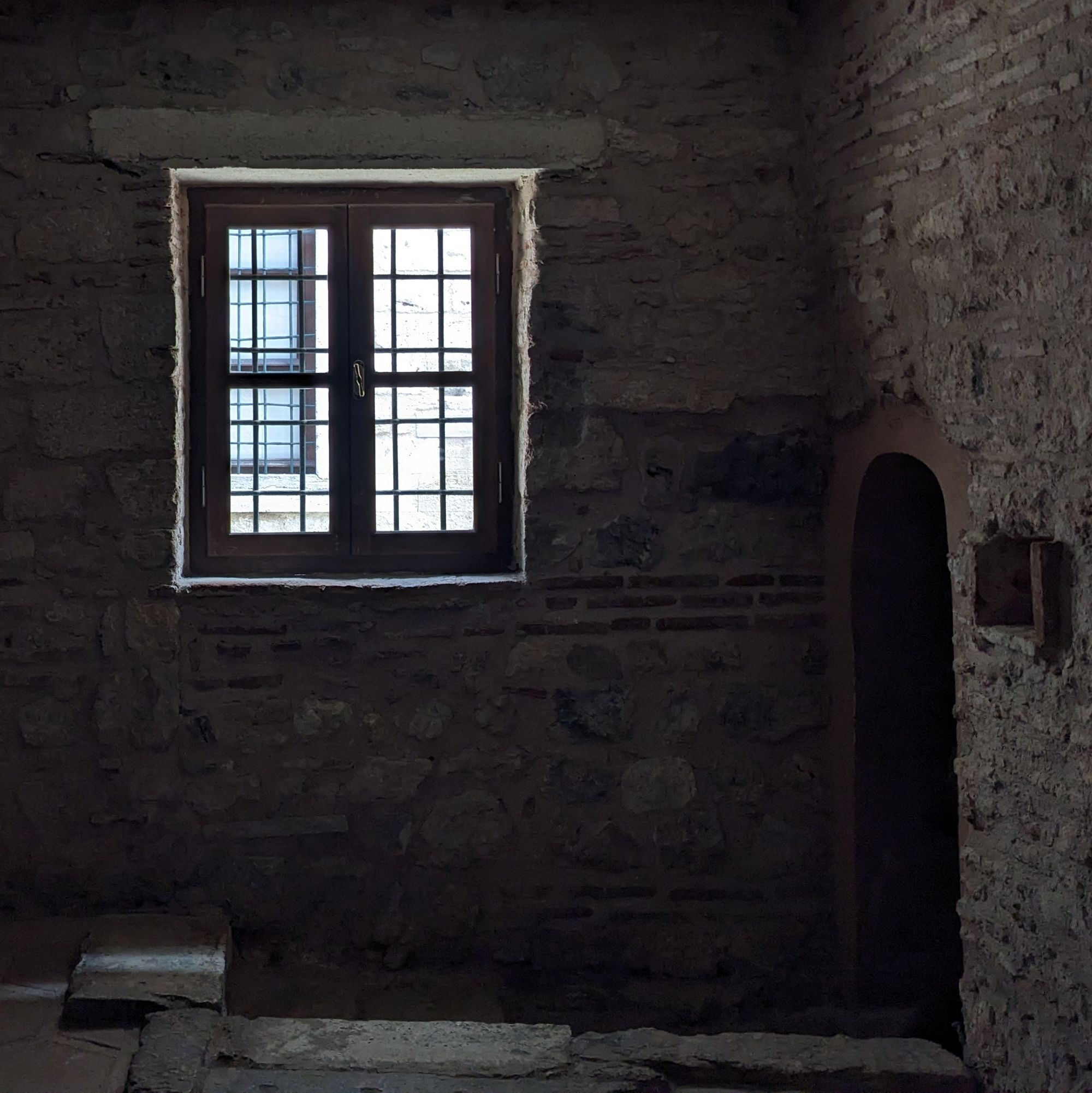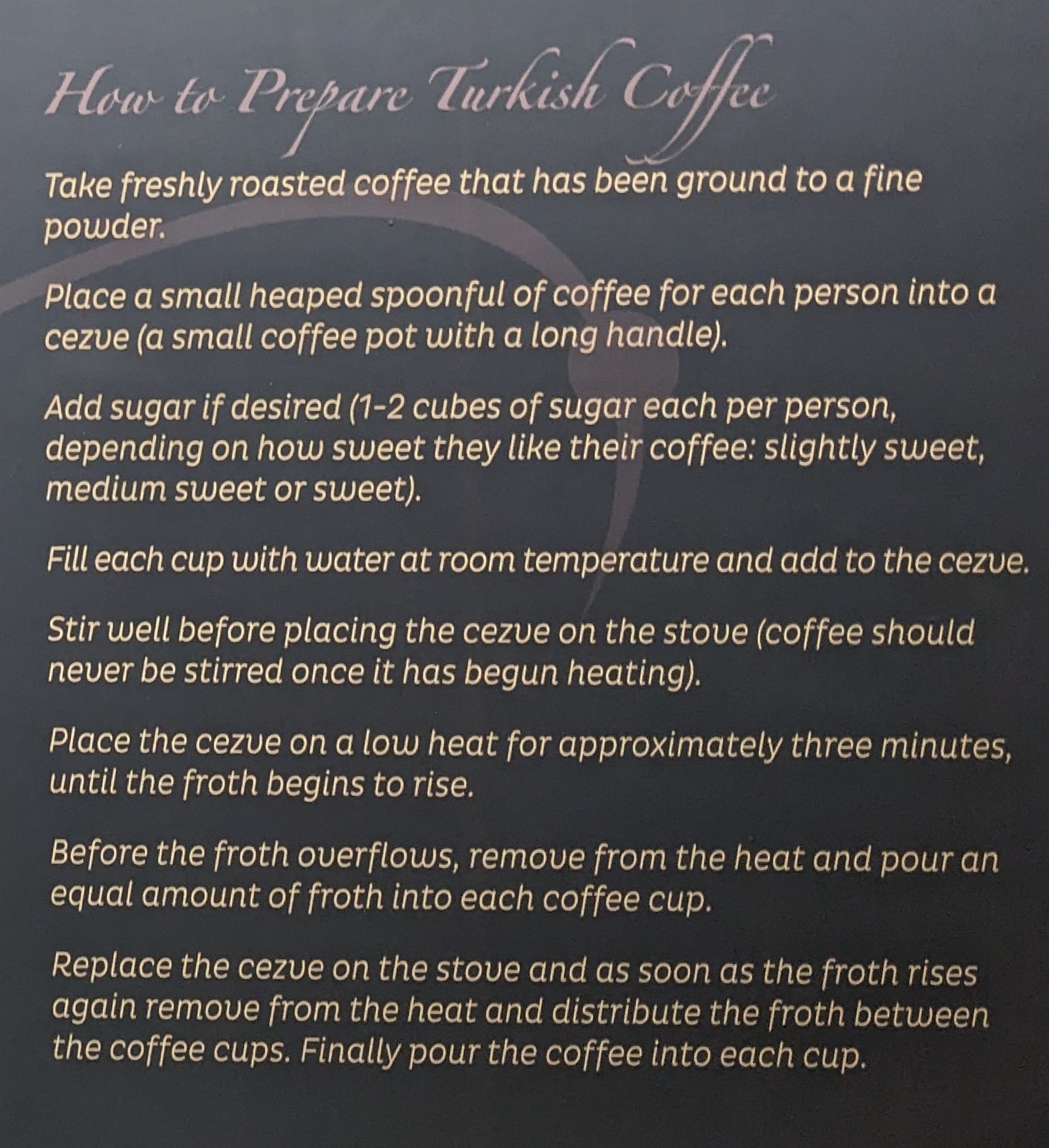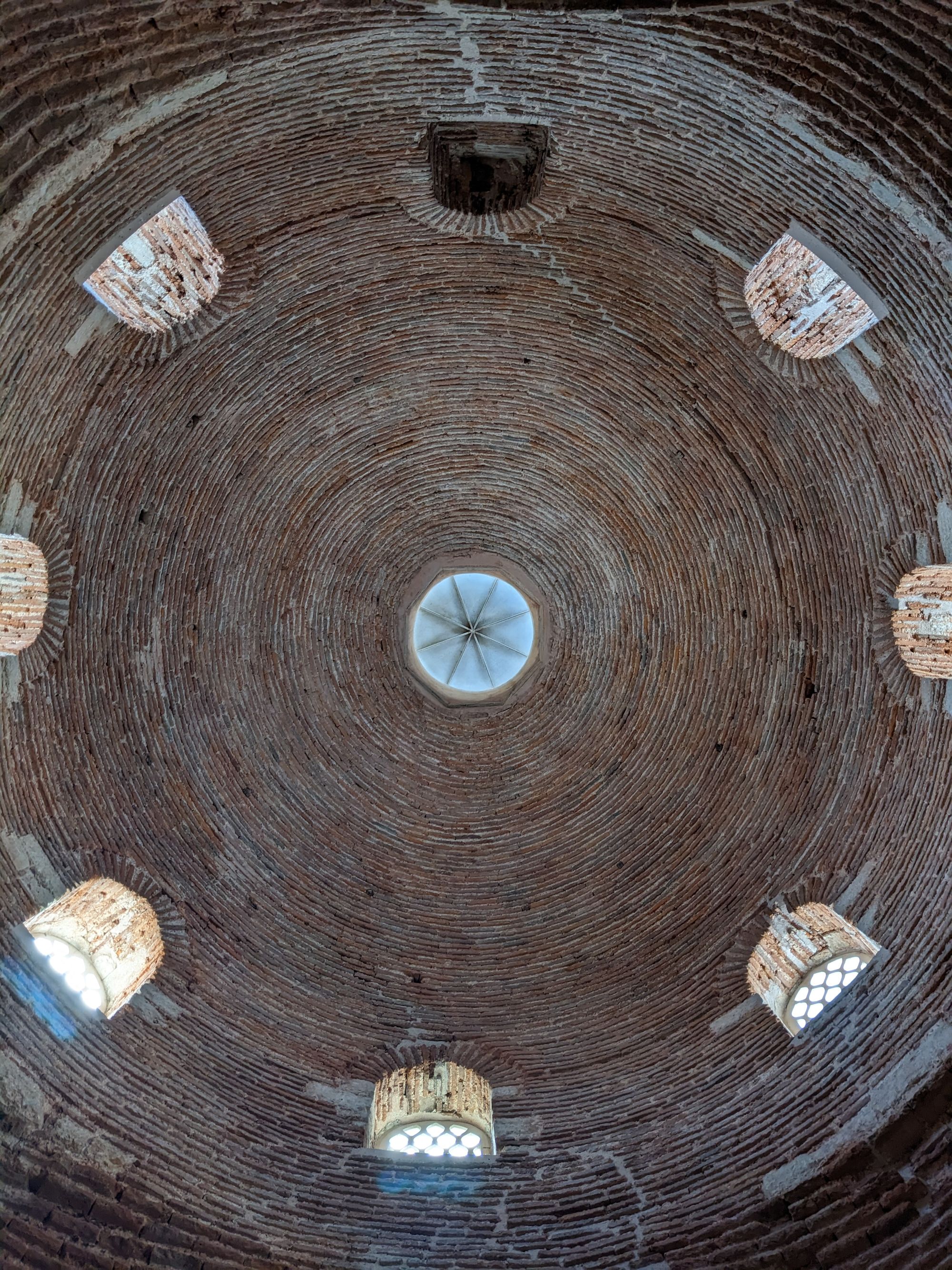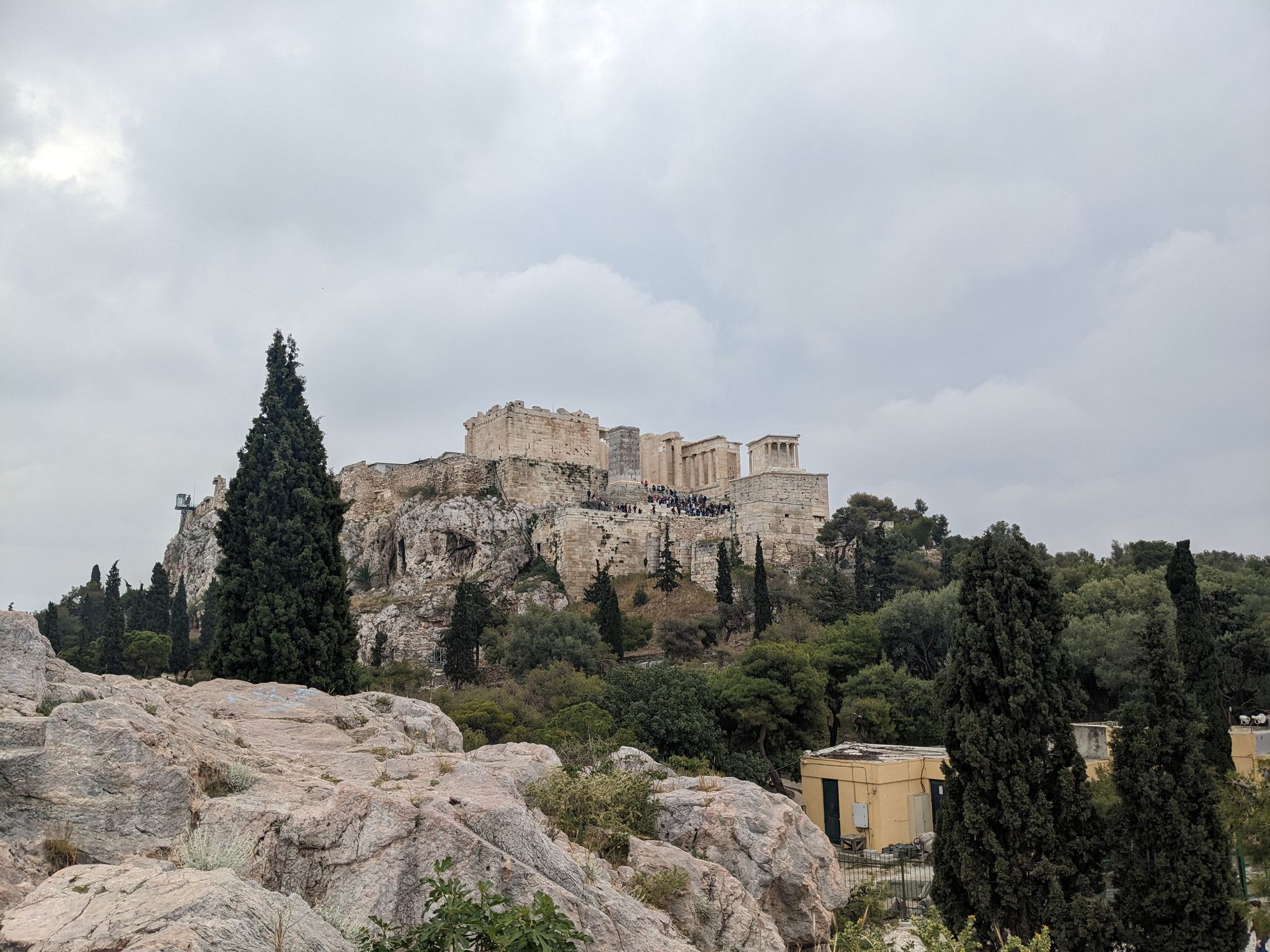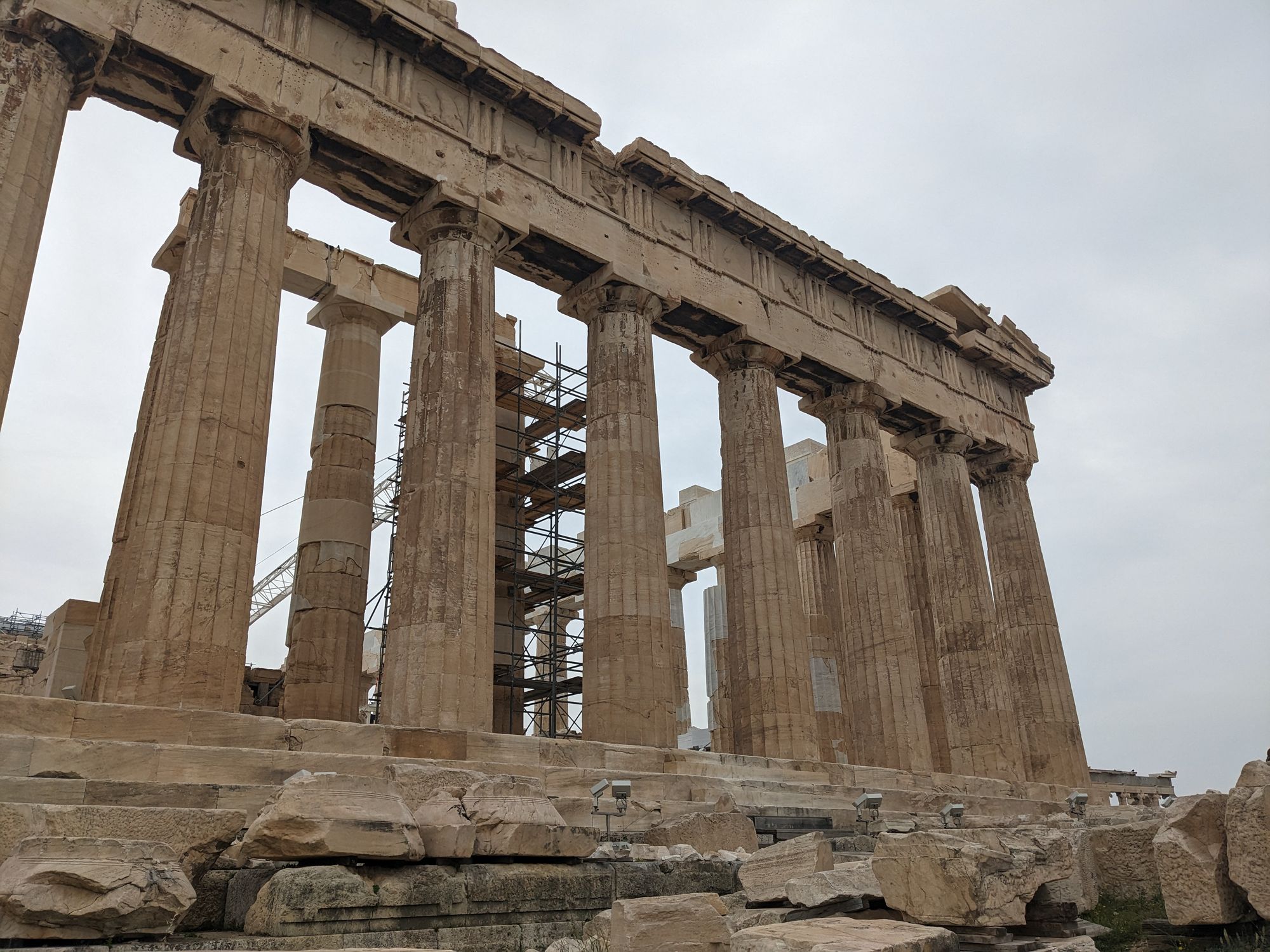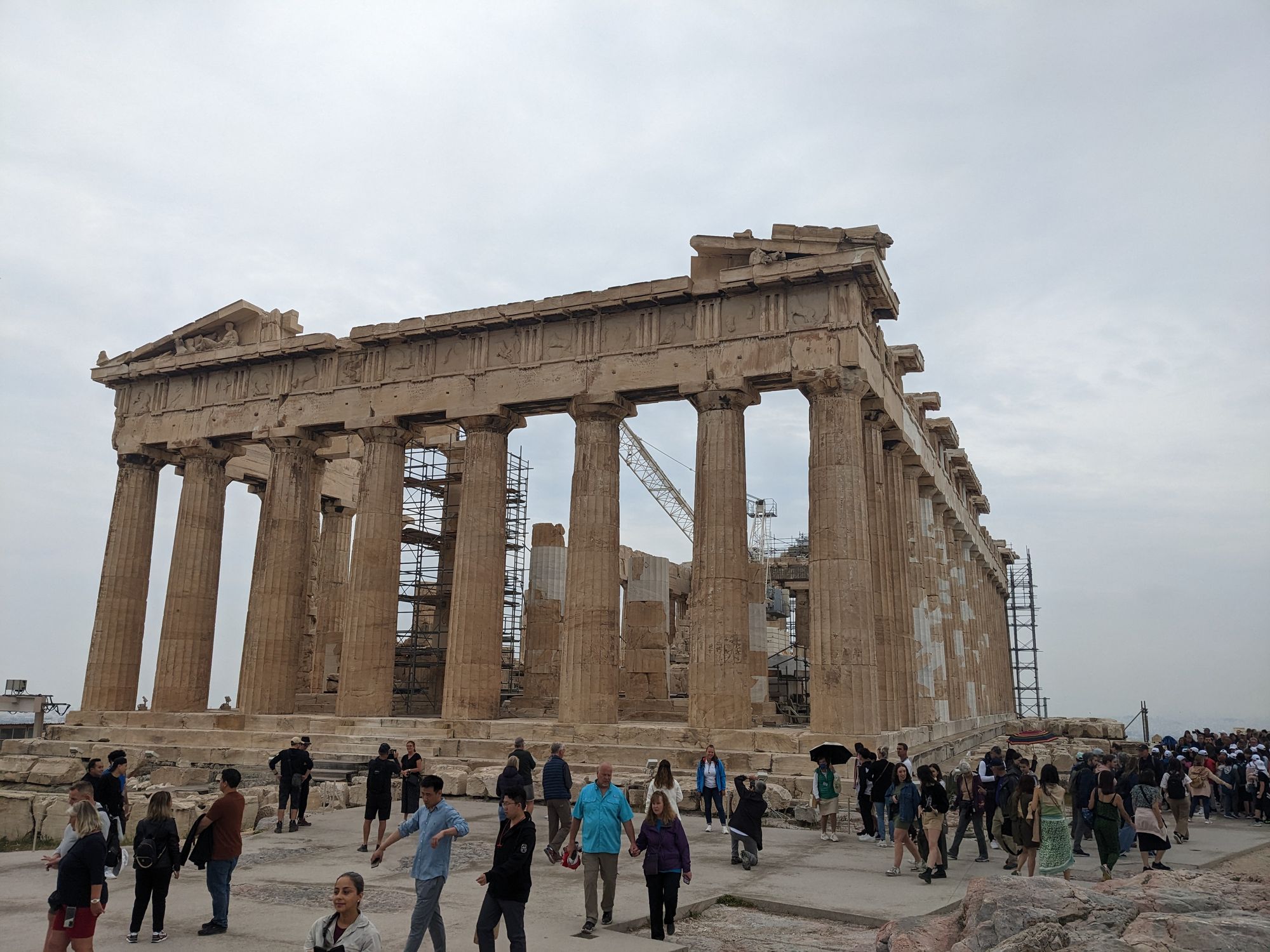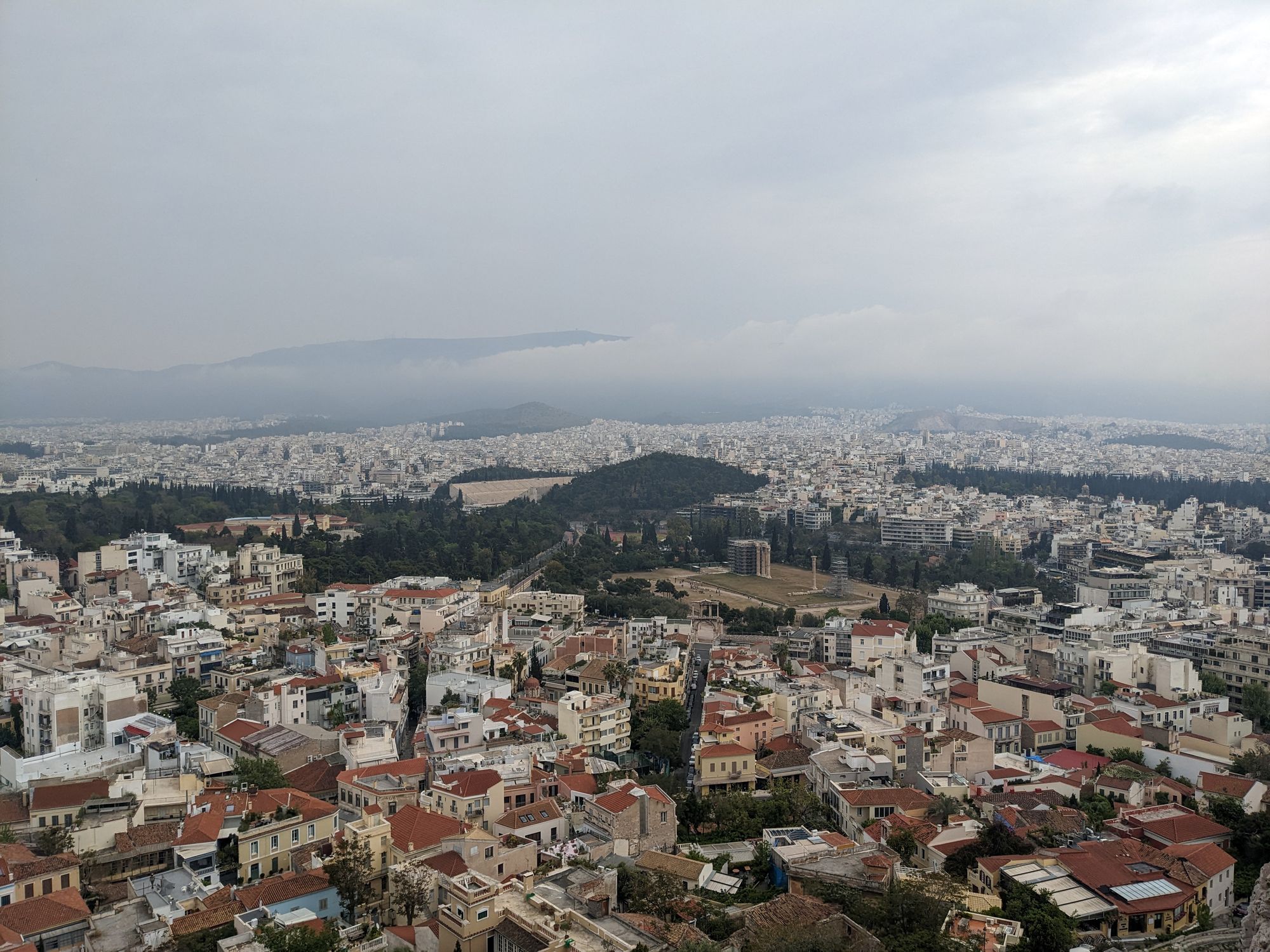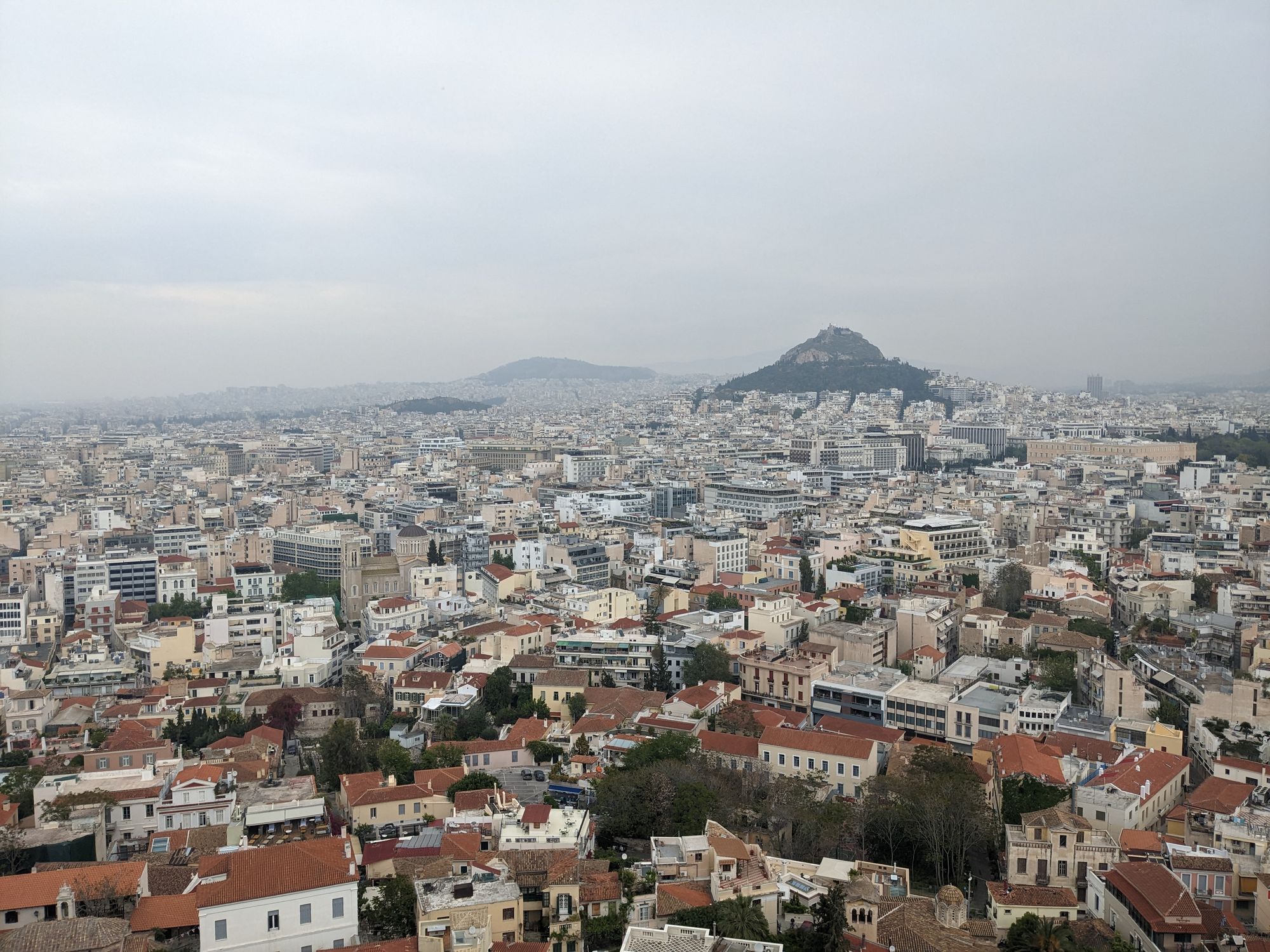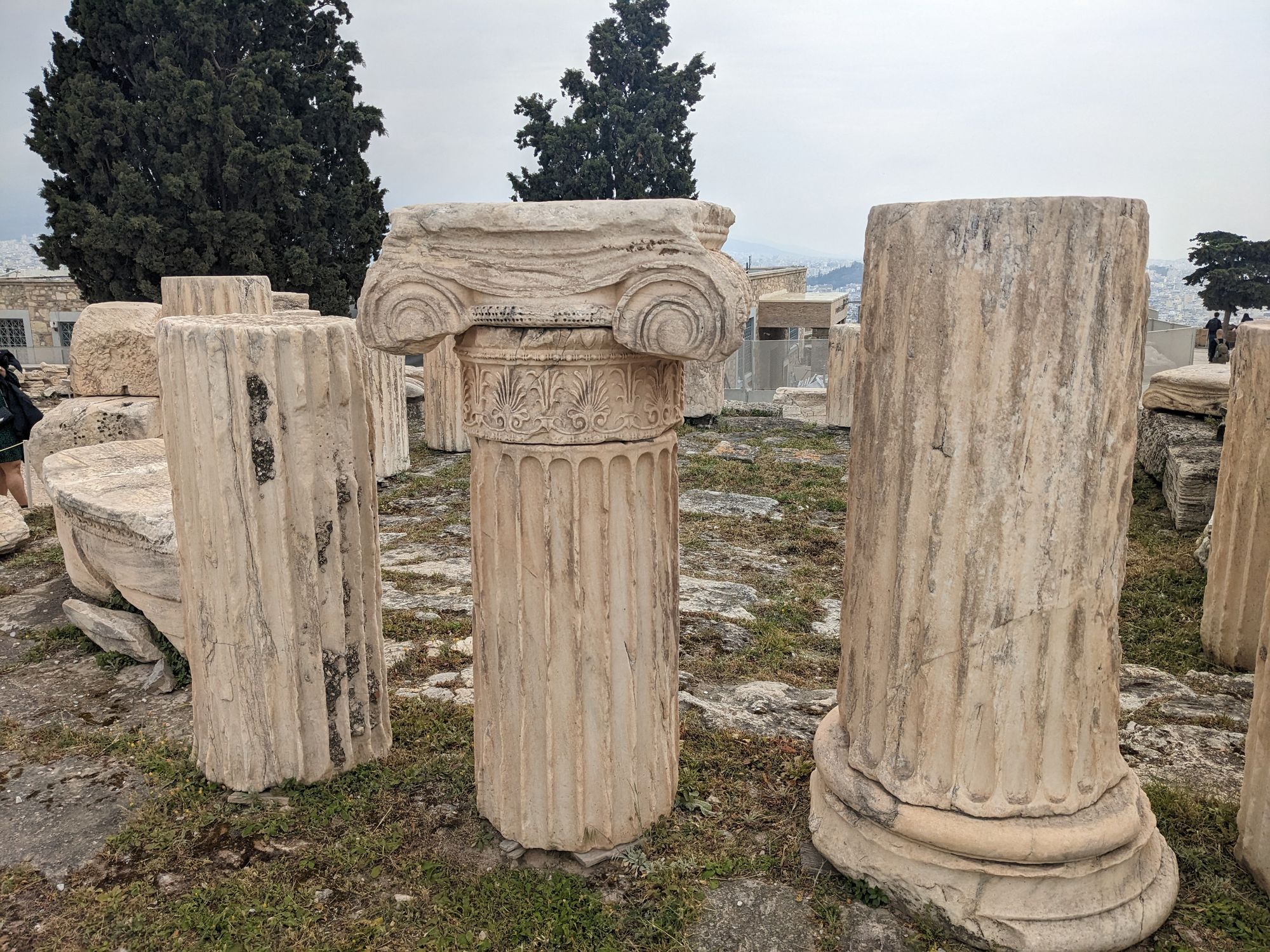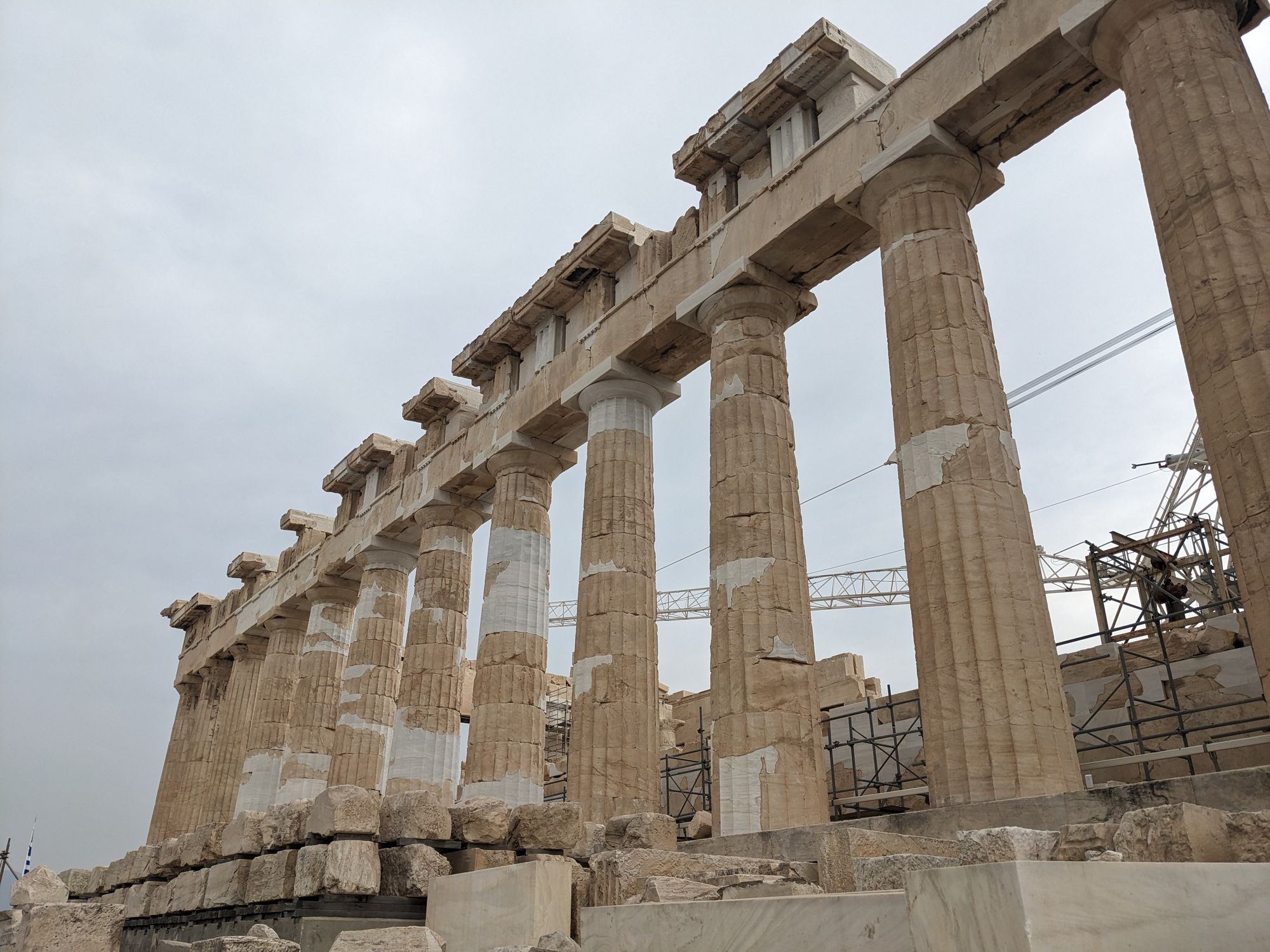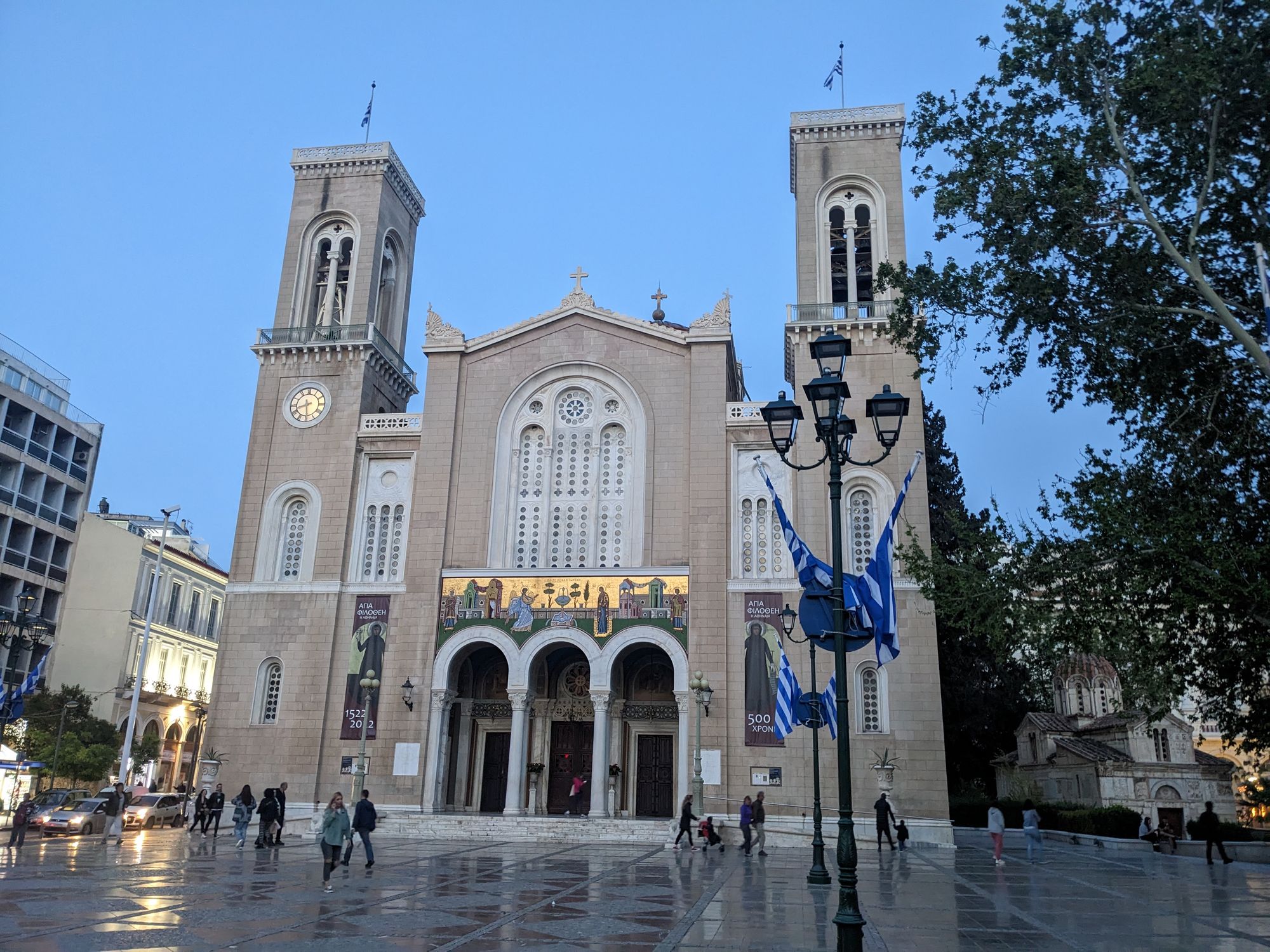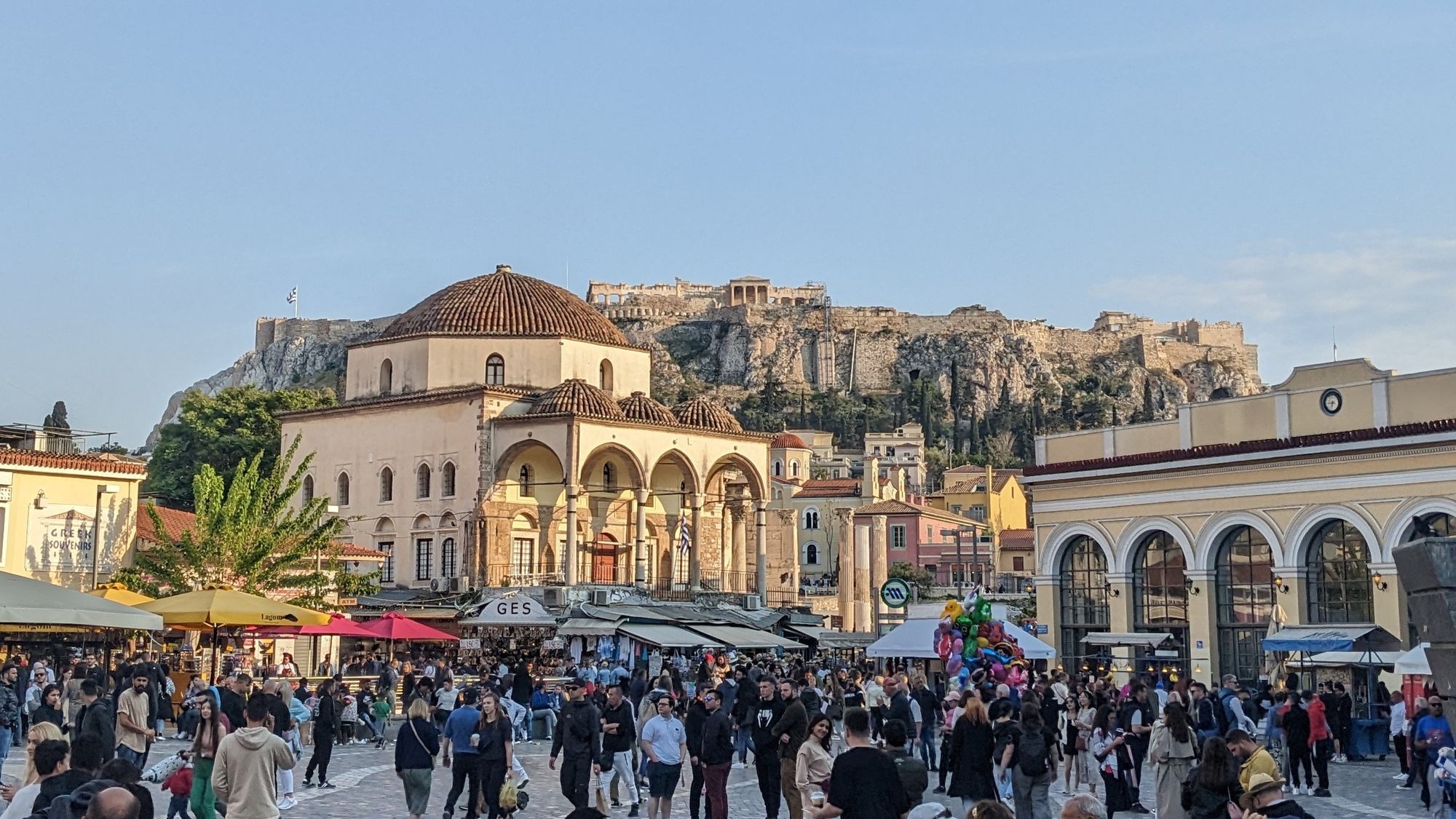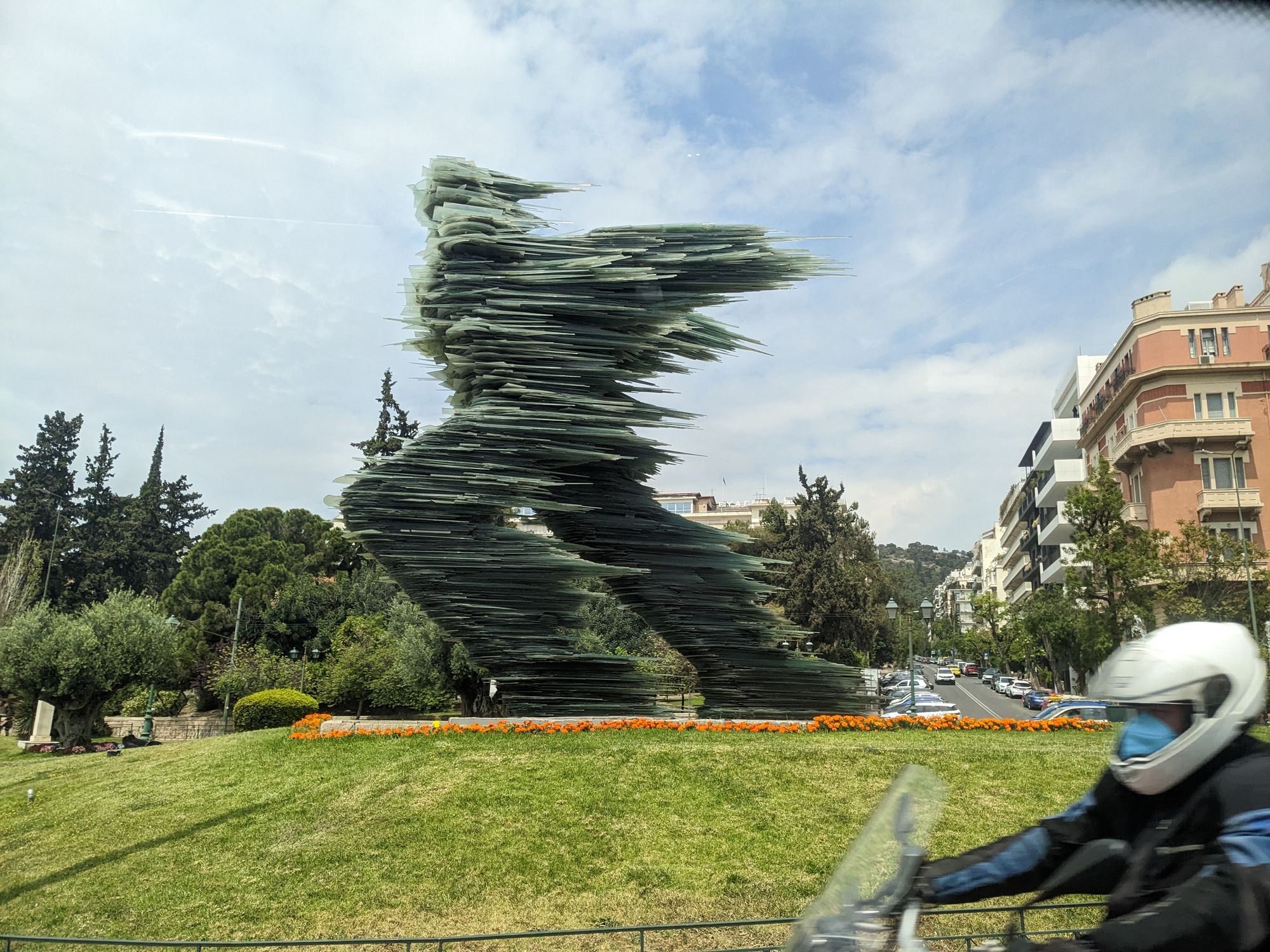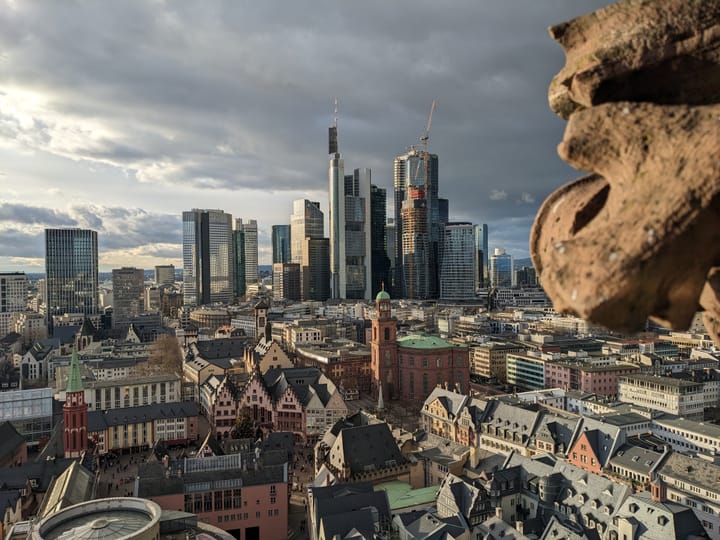Trip Report: Turkey, Bulgaria, North Macedonia & Greece
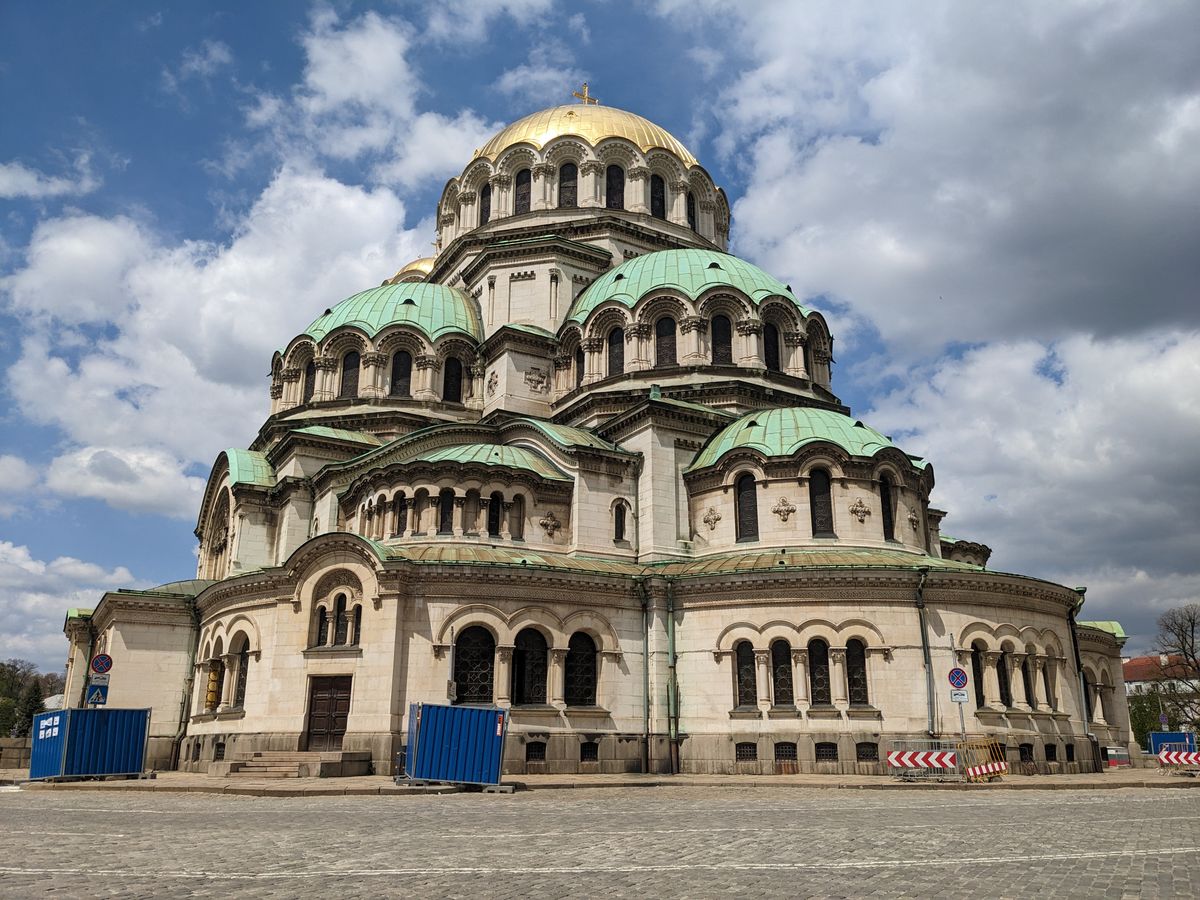
In late 2022, Google sent me a notification that in March there would be affordable flights from Singapore to Istanbul and coming back from Athens. The dates aligned with my calendar, so I said, why not, I've always wanted to see the Aegean.
2023 April 22, Saturday
As a lucky few of you know, I keep tabs on how long it takes to go through an airport. As a test for this trip, I proceeded through each part of Changi without loitering at the bookstore like I normally do. From check-in, through emigration and to the gate it took me 16 minutes. God bless the scientists who invented self-directed check-in kiosks and passport scanning gates.
Flight SV 837 out of Singapore was with Saudia, an unexpectedly middling carrier for a Gulf state. We were flying on day two of Eid al-Fitr, the festival of the breaking of the fast of Ramadan, which is probably why the tickets were so affordable. The plane was a Boeing 787-9 which normally holds 274 passengers in economy, but on this flight I counted 25 people.
2023 Apr 23, Sunday
When we landed in Turkey, I had a go at catching the metro into Istanbul from the sparkling new airport metro station. But, to many a traveller's consternation, the machine only vends Metro tickets for cash, and the ticket machine rejected everyone’s cash, so I got a taxi.
My hotel was in the Sirkeci neighborhood of the Eminönü quarter of the Fatih district - the touristy part of town with Hagia Sofia. Pro-tip: If you're travelling to Istanbul, don't stay in Fatih stay in Galata quarter of the Beyoğlu district. Galata, also known officially as Karaköy, is nicer and Fatih is super easy to get to.
Before I flew, I'd pre-purchased every plane, train and bus ticket I needed. I even purchased a Bulgarian ticket that required me to run the booking website through Google Translate my VPN was routing through Sofia. I had every ticket, that is, except for the night train from Istanbul to Sofia. That ticket can only be purchased in person. Sirkeci garı, where the Orient Express used to terminate, had an international tickets desk, so I went there first.
I found the international desk at Sirkeci garı was empty so I set about buying a Metro card from a machine while I waited. As I did so, I gave off that confused foreigner vibe, so some young Turks helped me out, explained that yes, ferries were included in the card, and gave me 10 lira so I had exact change. Such helpful kids!
The Sirkeci garı desk was still empty on my return, so I took a walk. Istanbul has three tram lines, T1, T4 & T5. Many lines run the Bombardier Flexity Swift tram, which Melbourneans know as the E-class and would recognise its soothing electric bell.
Bosporus
One of the longest commuter ferries you can catch from the Eminönü terminal, on the European side of Istanbul, is to Üsküdar on the Asian side, so I hopped on. It's a stunning ride. From the deck you can see:
- Galata Tower: A Genoese fortification, once used to raise a large chain across the Golden Horn estuary that prevented hostile ships from sailing into the city. After the Ottoman conquest the tower became a jail and watch-house for spotting of fires. It was nearly destroyed by a series of storms and fell into disrepair, but in the 2010s it was restored with modern, pastiche architecture. It's now a museum.
- Dolmabahçe Palace: An Ottoman palace built in the mid-19th century to keep up with the modern style of other European monarchs. It was terribly ostentatious, costing a quarter of the government's annual tax revenue at the time. Sultans lived in the palace from 1856 until the end of the empire in 1924, when it became the Presidential Summer Palace. Today, it's a museum.
- Maiden's Tower: A small lighthouse on a tiny island, accessible only by boat, on the edge of the Bosporus' shore. According to legend, a sultan built the tower to protect his daughter from a prophecy that she would be bitten by a snake on her 18th birthday and die. On her 18th birthday, the emperor brought her a basket of fruit to celebrate their thwarting the prophecy. However, a snake, hiding in the fruit basket, bit the princess and she died, fulfilling the prophecy. The tower has since been a quarantine station, a customs checkpoint, and a military barracks. Today, the tower is a fancy restaurant, popular for romantic dates - but maybe skip the fruit platter.
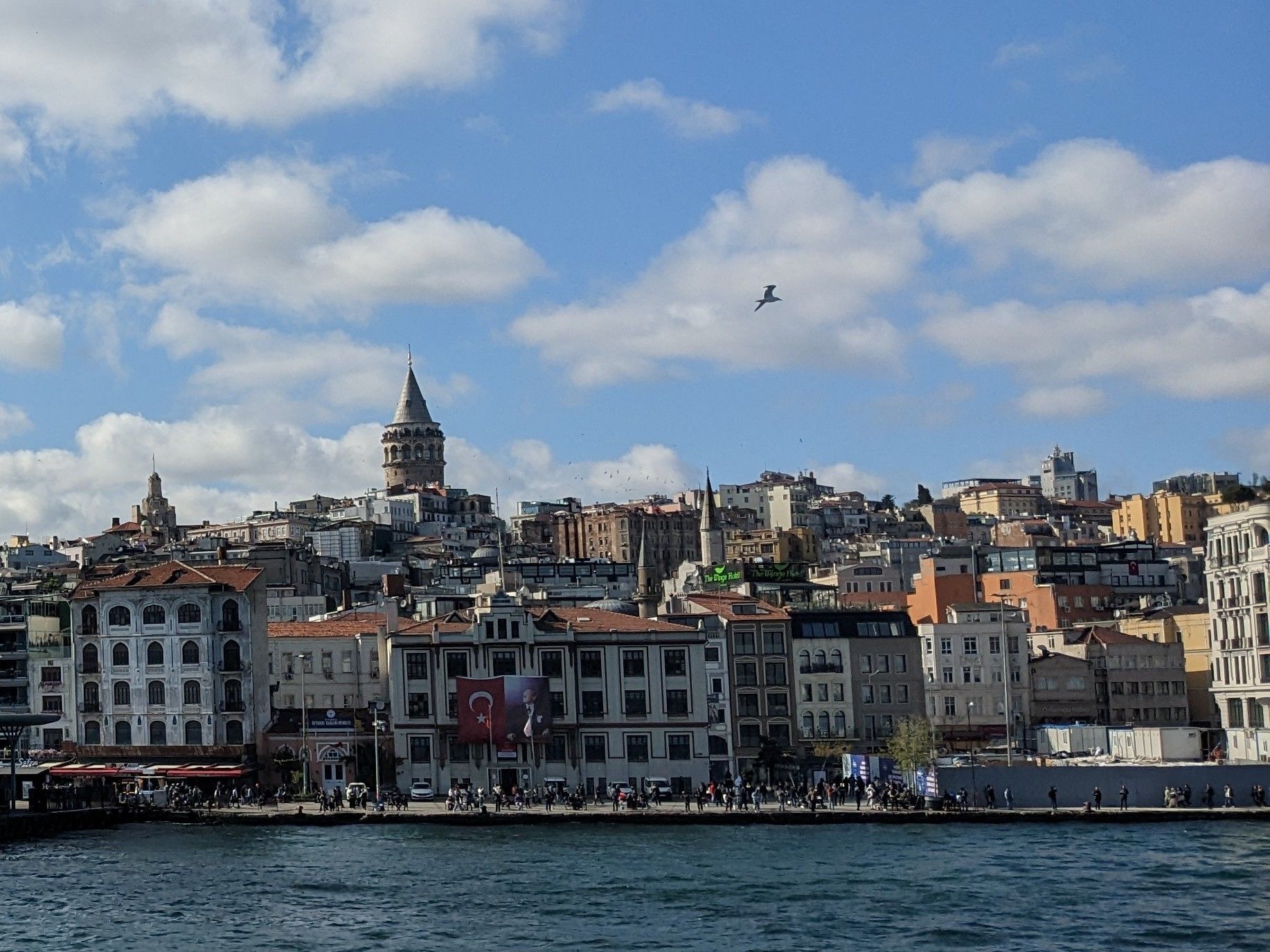
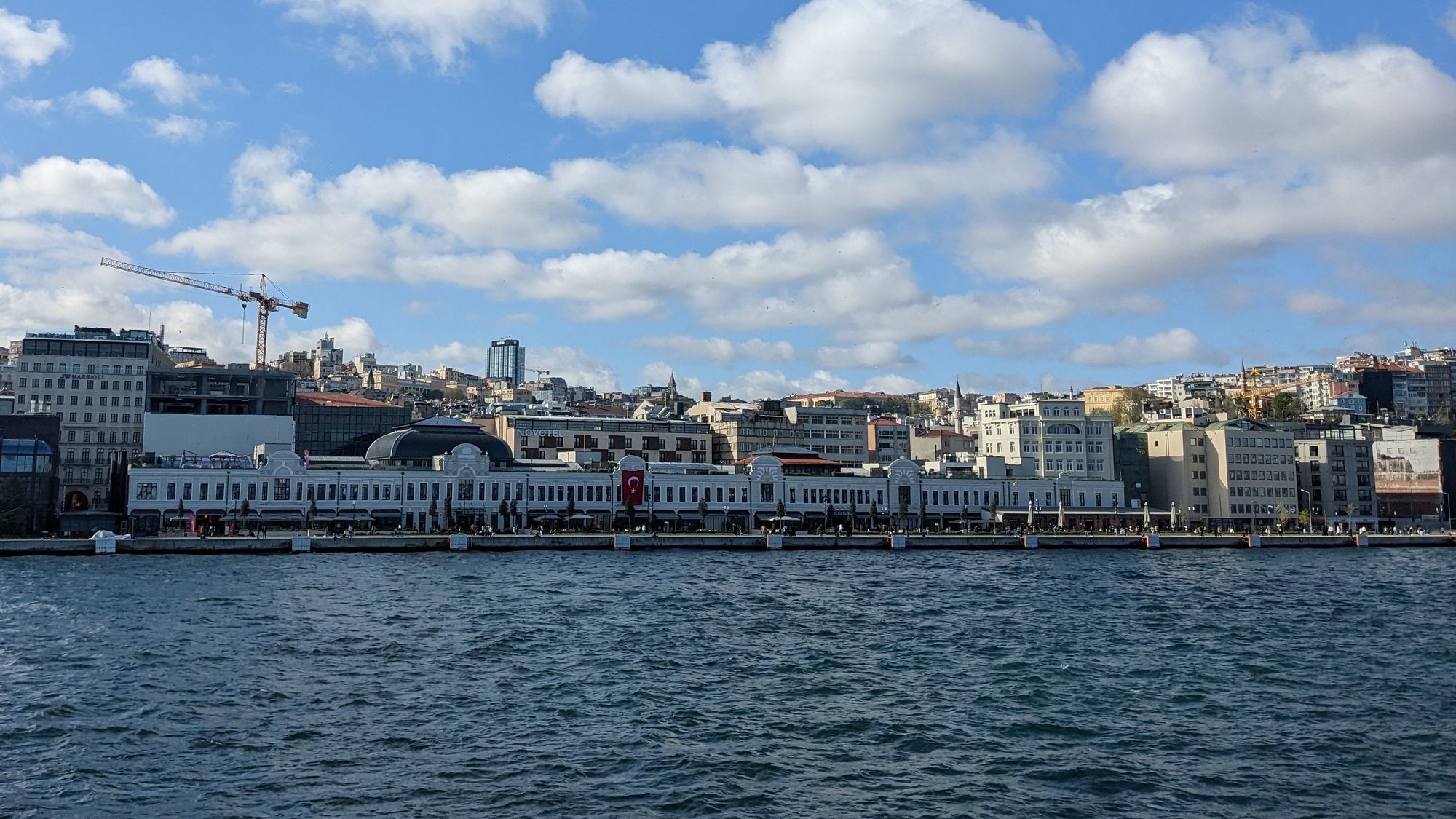
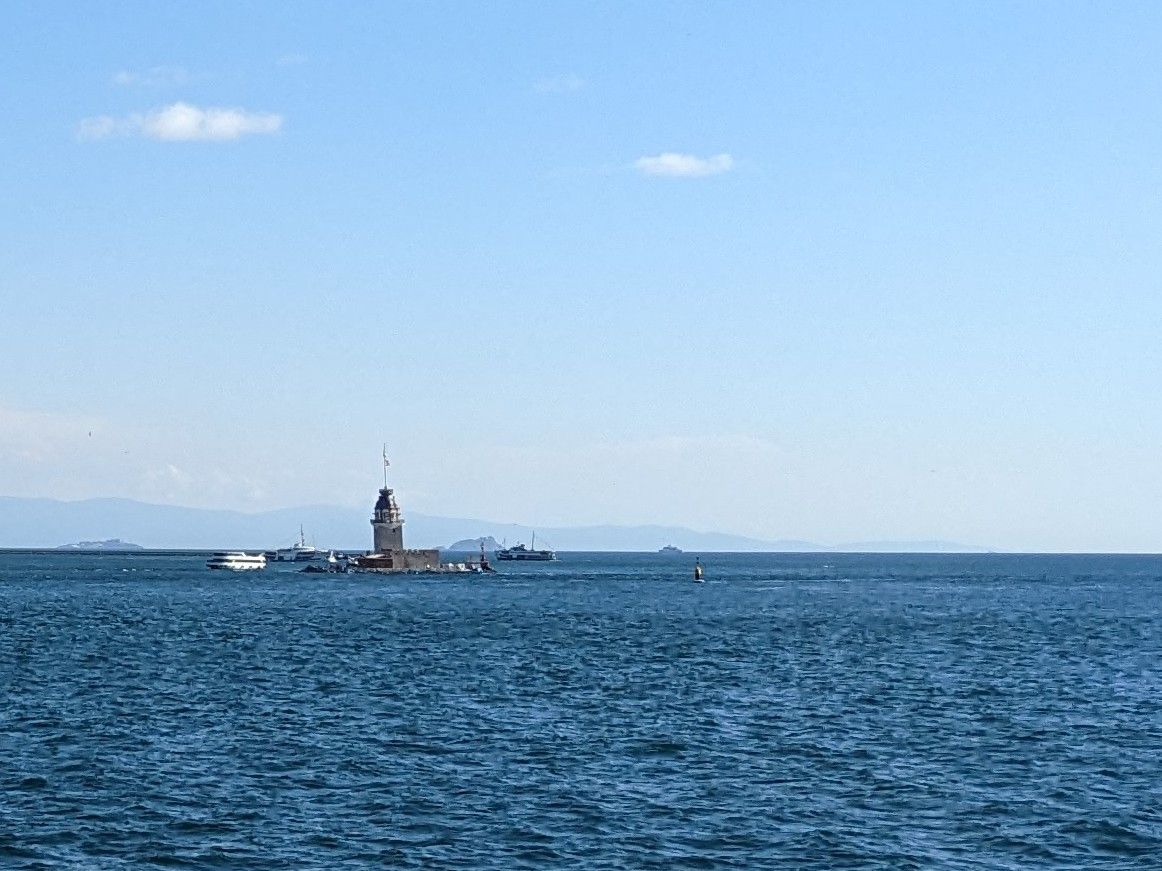
The ferry dropped us at Üsküdar, a residential suburb on the Asian side of the city. It's not uncommon for İstanbullu to live and work across the strait - nearly 2 million people commute across the continents everyday, which sounds quite grandiose when you put it in writing. Like much of Istanbul, Üsküdar is thrumming with cats.
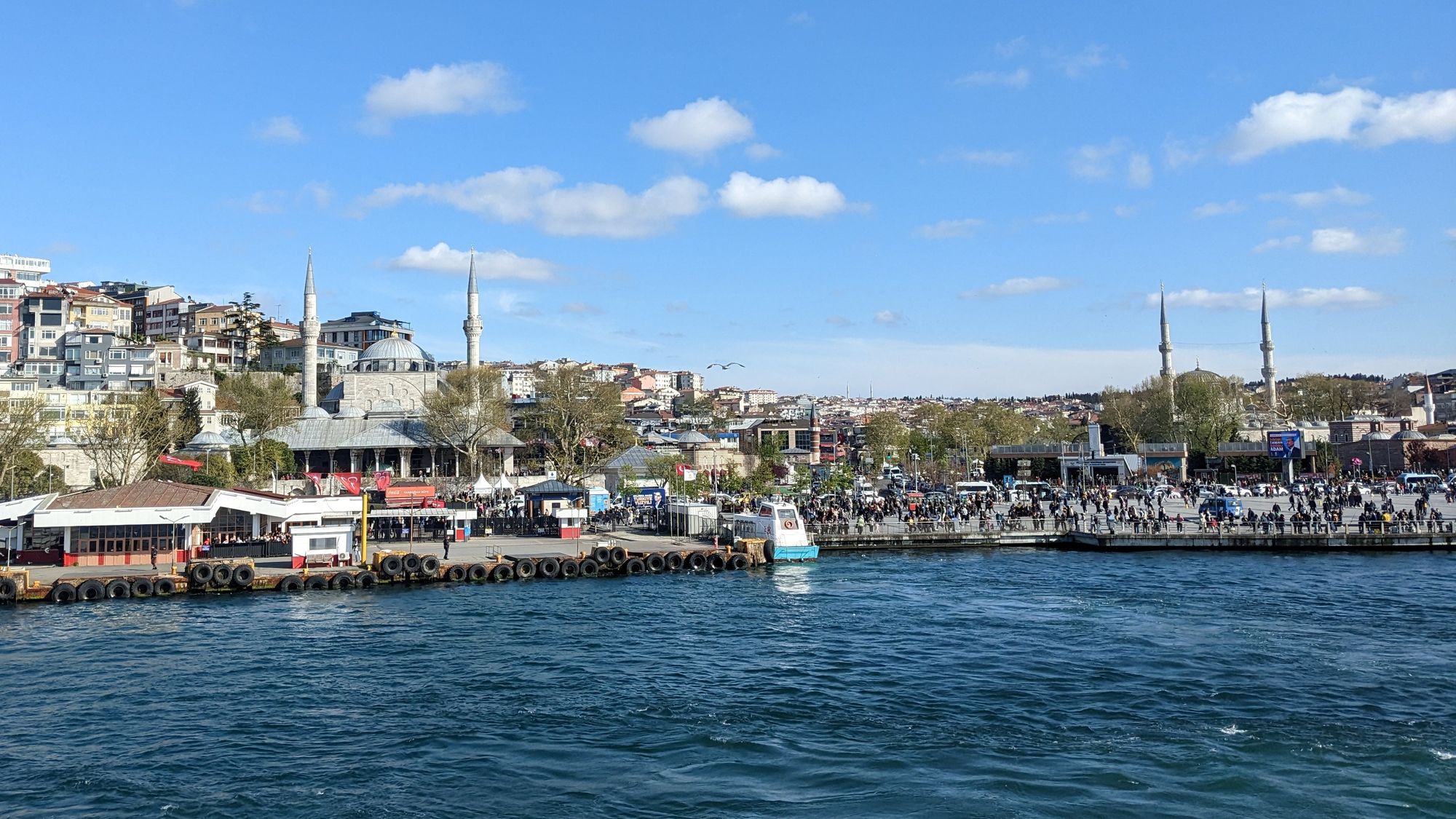
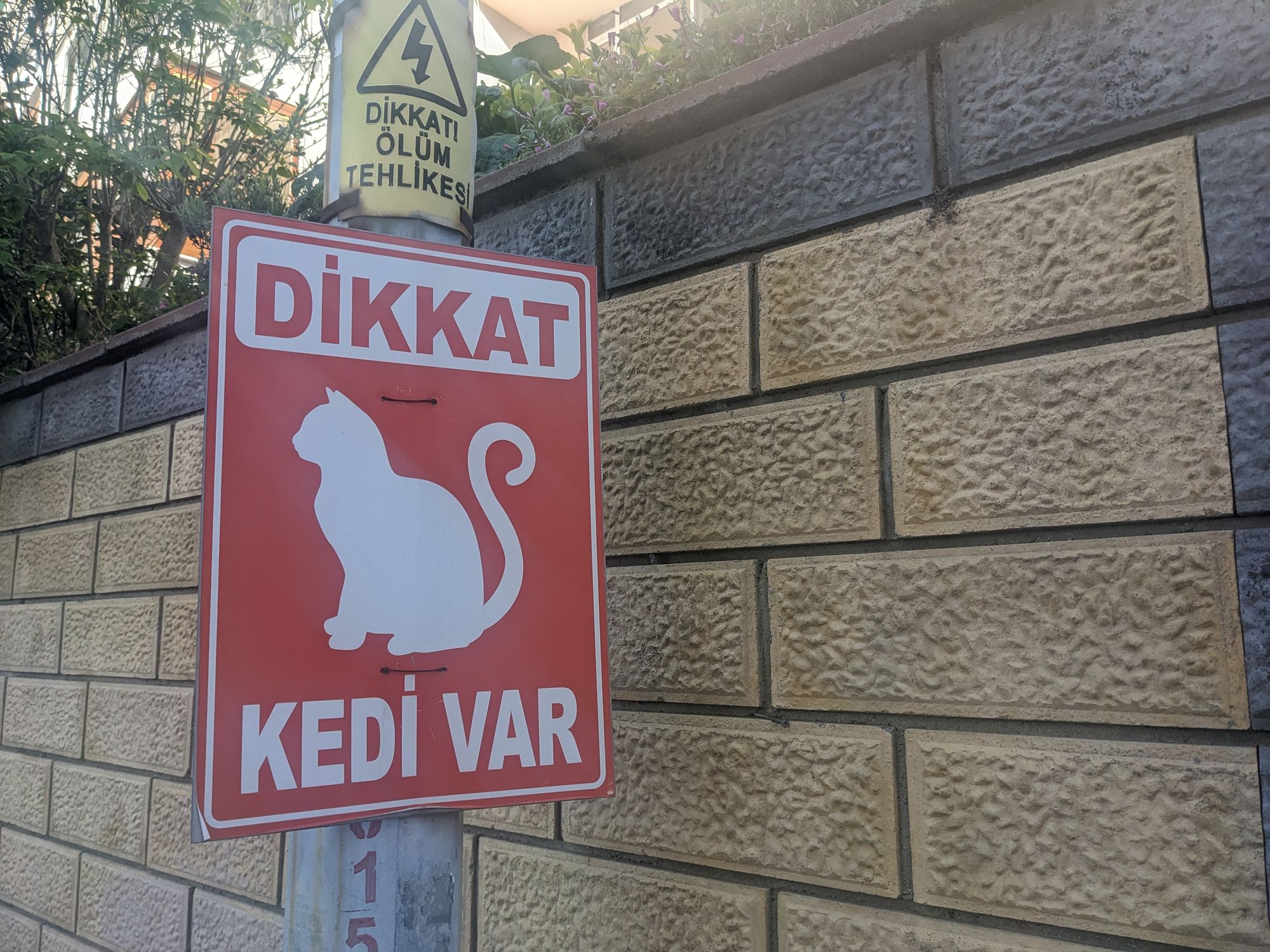
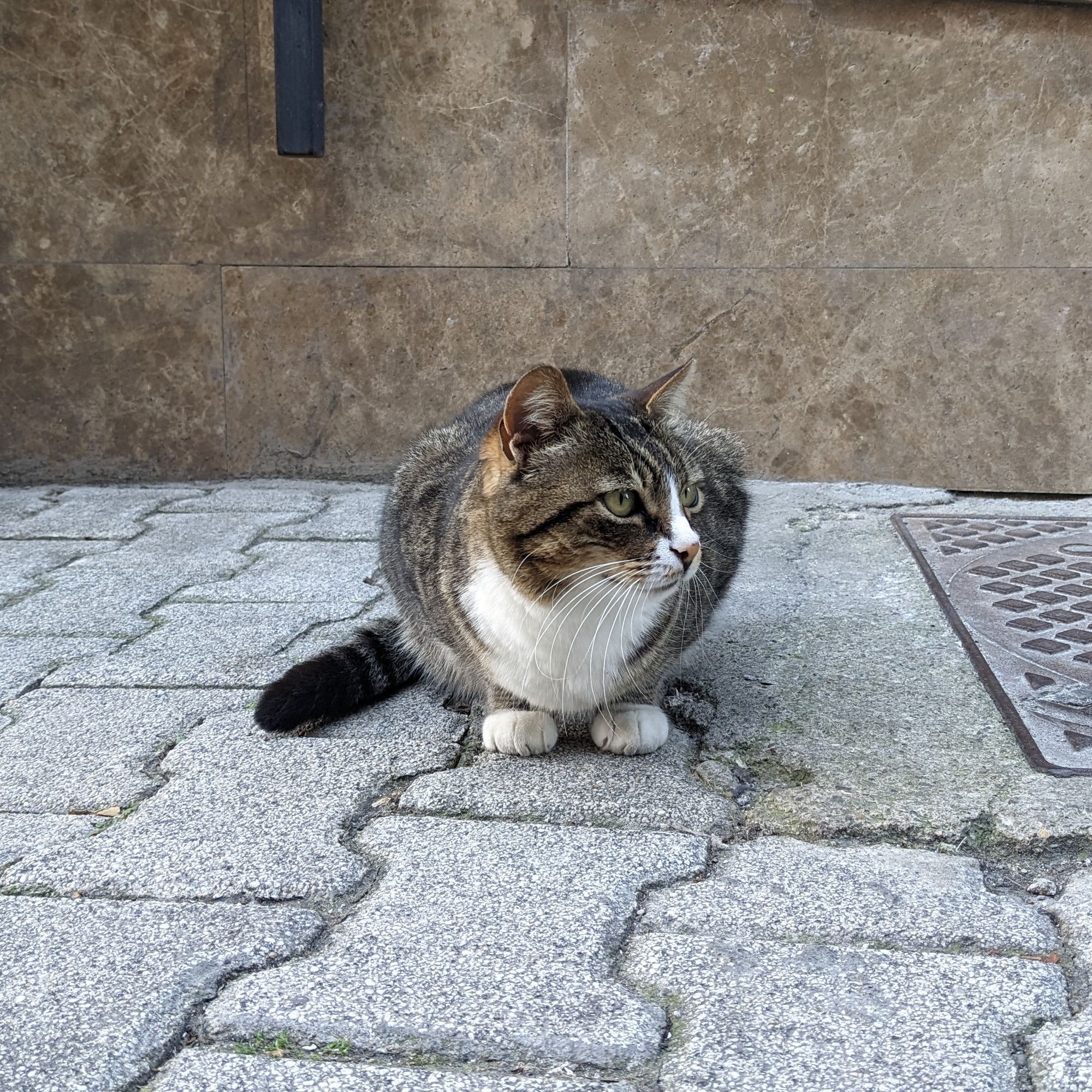
I had my fill of cat watching, so I tried the Sirkeci garı international desk one last time. The desk remained empty, but now a kindly older man was waiting to be served. He persistently rapped on the glass window for a good minute until a surly booking agent emerged with a sandwich in hand. This is how I could finally buy my ticket to Sofia.
2023 April 24, Monday
This day was comprised entirely of travelling to the ANZAC Day commemoration. Our tour assembled outside an Istanbul hotel at a leisurely 11:30am - ample time for a Turkish coffee beforehand.
We boarded our coach at the Eminönü bus terminal. Our tour group was close to one-third Kiwis and the rest Australians. Half the group were current or former defence force personnel, and a quarter had relatives who had served in the armed forces. Five or so had brought their or the family's medals to wear. The rest of our group came out of patriotic or historical interest. We stopped near Tekirdağ for a break, where some local Turkish grandmothers made us gözleme.
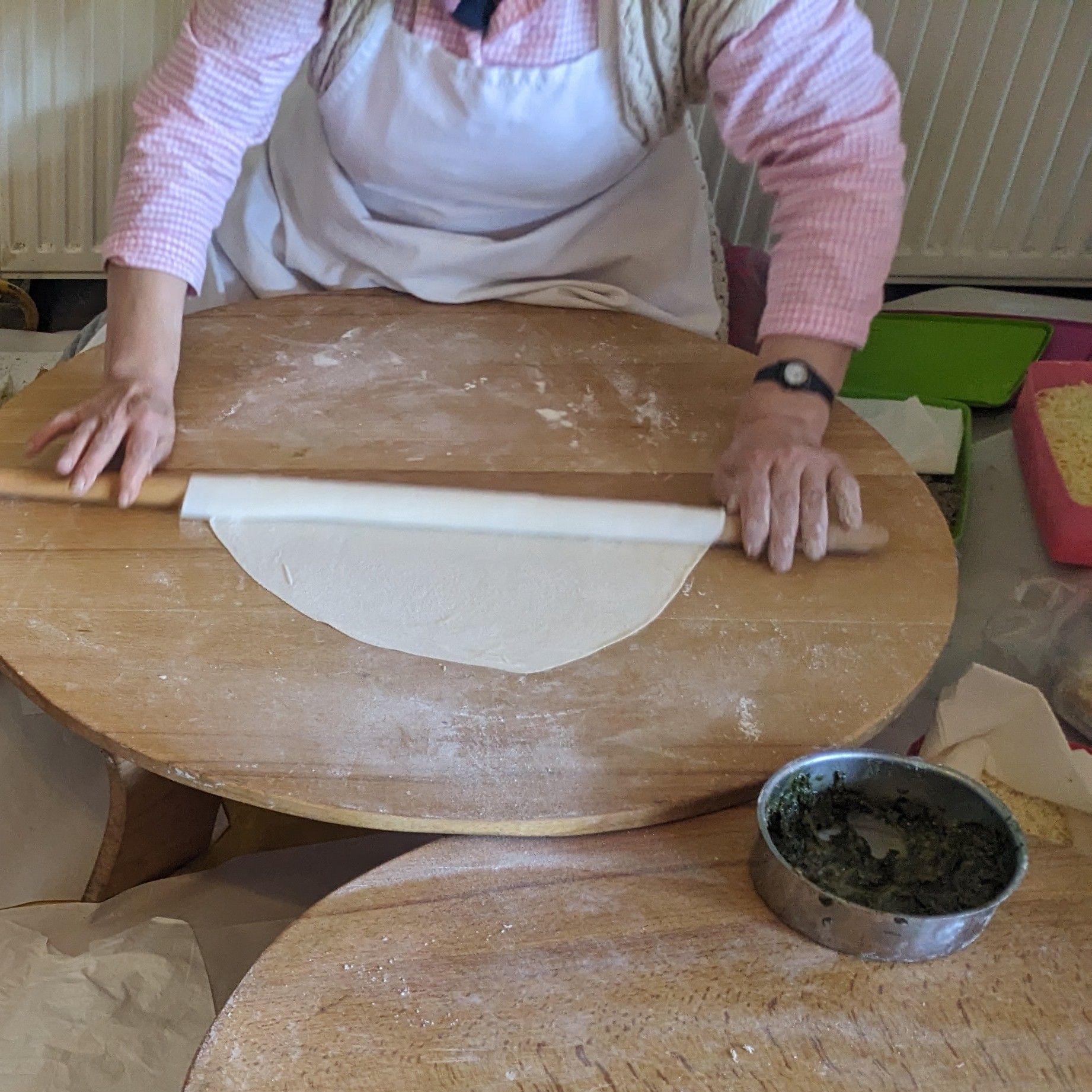
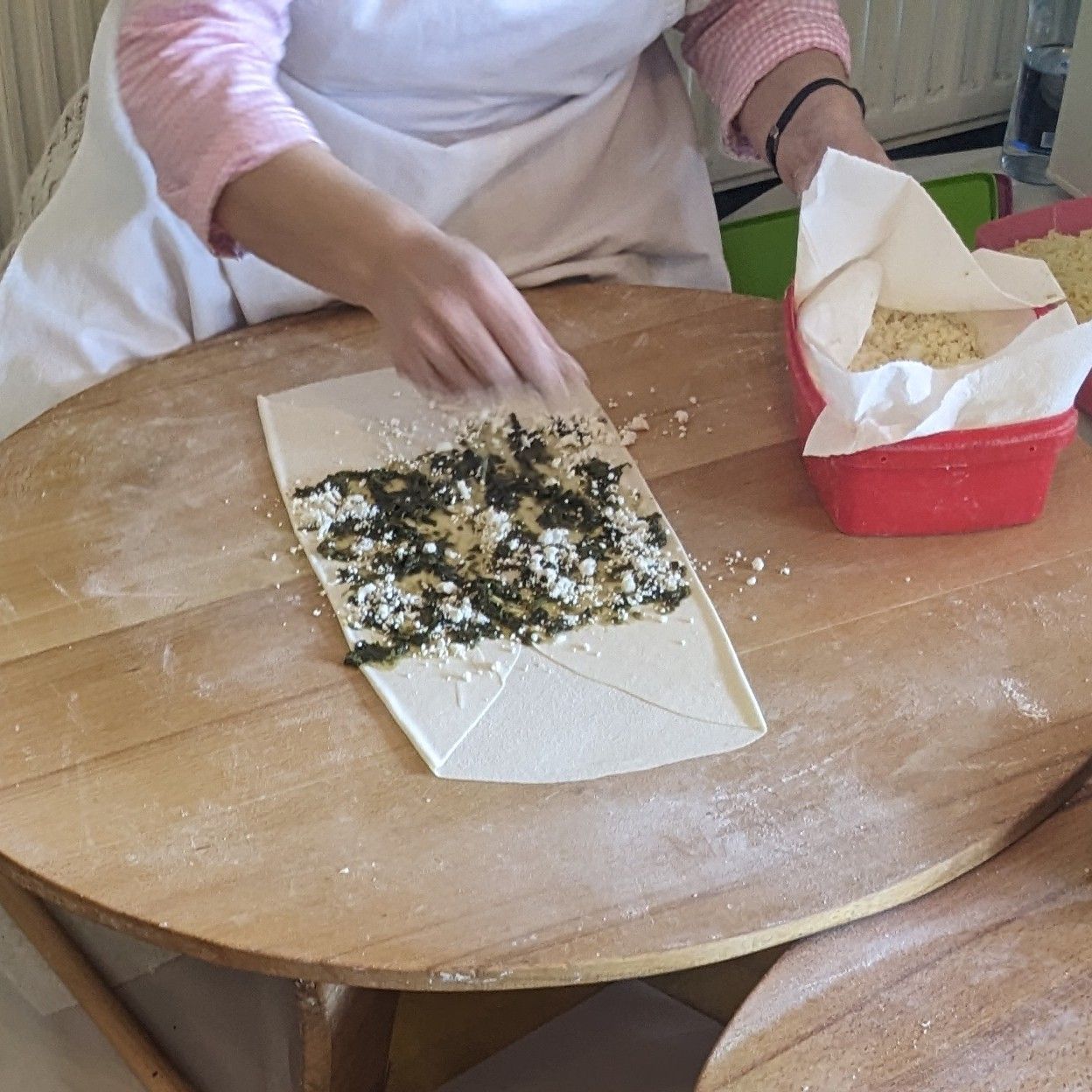

We reached our base at the Boomerang Cafe in Eceabat. We all had beers and swapped war stories. Just before sundown we walked into town to see the monument to the trench fighting between Ottoman and ANZAC forces. The tone of the memorial plaques didn't begrudge the ANZAC soldiers personally, but it did convey the Turk's "brave defence against foreign invaders" narrative of the Dardanelles campaign which is glossed over in Australian schools.
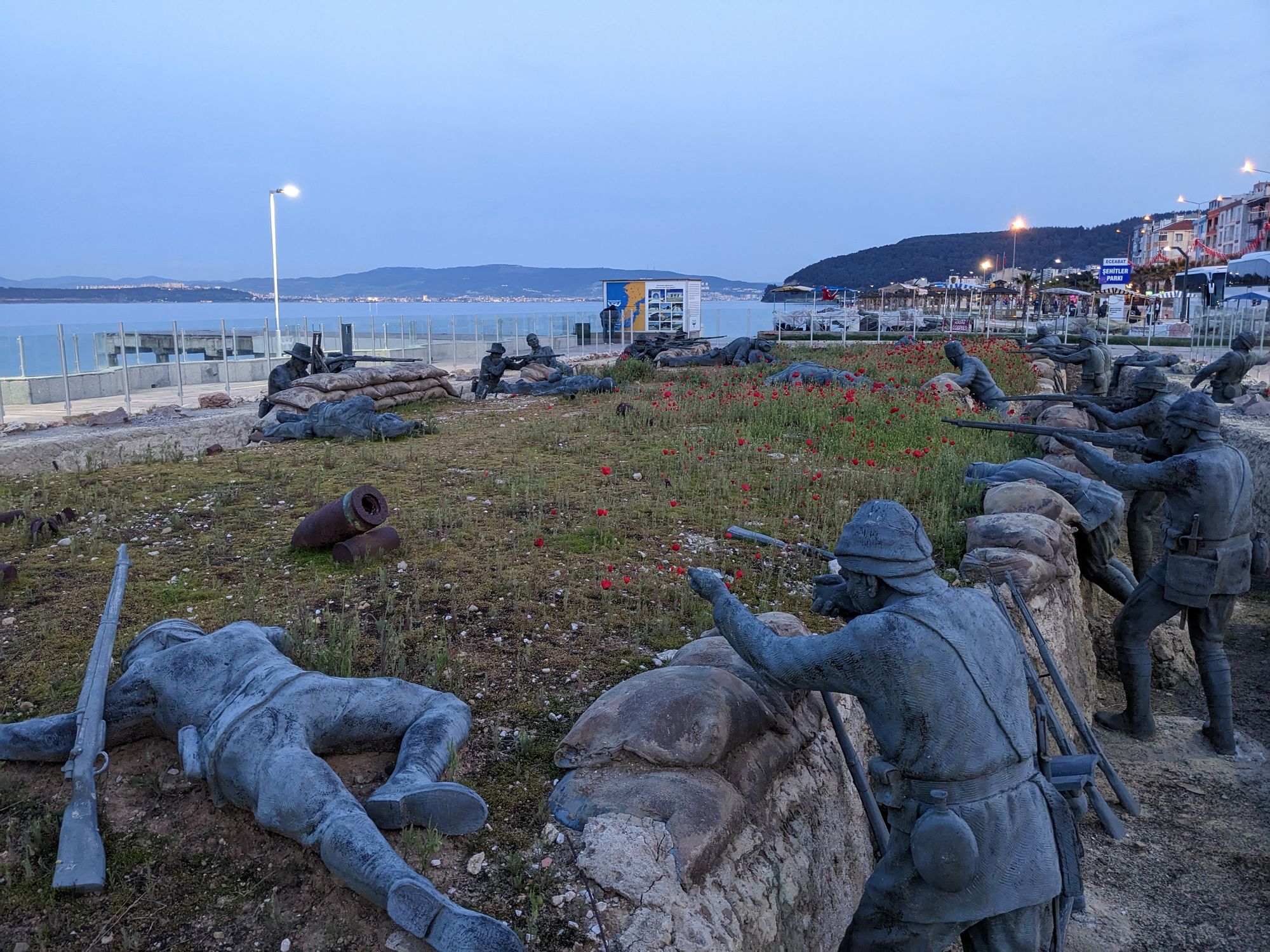
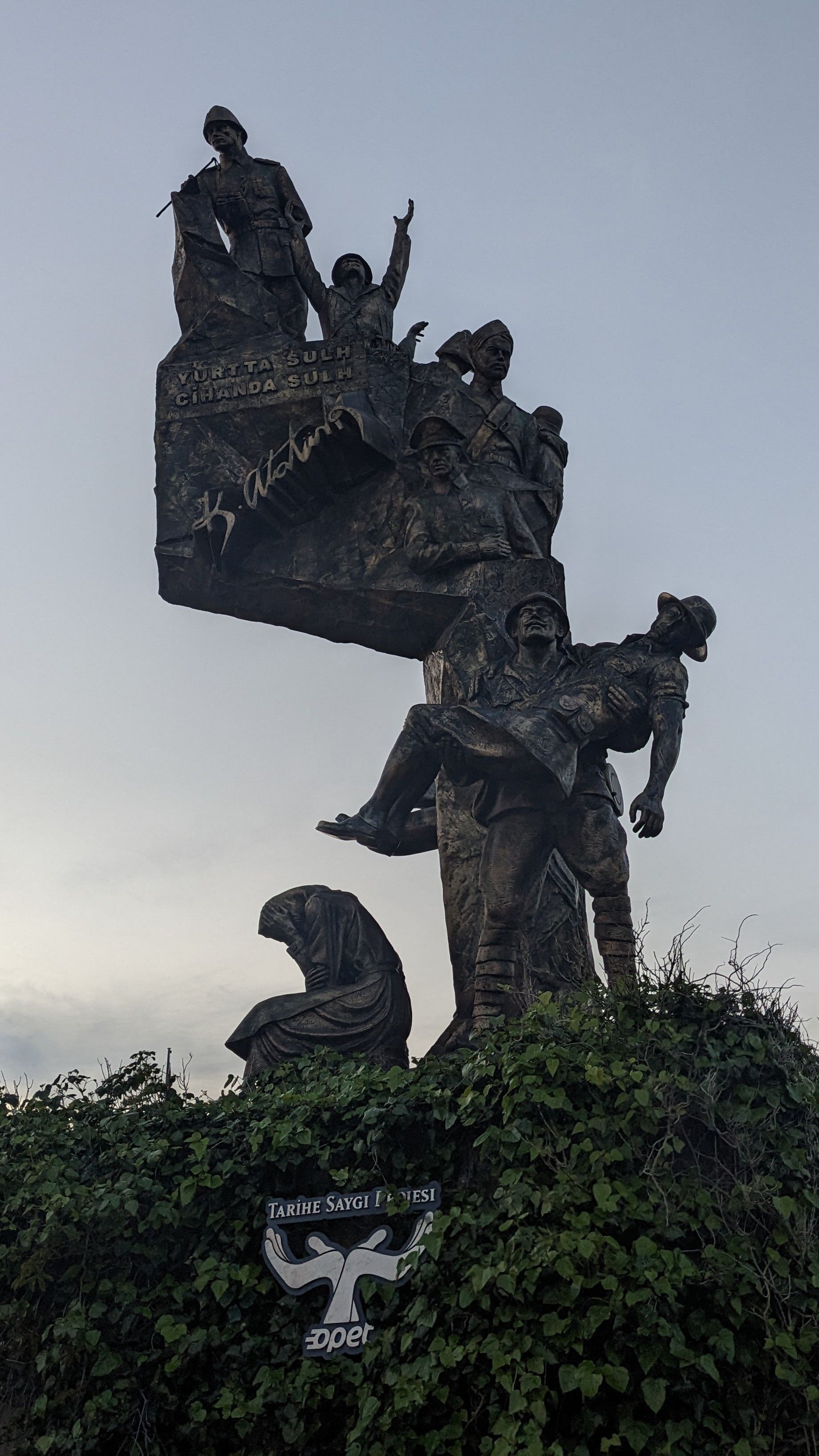
At 10pm we re-boarded the bus to enter ANZAC Cove. Our tour guides loaded us up with two breakfast packs comprising fresh fruit, sandwich and a popular brand of Turkish pretzel sticks. It was a chilly 10 degrees Celsius, so we layered up.
As soon as we arrived at the entrance to the commemoration site we passed through airport style security. People without official tickets could get them at the entrance. The commemoration was not nearly as busy as during the ANZAC centenary, so no one was turned away for lack of space. We could not take in any liquids over 100ml, although my precisely 100ml of sunscreen passed through OK. We could not bring in any water, because vodka can be disguised as water, but we were provided with ample and complementary water the whole time. Our handlers were Turkish students in bright red jackets who gave us each a goodie bag with rain poncho, ceremony guide and water.
When we reached ANZAC Cove, many other tour groups had arrived before us. Most of them had custom ANZAC Day 2023 hoodies. All the ones I saw had printed a reading by Ataturk on the back.
Those heroes that shed their blood and lost their lives. You are now living in the soil of a friendly country therefore rest in peace. There is no difference between the Johnnies and the Mehmets to us where they lie side by side here in this country of ours. You, the mothers, who sent their sons from faraway countries wipe away your tears; your sons are now lying in our bosom and are in peace. After having lost their lives on this land they have become our sons as well.
In preparation for a cold nights rest, I'd made a calculated decision to not pack a sleeping bag. The tour instruction guide specifically said that the site would be so crowded that it would be impossible to lay down and sleep. But those instructions must’ve been written for the centenary because at the 2023 service we had zero problems laying down.

I slept fine in my clothes because I wore a lot of them - thermals, undershirt, plain shirt, puffer jacket and beanie, while sleeping in a thin sleeping bag liner under my great coat and waterproof jacket. But if the temperature had dropped a degree further I’d have been in real discomfort.
For future attendees, I suggest you ignore any suggestion that you cannot lie down. You will almost definitely be able to lie down, so bring a sleeping bag. Many people on our tour purchased a sleeping bag in Istanbul for $30 AUD and donated it to a charity when they got back. That's the smart way of doing it.
2023 April 25, ANZAC Day
The ANZAC Day Order of Service was:
0130 Pre-service program of documentaries and short films
0530 Anzac Day Gallipoli Dawn Service commences
1000 Australian Memorial Service, Lone Pine Cemetery
1130 New Zealand Memorial Service, Chunuk Bair
1300 Coach loading commences from Chunuk Bair
For those who were sleeping, the Royal Australian Air Force and New Zealand Defence Force bands struck up at 0530 to wake us. It was still cold and dark, but we shuffled to stand behind the temporary fencing. The press darted about the other side photographing us. Those who couldn't reach the fencing watched the service on the big screens.
The Dawn Service began with a Karanga, a Māori call to gather by the New Zealand Defence Force, and the playing of the didgeridoo by the Australian Defence Force. The Master of Ceremonies introduced the Catafalque of Australian, New Zealand and Turkish military officers to honour the dead. There were readings, addresses and hymns. The band played the Last Post, we observed a minute of silence, and we closed with all three nations' national anthems. As we closed, a light downpour began but quickly gave way to a dry, overcast morning.
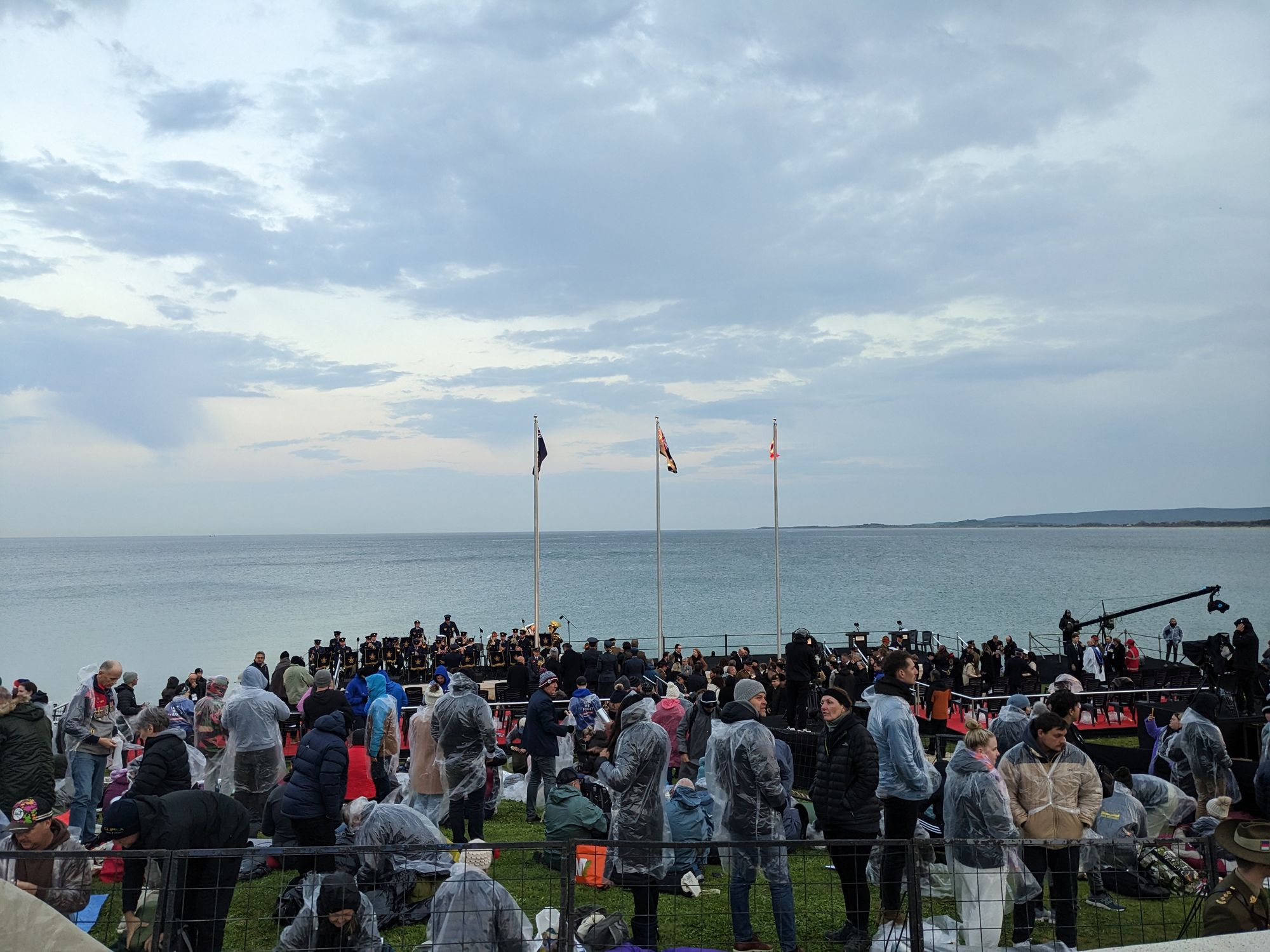
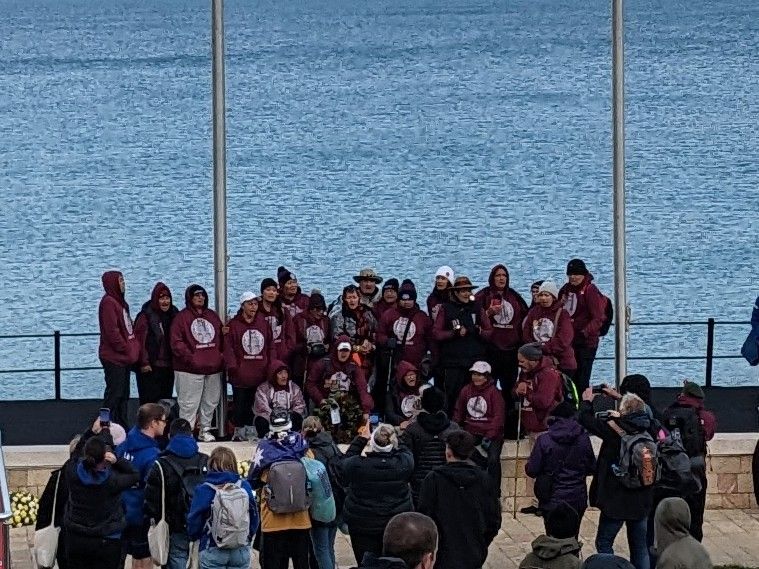
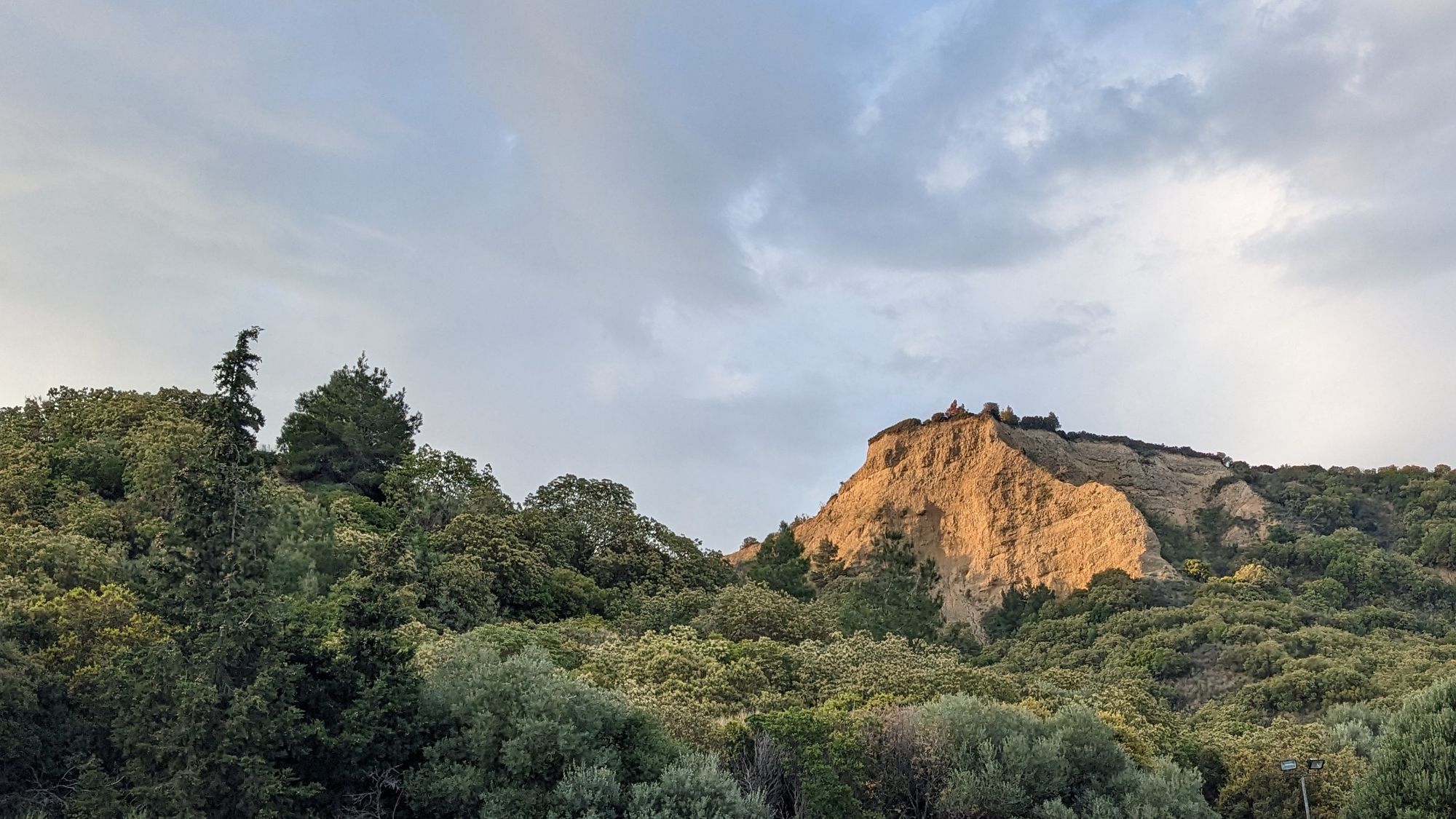
After the Dawn Service, we ascended the hill to the national memorial services. The Australians went to Lone Pine while the New Zealanders went further ahead to Chunuk Bair. The route was dotted with Commonwealth cemeteries at Arı Burnu, Mezarlığı Beach and Shrapnel Valley. Travellers who visit on days other than ANZAC Day can hike off-track to the cemeteries at Plugge's Plateau, the 4th Battalion Parade Ground and many others.
When we reached Lone Pine the sky had cleared and the day had warmed. We passed through airport style security once more, threw out out our water once more, and moved to be seated. The service normally begins late in the morning so that all attendees have time to reach Lone Pine. In practice, most attendees arrive with plenty of time and so they explore Lone Pine before the ceremony begins.
While I waited I walked between the headstones. I found a Private E. G. Knott of the 1st Infantry Battalion and I wondered if they were a distant relative. Many epitaphs quoted directly the Bible, the most common was from John 15:13
Greater love hath no man
than this, that a man lay
down his life for his friends.
Other gravestones recorded original epitaphs, such as:
A mother’s thoughts
often wander to this
sad and lonely grave.
I wonder if she knew that her son was laid at rest among his friends, where so many came to pay their respects.
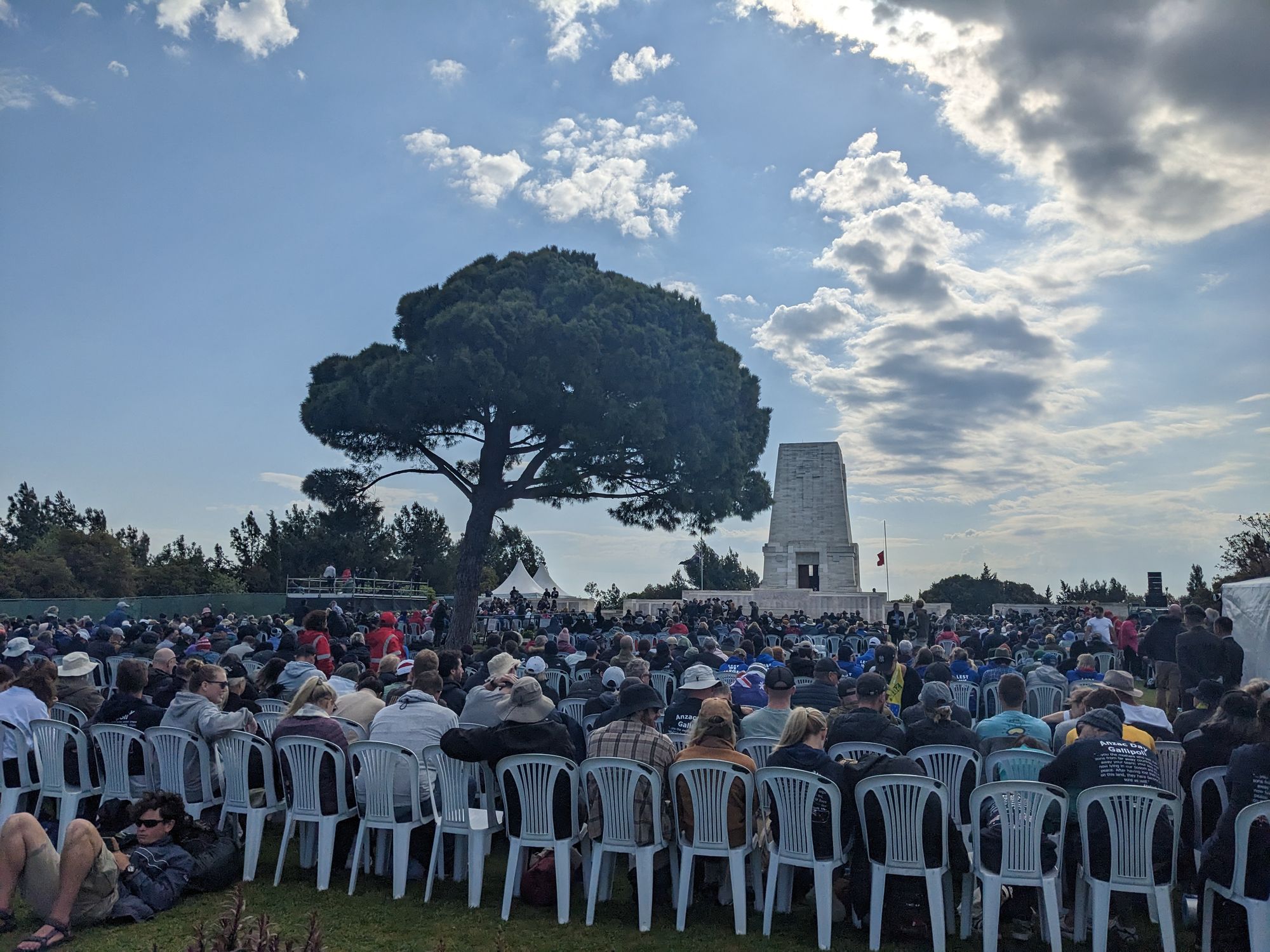
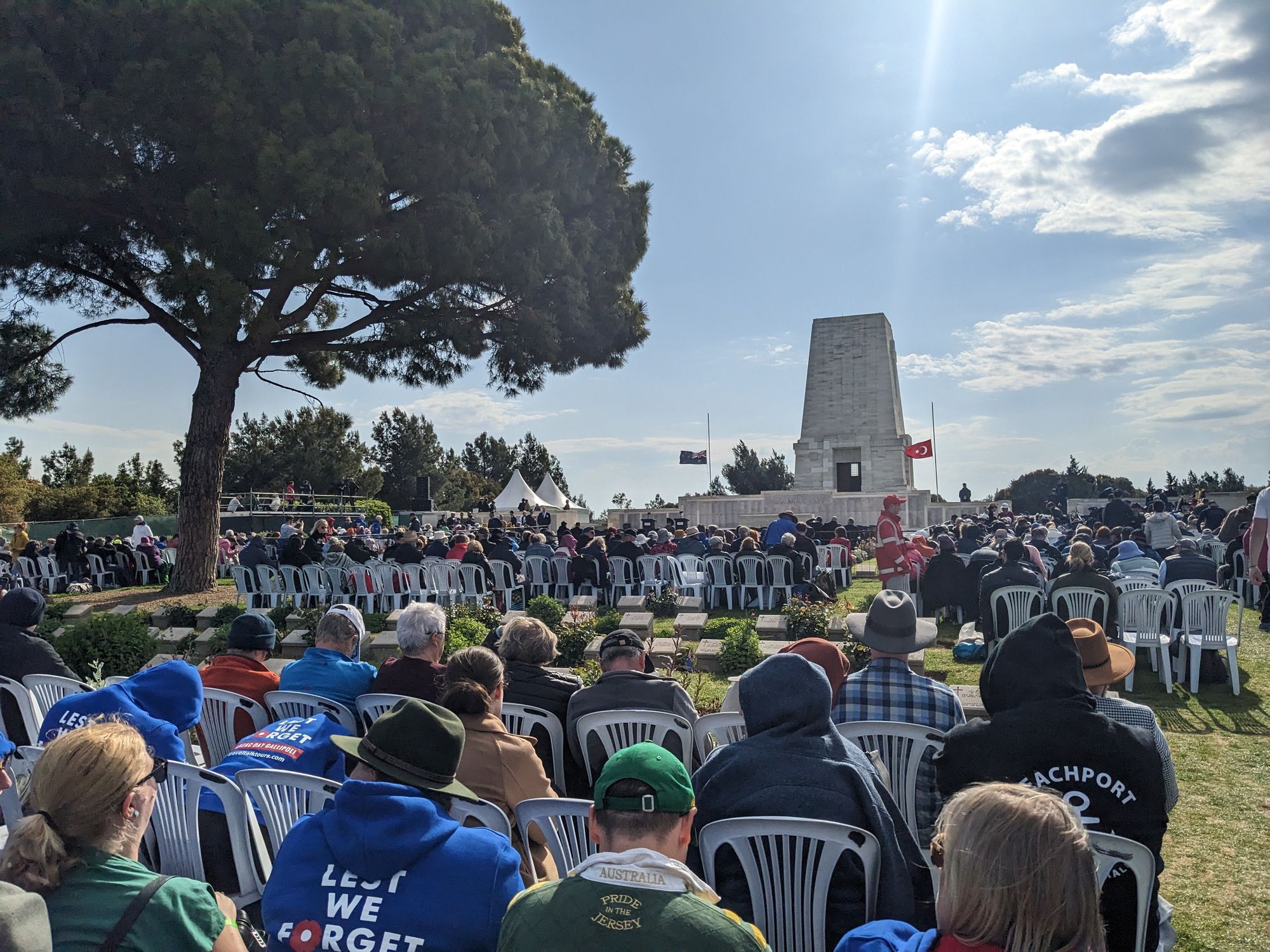
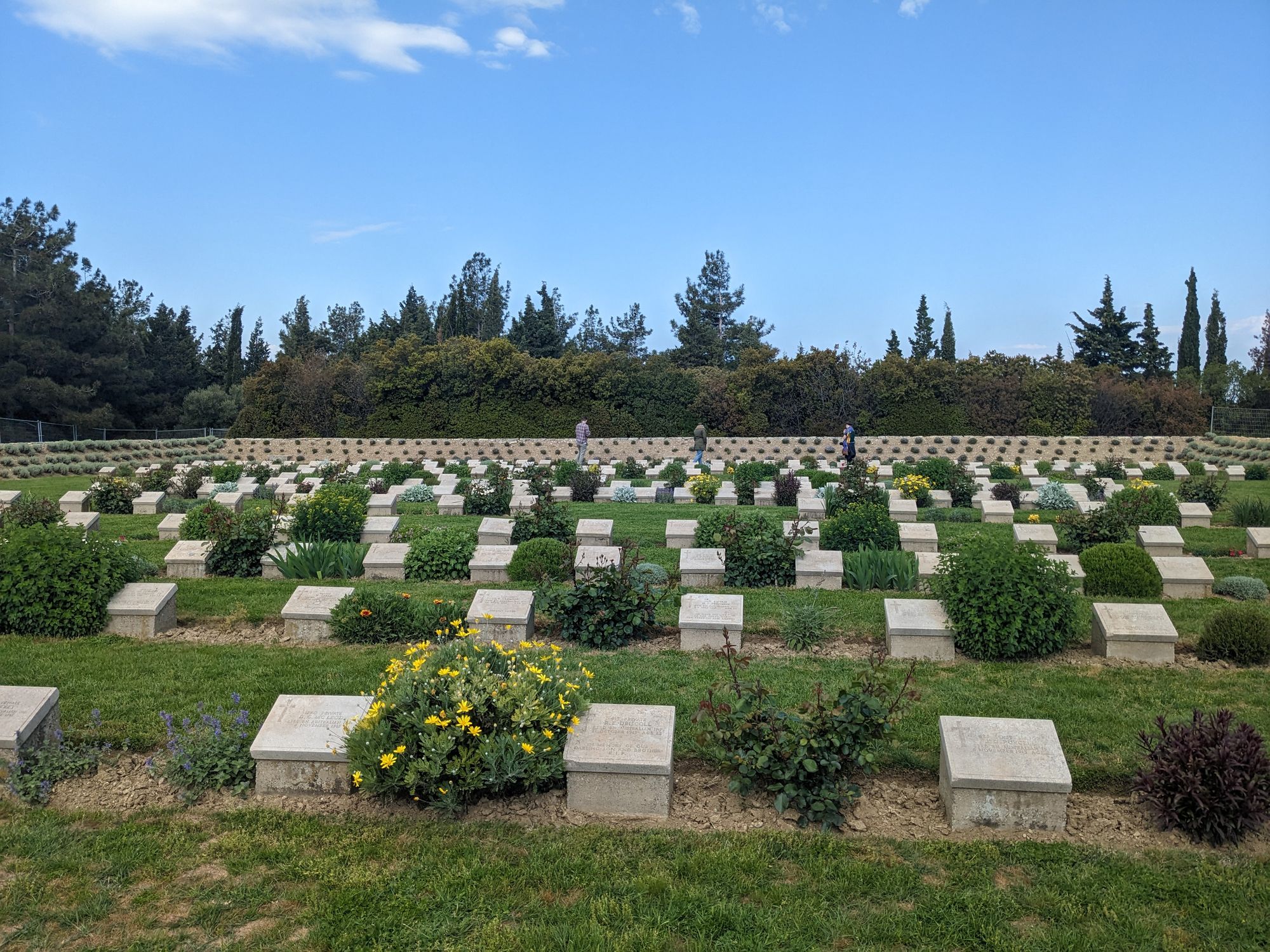
The Australian Memorial Service at Lone Pine proceeded much as the Dawn Service had done. In attendance was the Governor of Victoria, Linda Dessau; the Australian Minister for Veterans Affairs, Matt Keogh; the New Zealand Defence Minister, Andrew Little; and, if my memory serves, the Turkish Governor of Çanakkale, Orhan Tavlı.

After the ceremony, the Australians proceeded to the New Zealand Memorial Service at Chunuk Bair. Given the distance between the sites and the need to end the services in a timely manner, the New Zealand service begins before attendees from Lone Pine can reach Chunuk Bair. Therefore, attendees can only ever attend one of the two services.
The New Zealand Memorial Service at Chunuk Bair was nearly finished when we arrived. We could hear the final proceedings from the outside: The New Zealand Defence Force sung a hymn in te reo Maori, and the crowd joined in the joyous singing; then they closed with a Haka. The Australian ceremony was positively staid in comparison.
After the New Zealand Memorial Service concluded it was the end of the ceremonies. All attendees gathered outside the Chunuk Bair site to wait for their bus. Each tour had a number corresponding to their bus, and we waited patiently for our number to be called. To keep our spirits high, the New Zealand Defence Force Band struck up some rock songs with a Kiwi twist, while the New Zealand staff served coffee and ice cream. Like I said, the Australian service was positively staid by comparison.
Our bus arrived at 13:30. We had been awake since 5am, climbing hills and standing for the services, so we slept soundly all the way to Istanbul. I walked from the Eminönü bus terminal across the Golden Horn bridge to my hotel in Galata and fell asleep straight away.
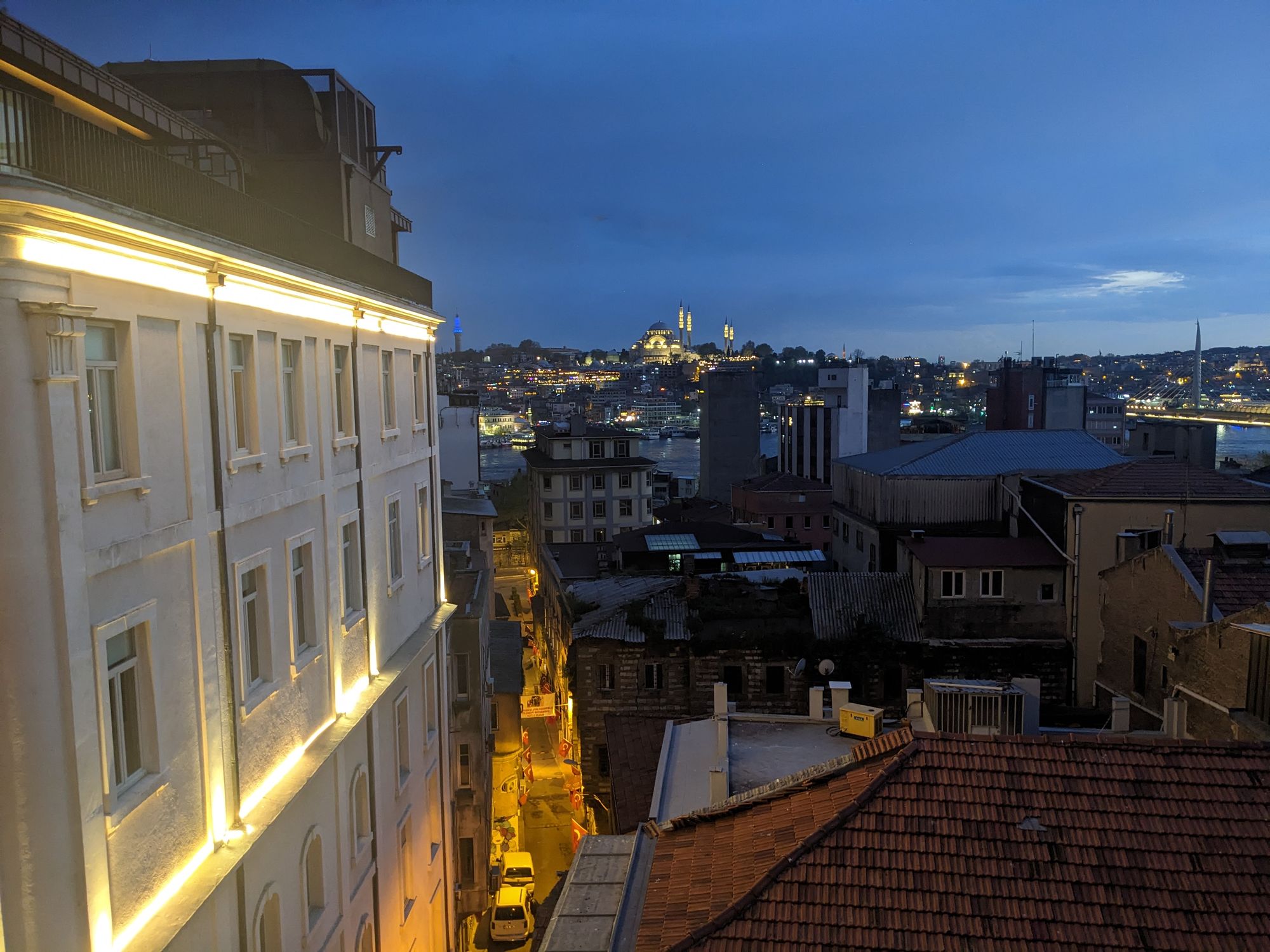
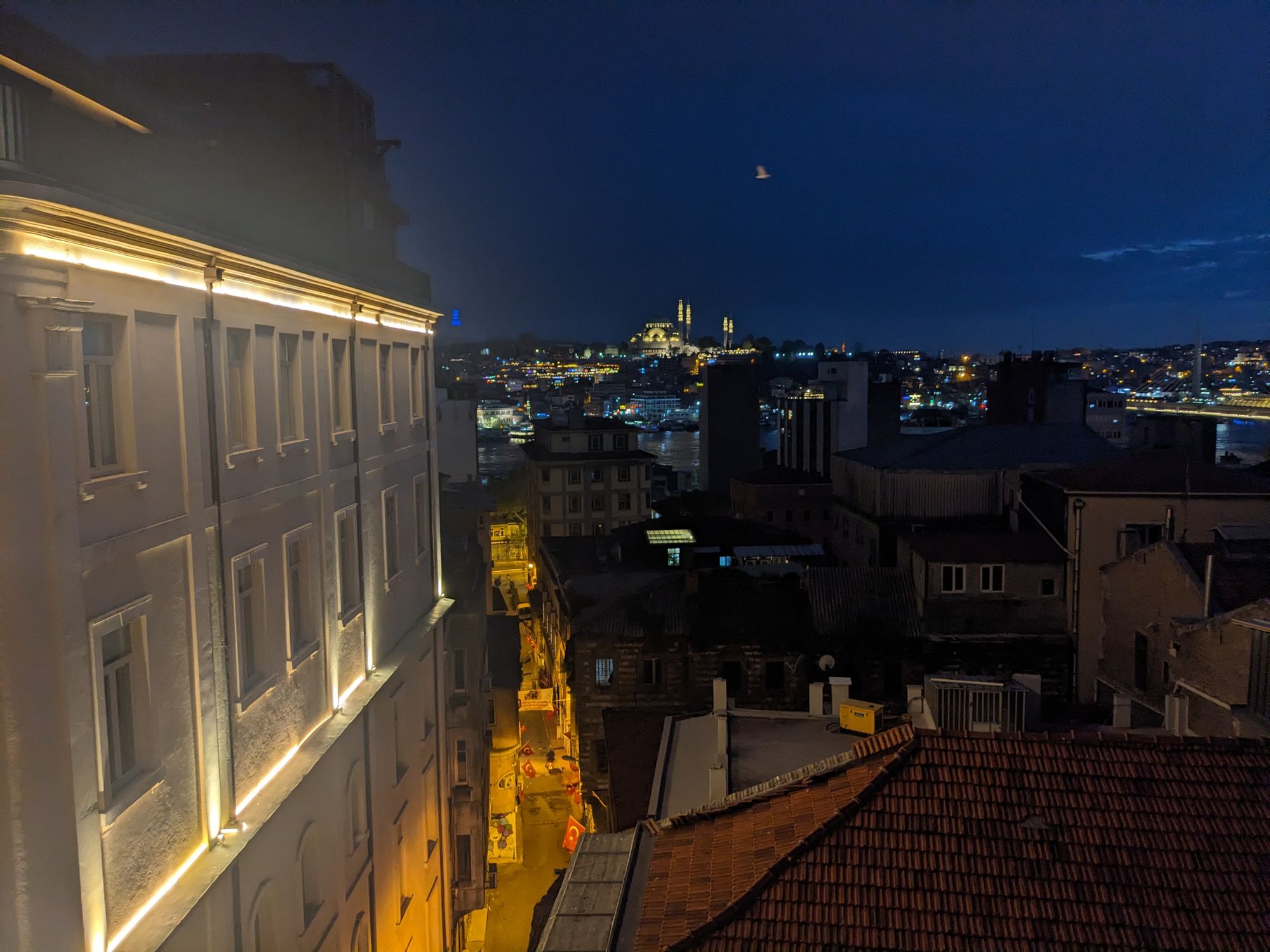
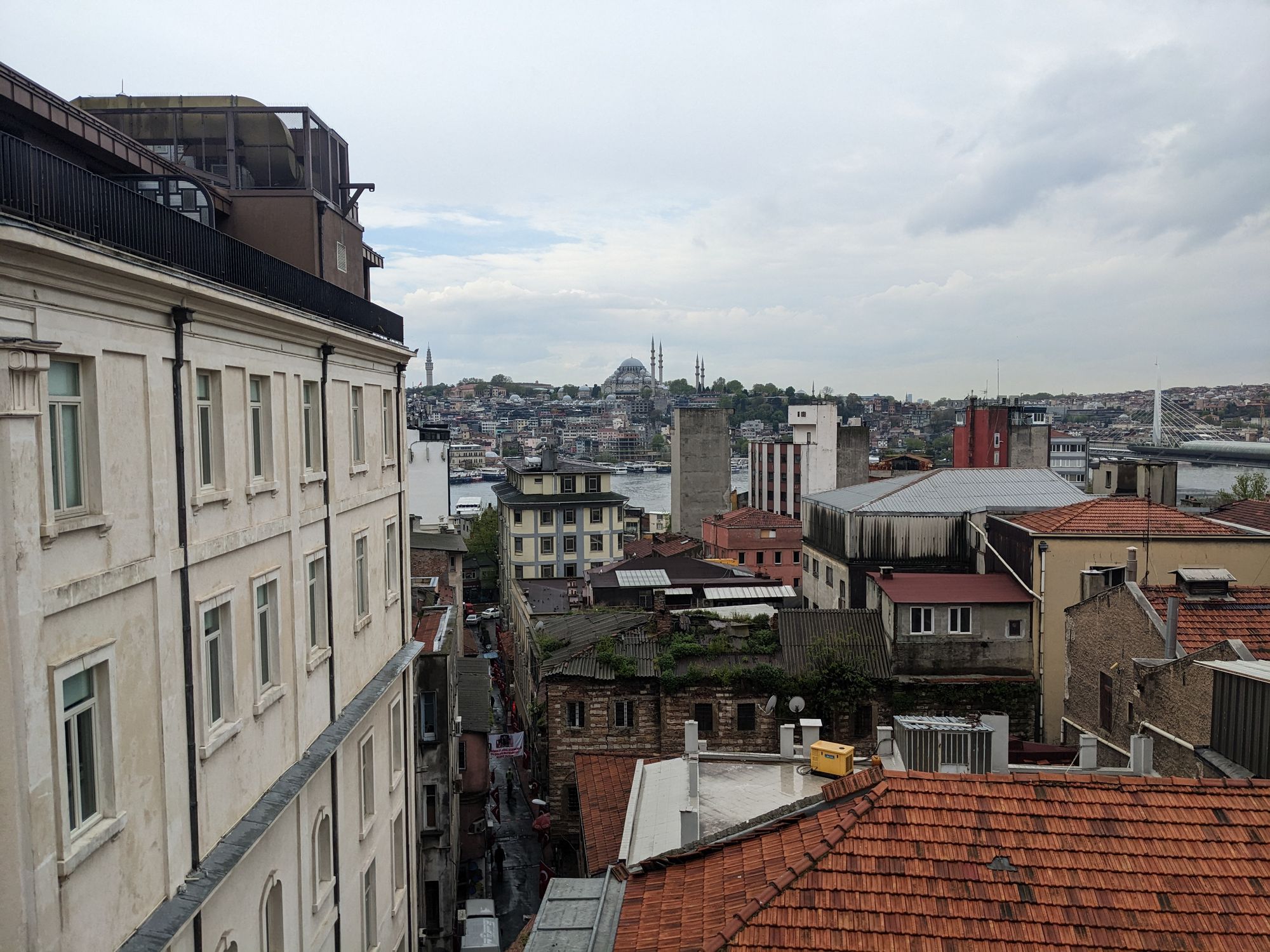
2023 April 26, Wednesday
For the day after ANZAC Day I'd booked an Istanbul Tour. I met my guide in the hotel lobby at 09:30 and we set off down the Golden Horn bridge to Fatih. On the way, my guide stopped to help some tourists navigate the ticketing machine, just as the Young Turks has helped me - this must happen a lot.
My guide and I boarded one of the Melbourne style trams. As our tram passed Hagia Sofia, my guide noticed that the line outside was much less thronging than usual, so we shook-up the itinerary and went to Hagia Sofia first.
Hagia Sofia
Hagia Sofia is Greek for "Holy Wisdom". Those of you looking ahead in this blog will notice that the capital of Bulgaria is also named Sofia, which comes from the fact that Sofia's oldest church is the Saint Sofia Church. If you're really on your toes you'll also notice that Sofia sounds a lot like Sophie, which is where we get Greek derived words like philosophy - the love of wisdom. Sorry where was I?
Hagia Sophia has been many things. From 360 to 537 it was a construction site. For the next 1,093 years it was an Eastern Orthodox Church, with a brief interlude as a Catholic Church from 1204 to 1261 thanks to the Fourth Crusade. It was converted to a mosque in 1453, made into a museum in 1935, and converted back to a mosque in 2020, which is what it was when I visited.
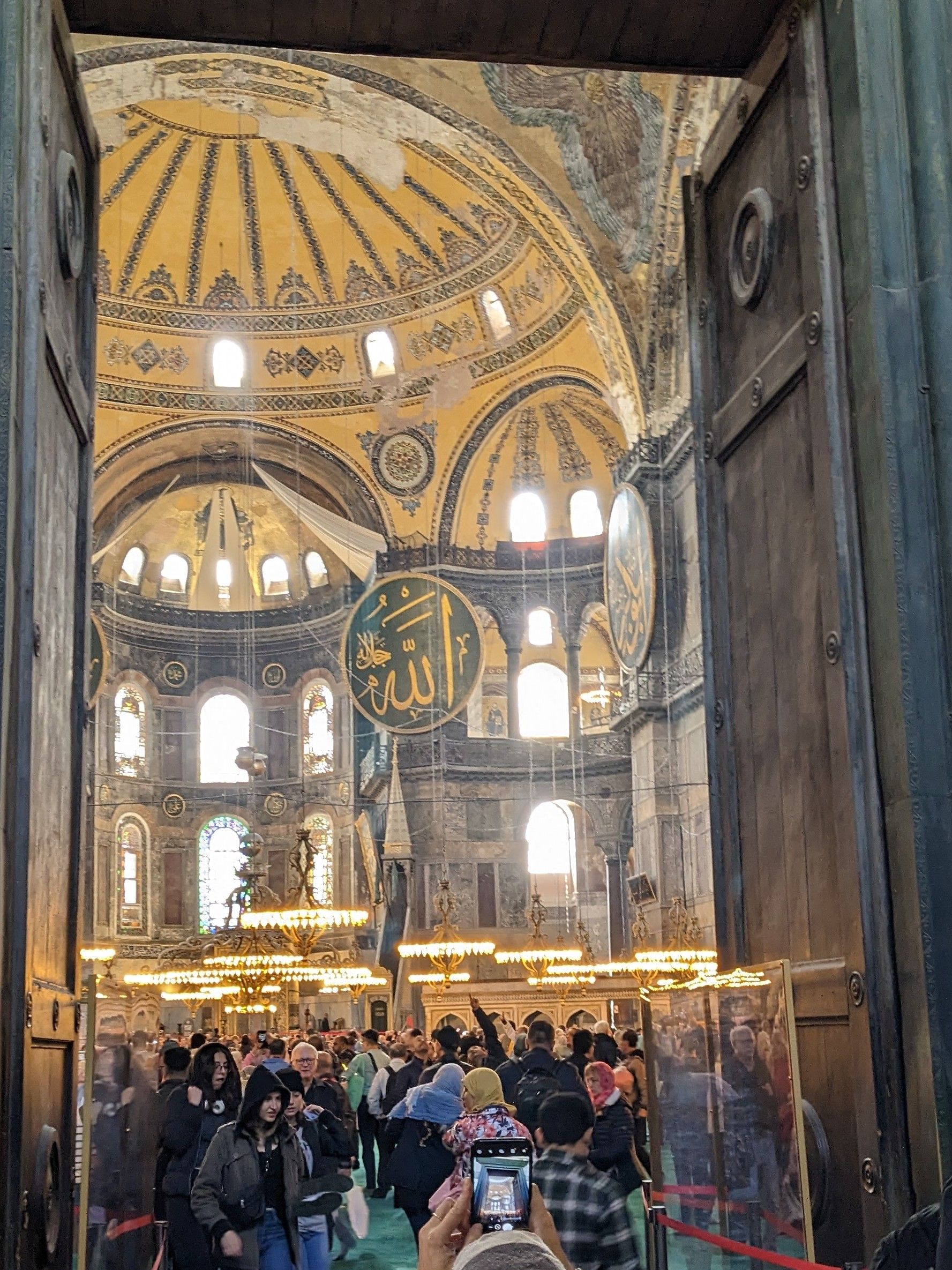
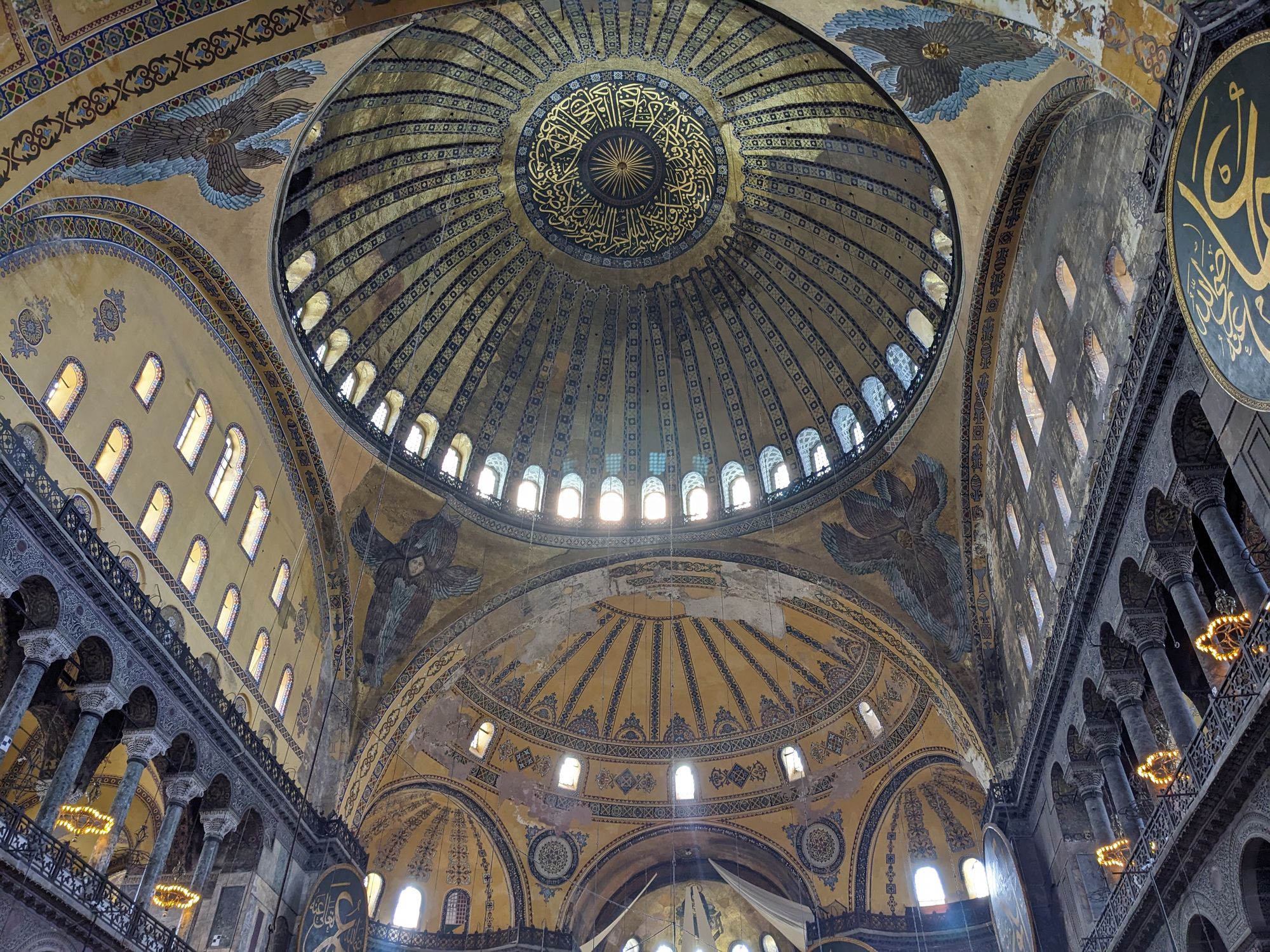
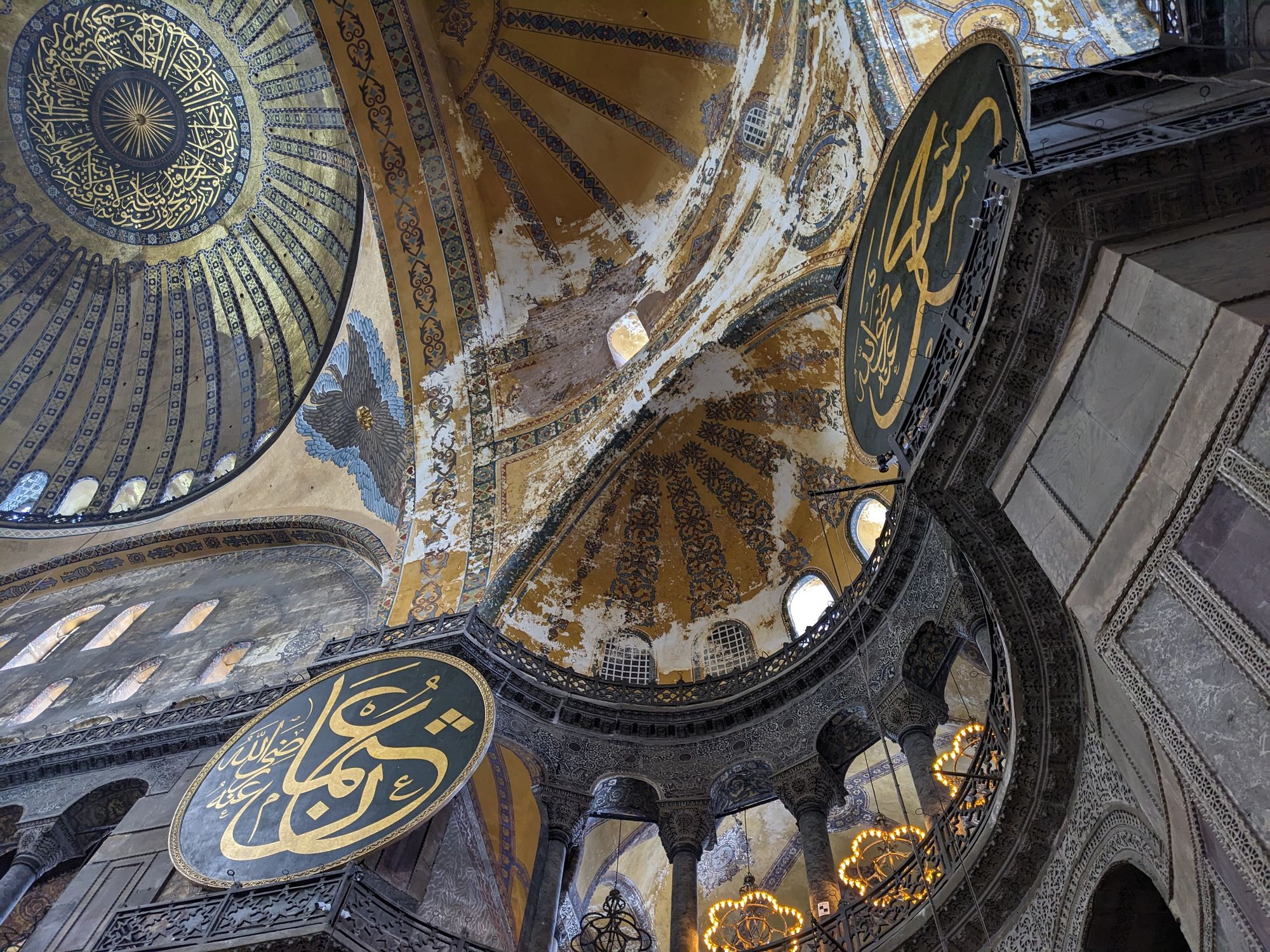
When the Ottomans conquered Constantinople on 29 May 1453, it was a Tuesday. Since that day, many Greeks have considered Tuesday to be an unlucky day. But more pertinent to my tour, it meant that when Mehmet, the Ottoman Sultan who captured Constantinople, ordered his architects to have Hagia Sofia converted to a mosque in time for Friday prayers, the architects had a mere three days to do it. This they achieved, my guide told me, by covering all the images of persons with large drapes and plastering over the Christian imagery. Mehmet was clearly pleased with their work because he prayed there that Friday.
During our tour, three years after Hagia Sofia had gone from museum back to mosque, most faces had been re-plastered. However, one of the four angels in the dome's corners still had its face, which is why some Muslims still won't pray in Hagia Sofia.
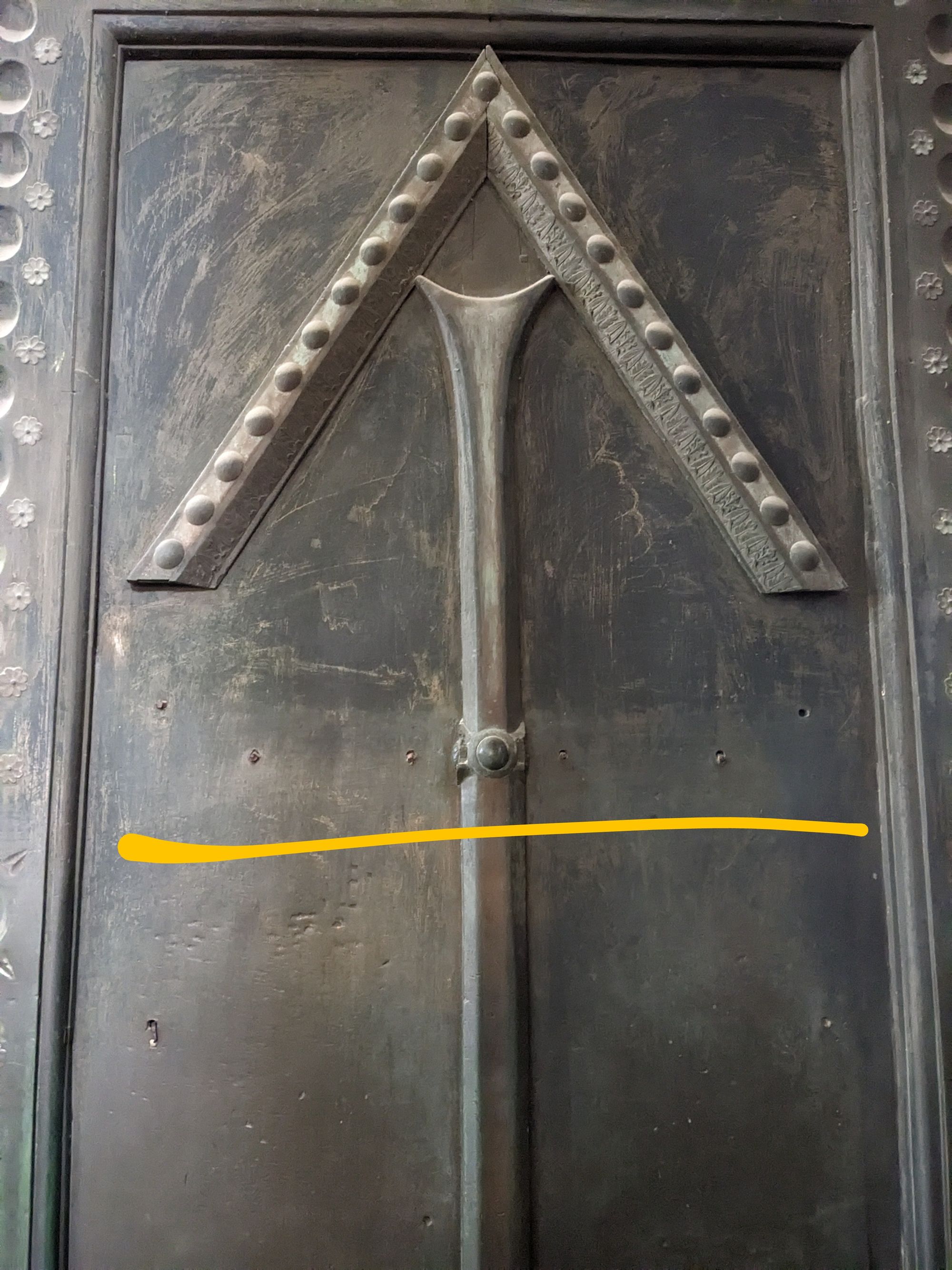
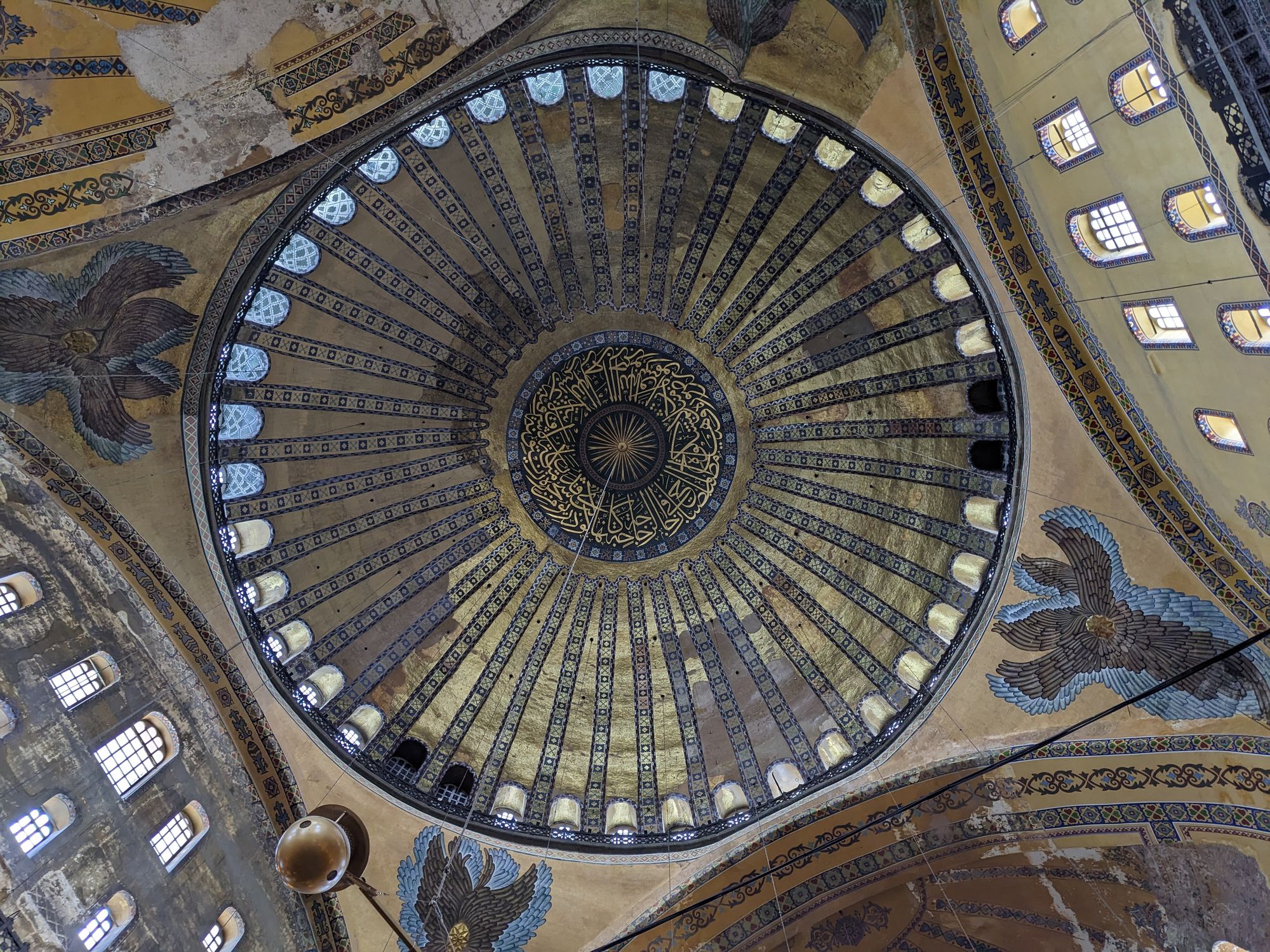
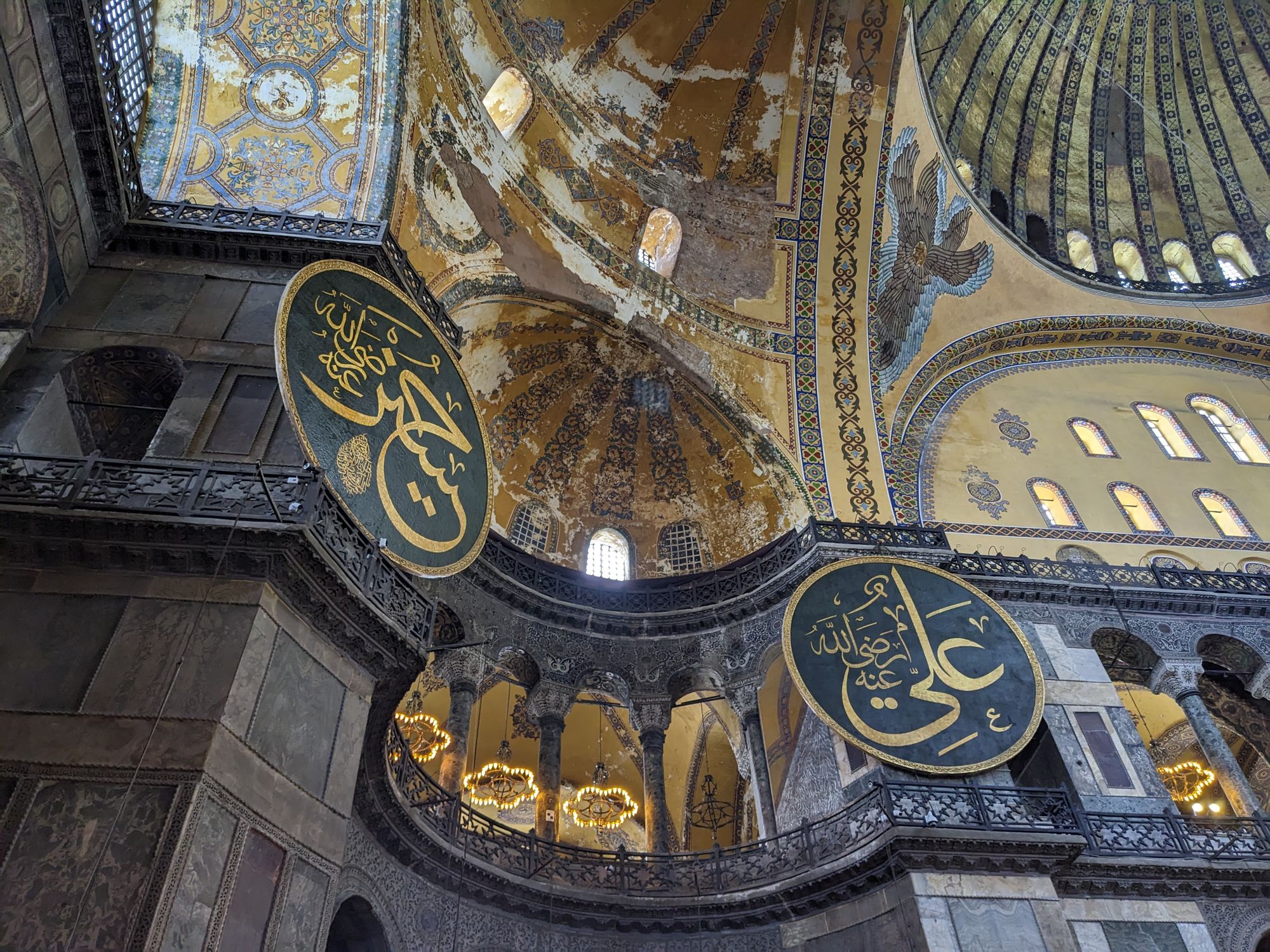
Inside the Hagia Sofia you may notice that the carpet is strangely misaligned by five degrees, which is no accident. When the Byzantines built the church, they oriented it to face south 159°0'37" degrees towards Jerusalem. However, mosques must face towards Mecca, which from Hagia Sofia is 154°46'55", a misalignment of five degrees. Rather than destroy Hagia Sofia and rebuild it five degrees further clockwise, the Ottomans simply shifted the carpets, pulpits and other movable structures within Hagia Sofia by five degrees so that people inside would face Mecca even if the building did not.
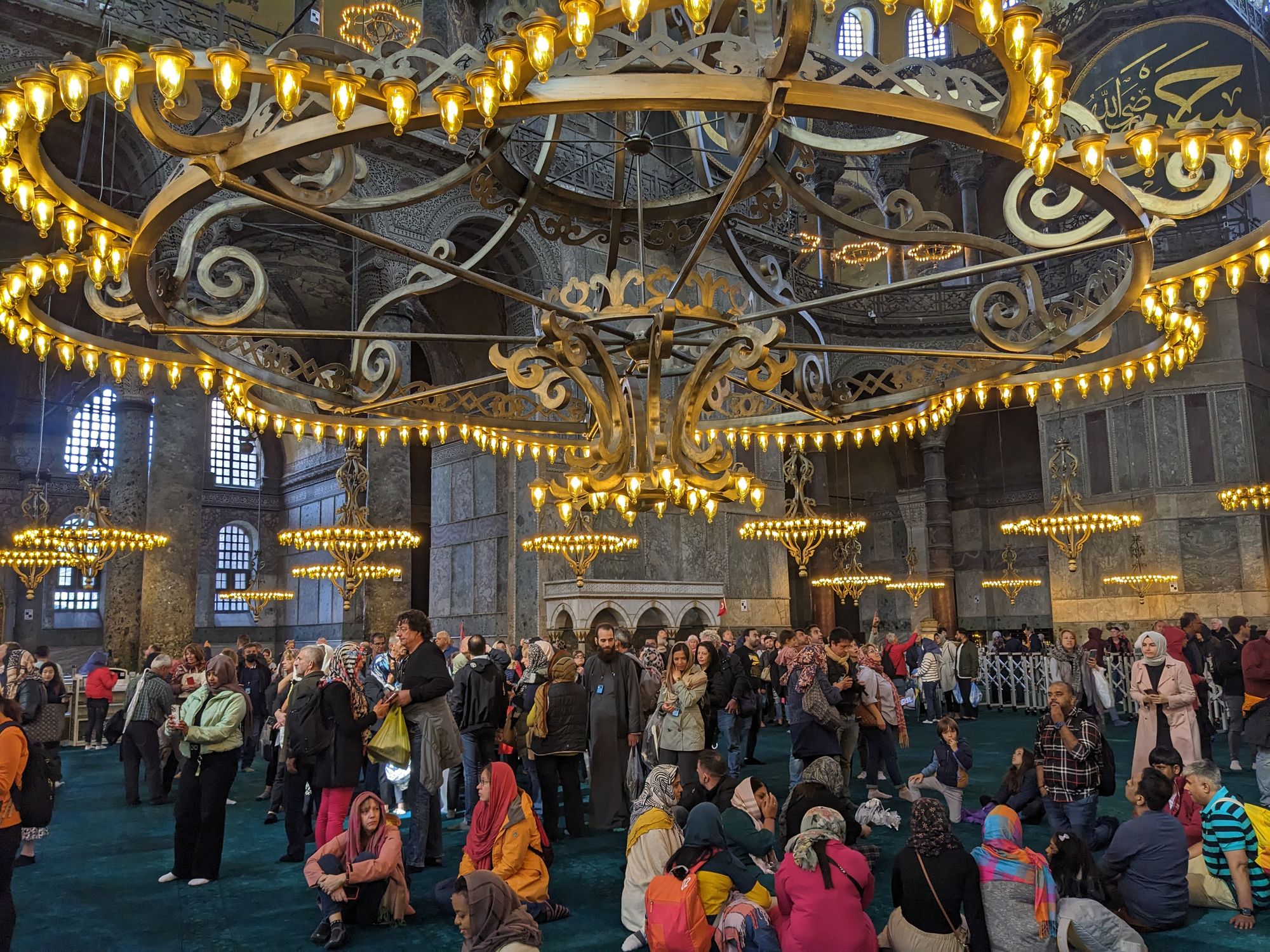
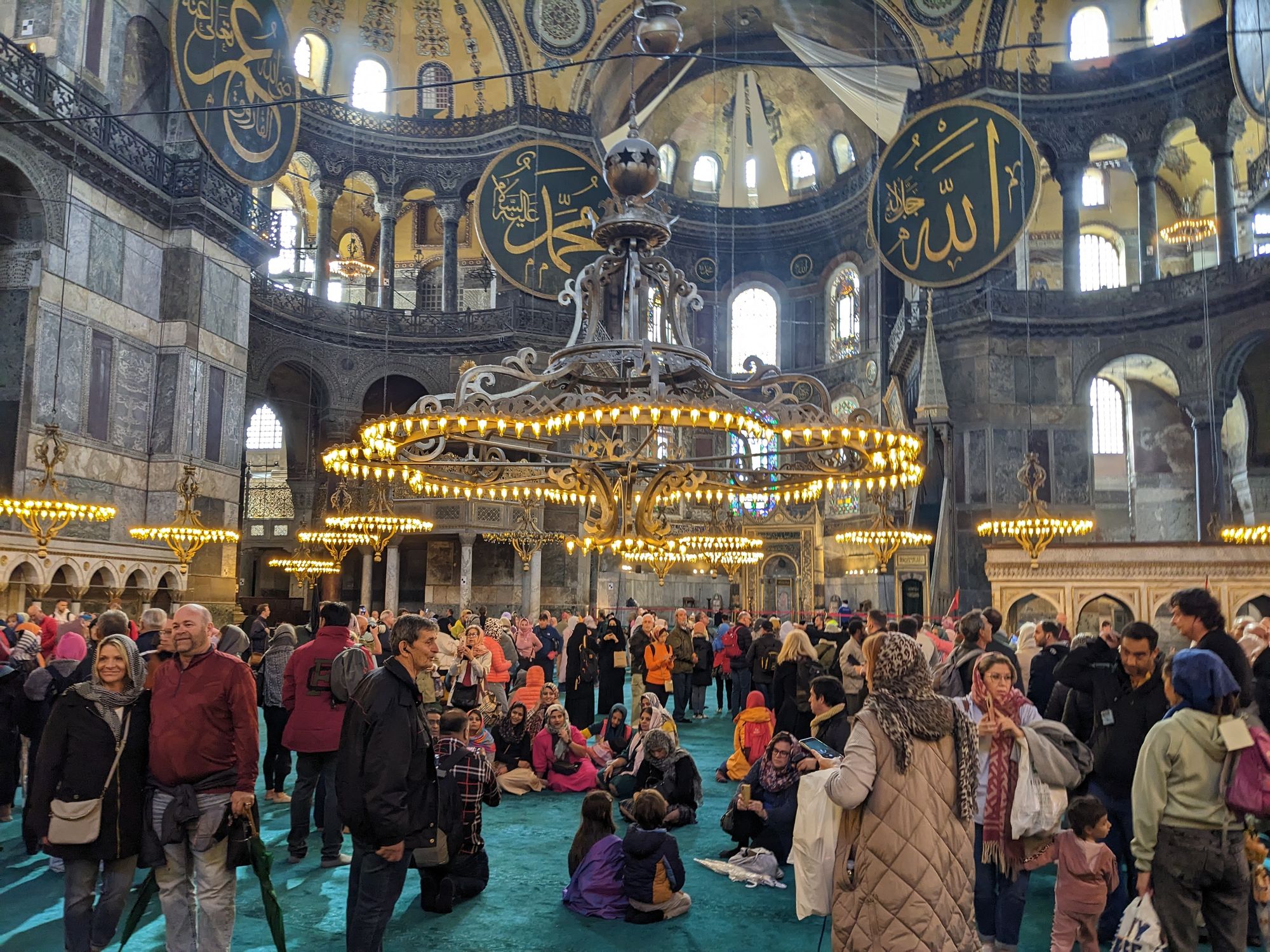
Topkapi Palace
We then moved on to the former Sultans' residential complex, the Topkapi Palace. The Ottoman Sultans lived in the palace from the 1460s until 1856 when they moved to the Dolmabahçe. Unlike many European palaces, which are one large building, the Topkapi Palace is a series of buildings, including:
- The Imperial Gate: This was the main entrance to the palace. The street to the Imperial Gate runs directly from the Hagia Sophia. The original gate was built in 1478 but was renovated with marble in the 19th-century.
- The First Courtyard: The first courtyard of the palace was home to several important buildings, including the Hagia Irene, the oldest church in Istanbul and the only one never converted to a mosque (although it was converted to a warehouse).
- The Palace Kitchens. Just off of the First Courtyard are the kitchens, including rooms for making drinks, sweets and dairy, as well as storerooms, women's quarters (harem), baths and a mosque. The kitchens could feed up to 4,000 people across the palace. Now the rooms display Ottoman glassware, Chinese porcelain, as well as utensils - and a handy explanation how to make Turkish Coffee.
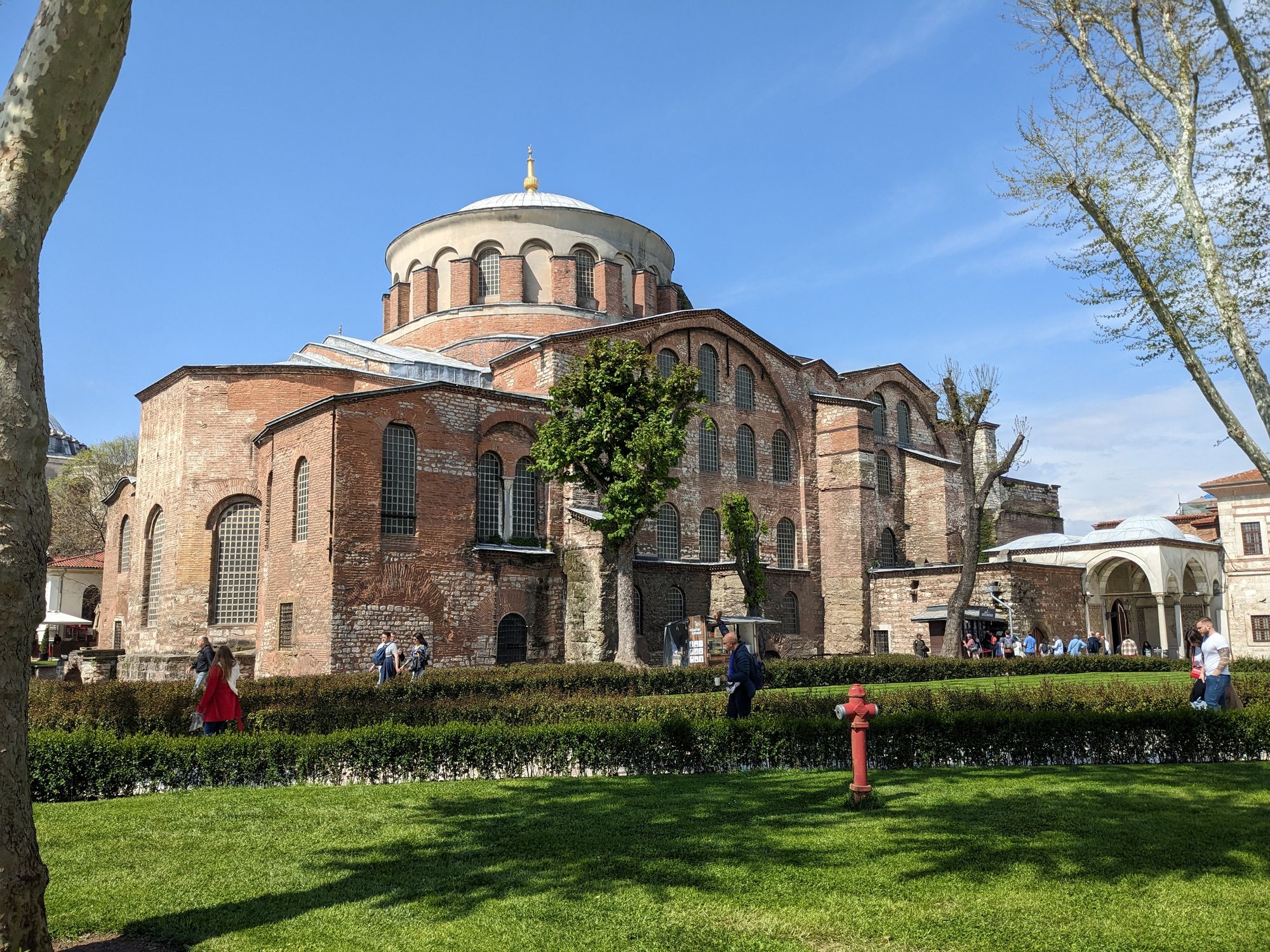
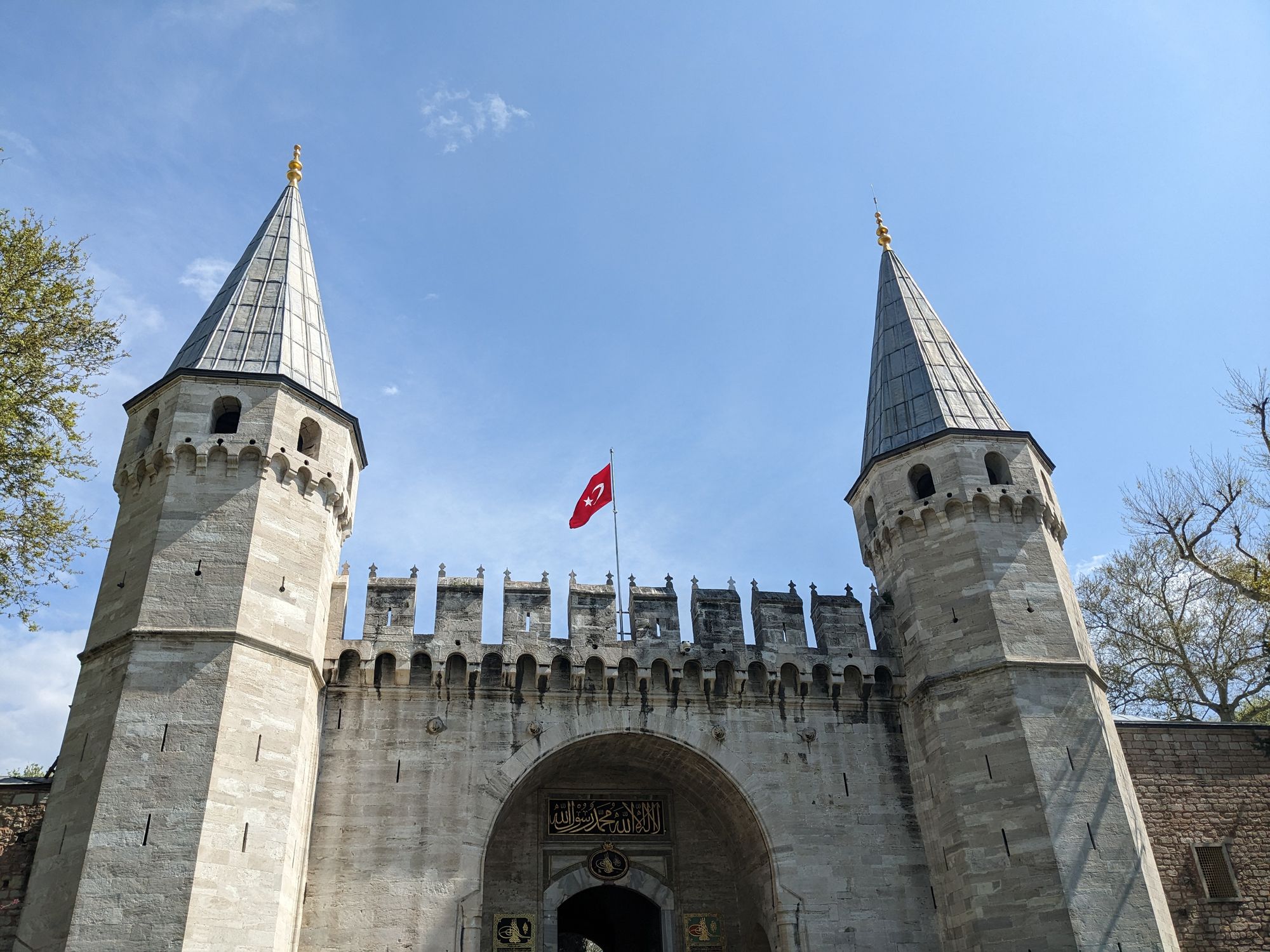
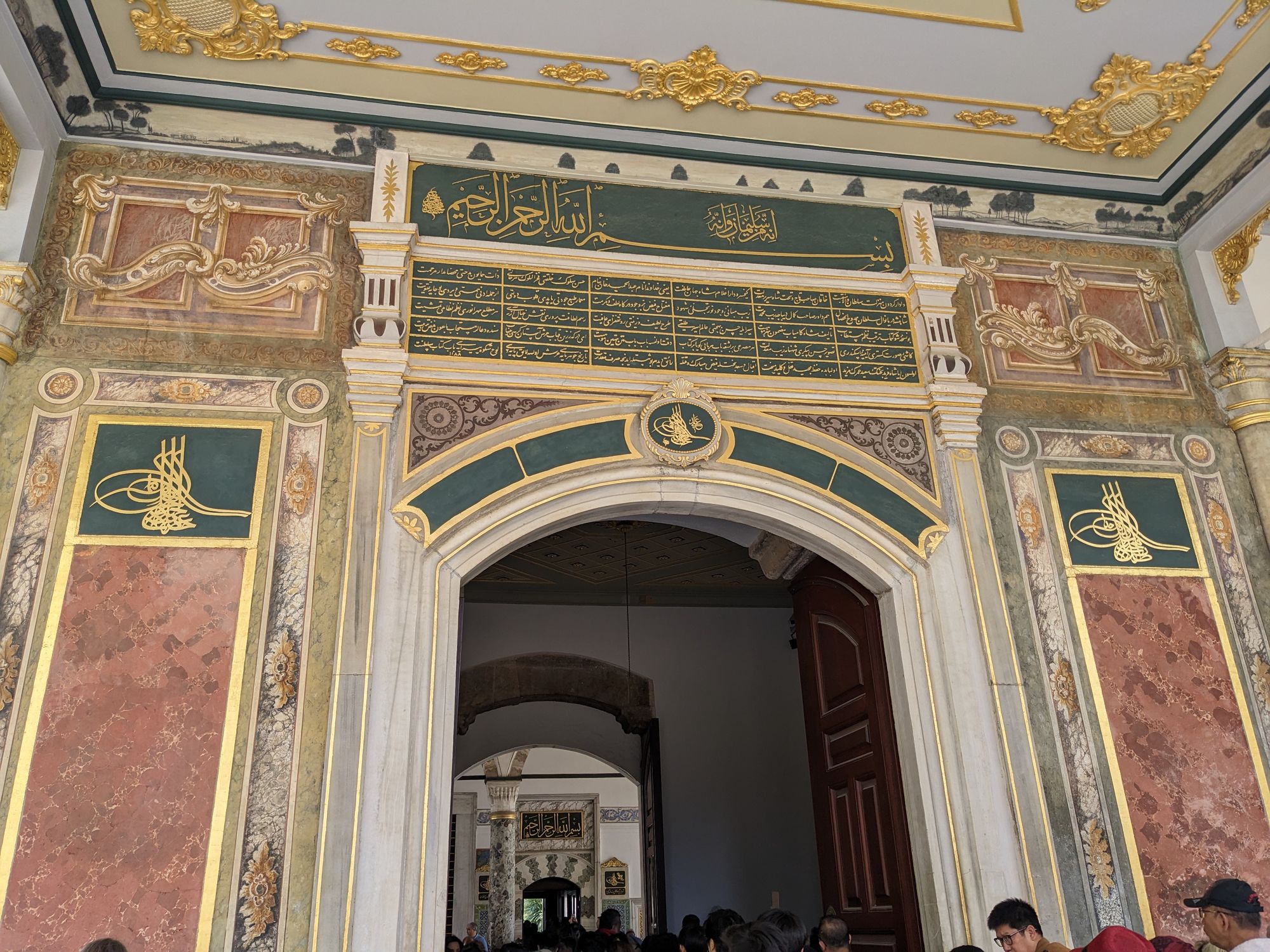
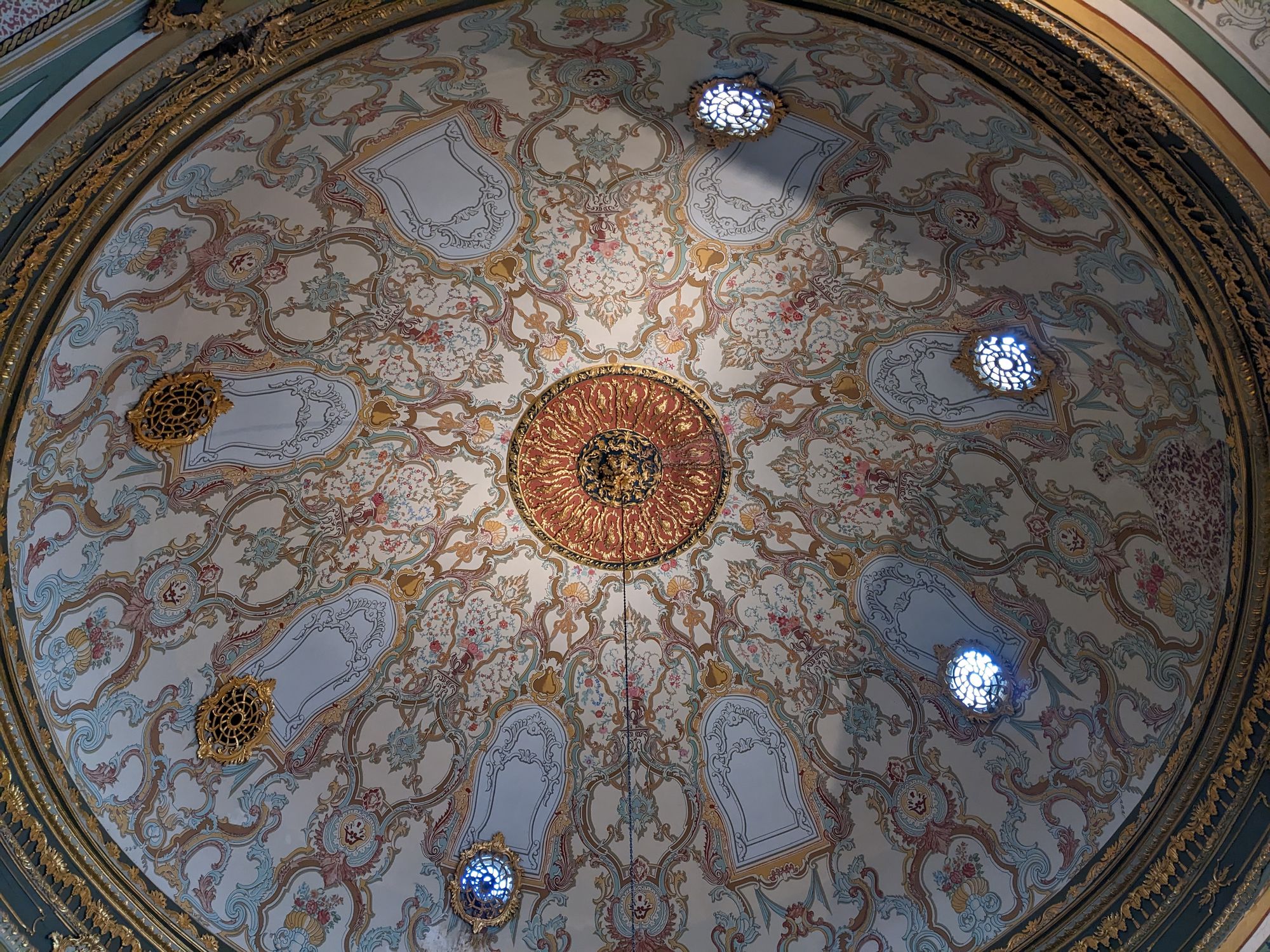
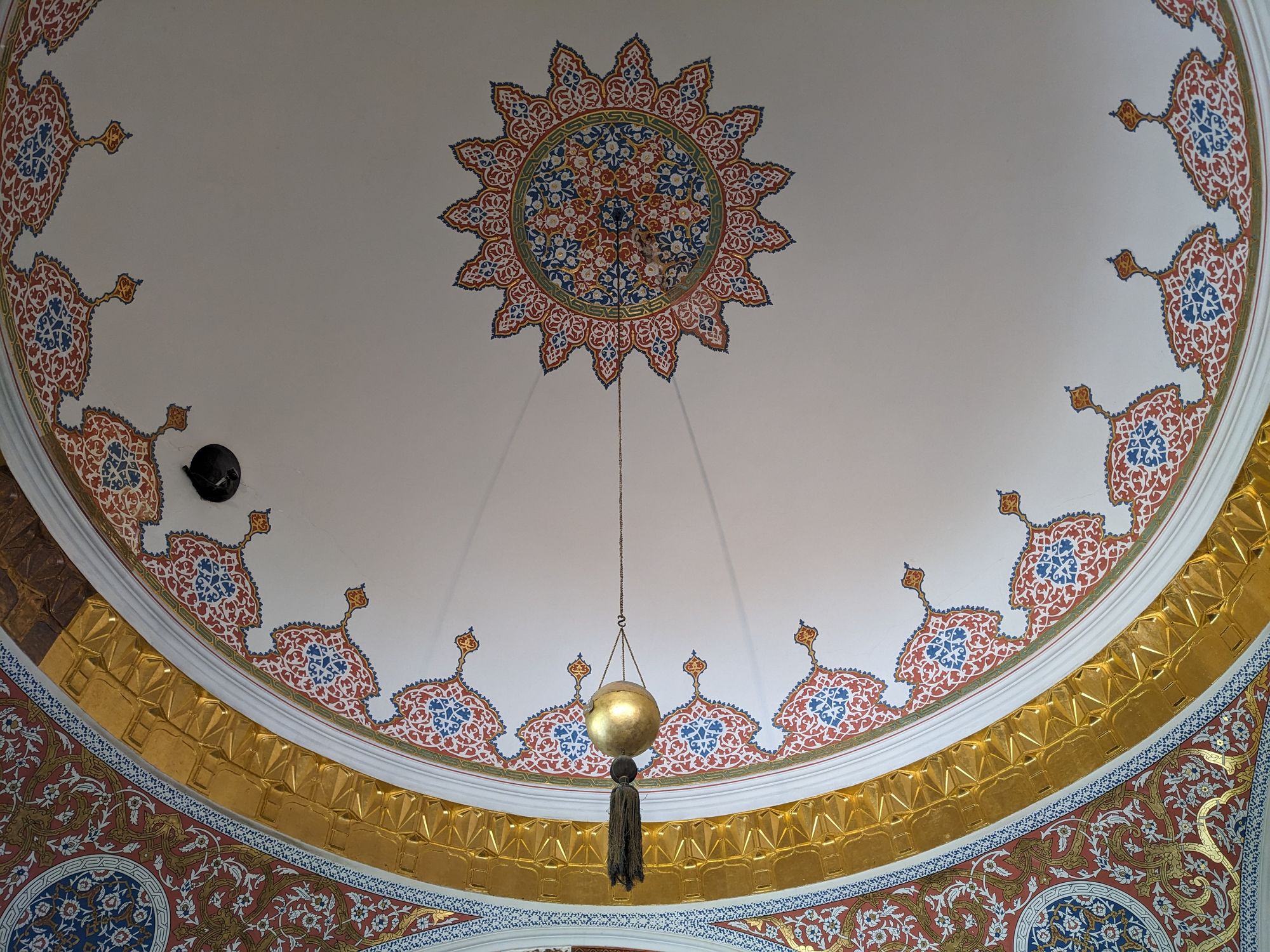
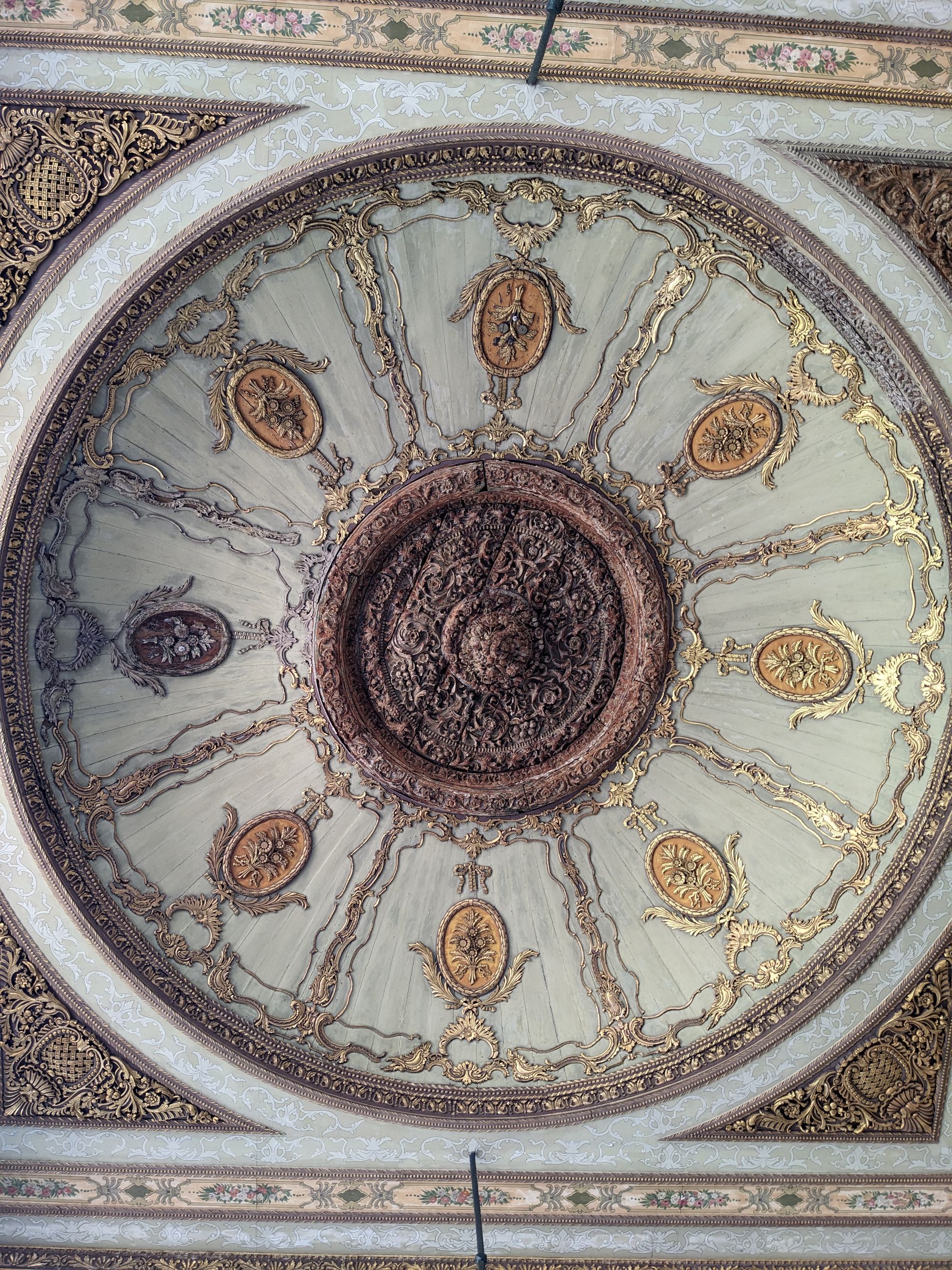
The Second Courtyard: This was the heart of the palace where the Sultan and his family lived. People entered the Second Courtyard through the Gate of Salutation, but only the Sultan was permitted to do so on horseback. The buildings of the Second Courtyard back onto the Sea of Marmara and the Bosphorus Strait.
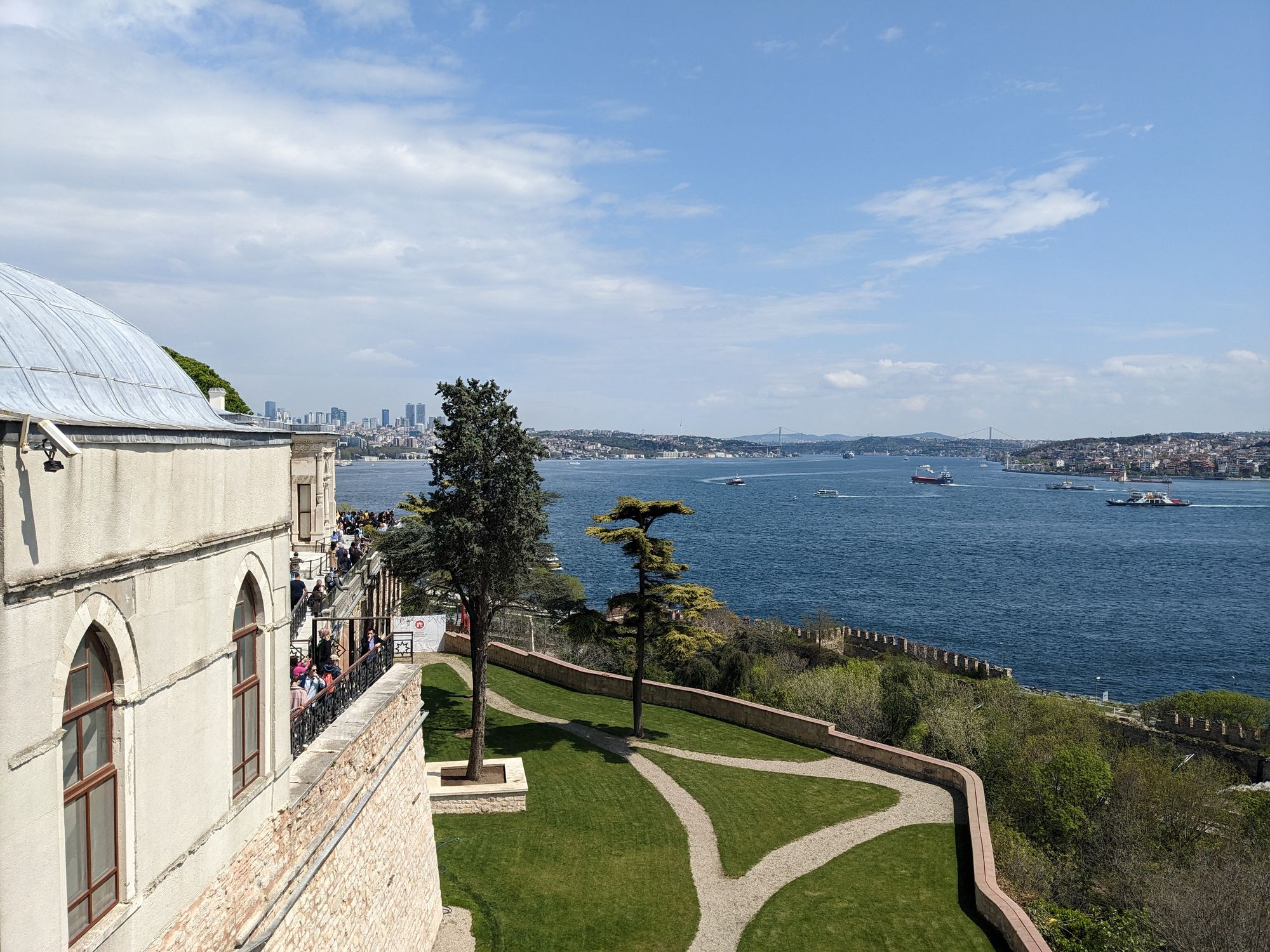
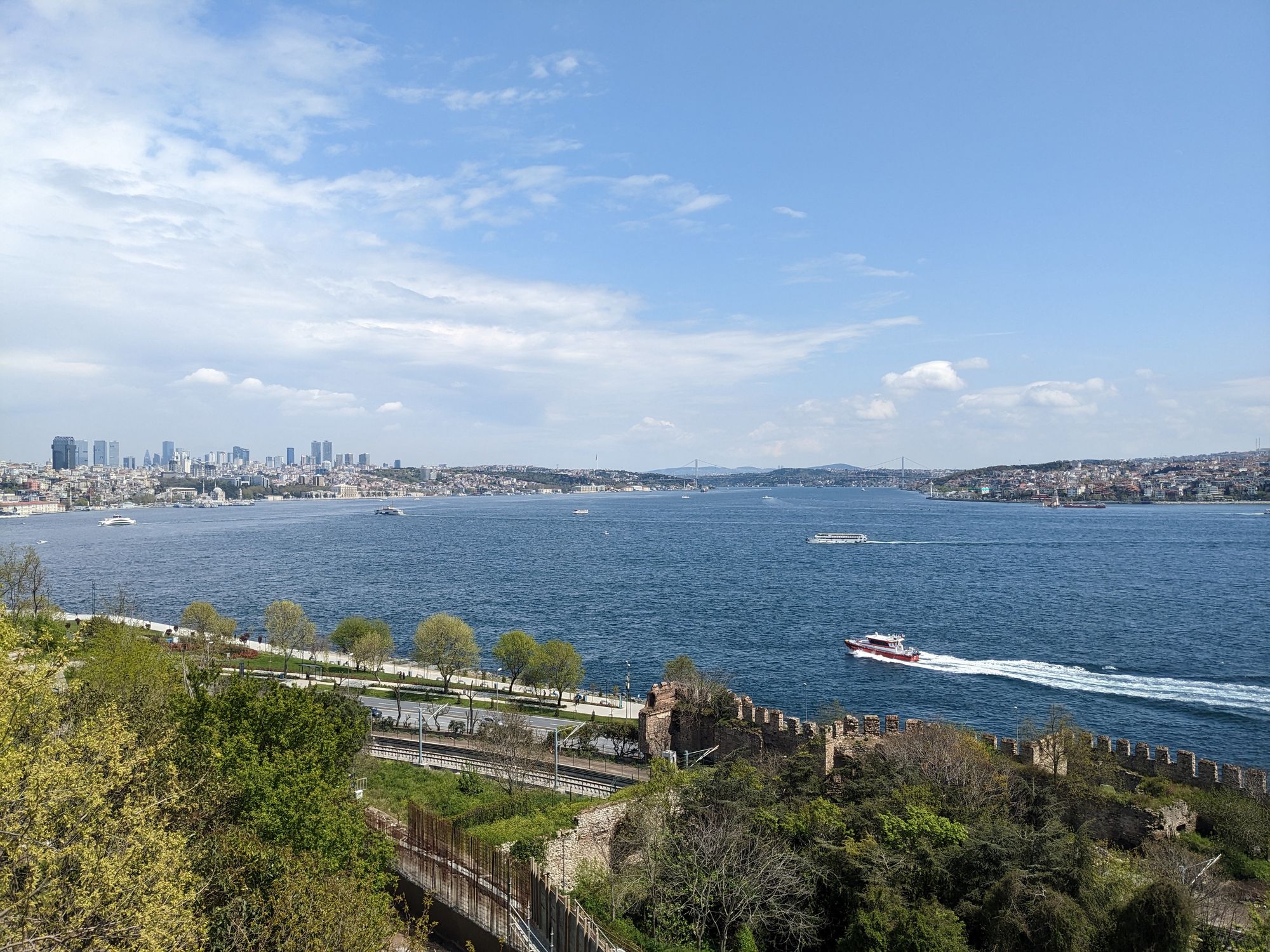
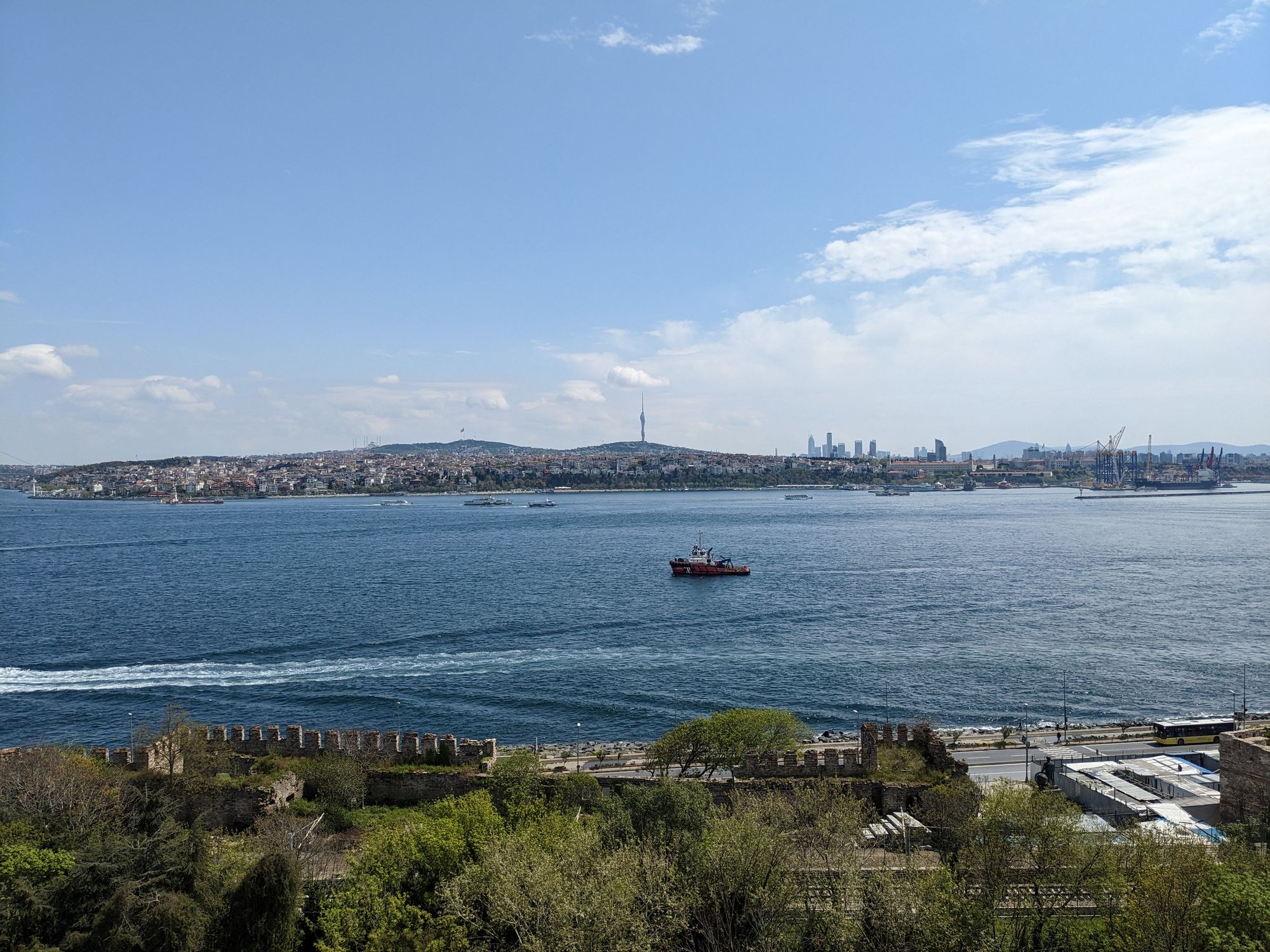
Basilica Cistern
After the Topkapi Palace we doubled back past the Hagia Sofia to the Basilica Cistern ("Subterranean Palace"). The Cistern was built by the Romans on the site of a former Basilica for Constantinople to draw its drinking water.
Like Hagia Sofia, the Cistern featured in the Bond film From Russia with Love. Although the film depicted the Cistern as being under the Russian embassy, in reality they're 2.2km apart. Nowadays the Cistern is an atmospheric chamber of art pieces, including old roman statues and contemporary light installations.
In the northwest of the Cistern in particular there are two columns with the face of Medusa in their base. These may be repurposed columns from elsewhere in the city - it's not clear. The heads are said to be rotated sideways to nullify the Gorgons' ability to turn one into stone.
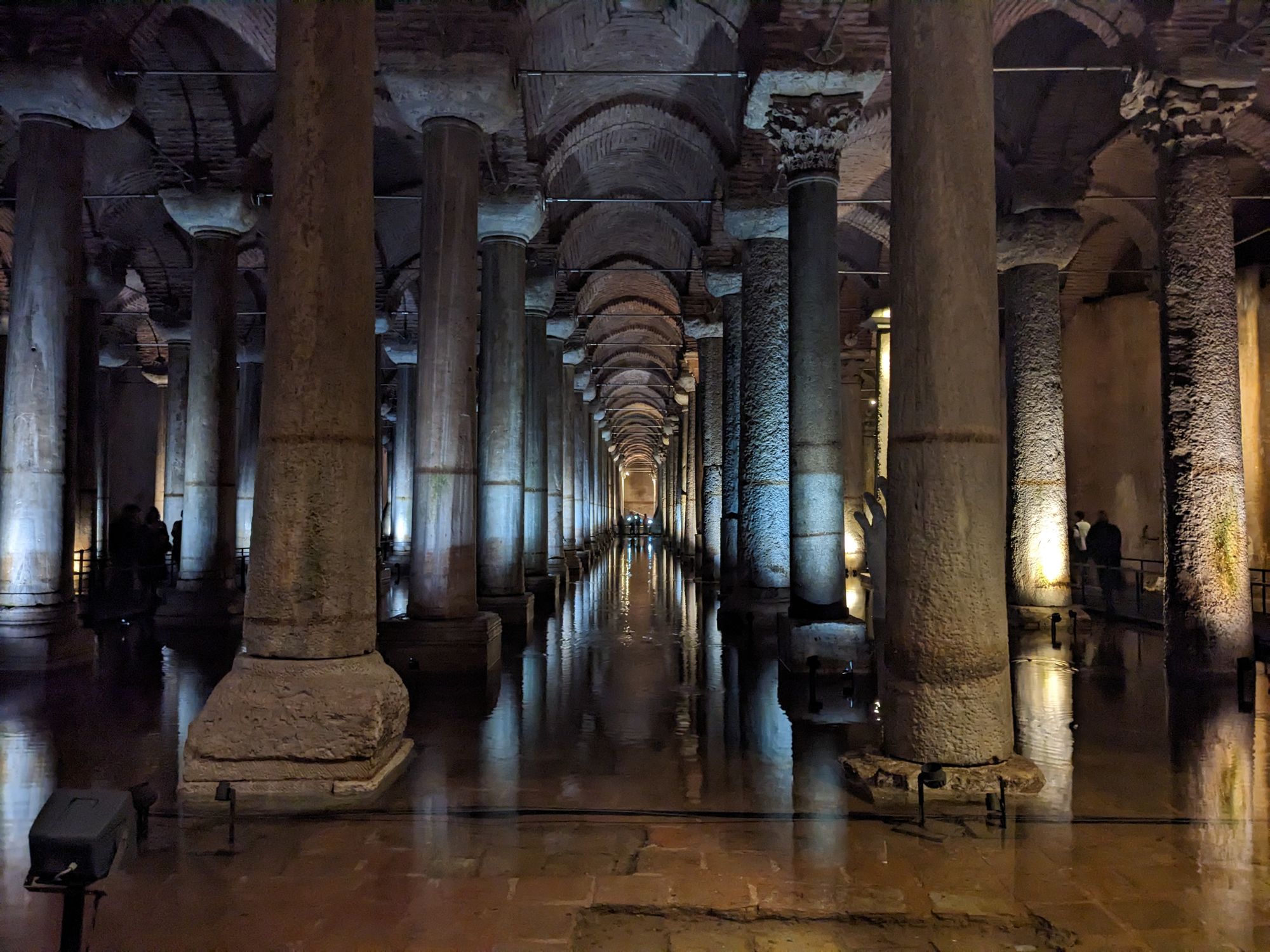
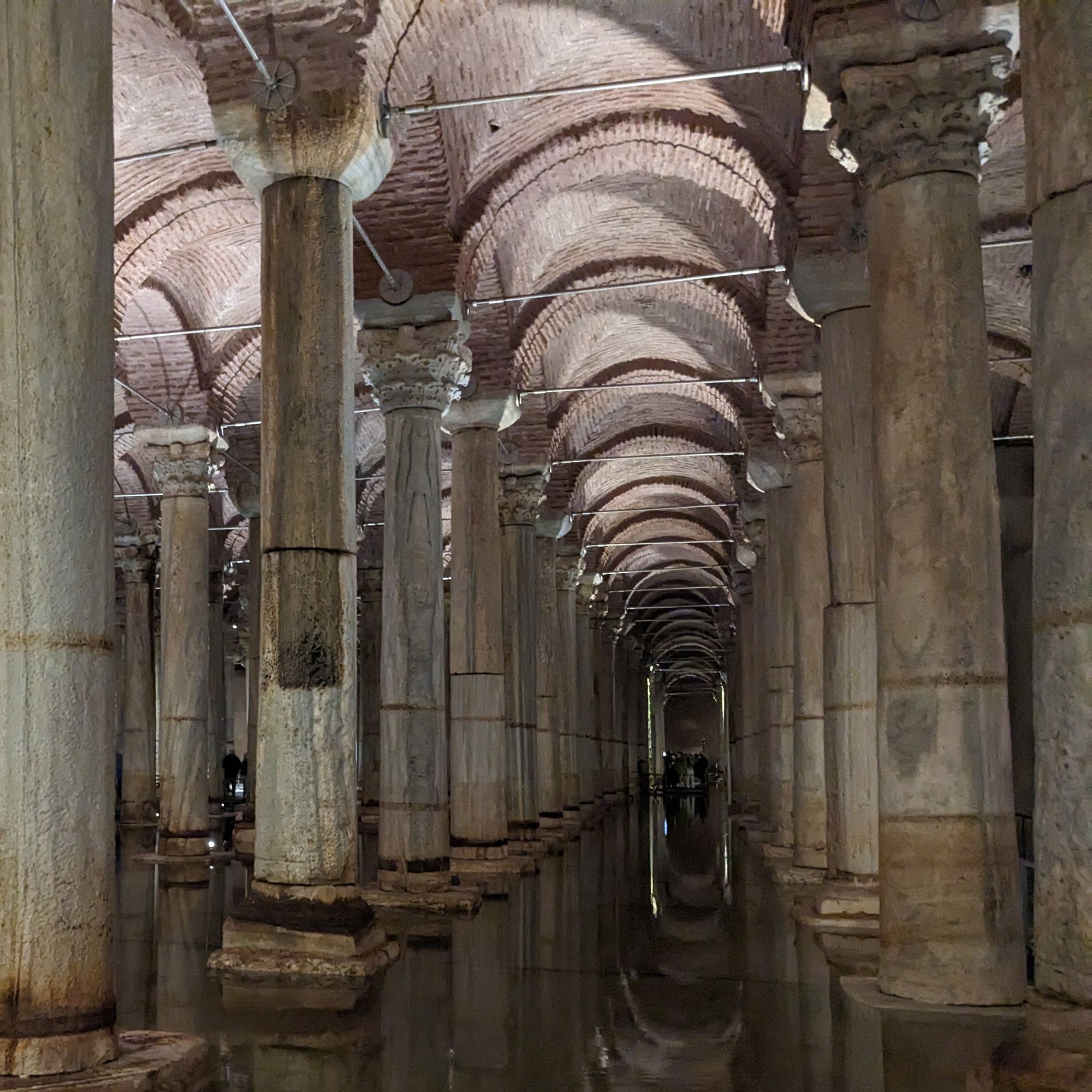
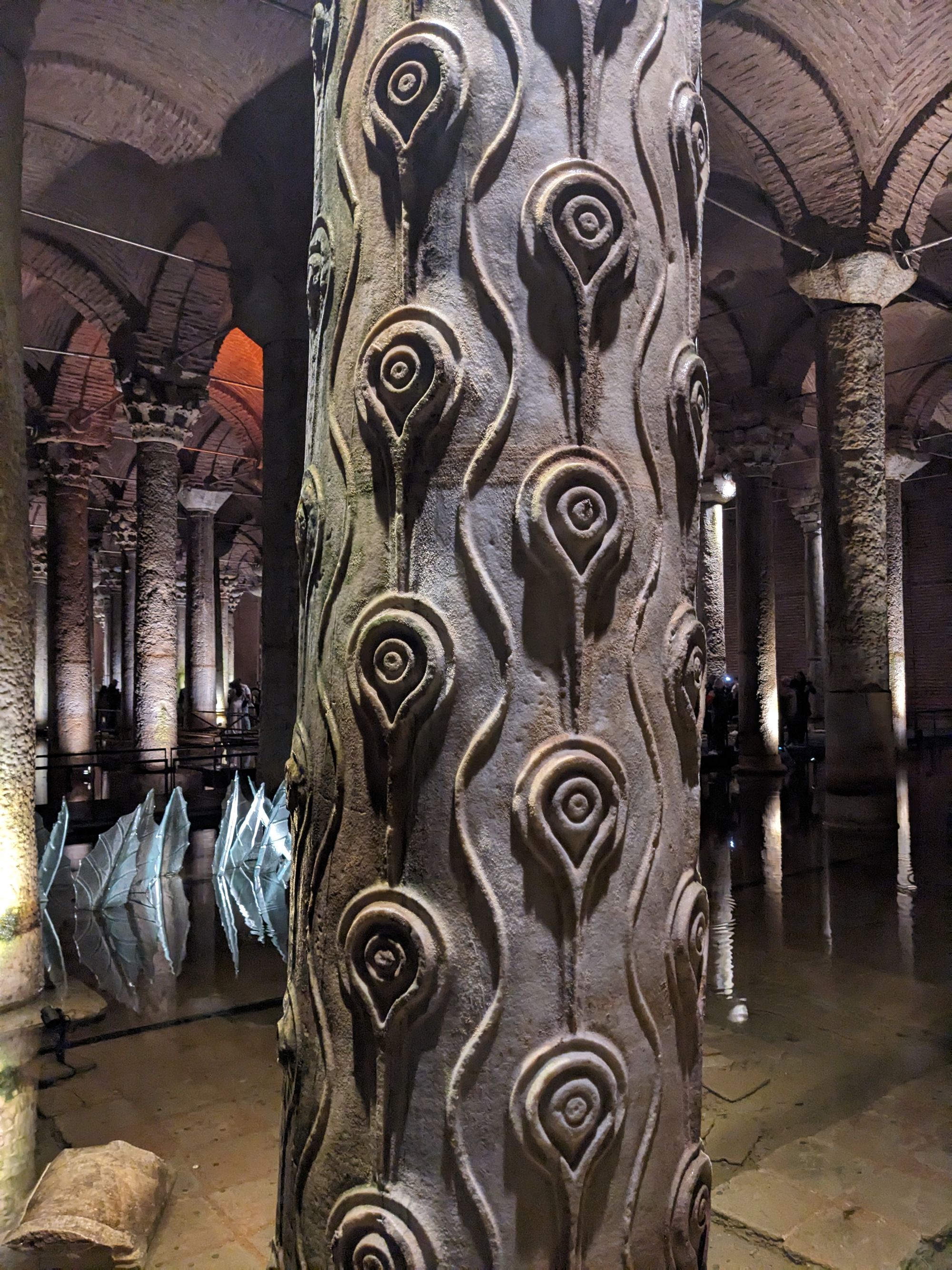
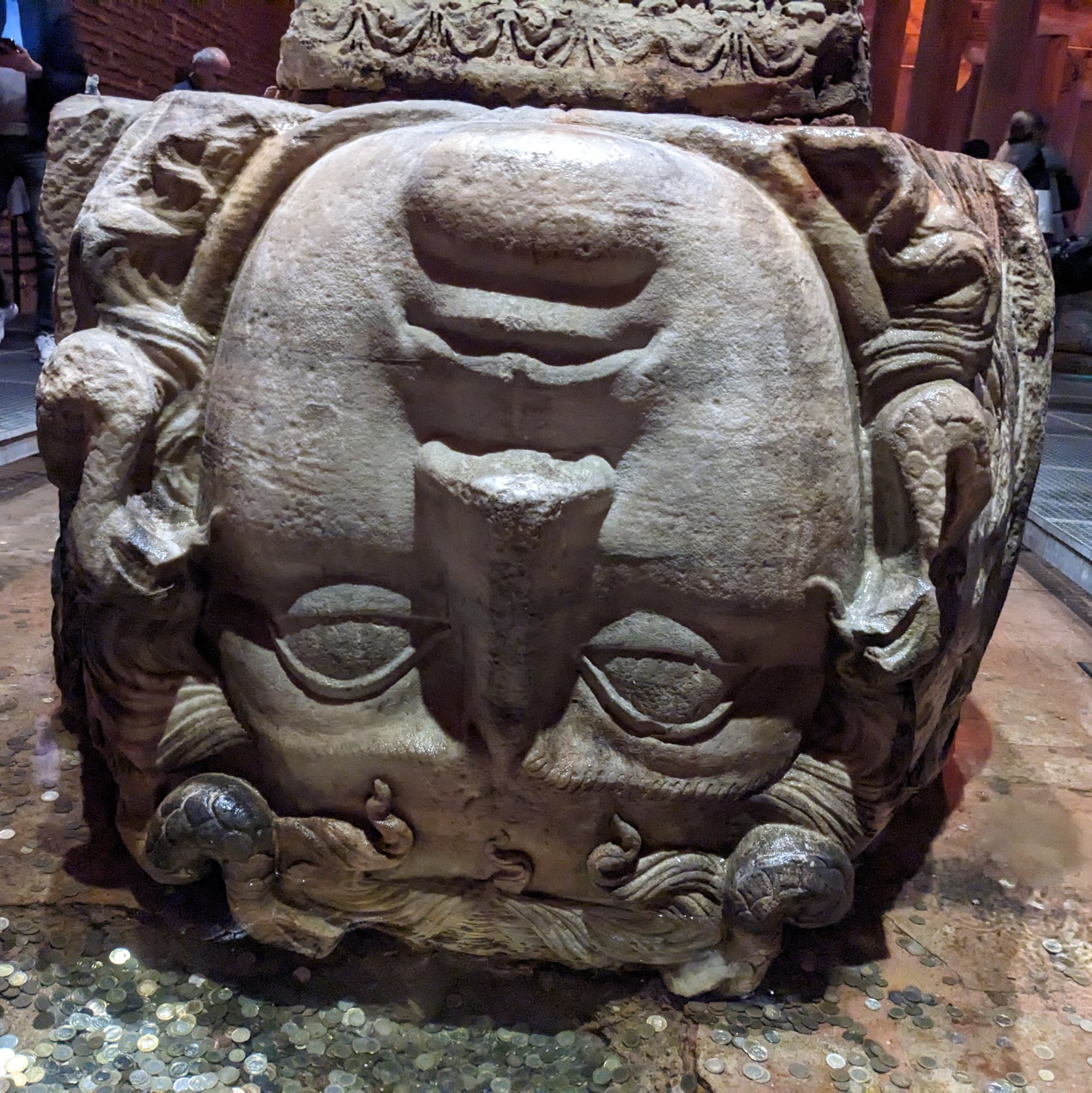
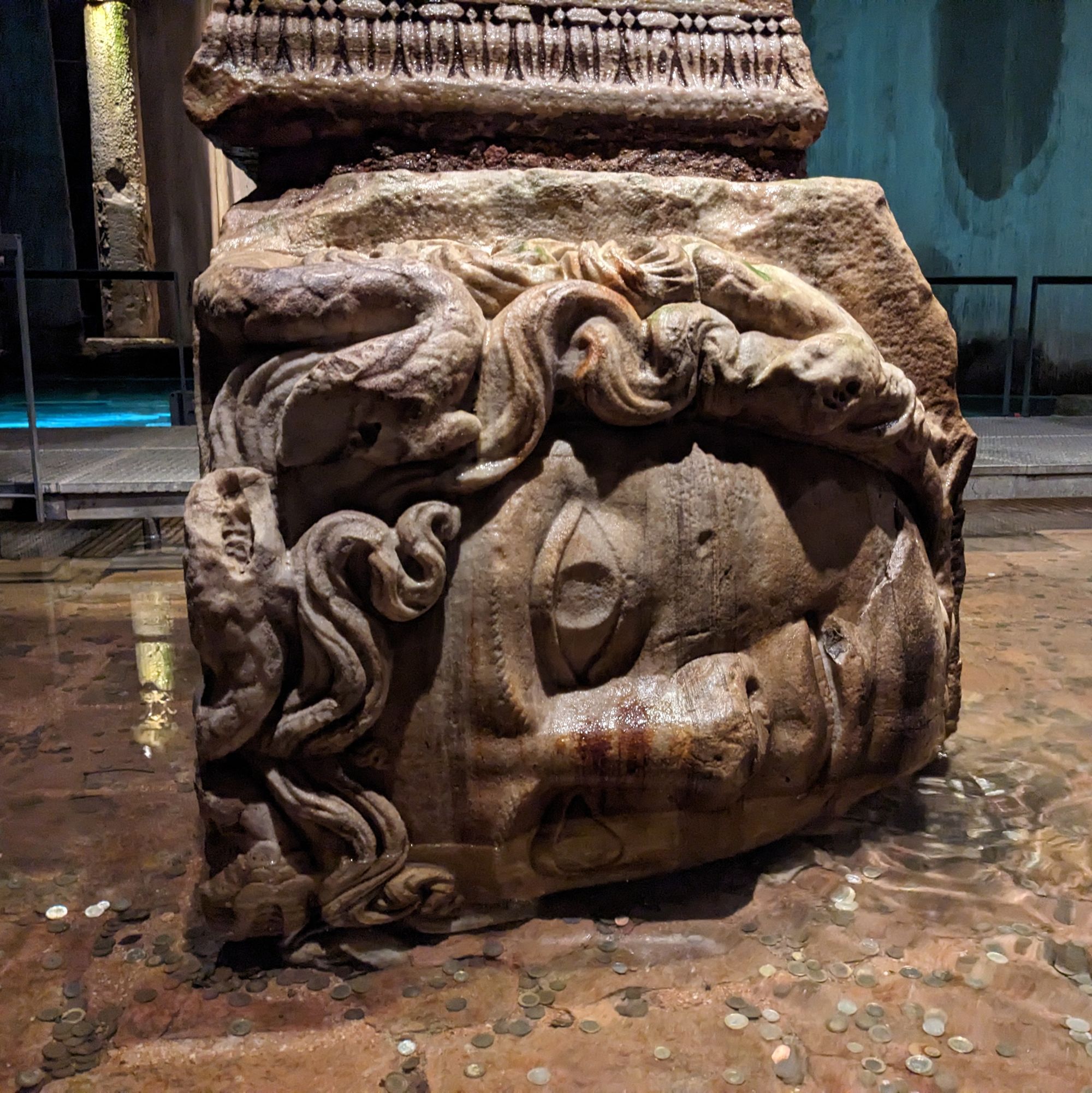
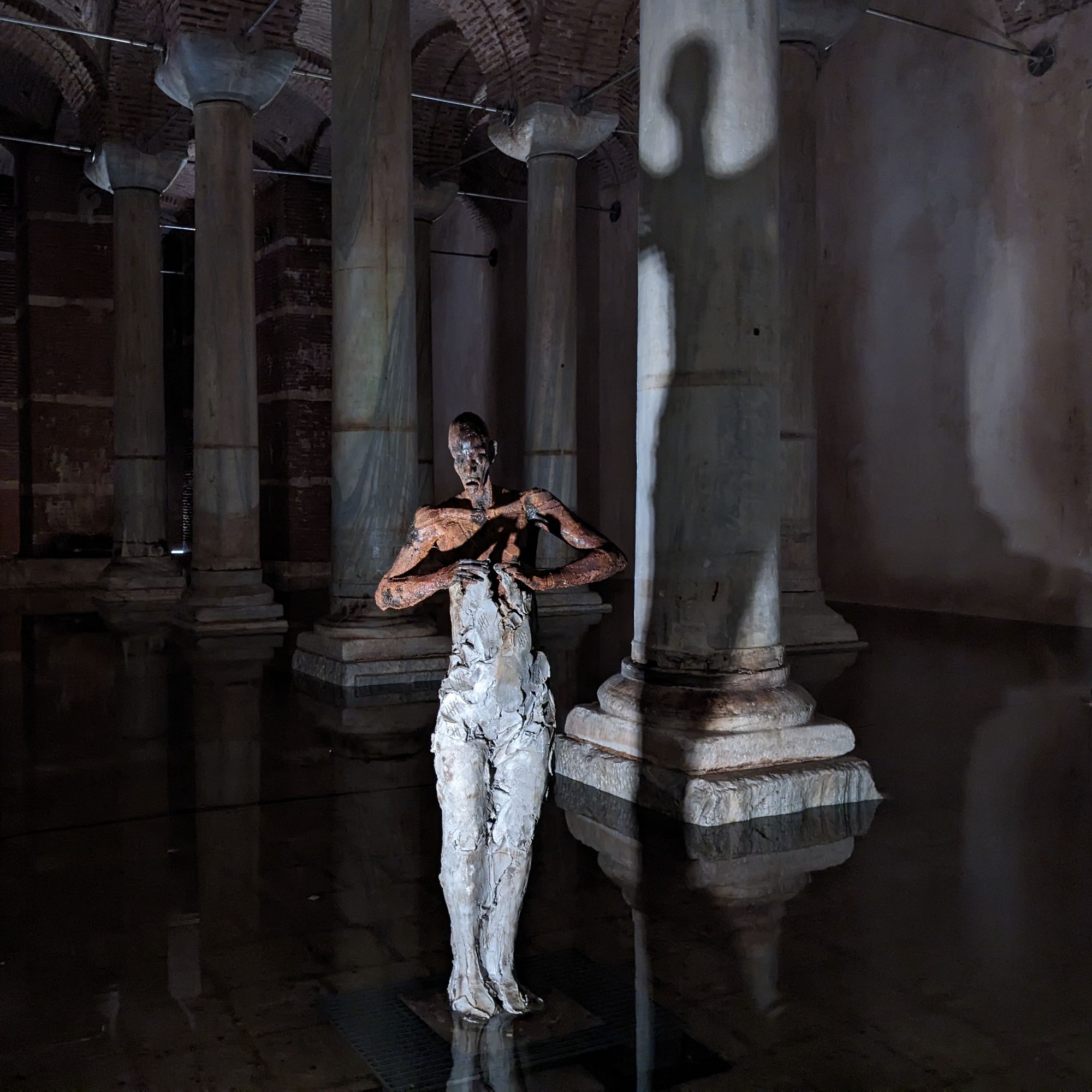
Former Hippodrome
In Roman times, the people of Constantinople were mad for chariot racing. Spectators belonged to on of two irreconcilable teams: the Greens and the Blues.
Races at the Hippodrome revolved around ornate columns that divided the track. In the Constantinople Hippodrome, one such column was the Four Horses of St Mark. This column was stolen by the Venetians in 1204, stolen again by Napoleon in 1797 who used them for the Arc de Triumph, then returned to Venice in 1815 and placed in St Mark's Square where they remain to this day.
The Constantinople Hippodrome was never destroyed, but fell into ruin through neglect and disuse. Residents took stone from the circus to supply local construction projects. The columns are the only remaining feature of the old Hippodrome. The ruins were built over to create the Sultanahmet Square, which was a few meters above the Hippodrome level, so the columns today are situated in pits below pedestrian level.
At the north end of Sultanahmet Square is the Alman Çeşmesi, the 'German Fountain', built by the German Government ahead of Kaiser Wilhelm II's visit to Istanbul in 1898.
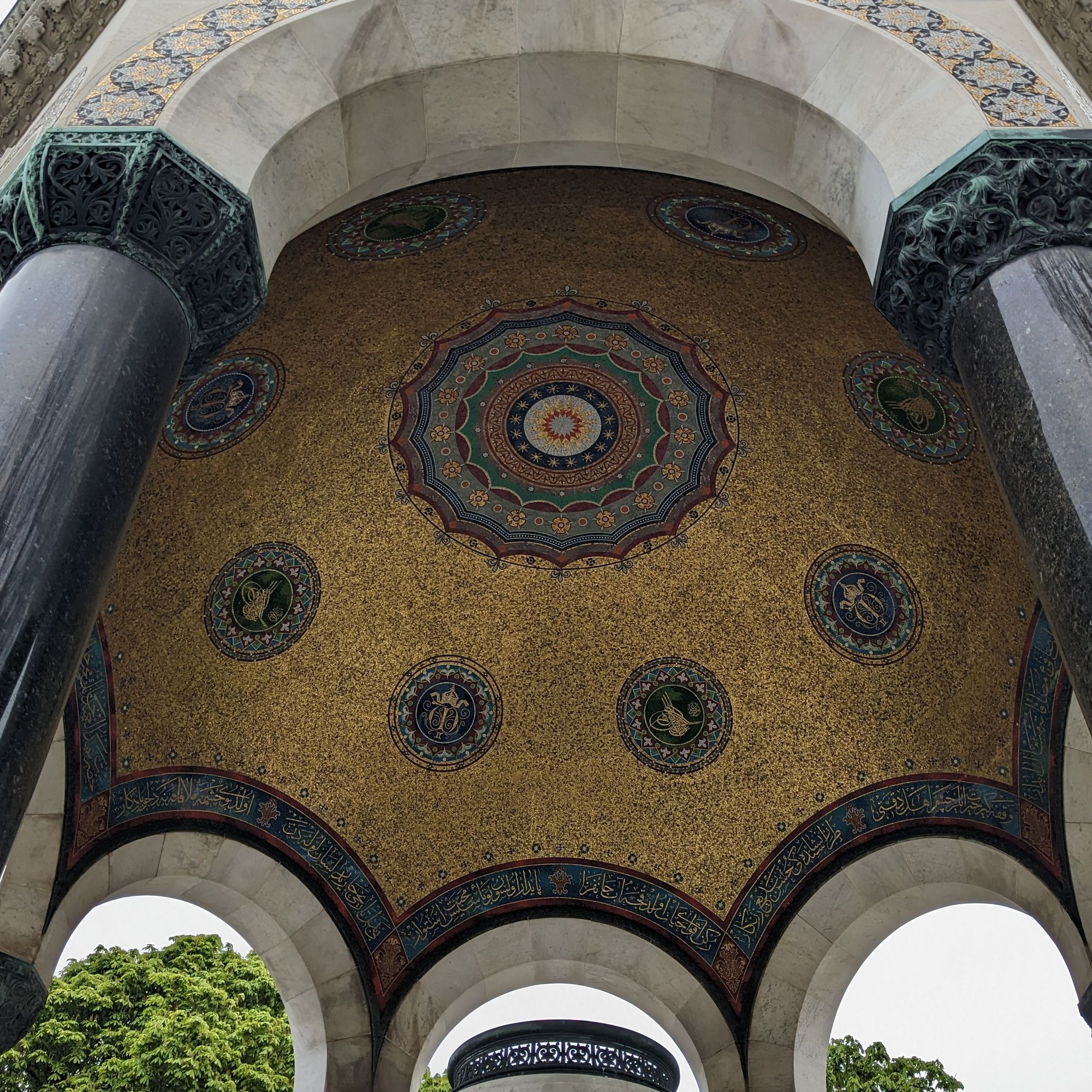
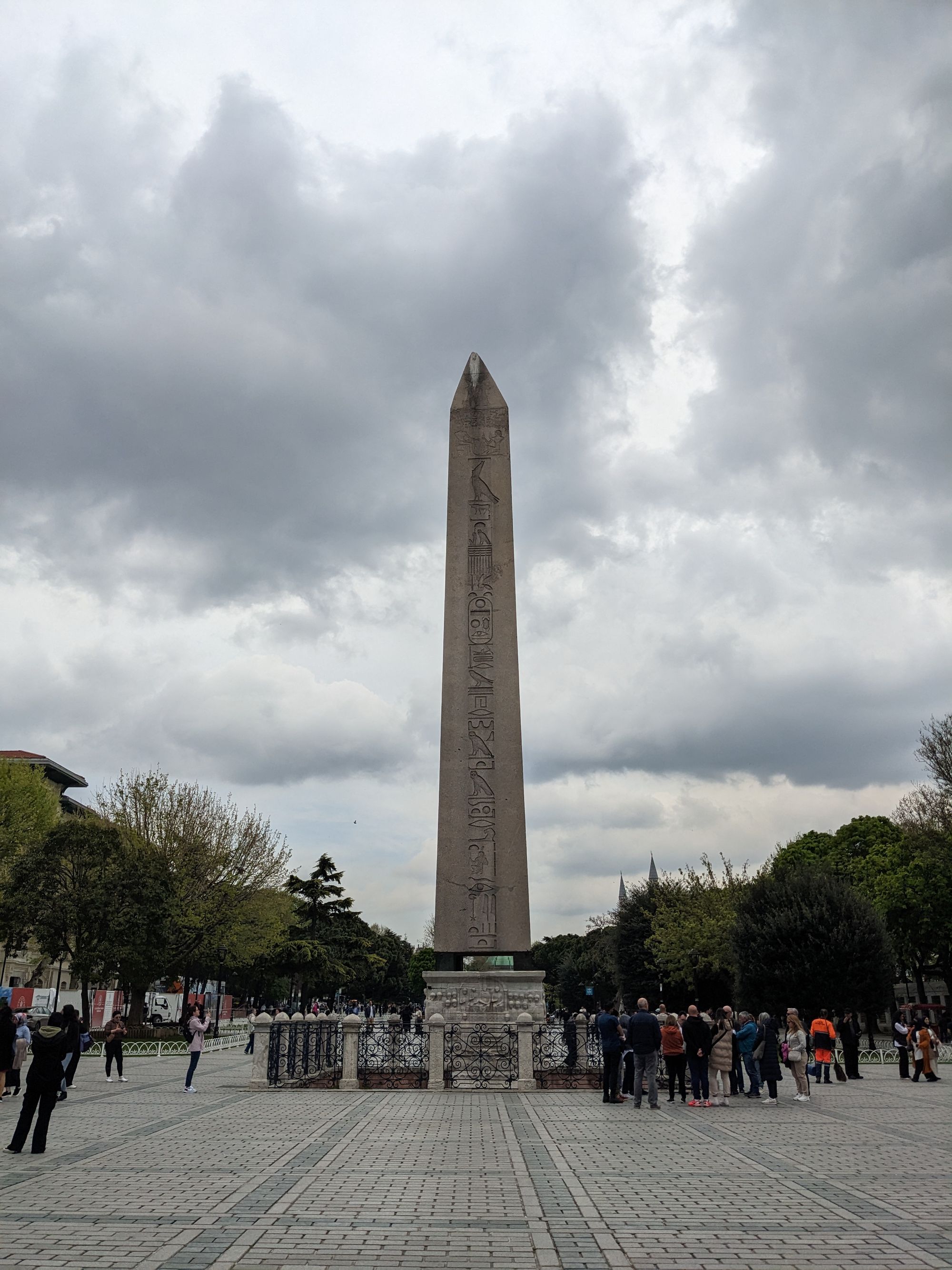
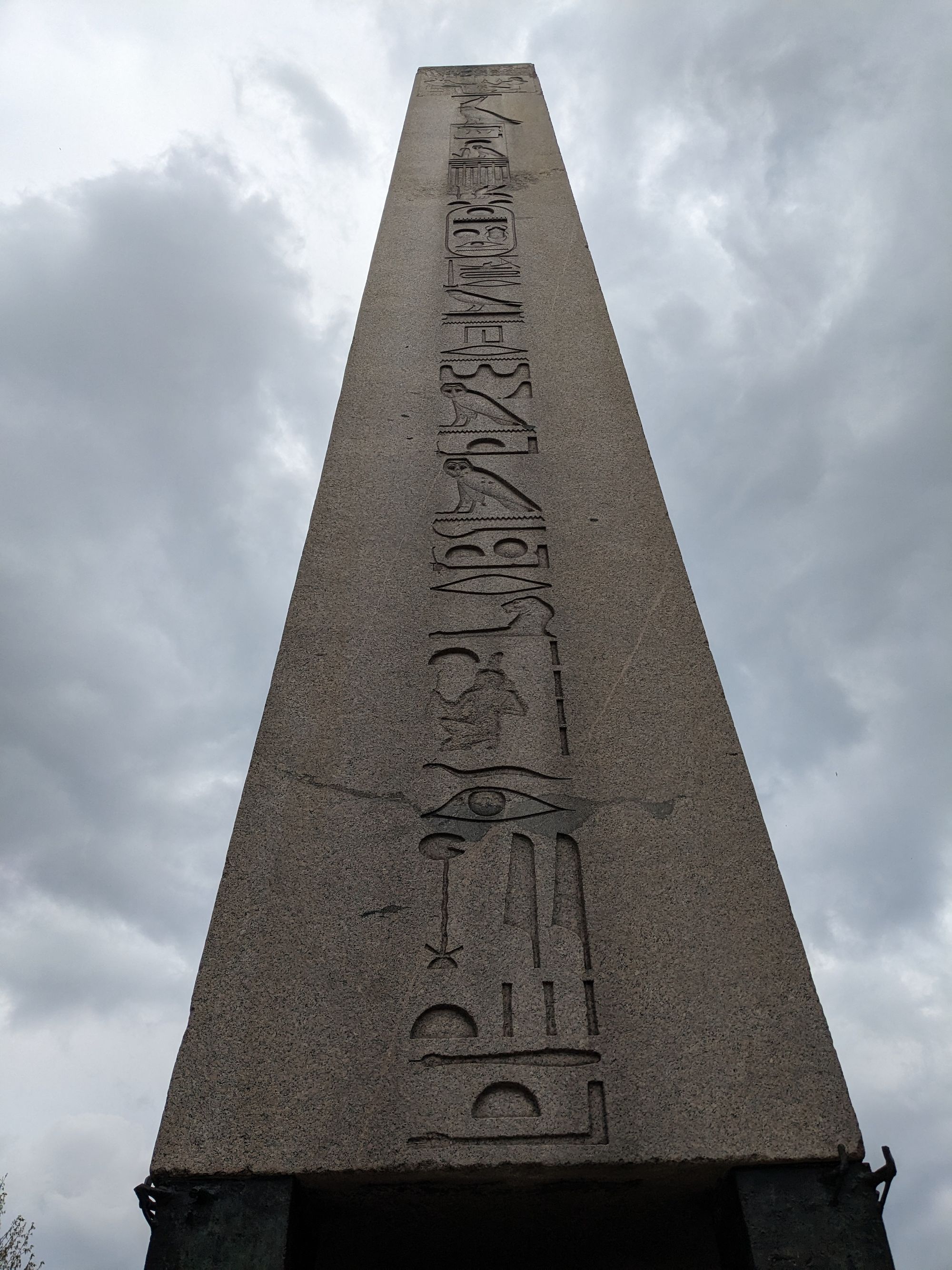
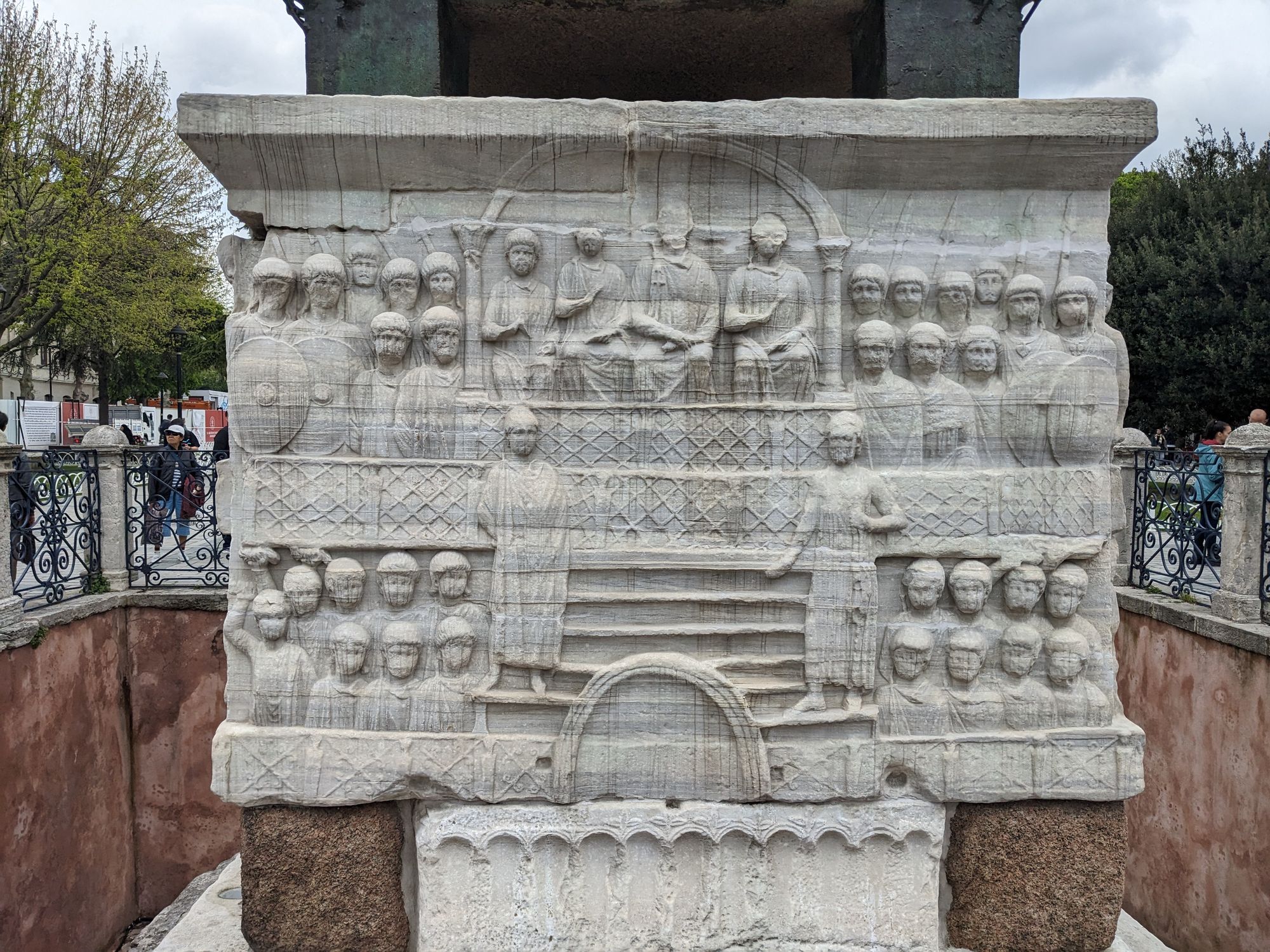
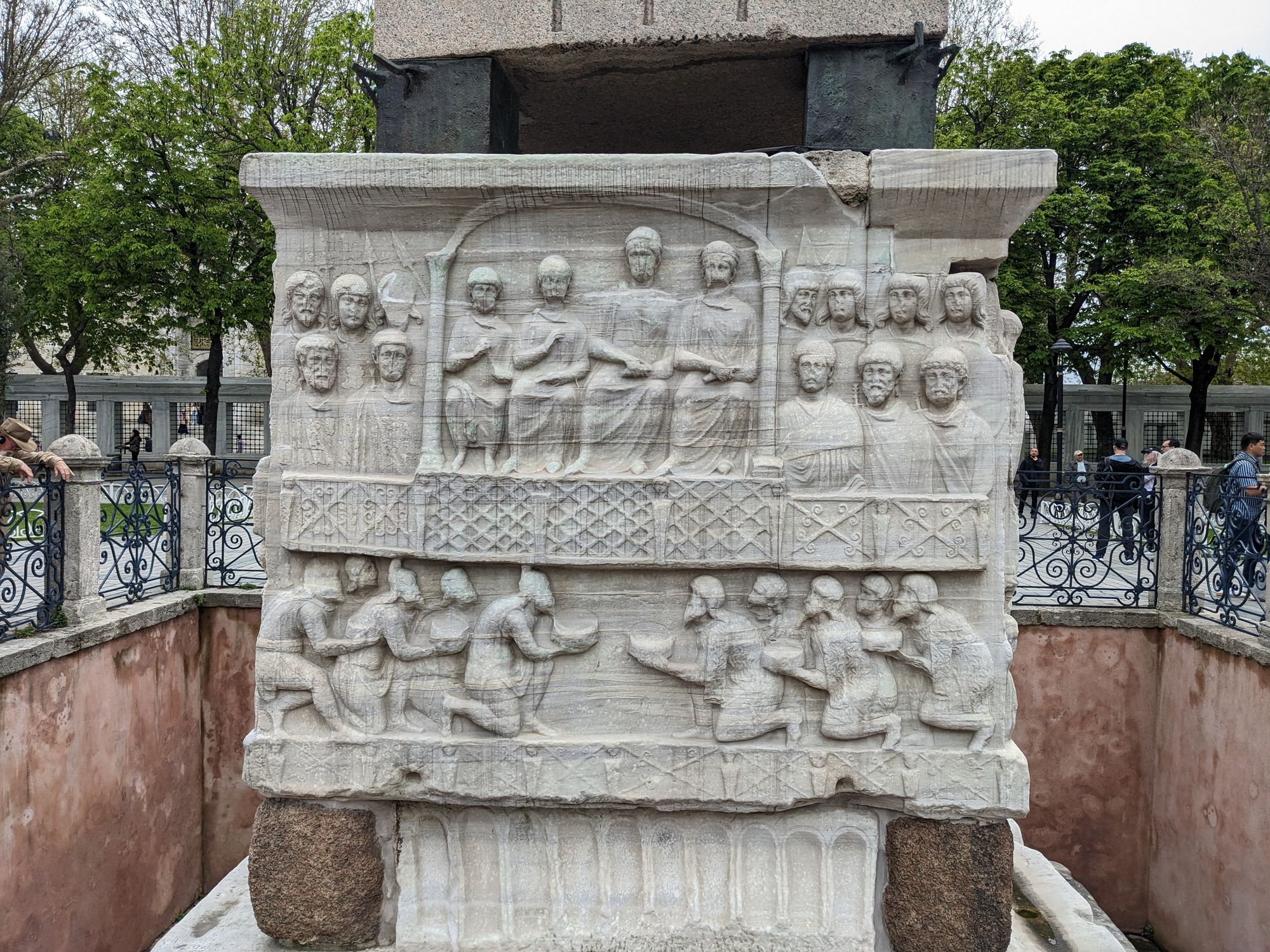
Blue Mosque
East of Sultanahmet Square is the Blue Mosque. To pass from the Square to the mosque one must pass through a gate where a heavy chain hangs. If you don't duck your head beneath the chain to pass you will get a pretty rough knock. This is deliberate so that everyone who passes onto the grounds of the Blue Mosque bows as they do so.
The Blue Mosque was built by Sultan Ahmed in 1616 who had a fixation for the number fourteen. Ahmed was the fourteenth Ottoman Sultan; he became Sultan when he was fourteen years old; and, little did Ahmed realise he would reign as Sultan for fourteen years.
Curiously, the Blue Mosque has six minarets. Mosques normally have four, two or one minaret, depending on the prestige of its benefactor, with two to three rings around each minaret. However, the Blue Mosque has six minarets purely so that the number of rings around the minarets adds up to fourteen. Aha!
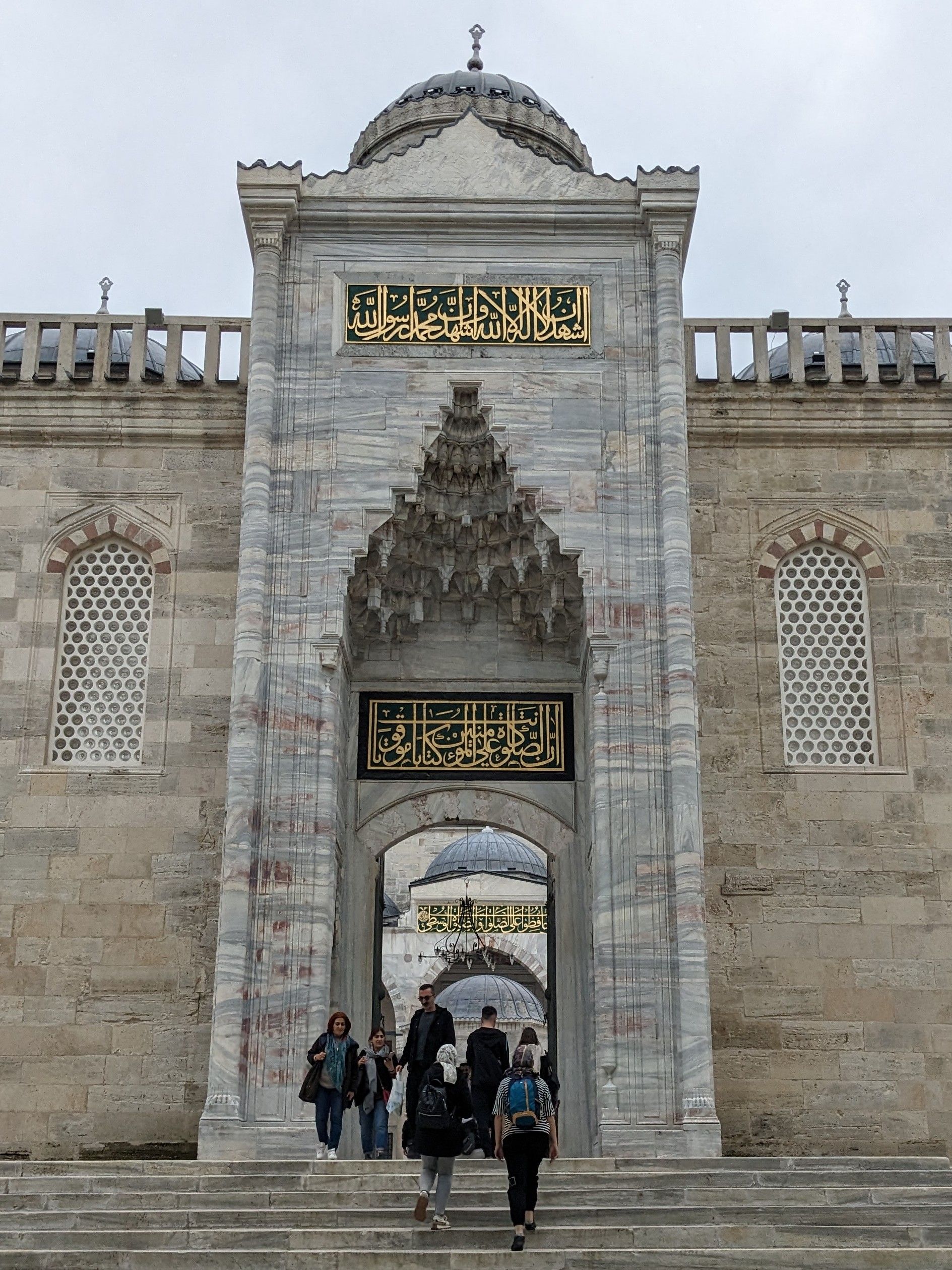
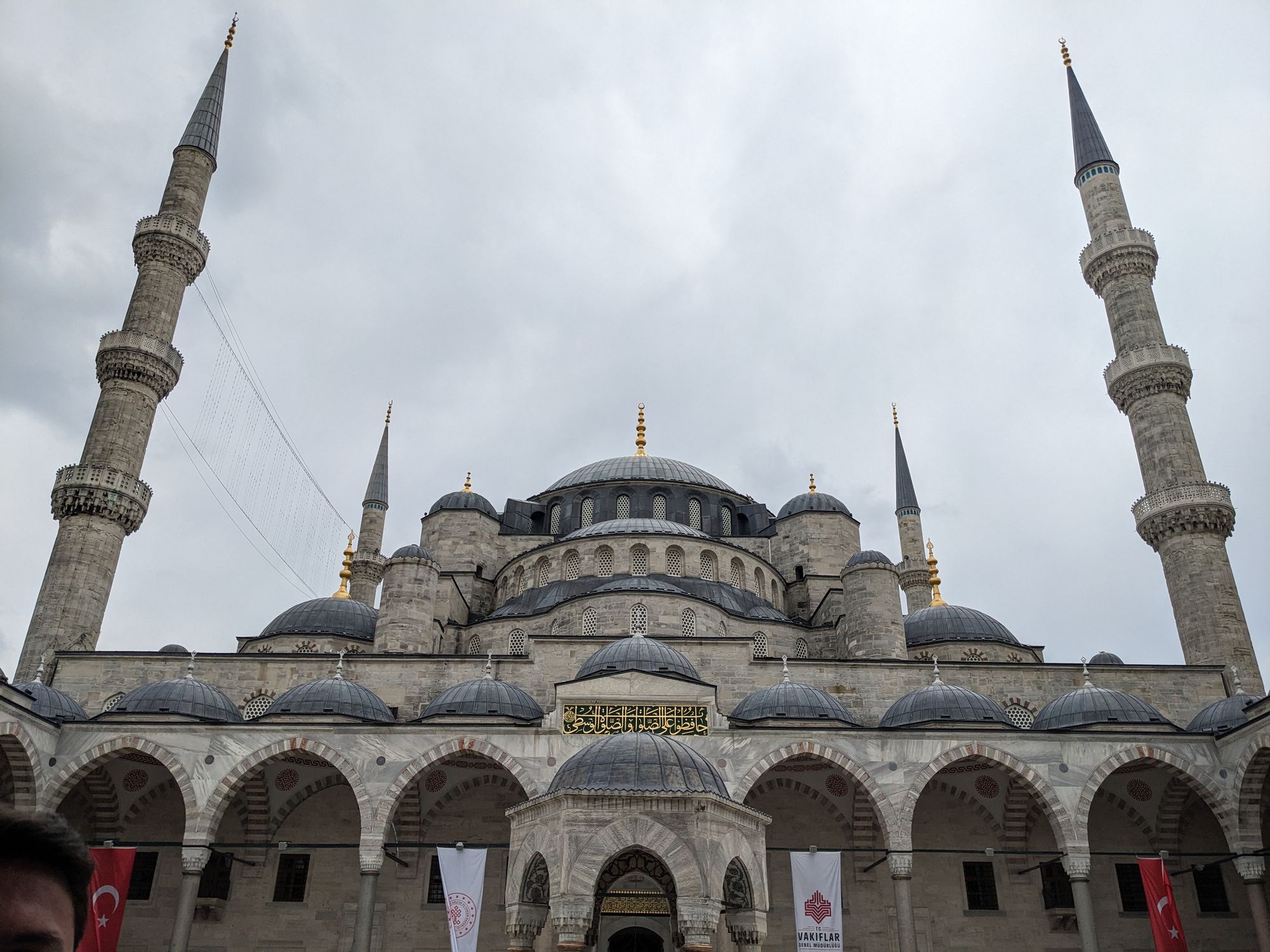
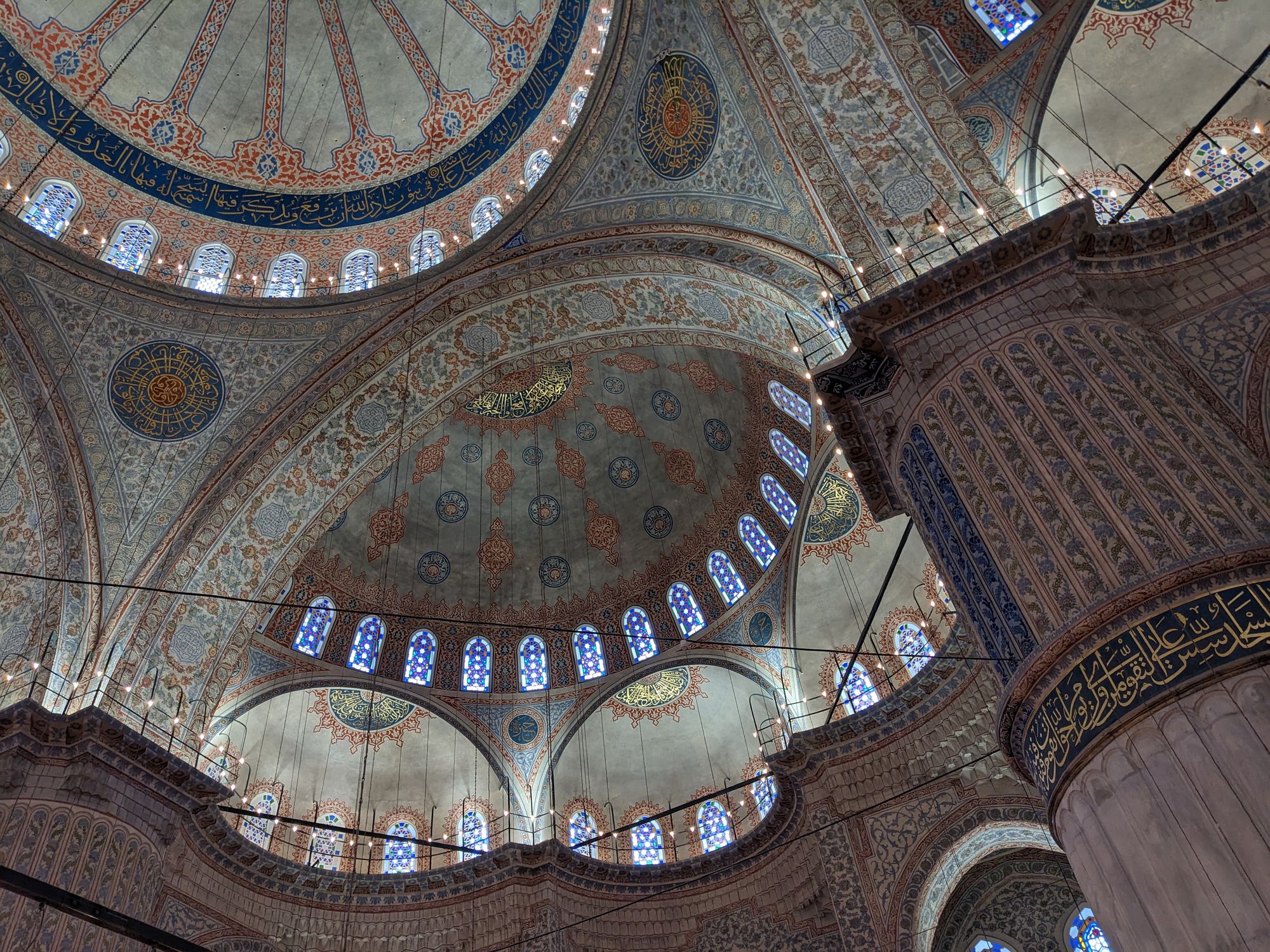
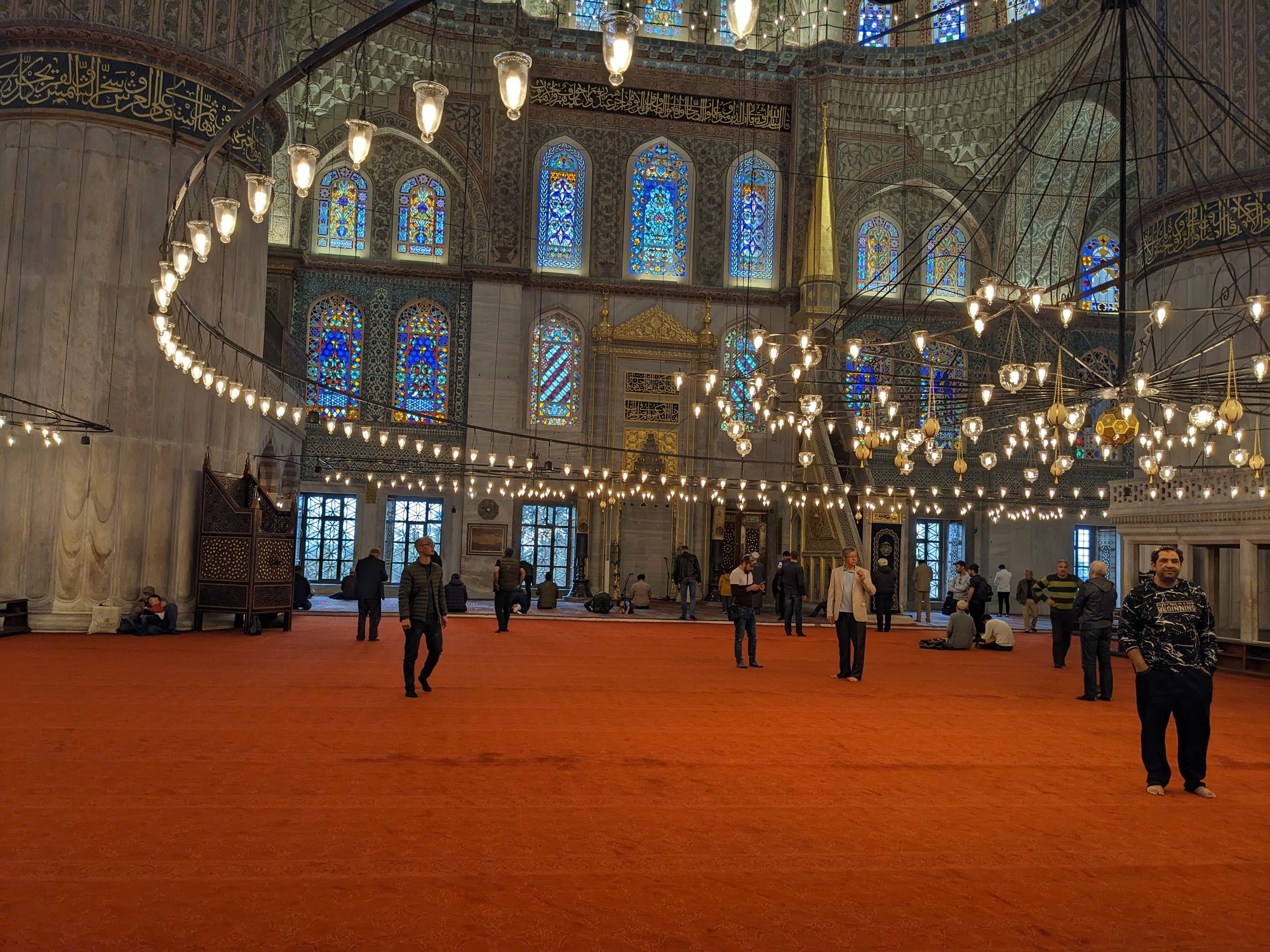
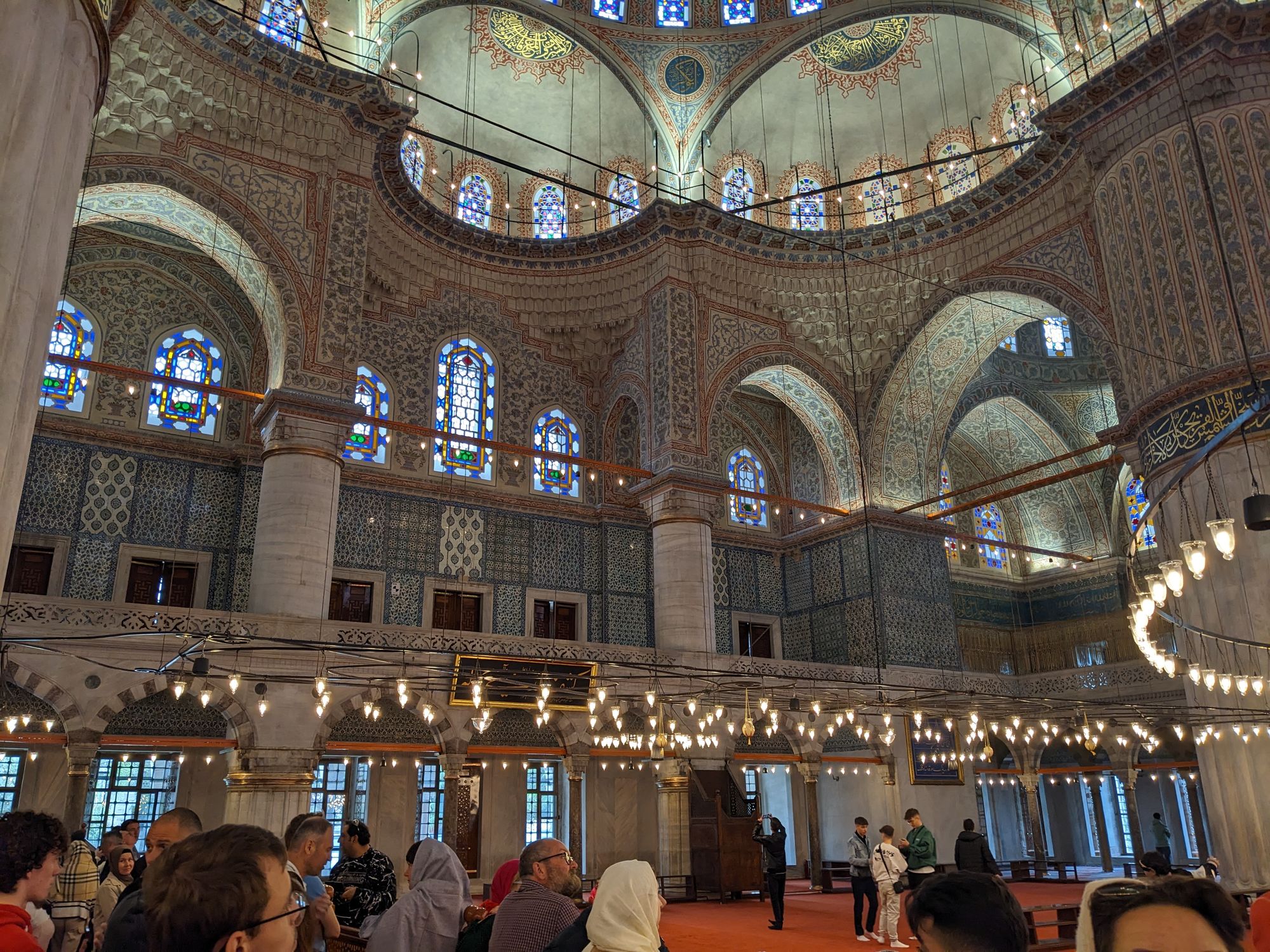
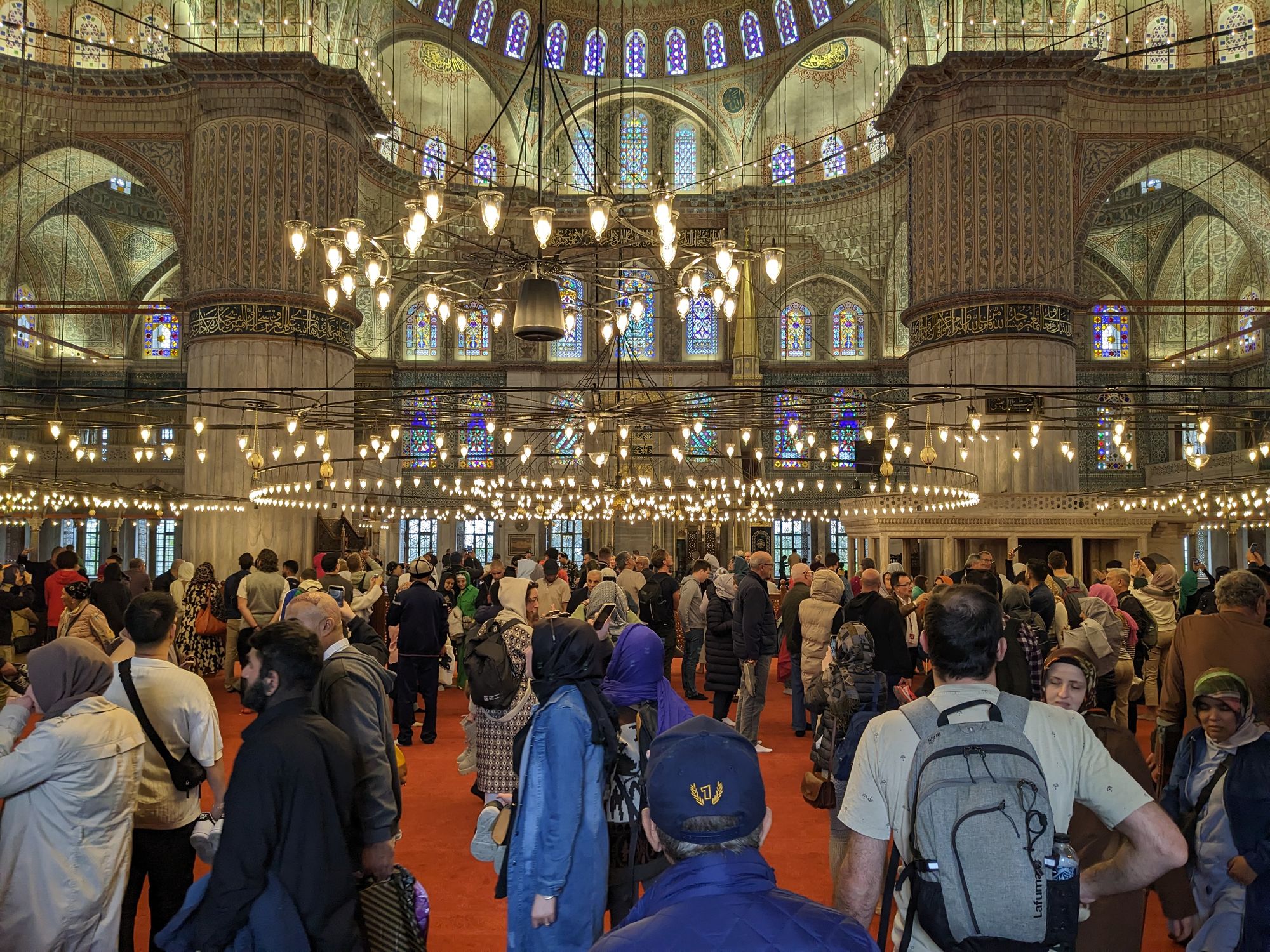
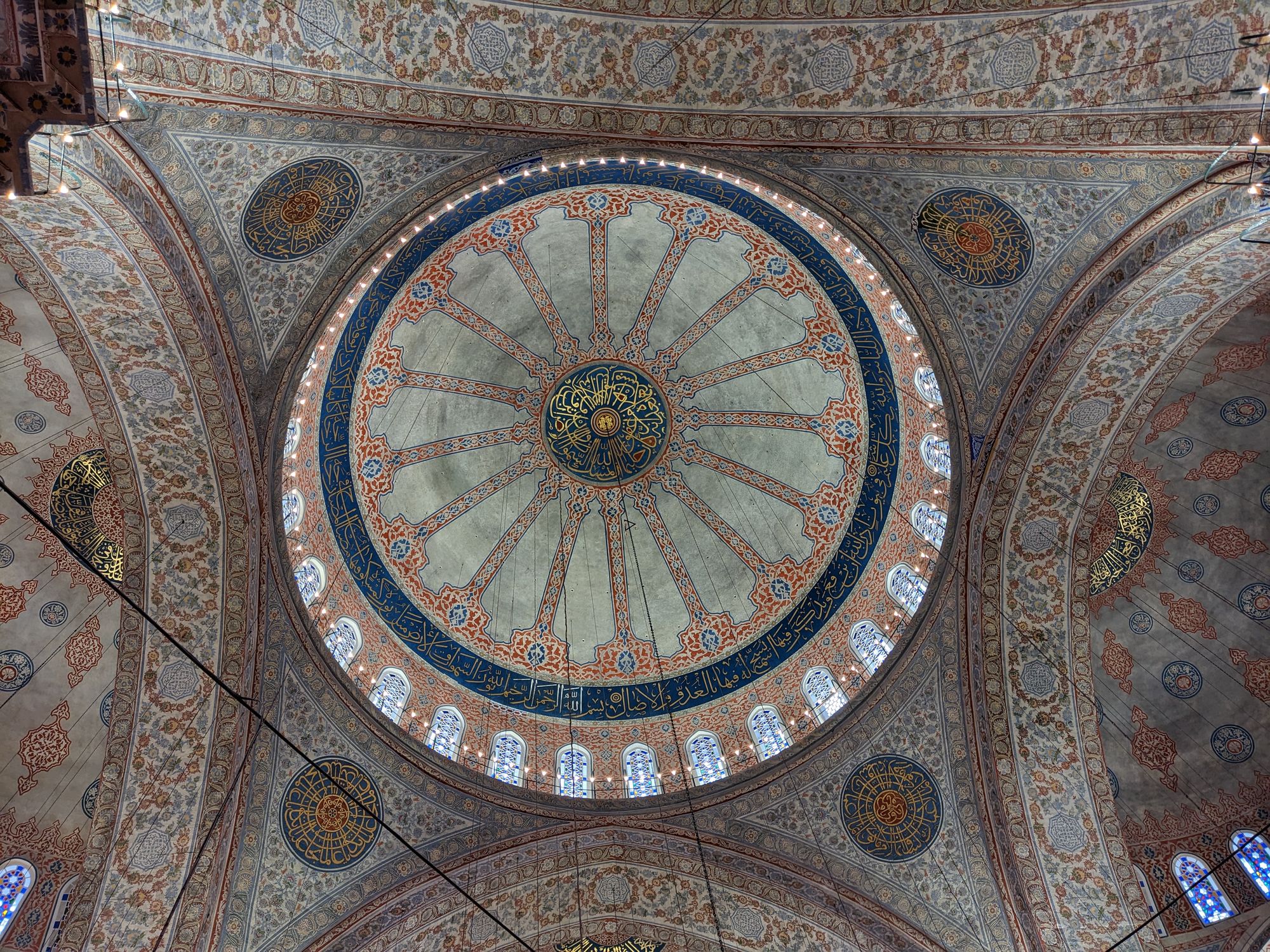
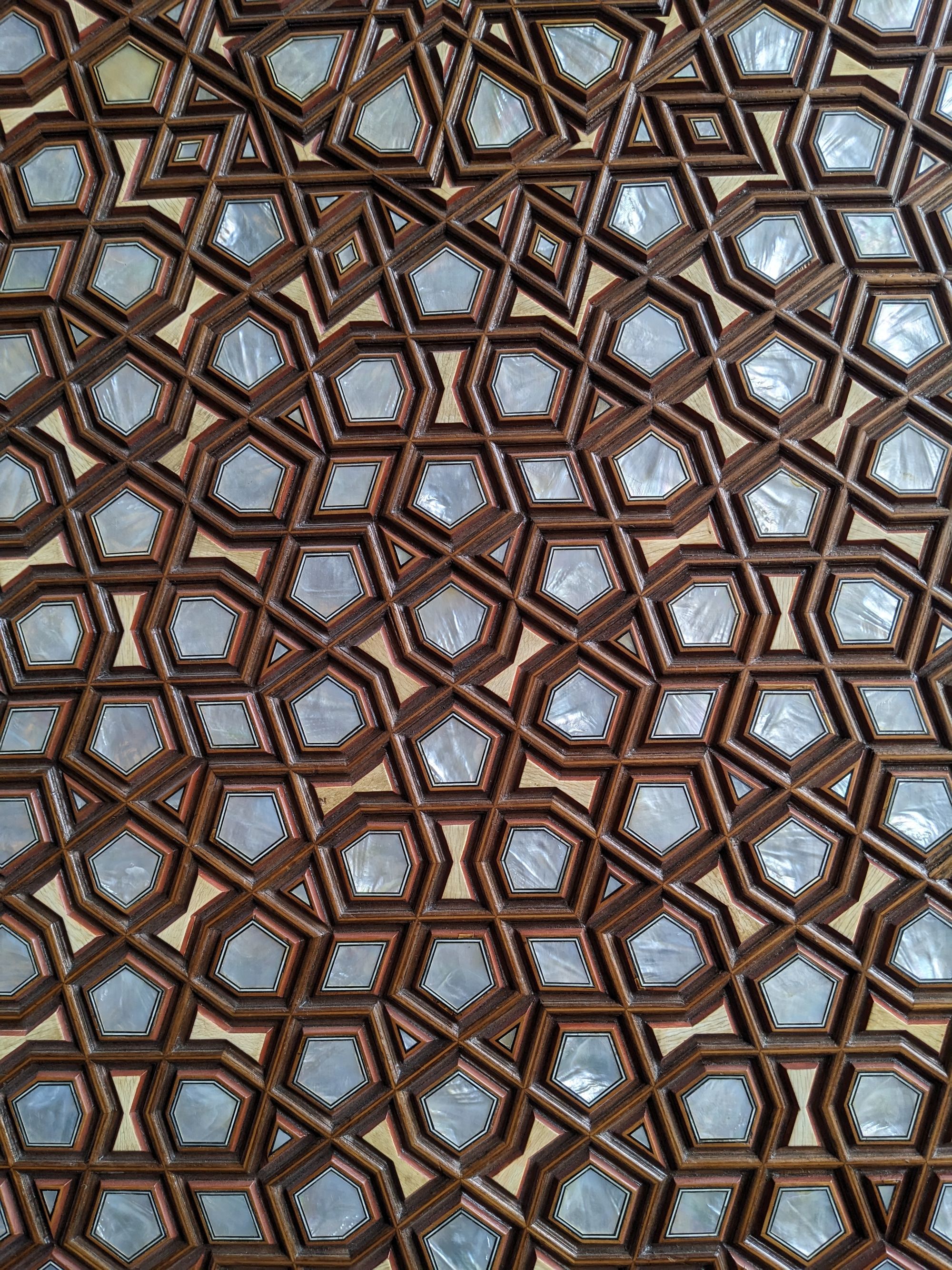
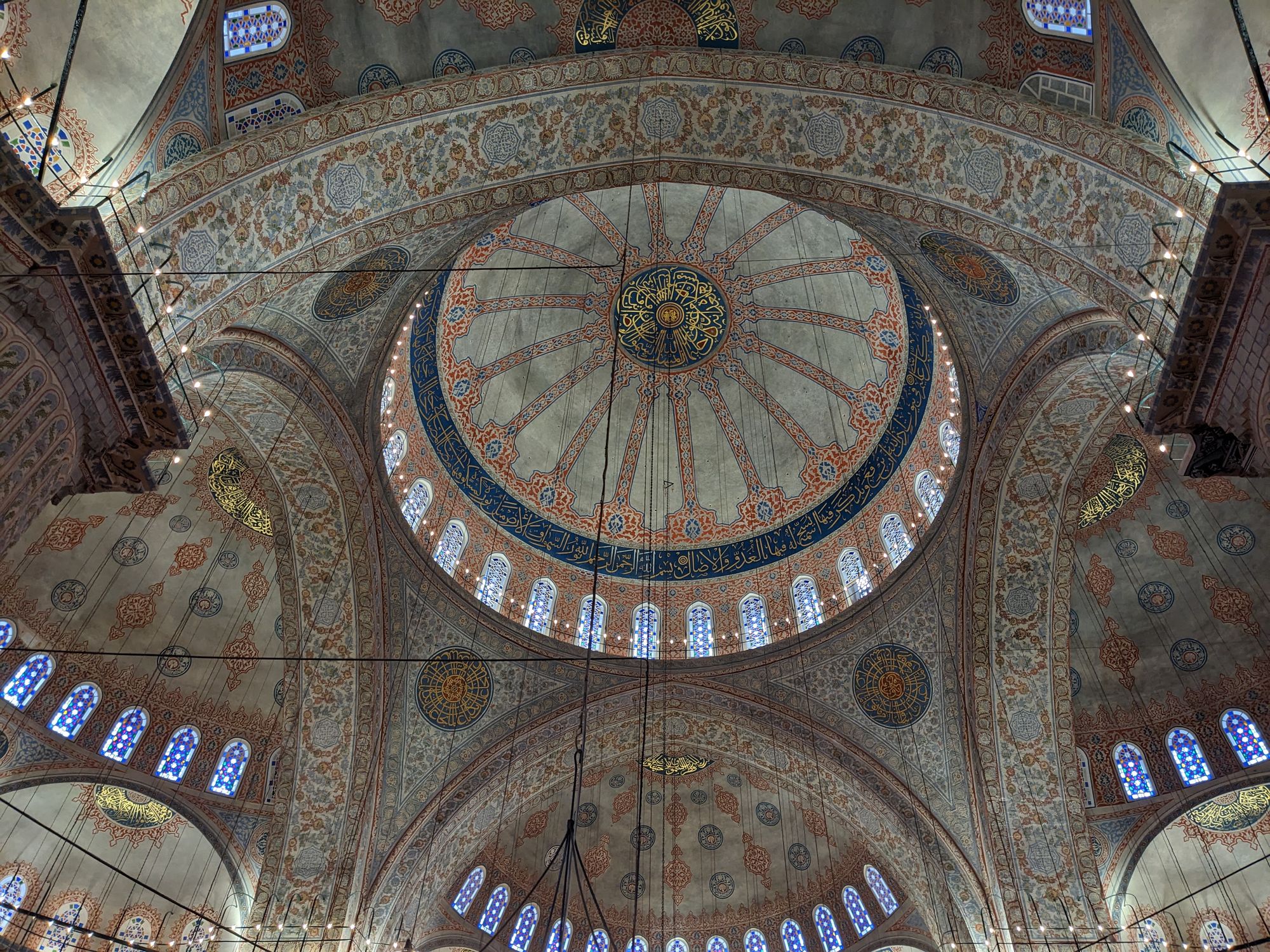
After the Blue Mosque we went to the Grand Bazaar to conclude our tour. I then went to Halkalı garı to catch the night train to Sofia. The cabin had two folding bunks, a fridge stocked with snacks, and a sink with running water. Having a basin to shave and freshen up in the morning was fantastic, I highly recommend sleeper trains.
2023 April 27, Thursday
At 01:00 in the morning we crossed the border from Turkey into Bulgaria. Thanks to a Lonely Planet guide, I knew this was coming, so I'd slept in my clothes. When the conductor woke us up to shouts of “Passport Control!” I disembarked immediately and went straight to the checkpoint. There was only one customs officer stamping passports, so a line formed outside very quickly.
After we were all stamped we crossed the border into Bulgaria where the train stopped again, guards collected our passports and got them stamped for entering Bulgaria while we snoozed. We got them back and the train resumed its westward journey.
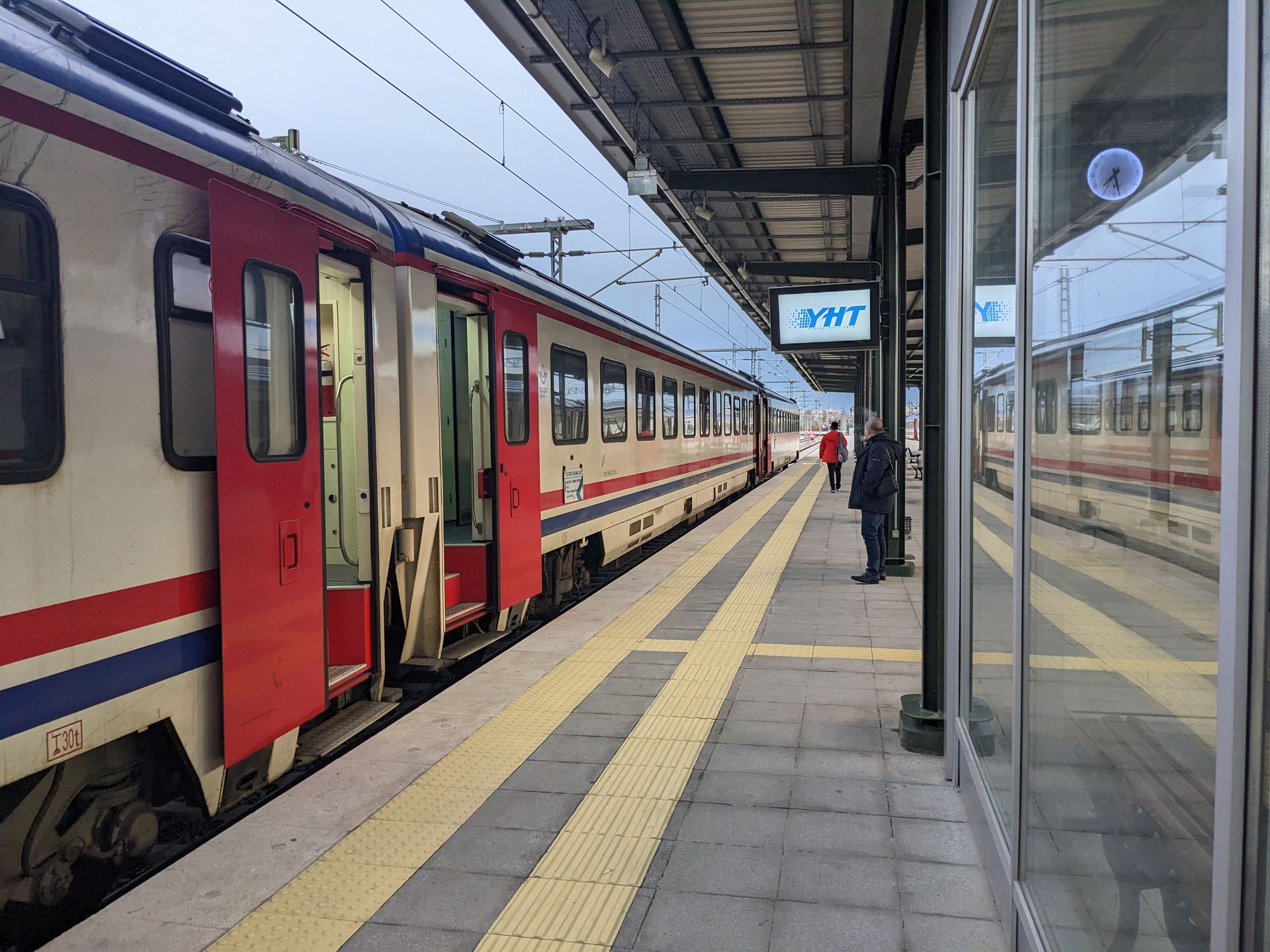
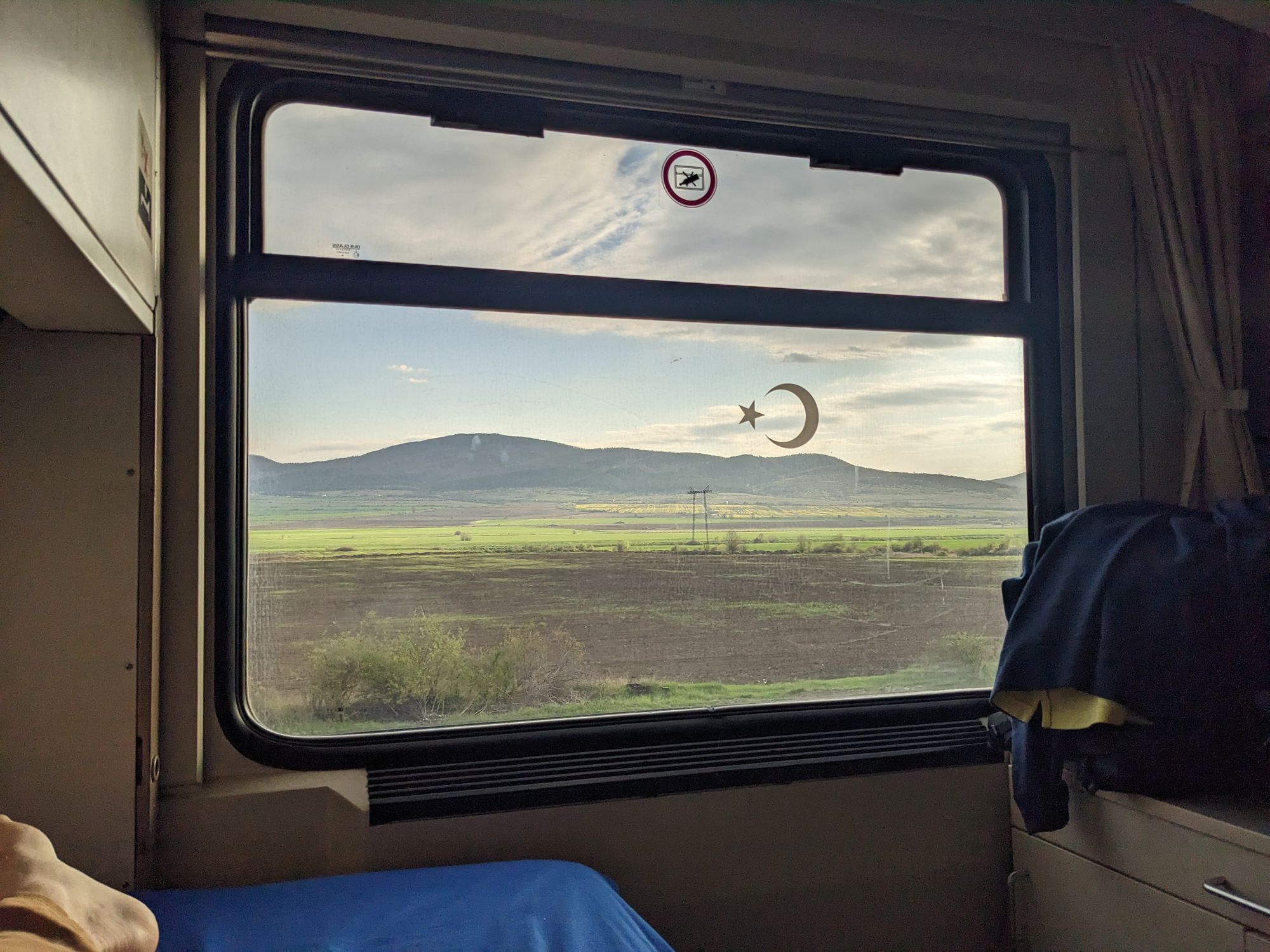
We reached Sofia Station at 09:40, 20 minutes behind schedule. Just like Sirkeci in Istanbul, this is also a station that the Orient Express used to pass through. I crossed the Lion Bridge to the city, passed the Presidential Palace, Mosque, City Hall and National Assembly, then found the cafe Фабрика ДЪГА (“Rainbow Factory”), a brunch spot recommended by Lonely Planet. I got eggs on toast with a filter coffee and took some time to write this blog.
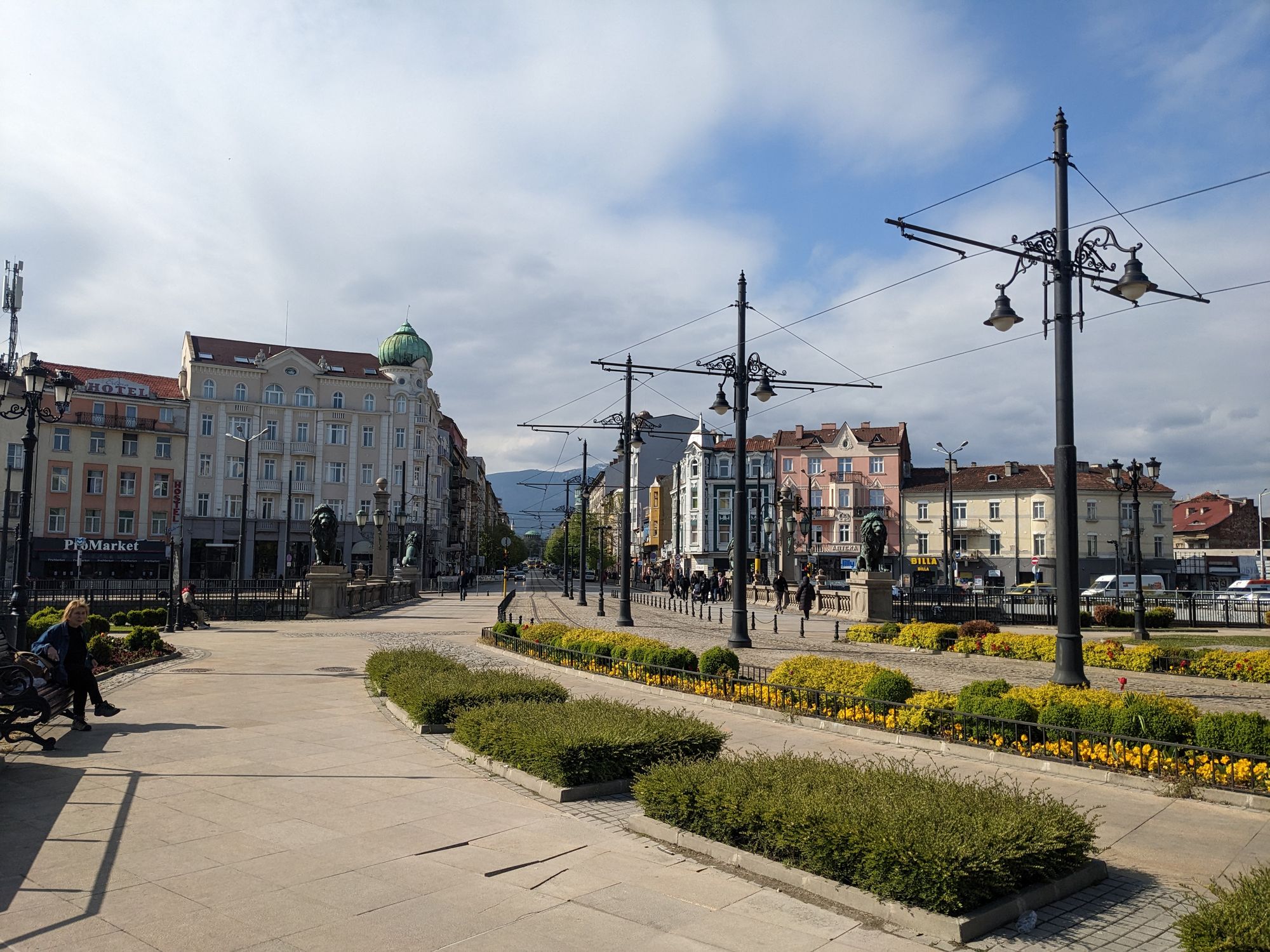
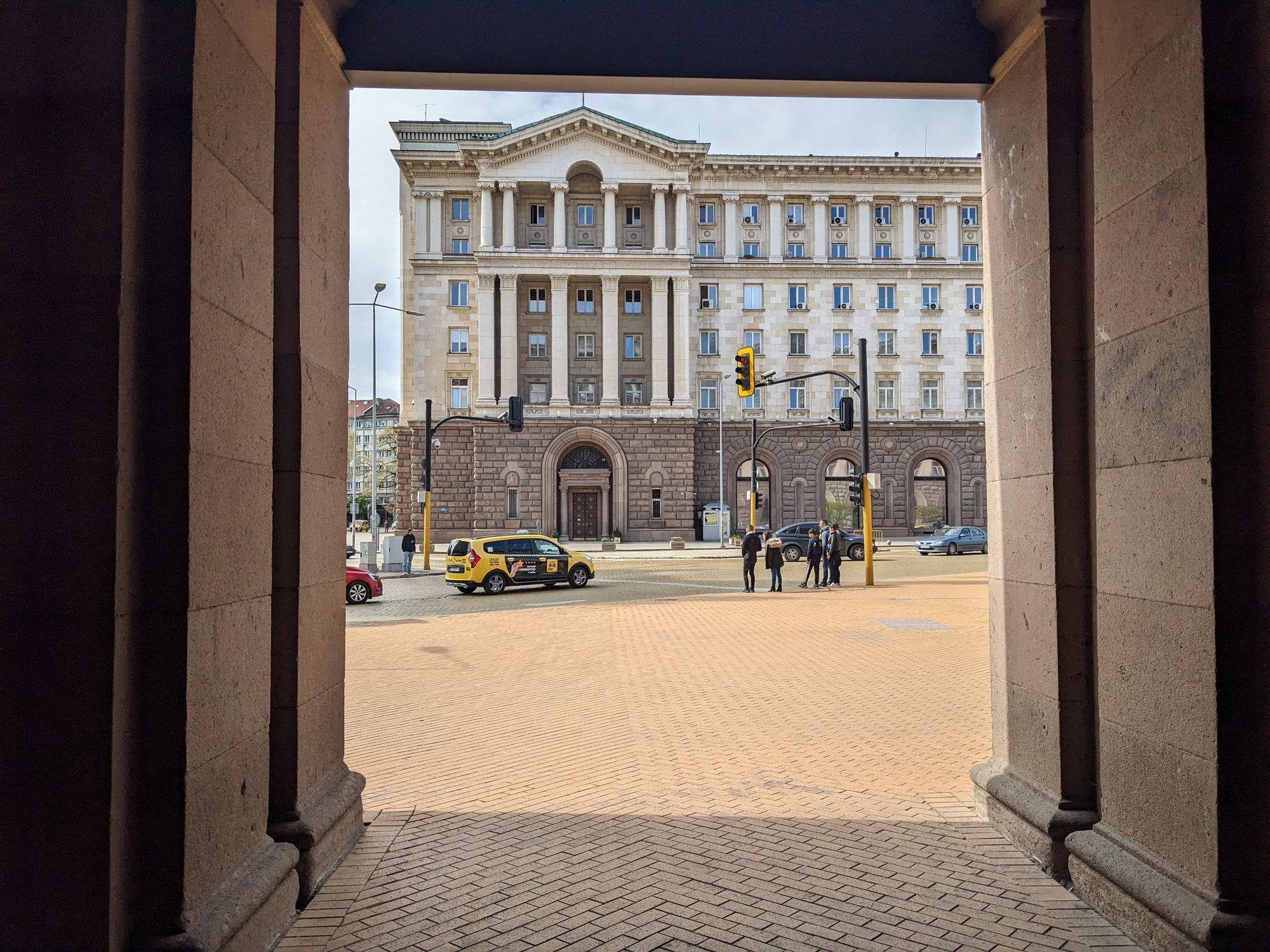
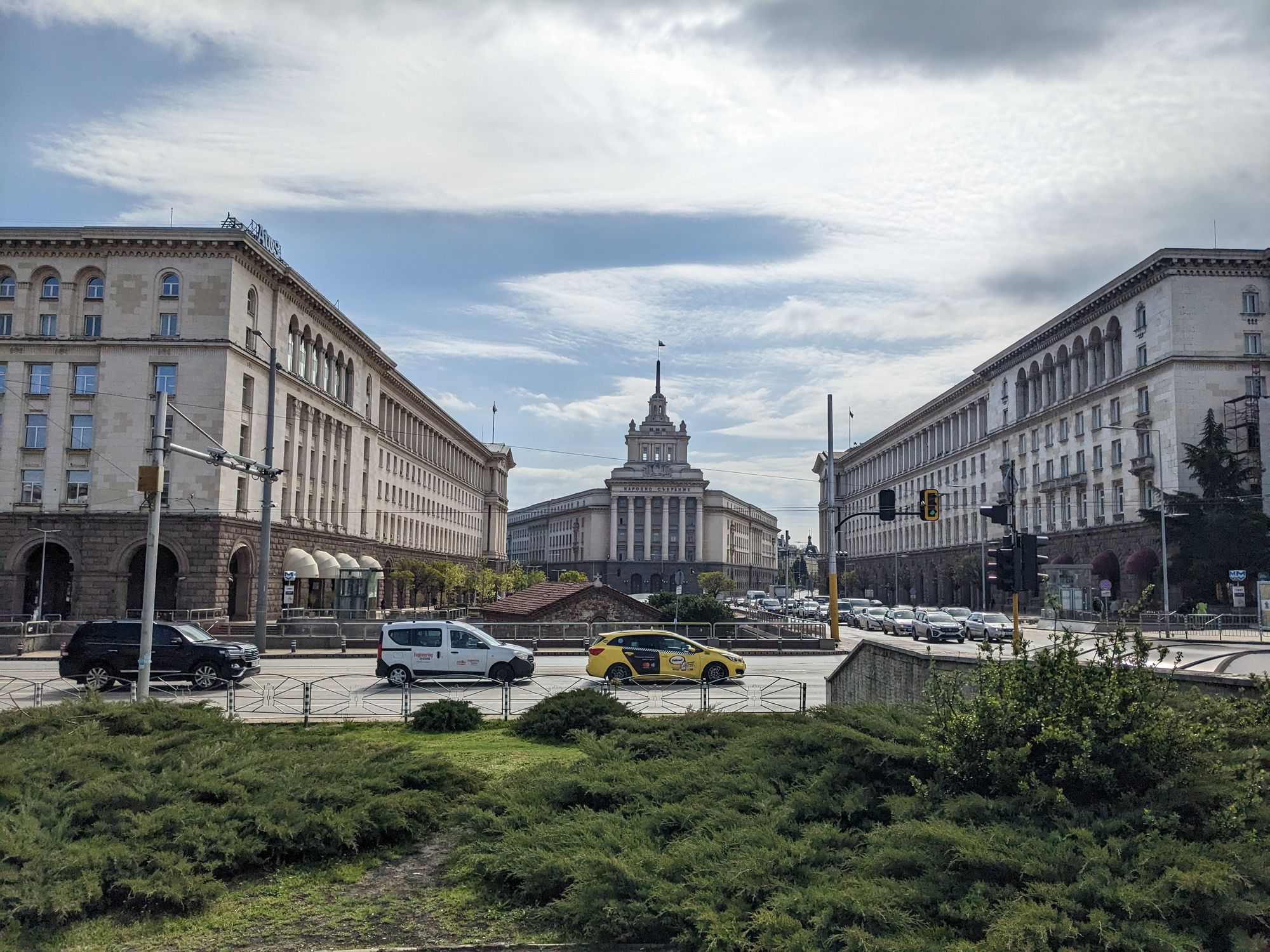
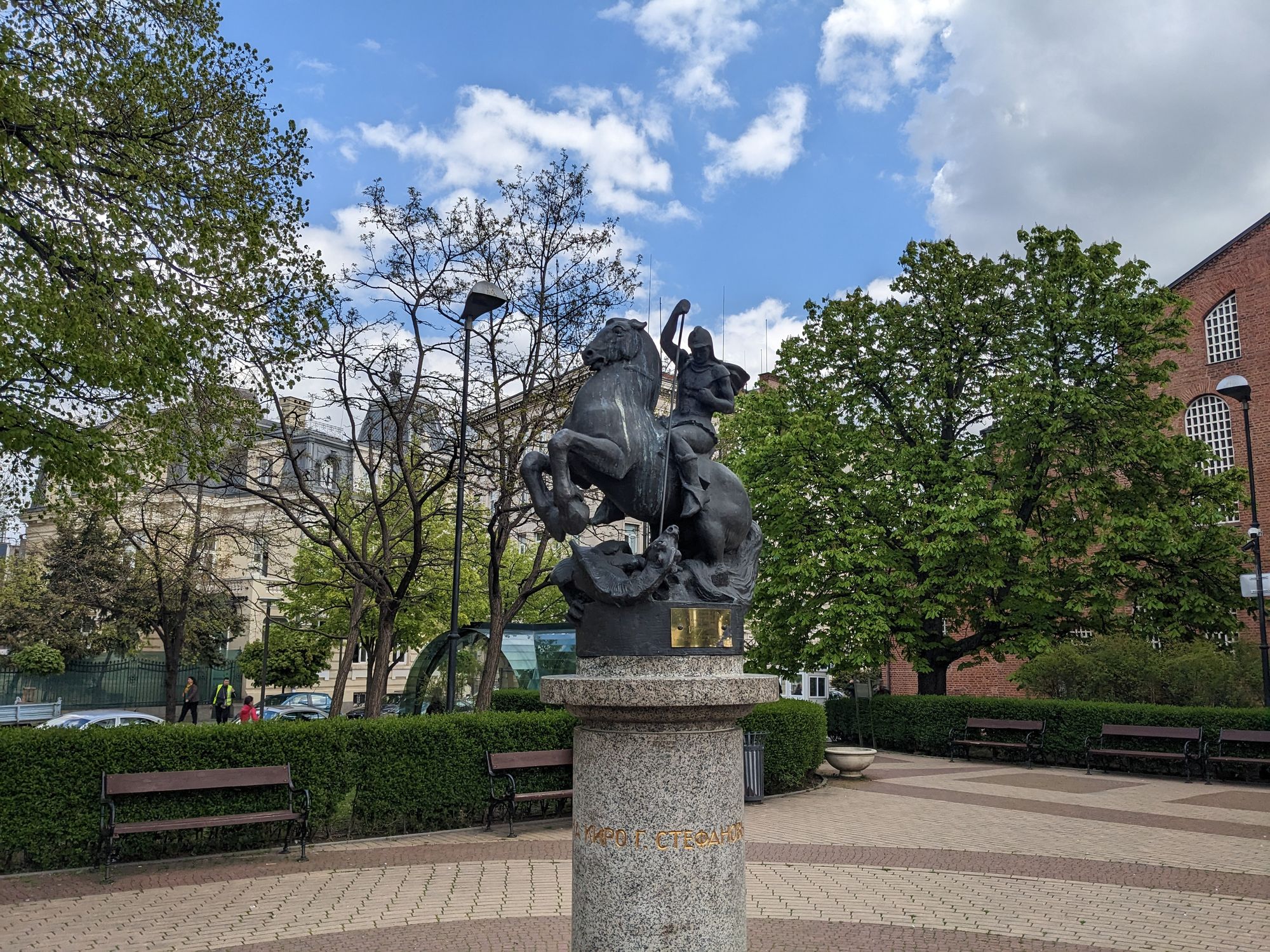
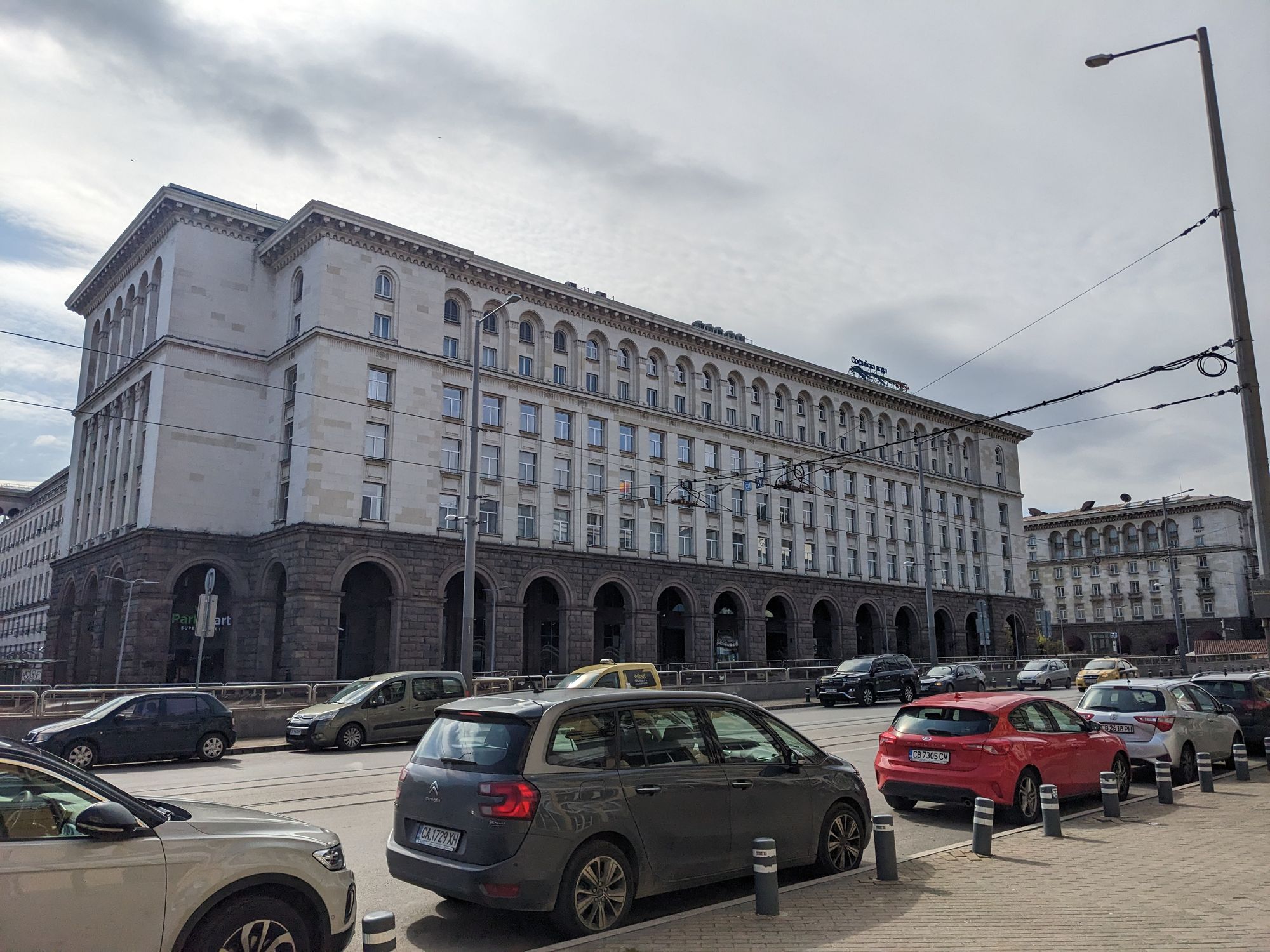
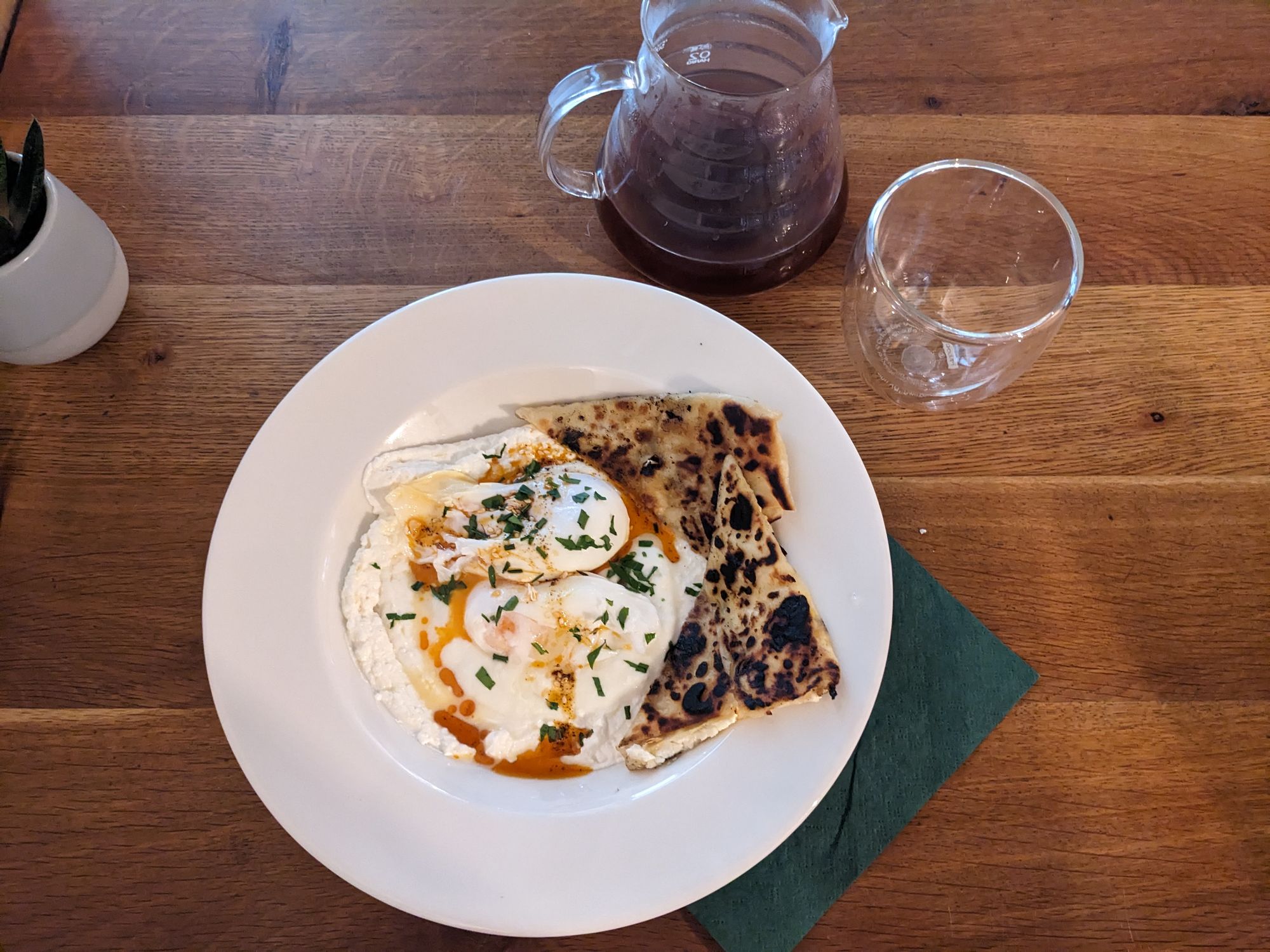
Down the road was the Alexander Nevsky Cathedral, Sofia - not to be confused with the Alexander Nevsky Cathedrals in Paris, Tallinn, Baku or further afield. The cathedral is named for Alexander Nevsky, a Russian ruler in the 1200s who fought off the Germans and Swedes while paying large monetary tribute to the Golden Horde. Sergei Eisenstein made a film about him in 1938. He's a Slavic folk hero.
The cathedral was built from 1882 to 1912 in honour of Russian, Ukrainian and other soldiers who died fighting to free Bulgaria from Ottoman rule.
Unlike many western cathedrals, its interior is square and the structure is ‘cross-domed’ whereby the central dome is supported by four half-domes on its four sides.
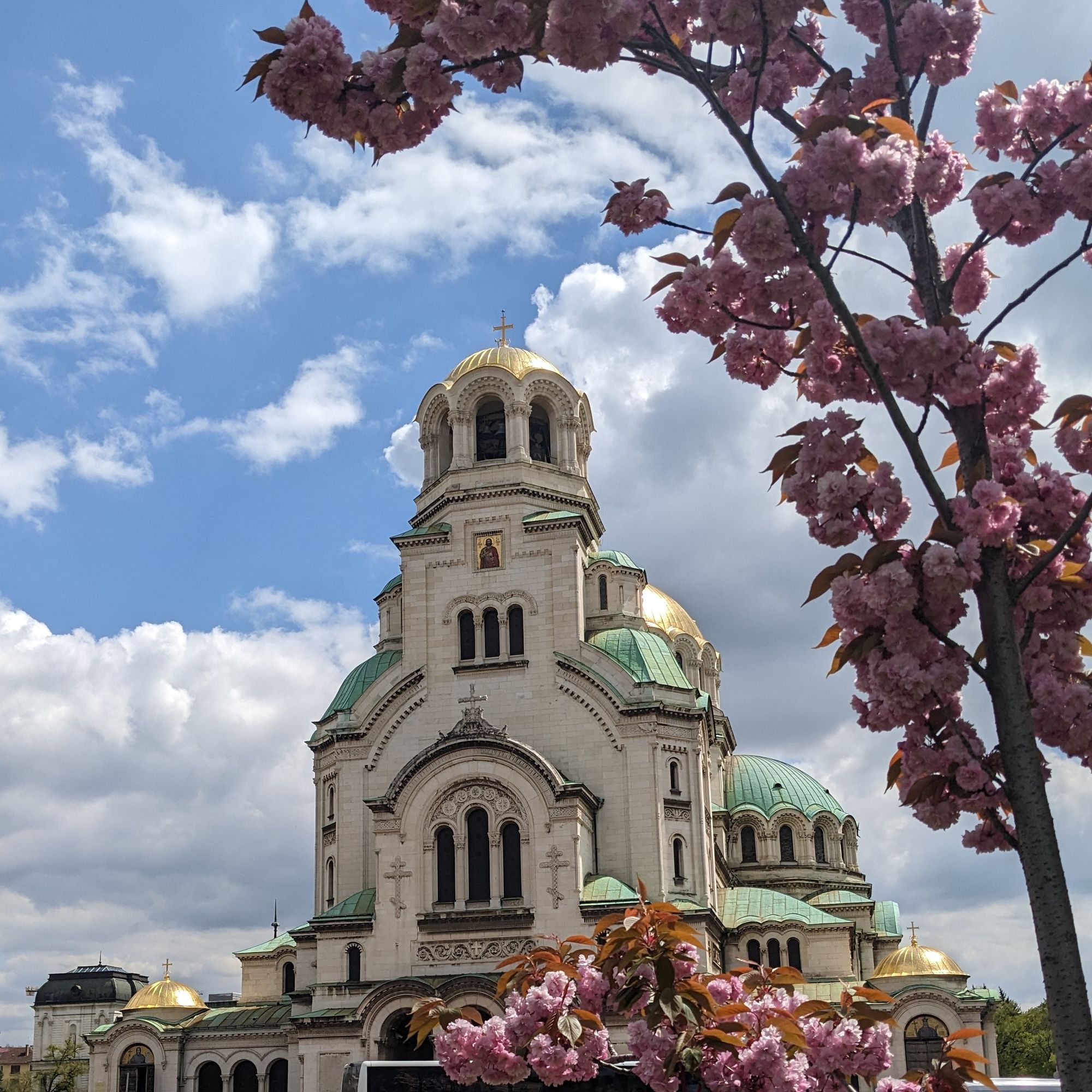
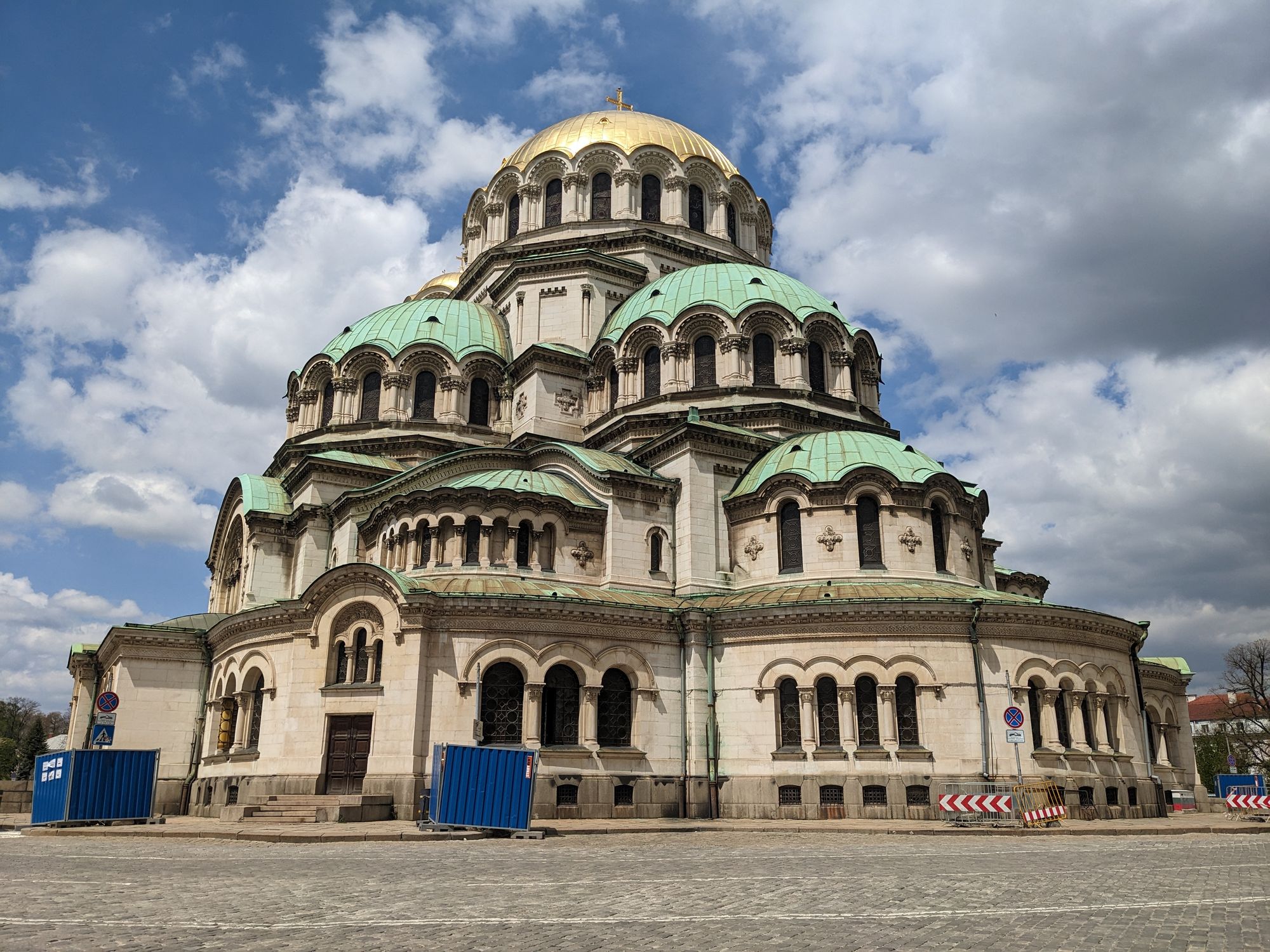
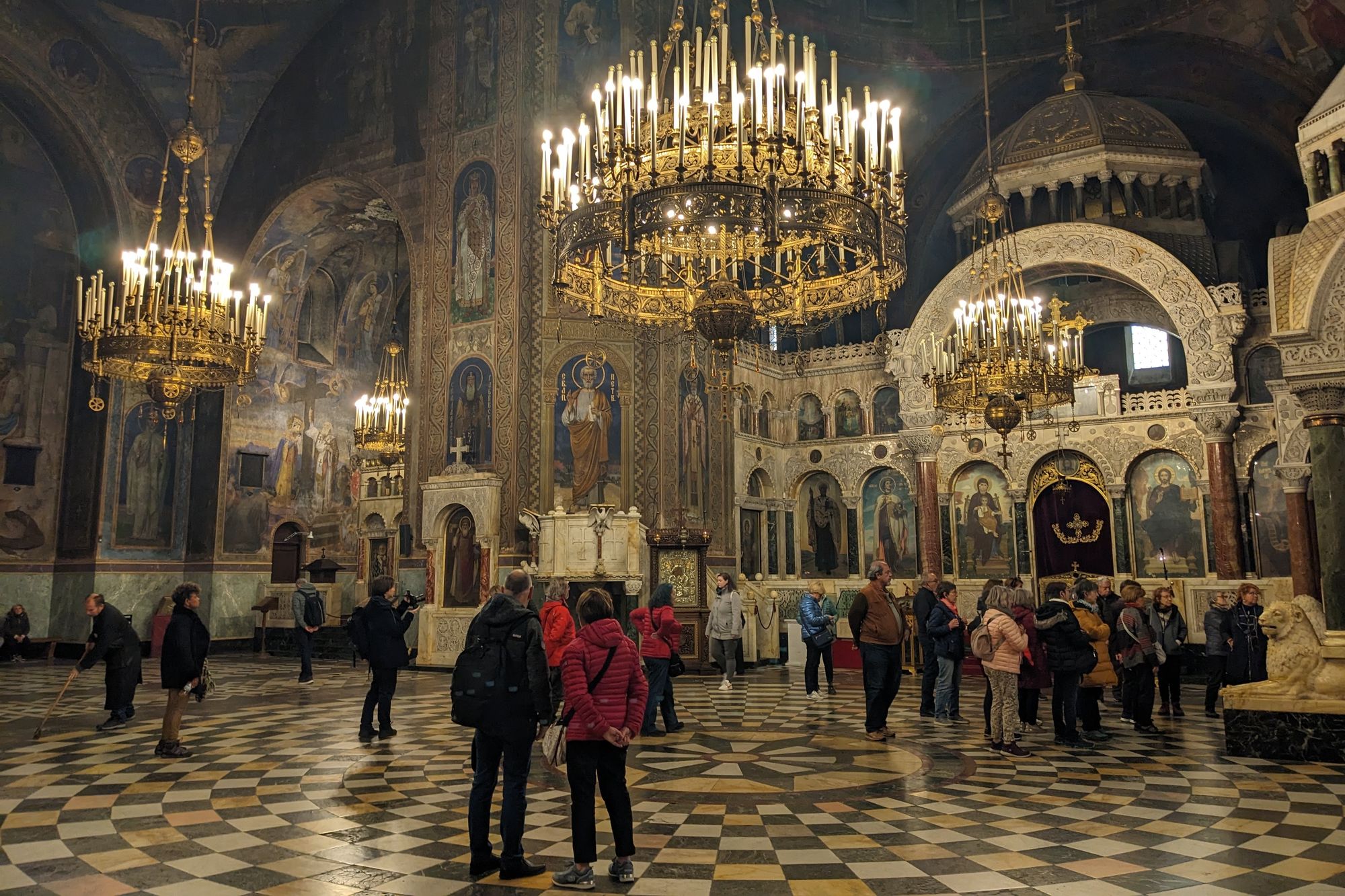
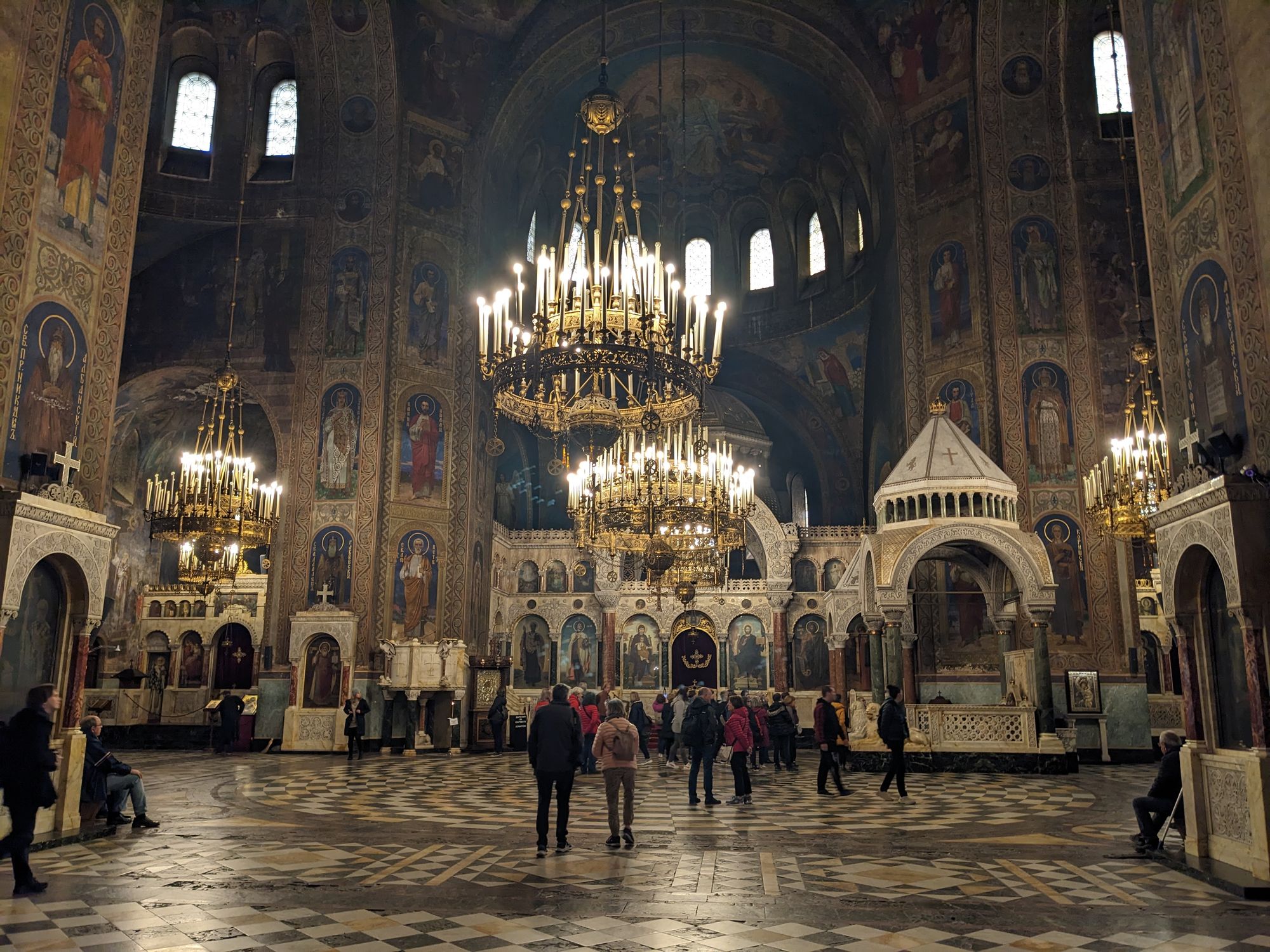
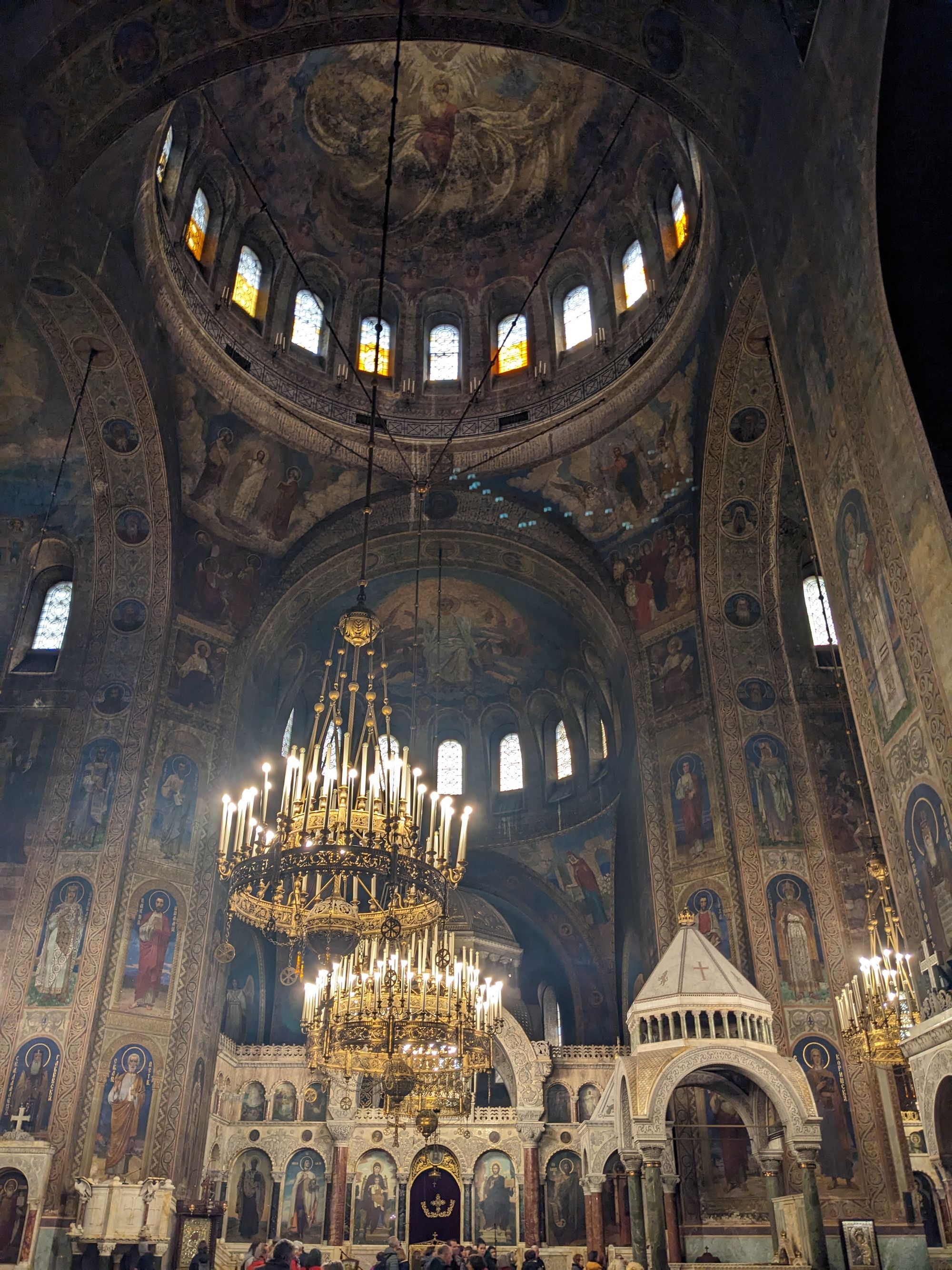
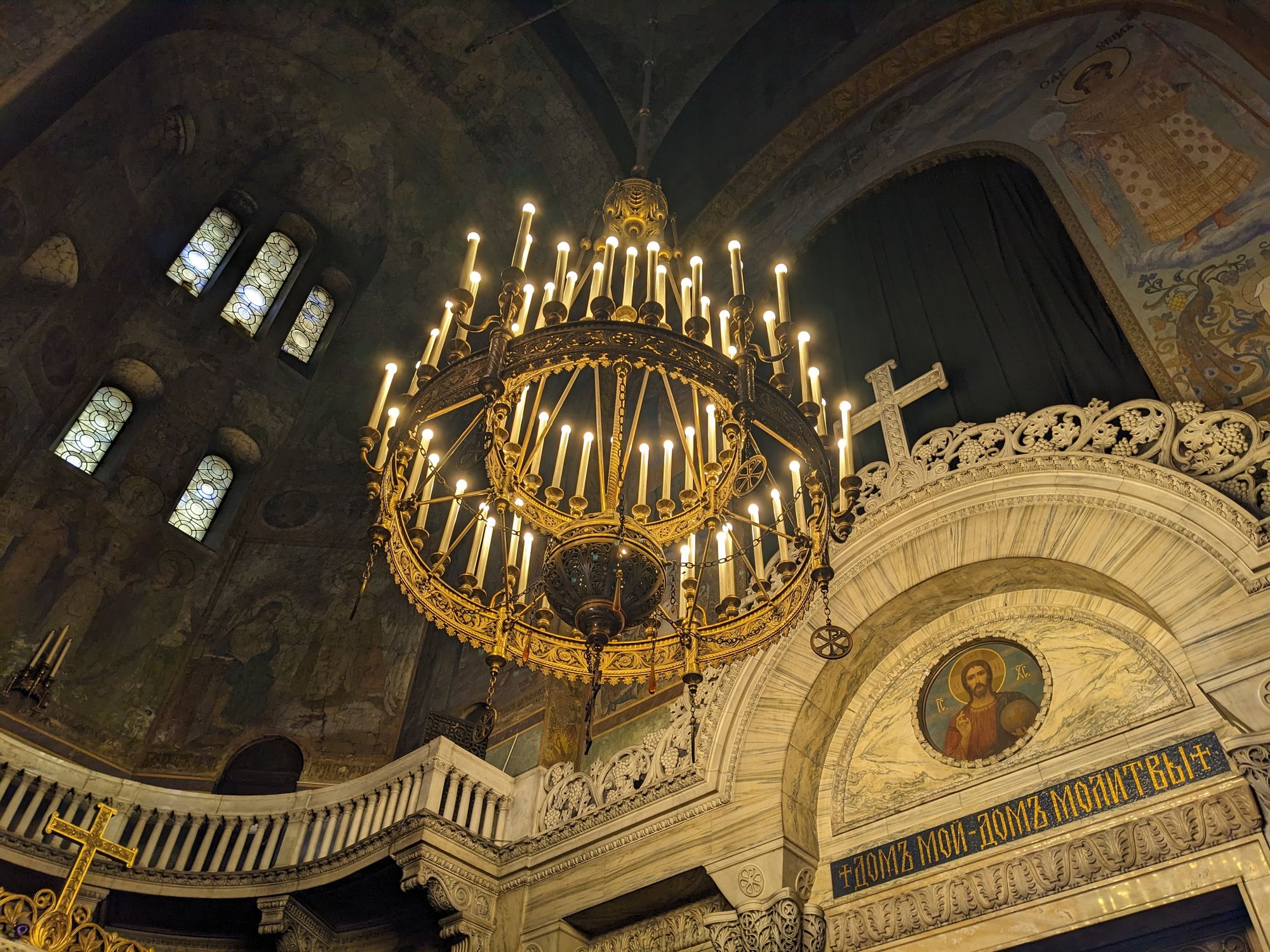
I then passed in the Academy of Sciences, Sofia University and the Bulgarian National Assembly. Sofia actually has two national assemblies, even though the Bulgarian parliament is unicameral. This is because the first Bulgarian parliament began in the older building, then moved to the newer building during the Communist period, and after independence moved back to the old parliament to distance itself from Communism.
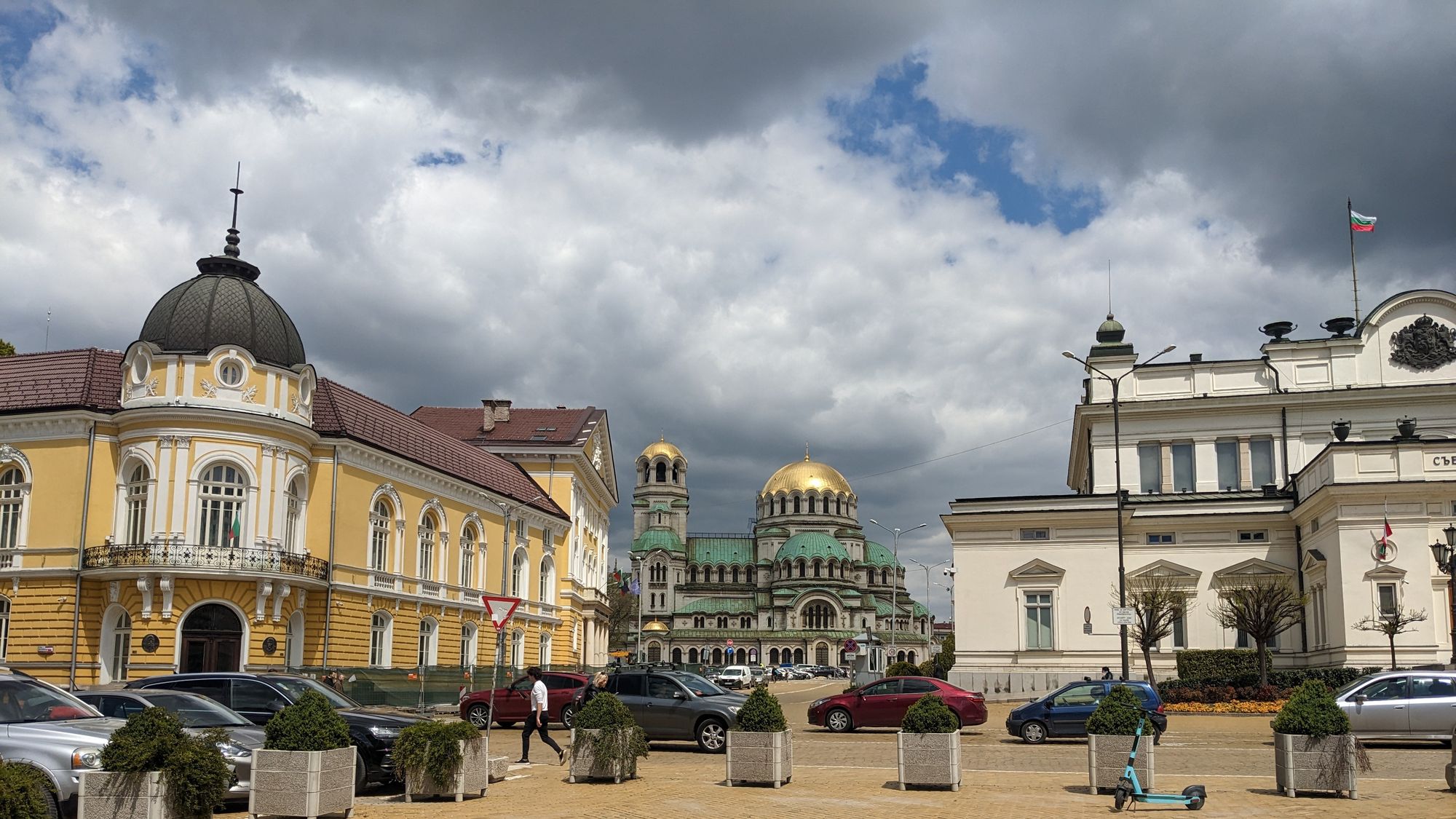
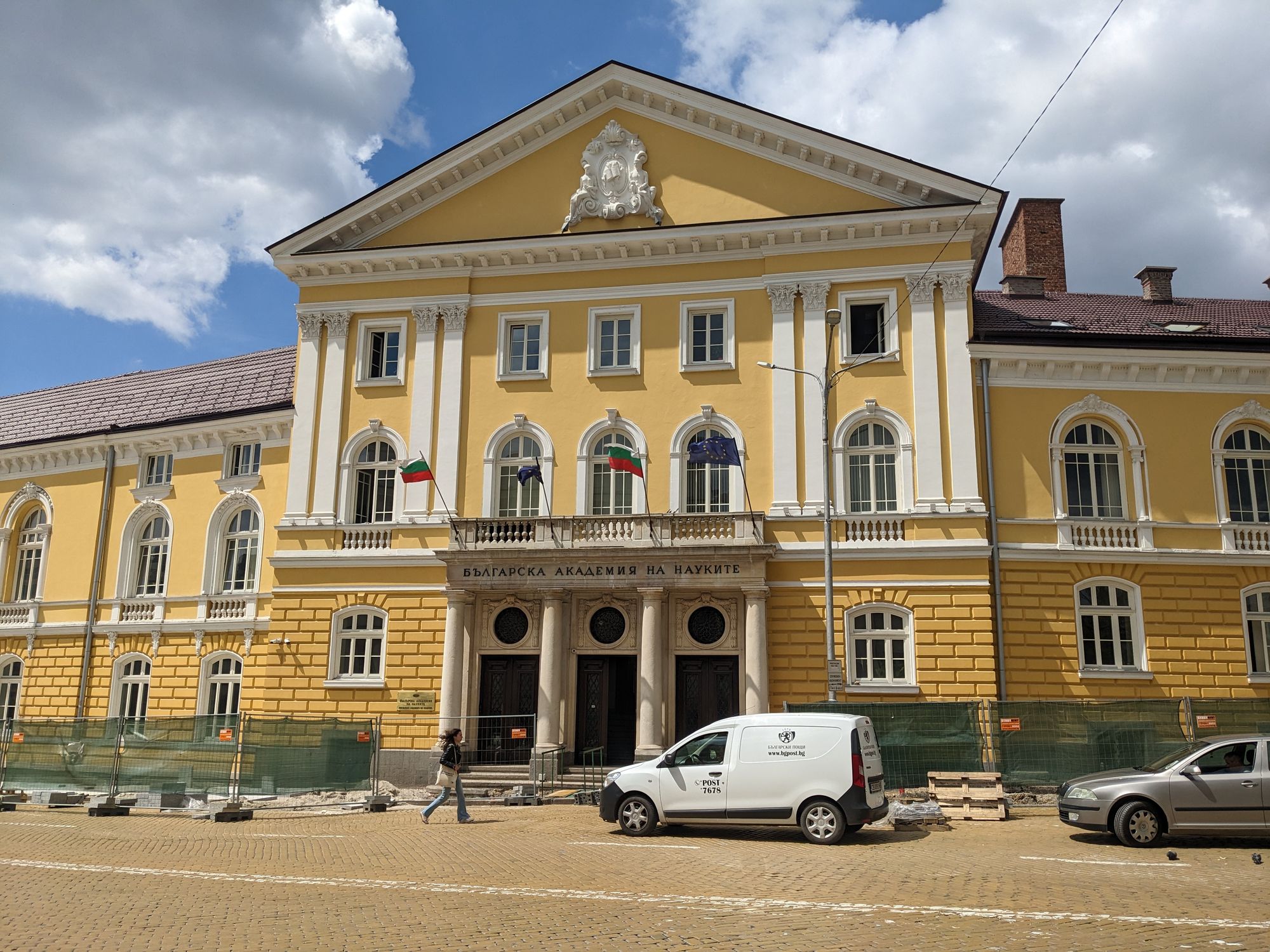
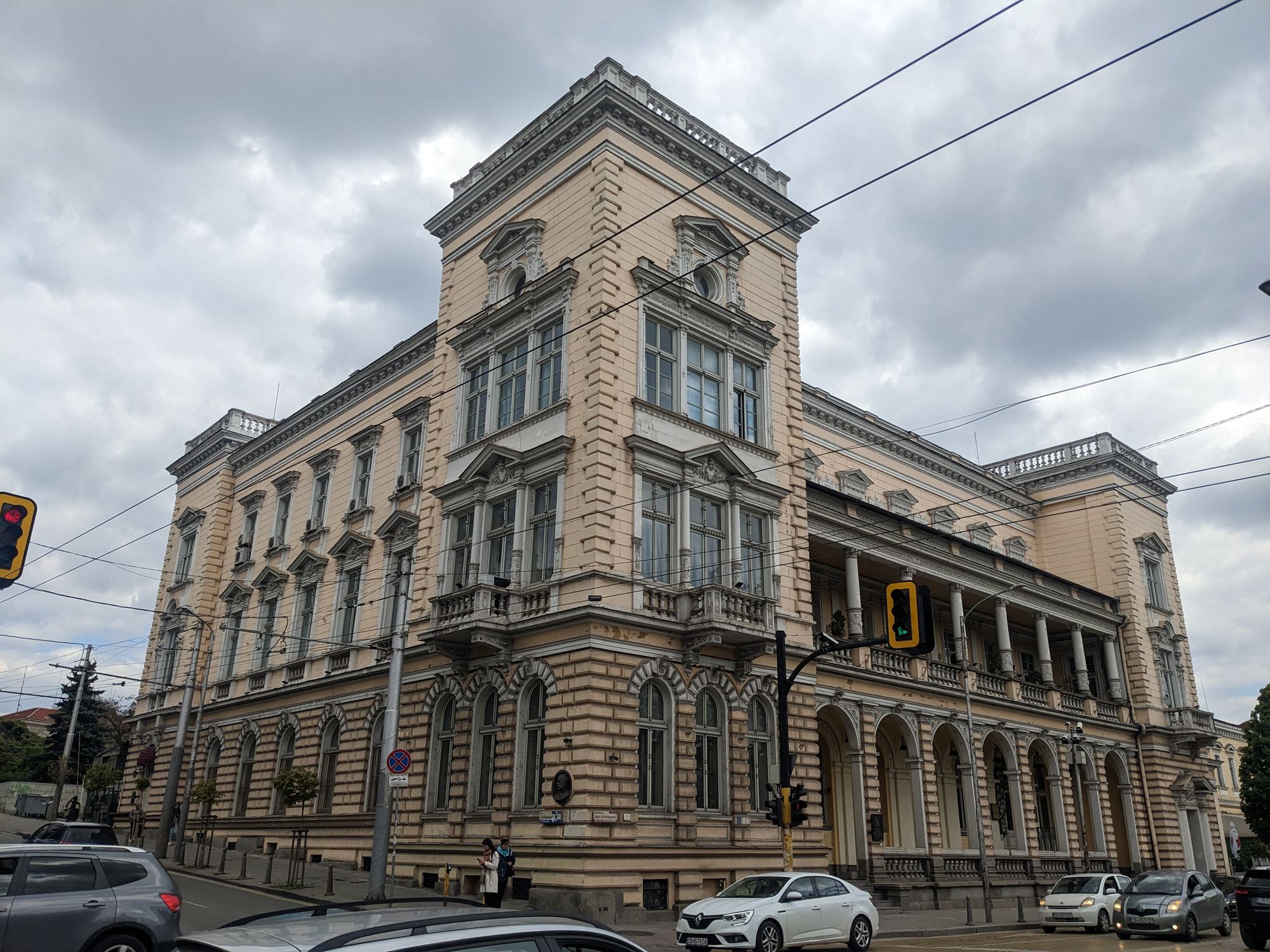
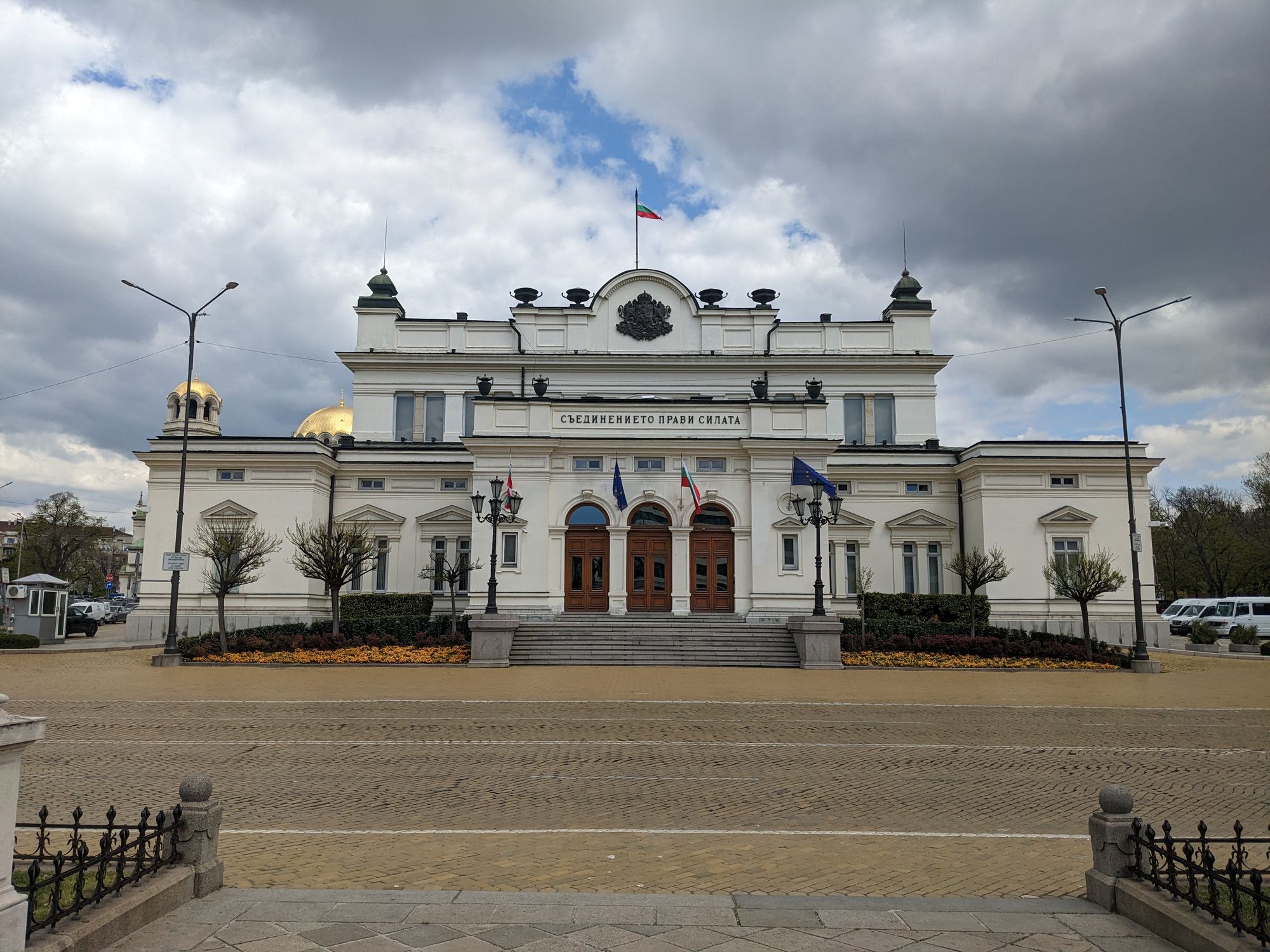
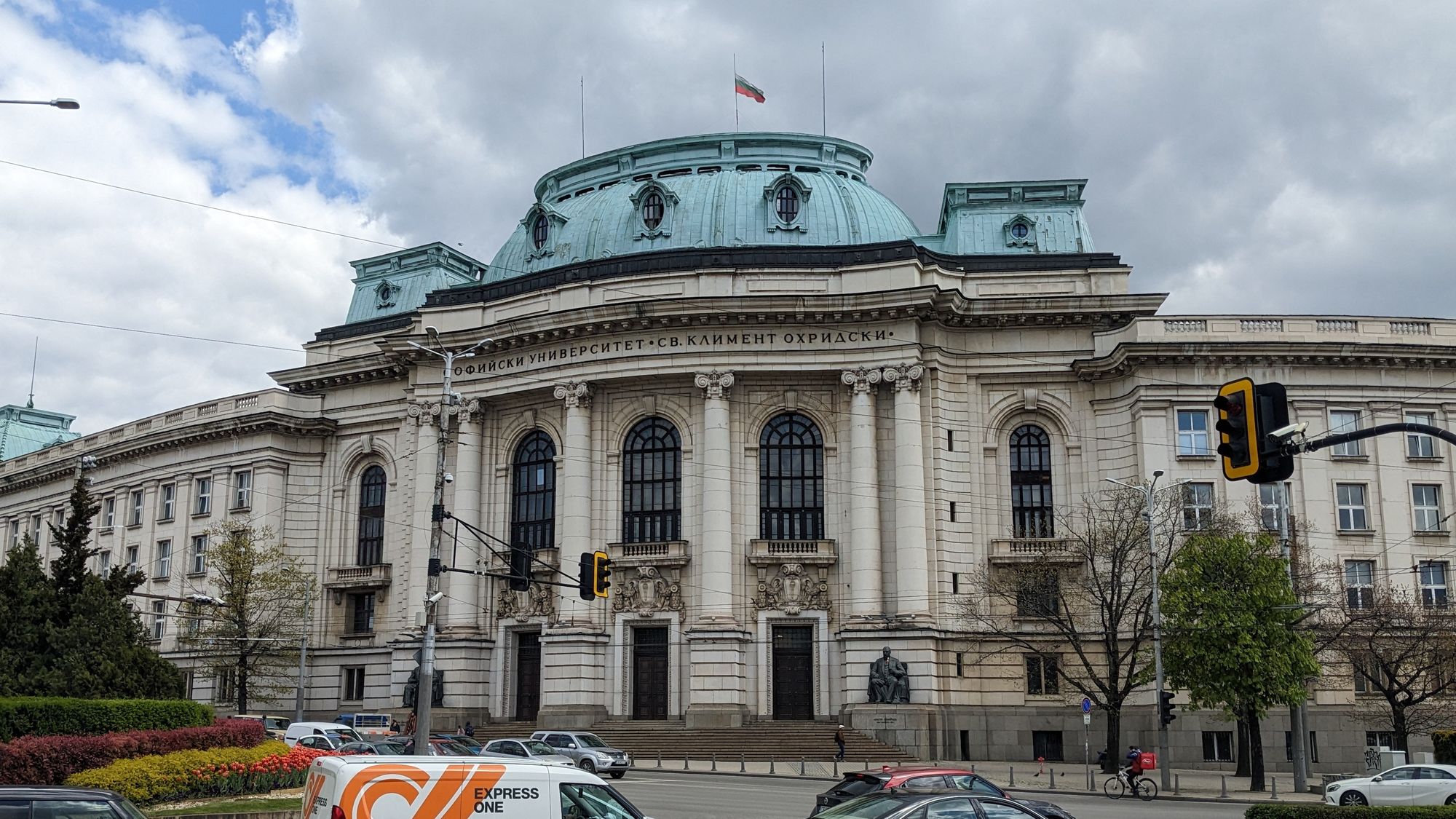
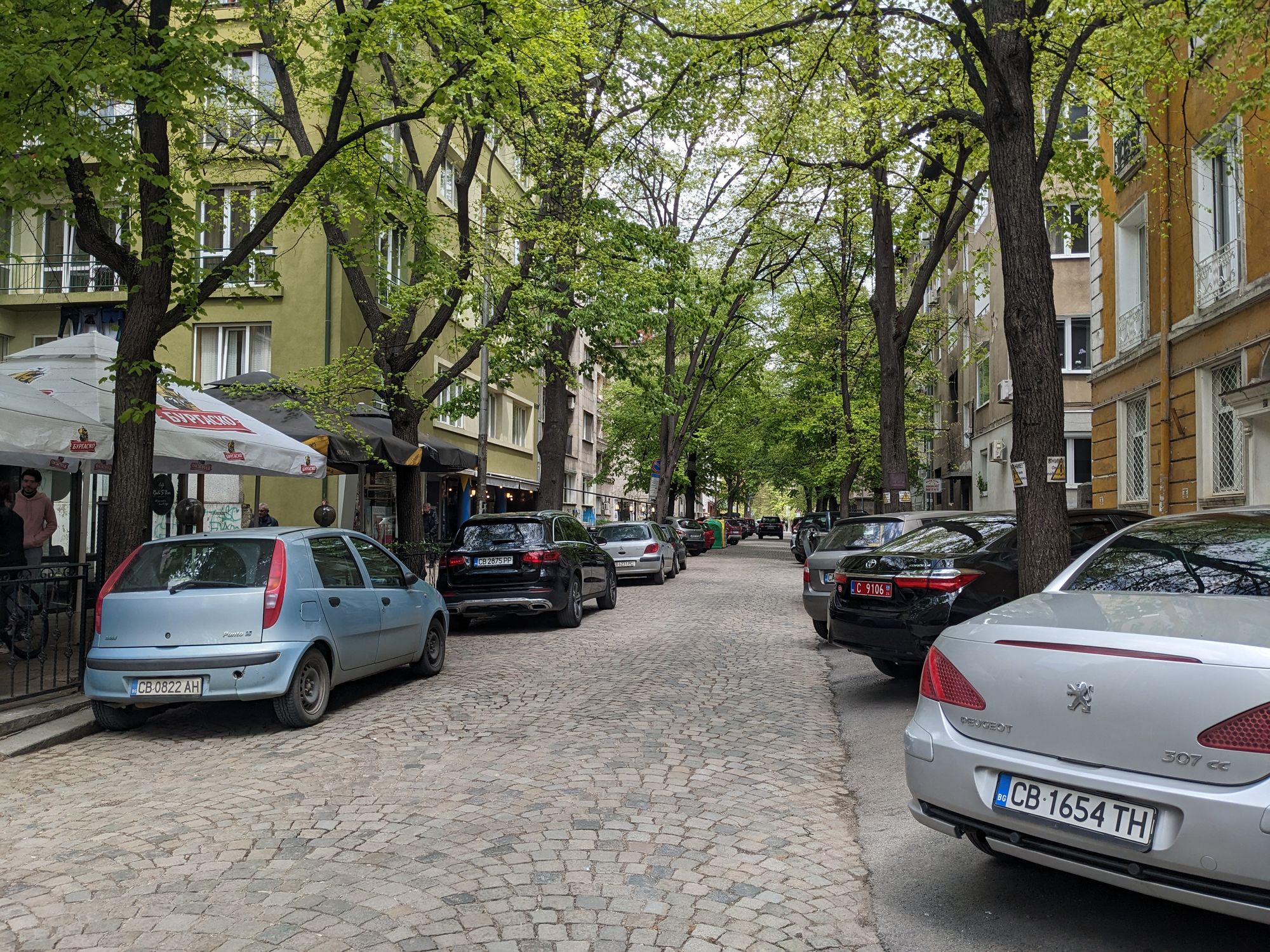
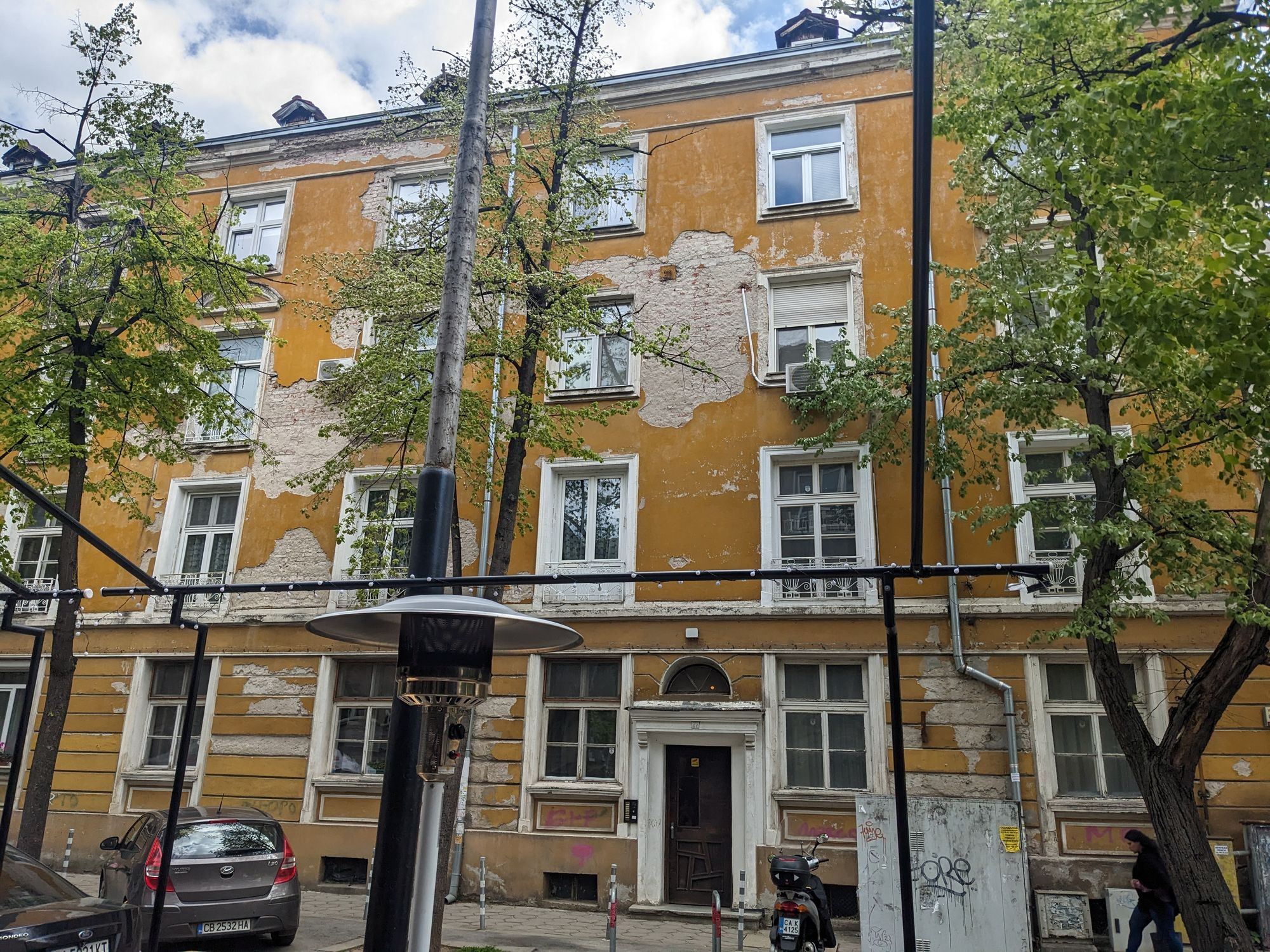
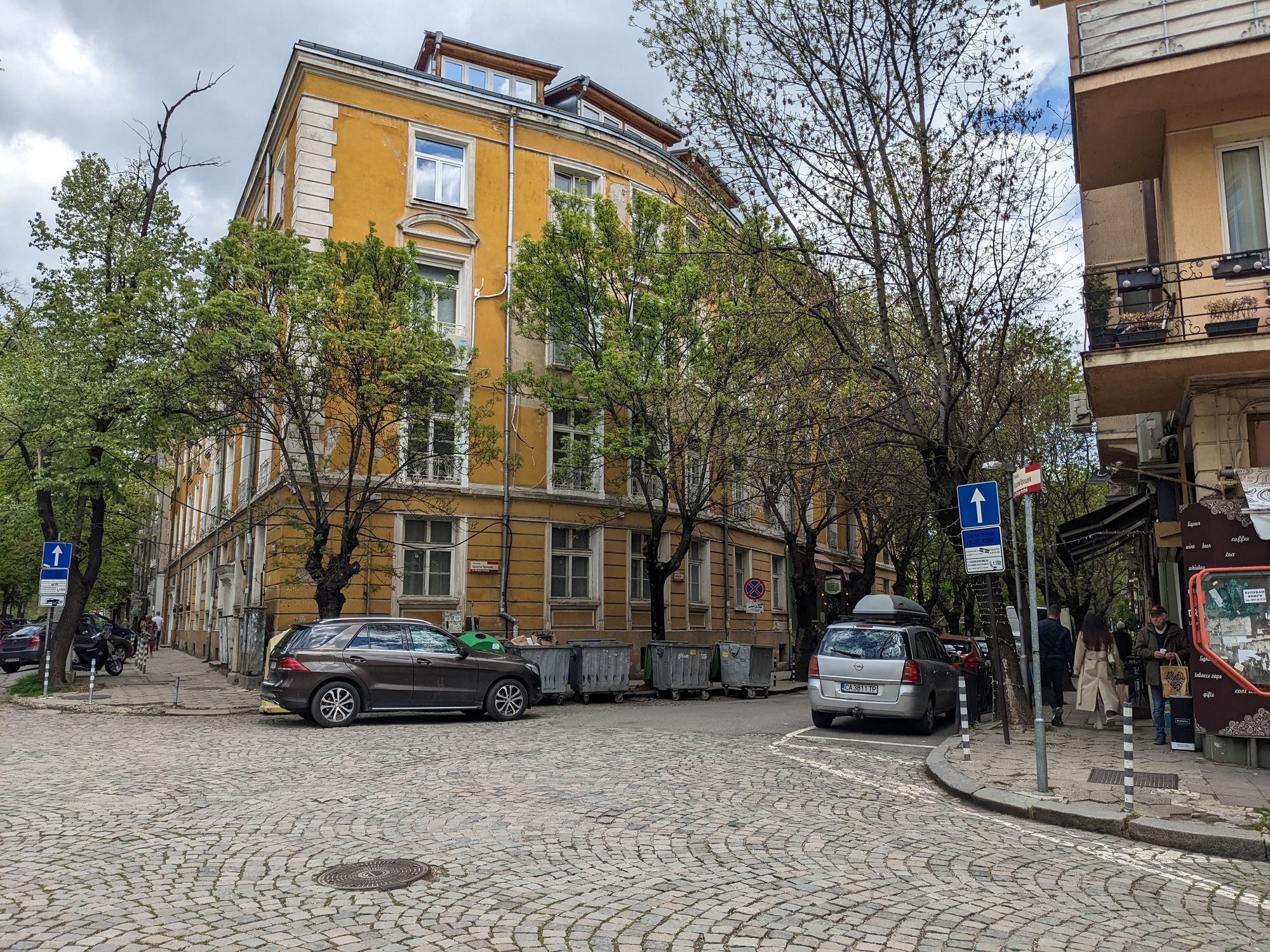
Many of Sofia's buildings are in the Neo-renaissance style, a hot thing following the Russo-Turkish War, which ended in 1878 with Bulgarian gaining independence. An interesting historical fact is that after Bulgaria's unification with Eastern Rumelia in 1885, Bulgaria styled itself as the ‘Prussia of the Balkans’ because it wished to unite Slavic peoples in a consolidated state, much like Prussia had done to unite Germans into Germany.
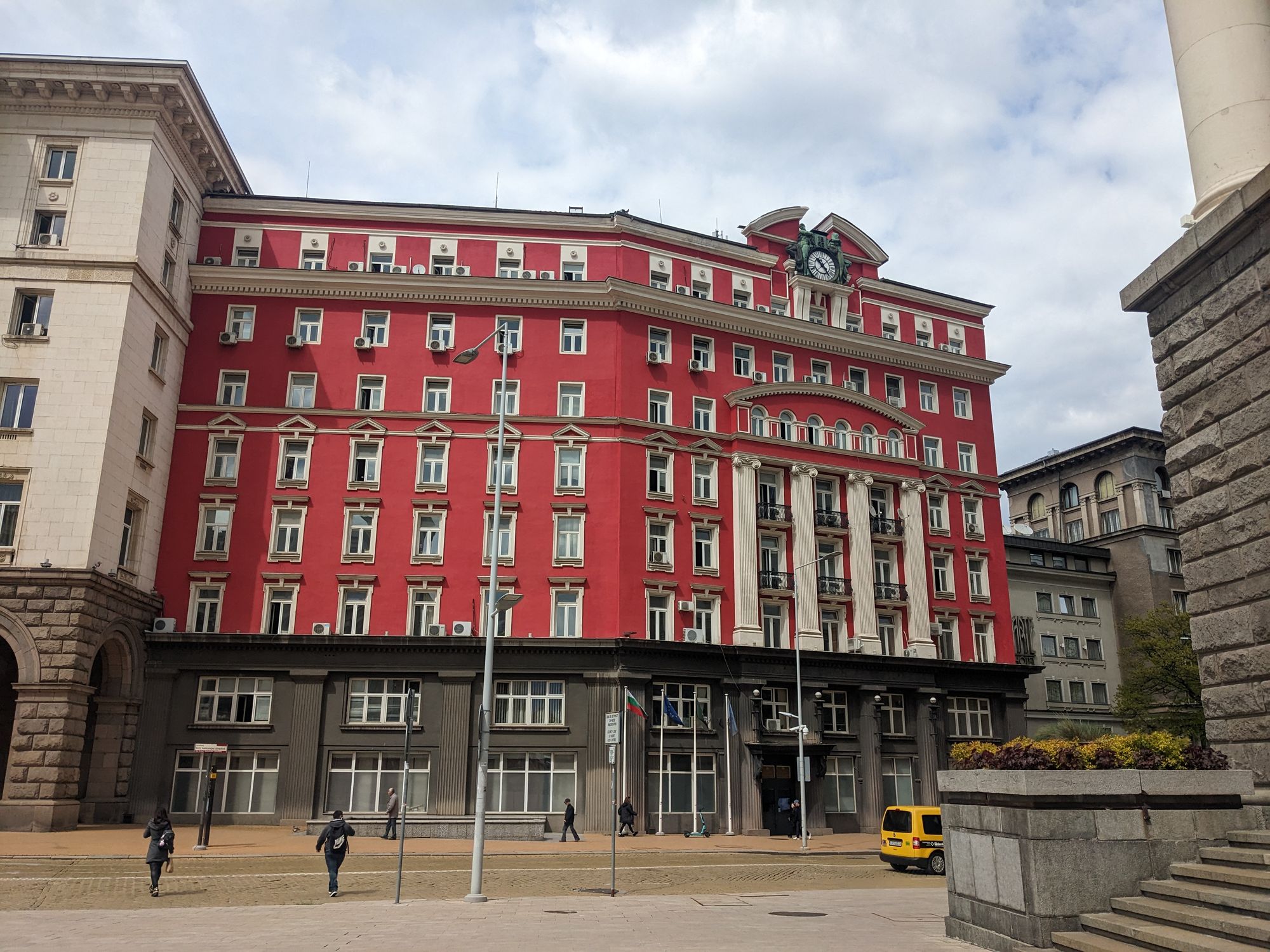
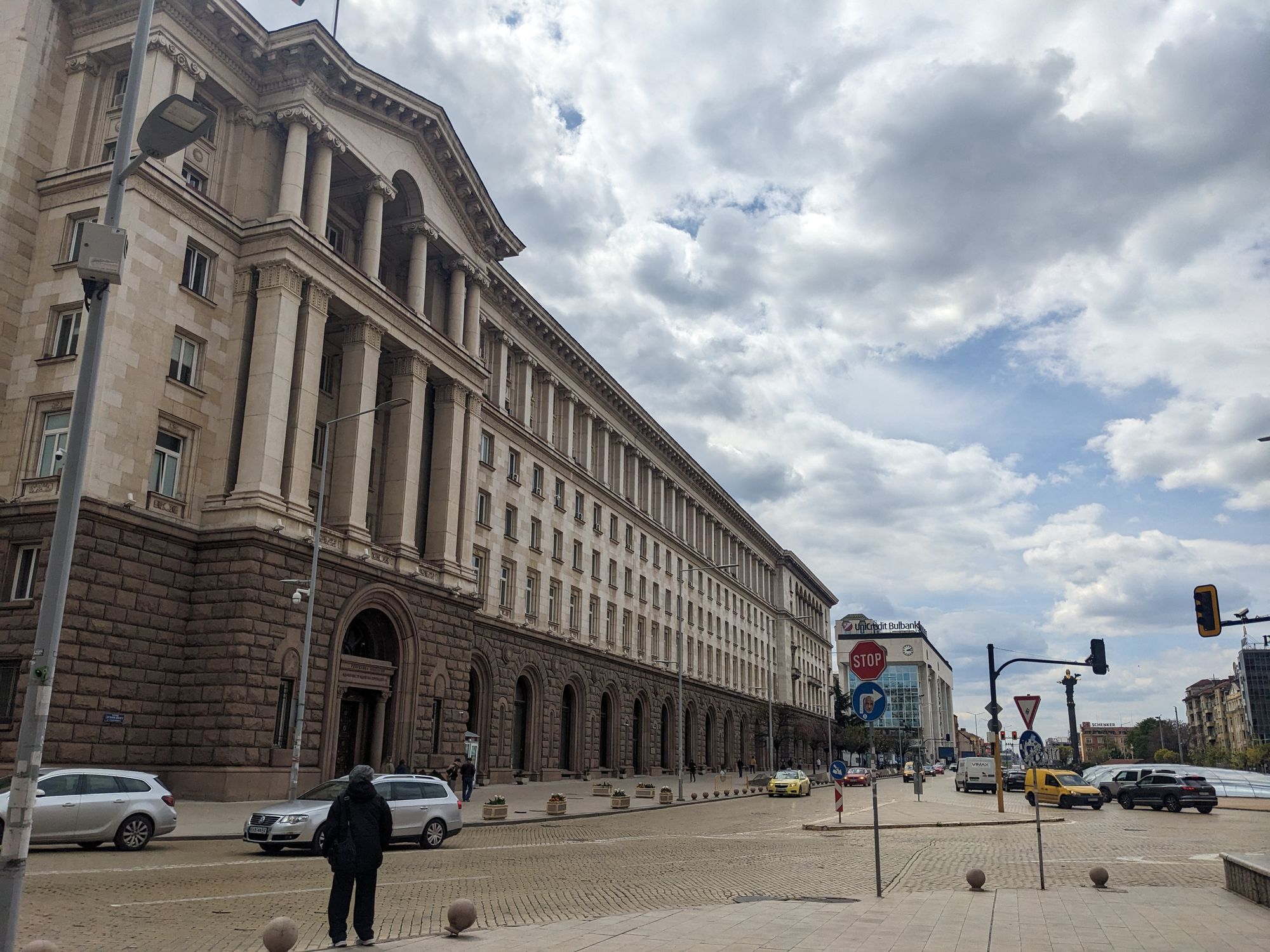
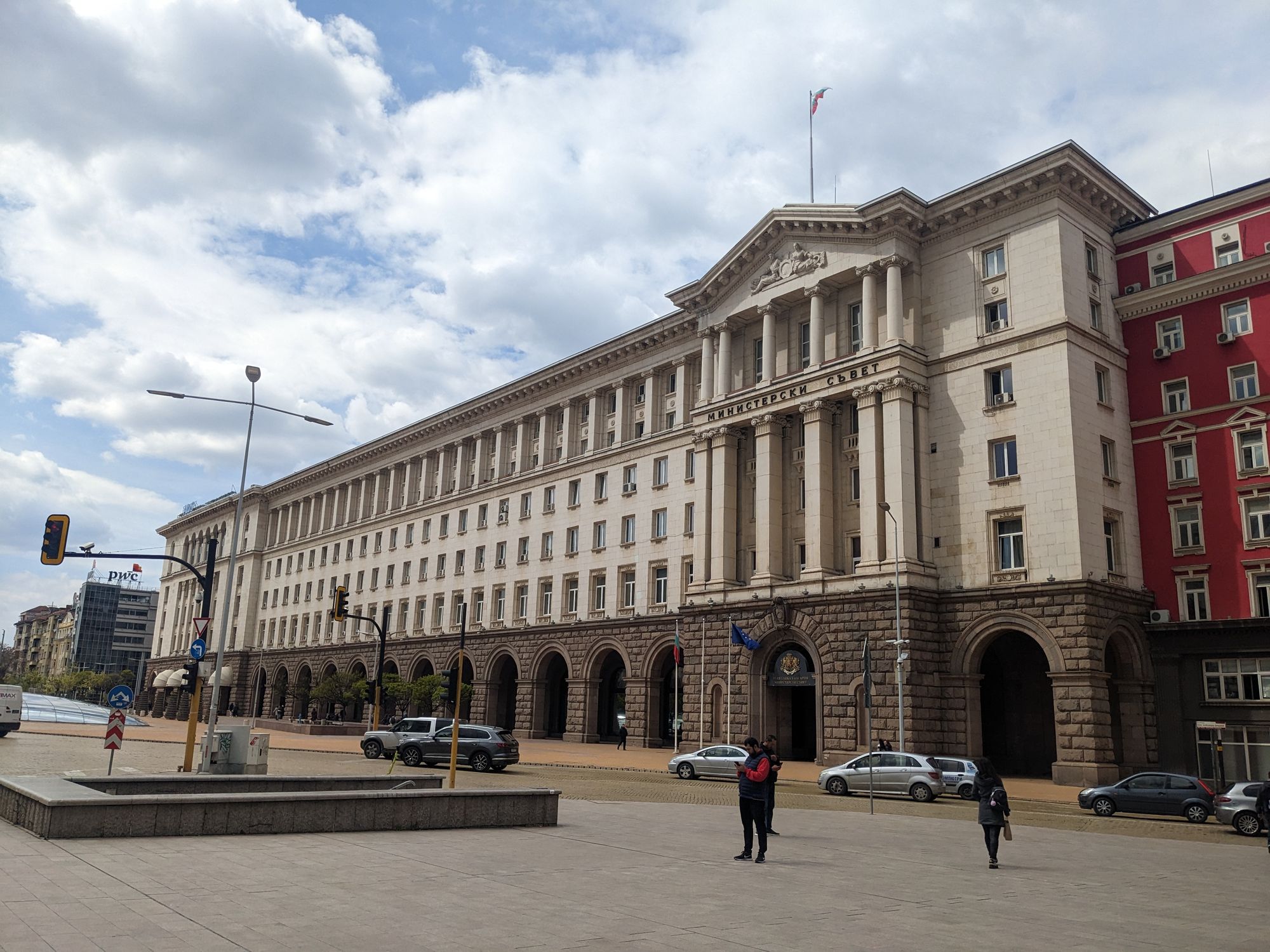
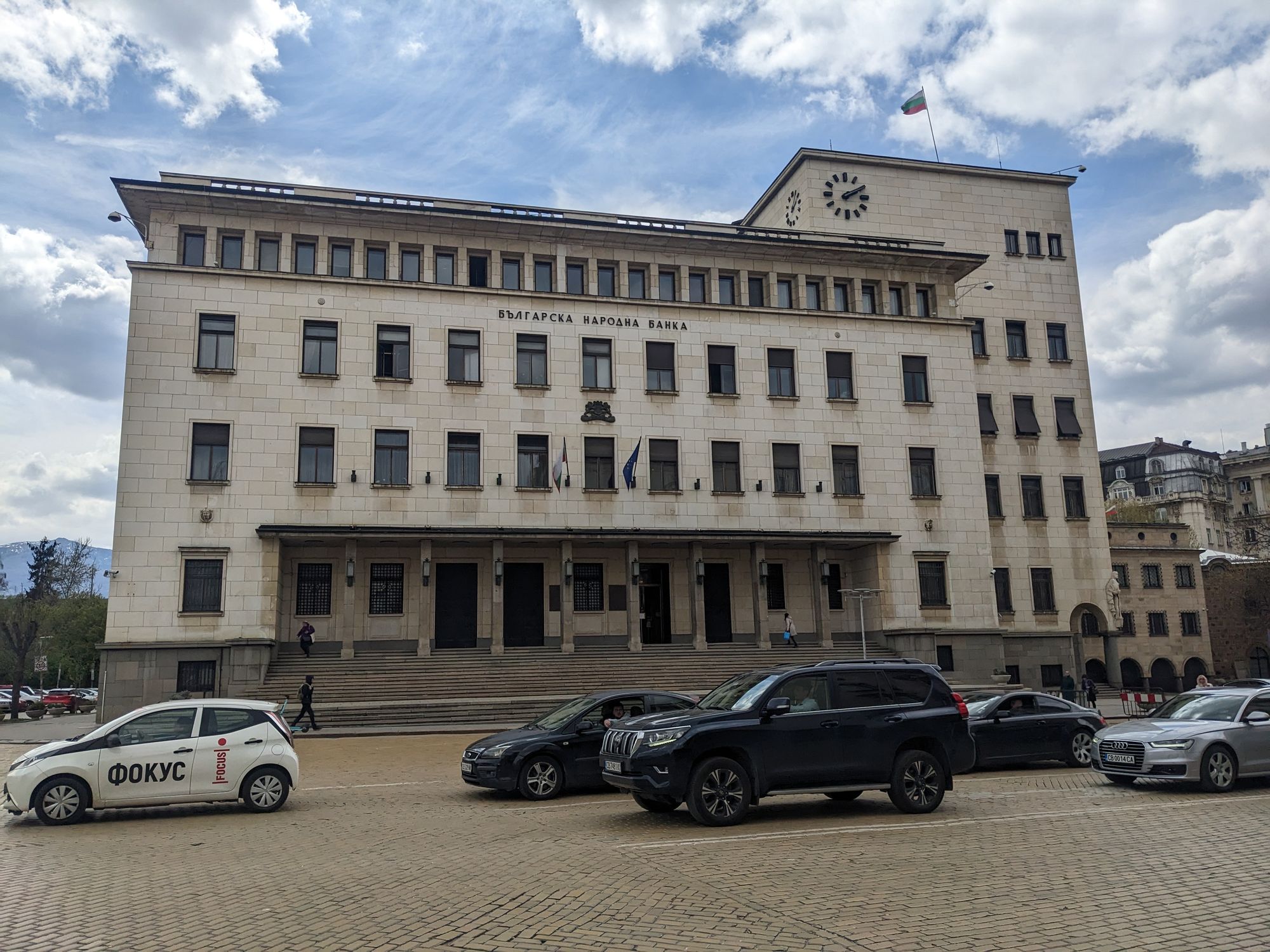
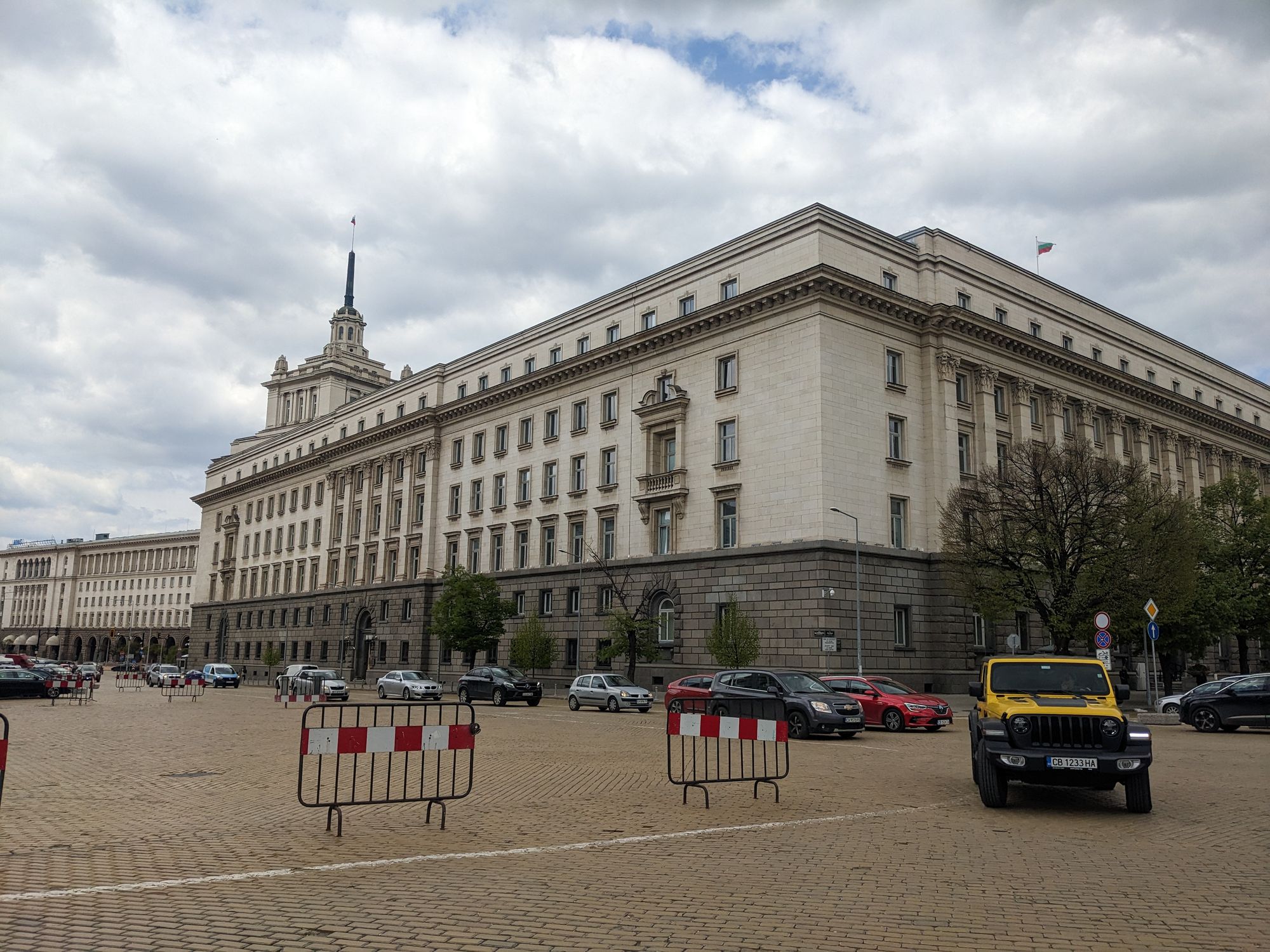
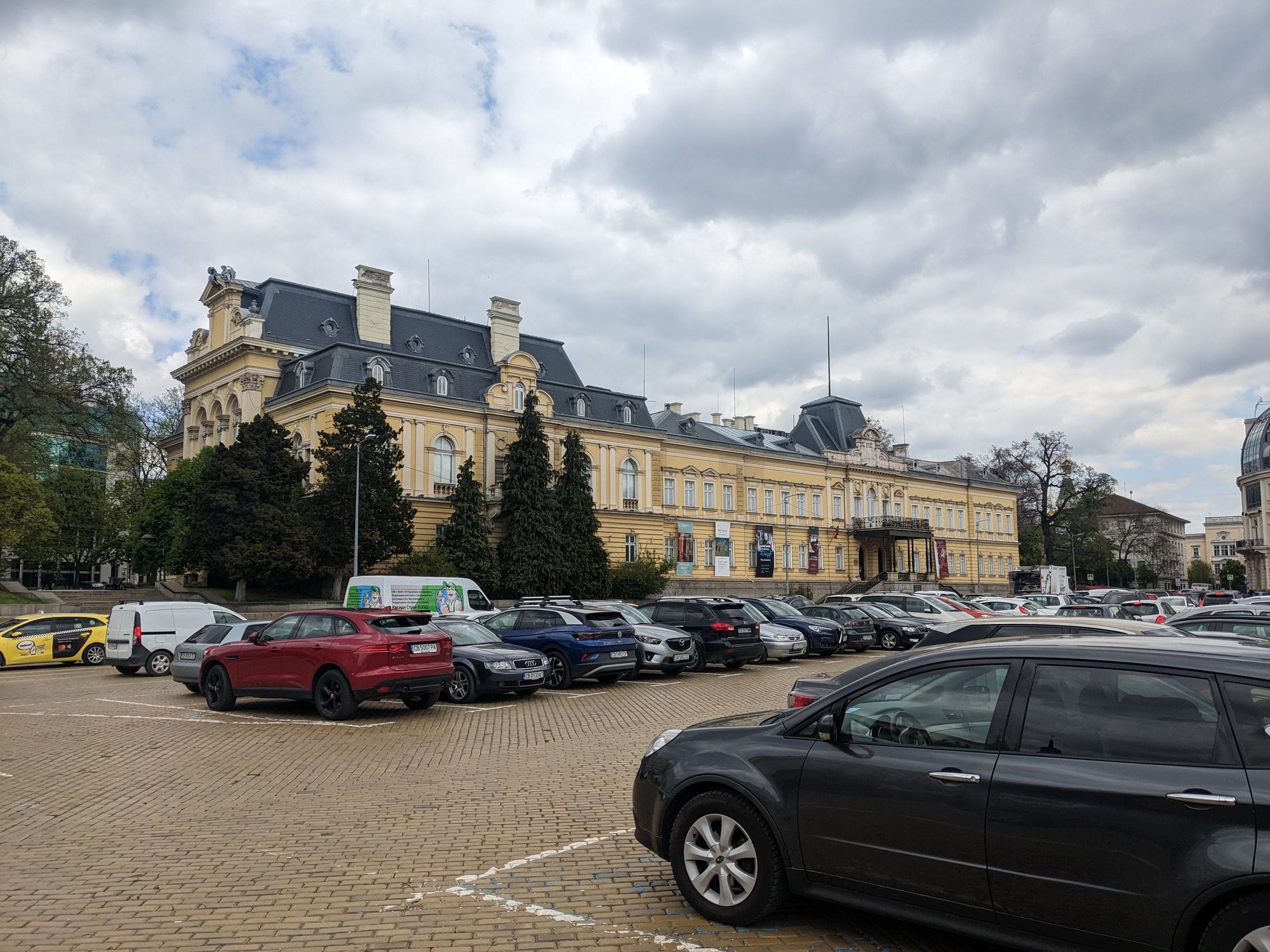
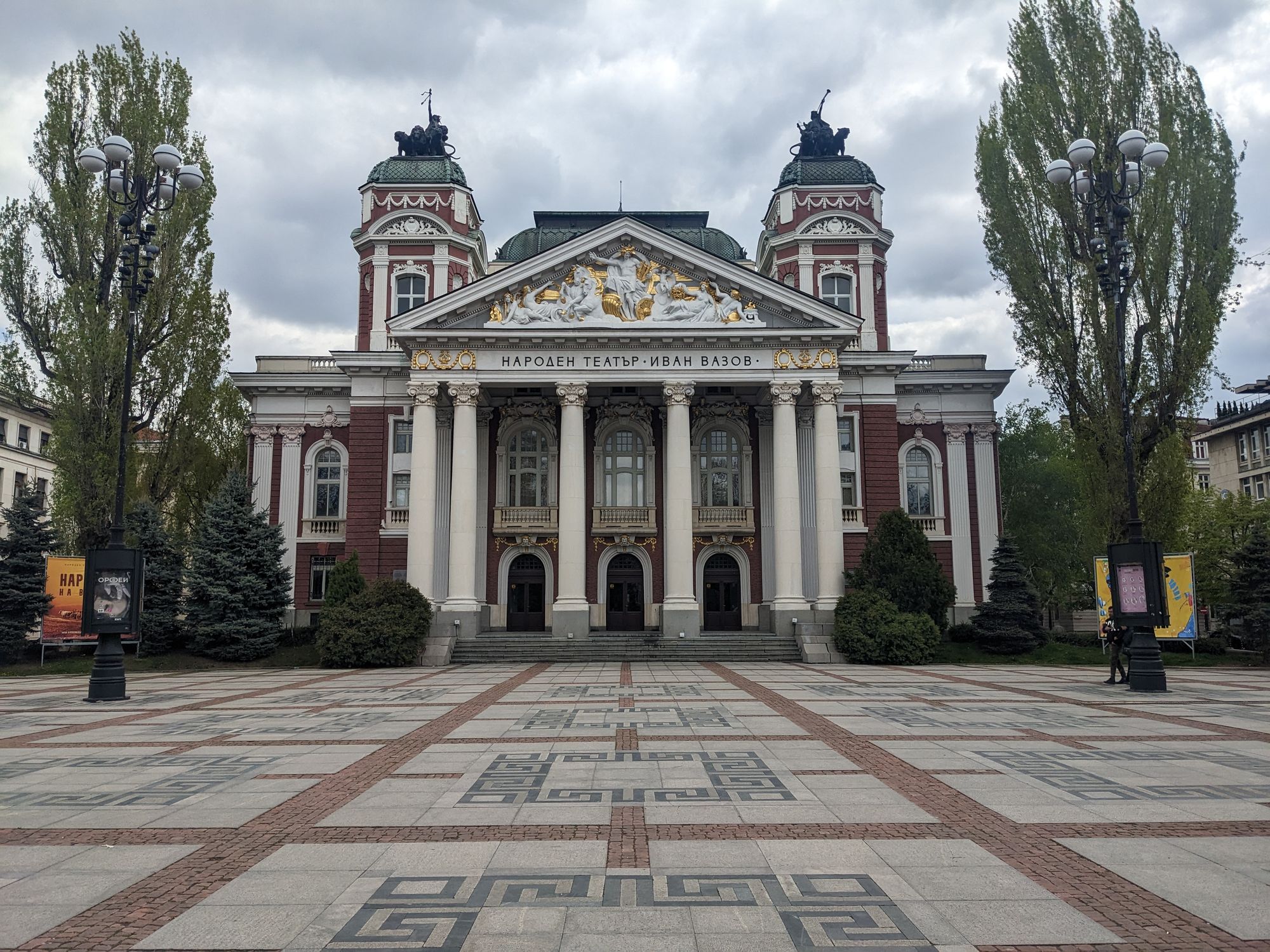
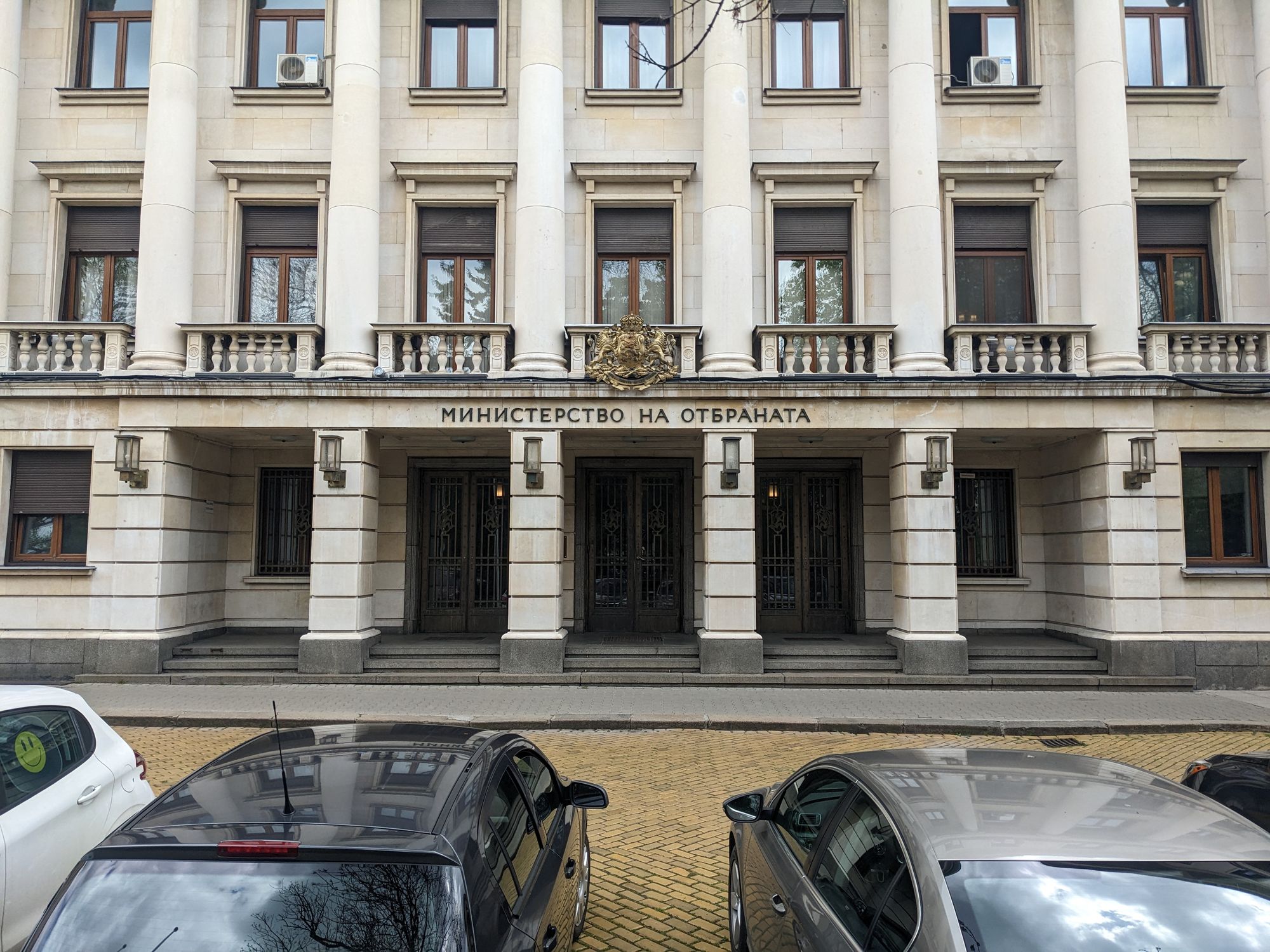
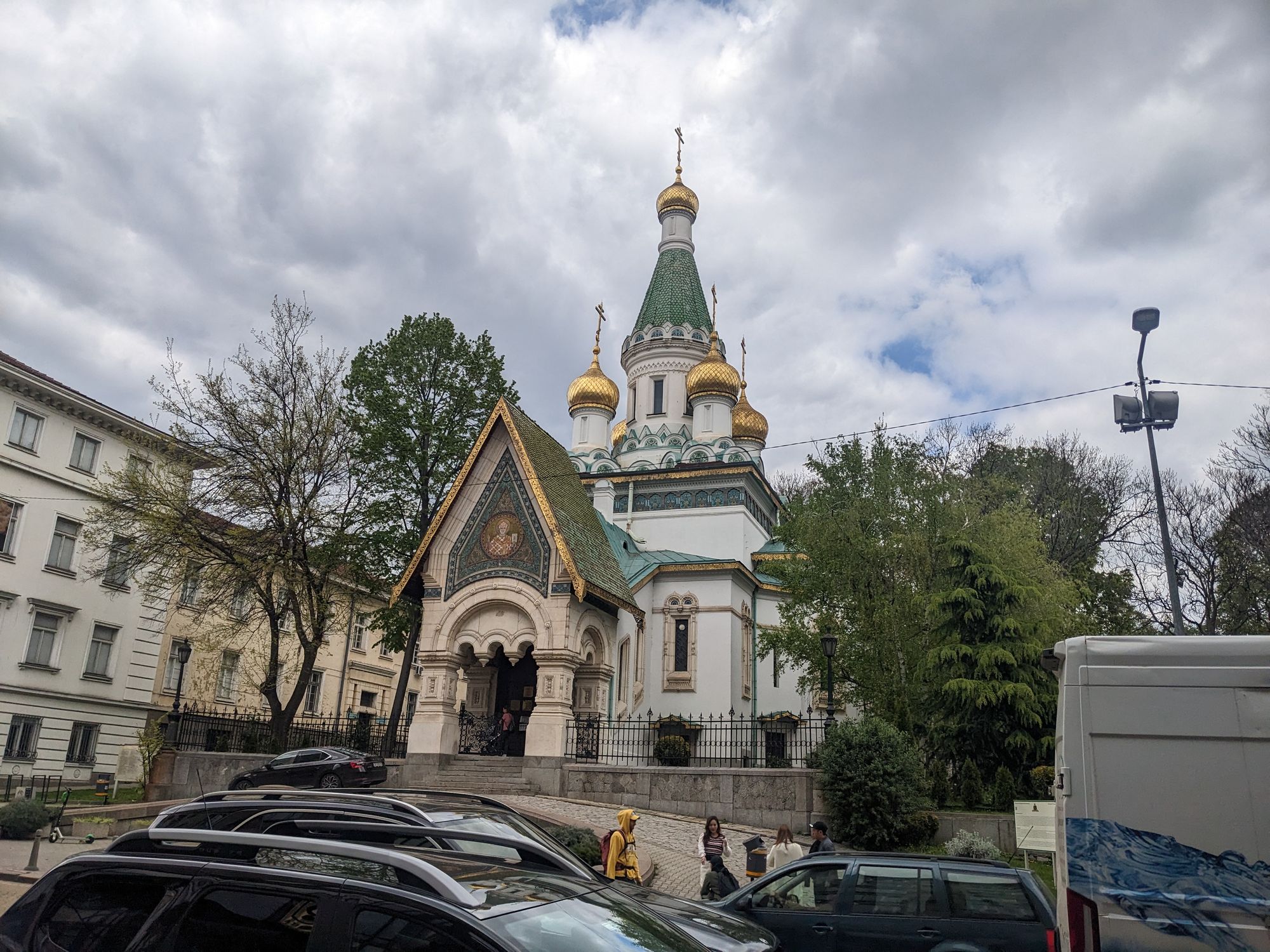
I'd had my fill of Sofia and returned to the station. I boarded the bus to Skopje in North Macedonia. On the bus with me was an Australian whose family migrated there from Singapore in the 1960s. I also chatted with a Macedonian software engineer who was building a drone training simulator for the Ukrainian army, while also learning Korean for his first big international trip to Korea. The guy really liked K-dramas.
2023 April 28, Friday
I spent the day in Skopje, the capital of North Macedonia. The North is an important qualifier because Greece and North Macedonia have only recently resolved a 25 year dispute over naming rights to 'Macedonia' which I'm not going to get into here. In the morning I linked up with a local tour guide who showed us some highlights of Skopje:
- The Statue of the Great Warrior. In the main square there's a giant statue of a mounted warrior bestriding a stallion atop a fountain. The statue was originally of Alexander the Great, but as part of The Dispute it was rebranded as the Statue of The Great Warrior.
- The Old Skopje Railway Station. This was the Skopje Railway Station from 1940 until 1963 when it was destroyed in an earthquake. What remains of the building is now a Museum of the City of Skopje. The clock on the exterior wall has never been repaired, it is still stopped at the moment of the earthquake.
- The Public Prosecutor's Office is a government building like any other except that it was built so close to the river that it's slowly sinking into the ground. Eventually it may lean further forward than the Leaning Tower is Pisa.
- The Monument of Strength, Glory and Victory is in the heart of Skopje Fortress, perched on the highest point in the city. From here you can see the mountains surrounding Skopje, including Vodno to the southwest, which hosts a telecom tower and one of the largest Christian Crosses in the world.
- The Stone Bridge crossing the Vardar river. The bridge symbolises the connection between old and new Skopje, and features on the city coat of arms.
Our guide told us that Skopje is the "Kitsch Capital of Europe" as many buildings have a decorative, classical appearance that's simply a modern, non-functional facade. Many buildings looked to be made of marble which was, in fact, just wooden cladding.
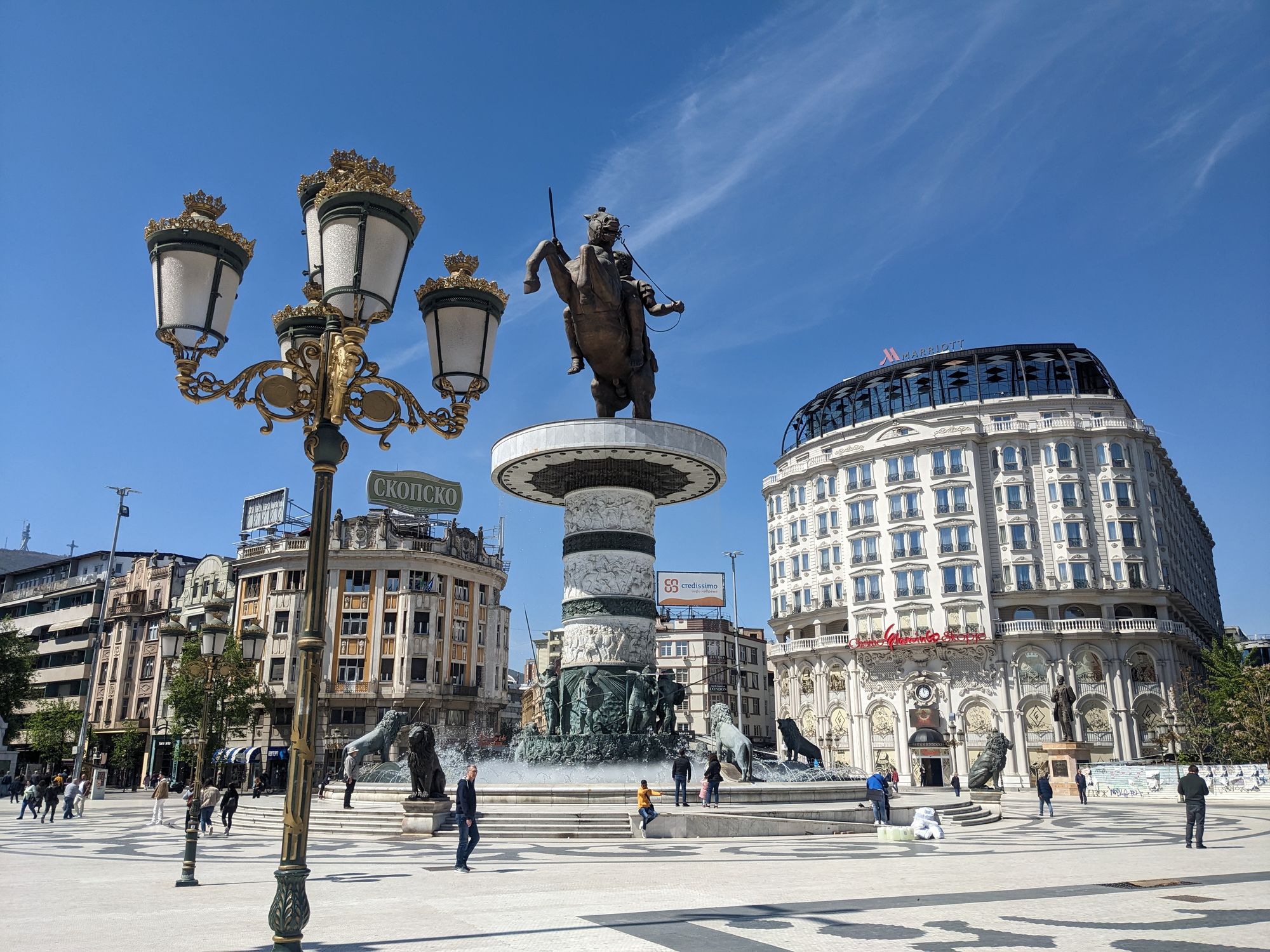
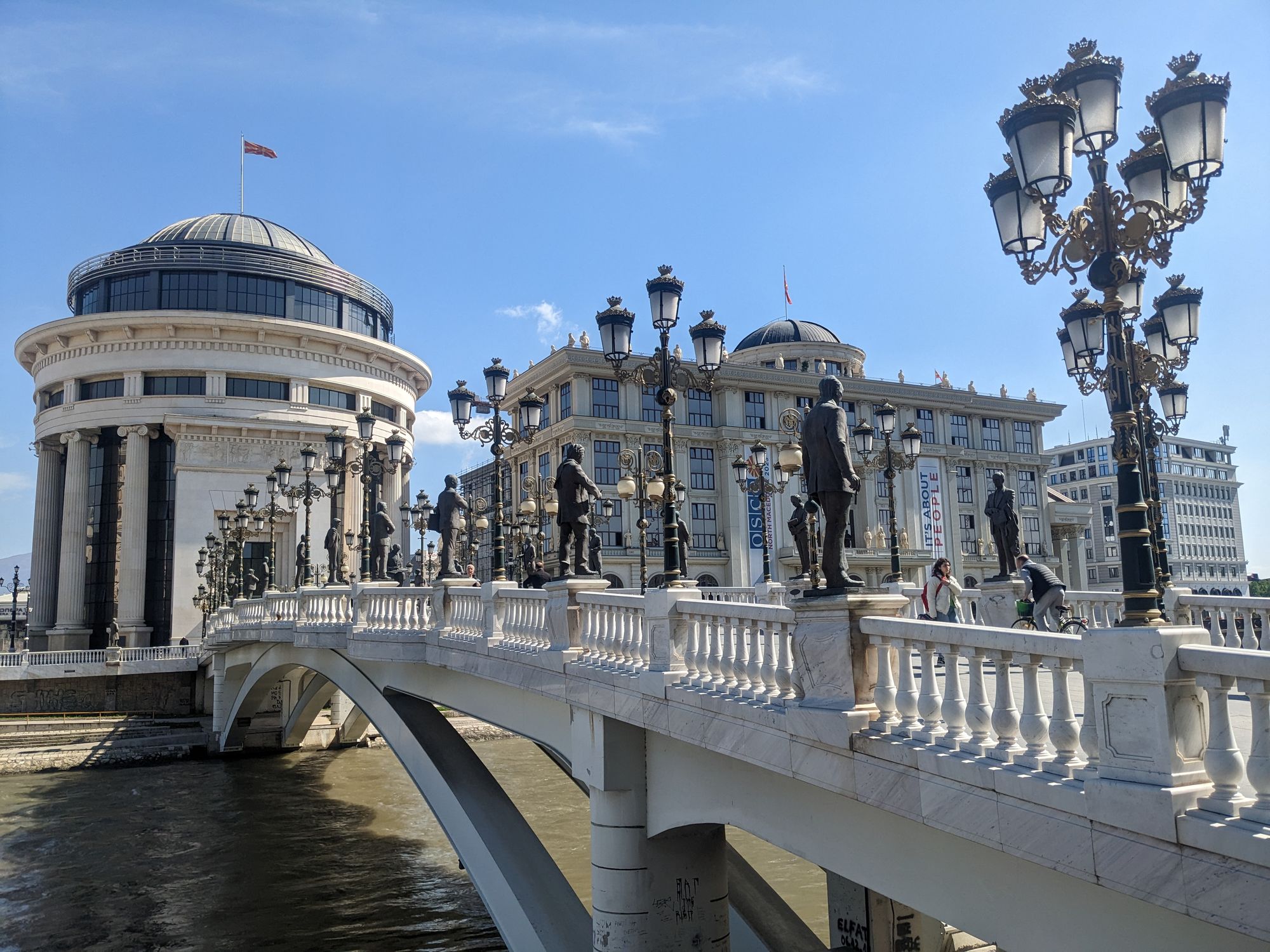
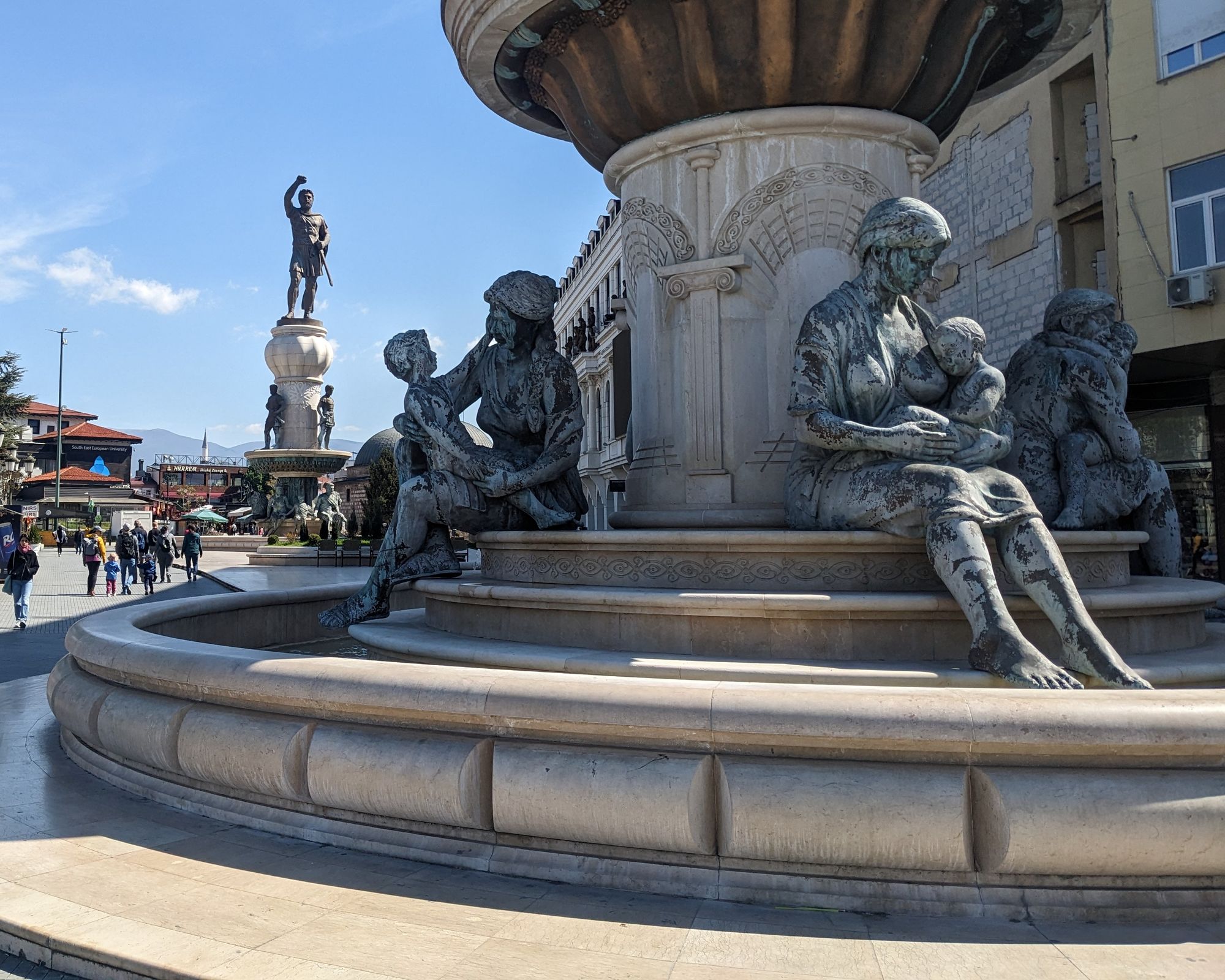
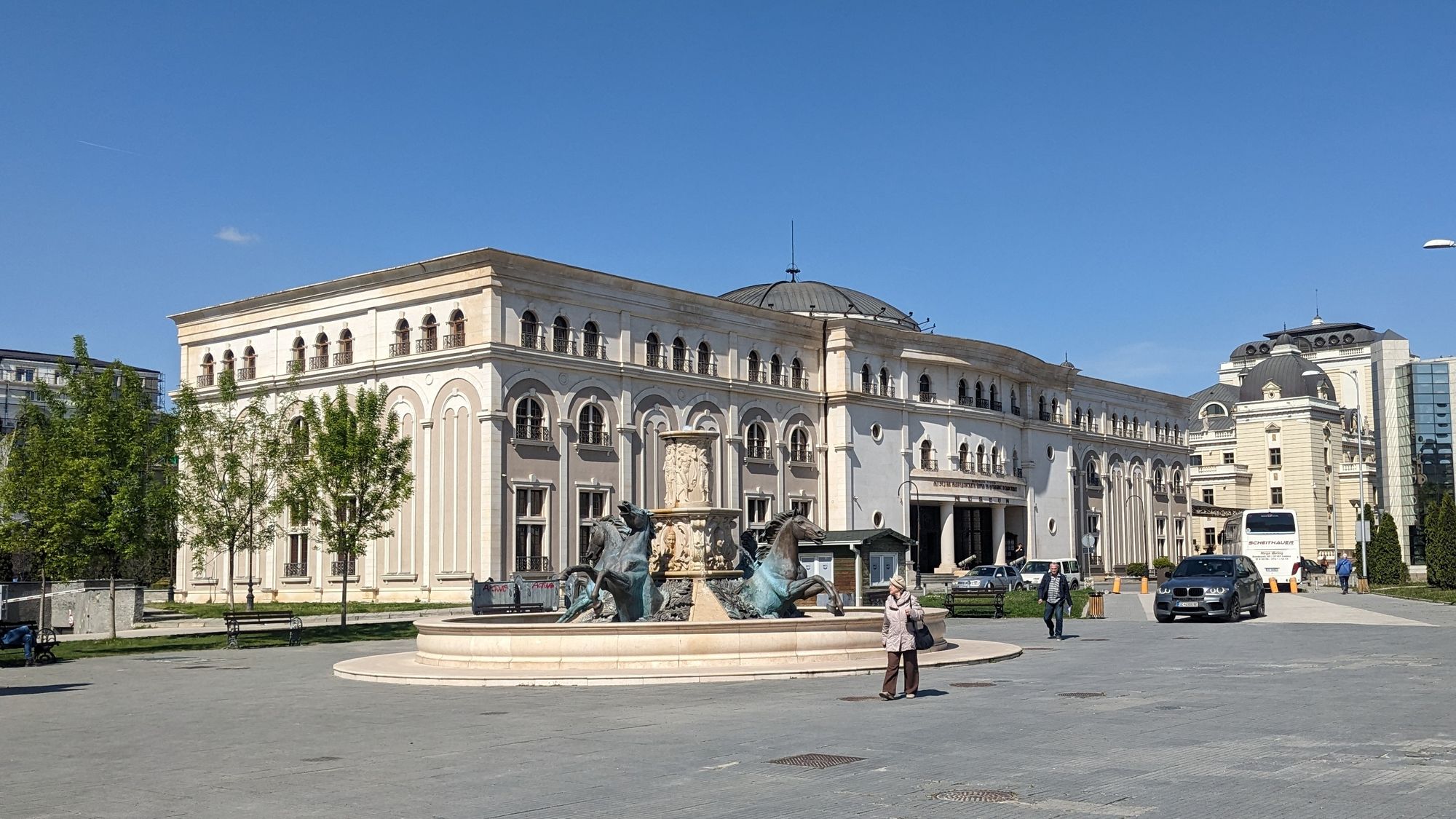
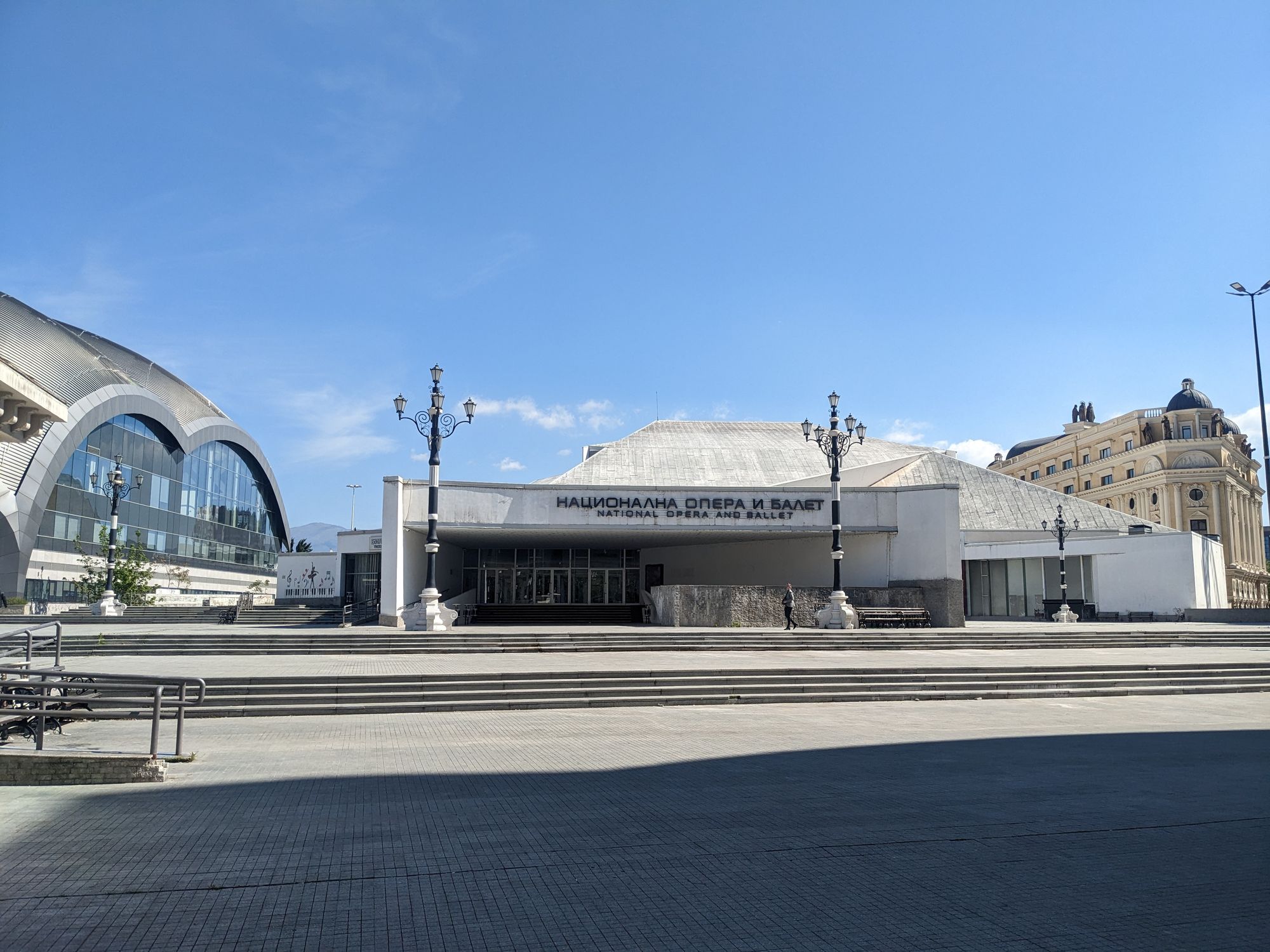
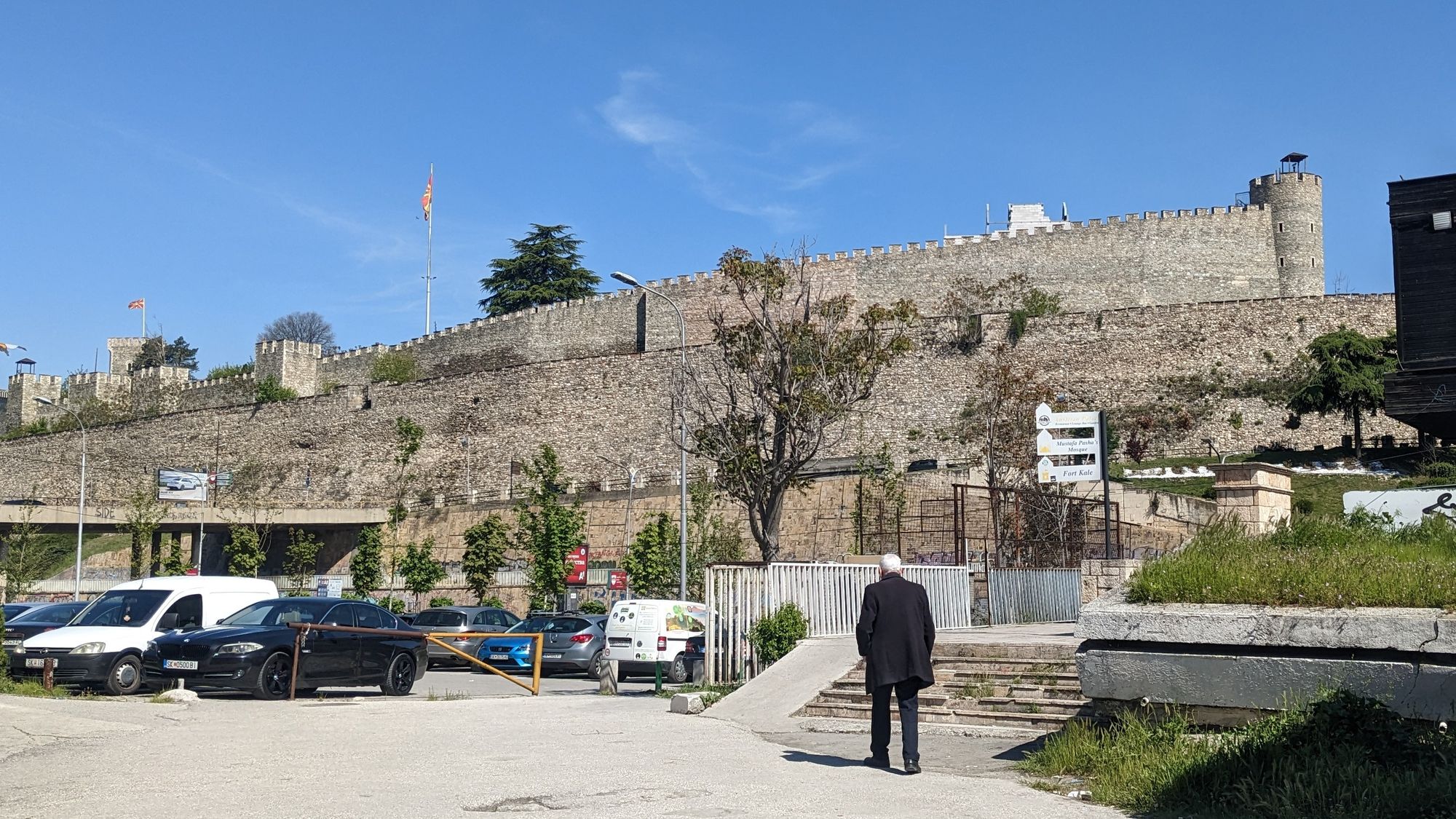
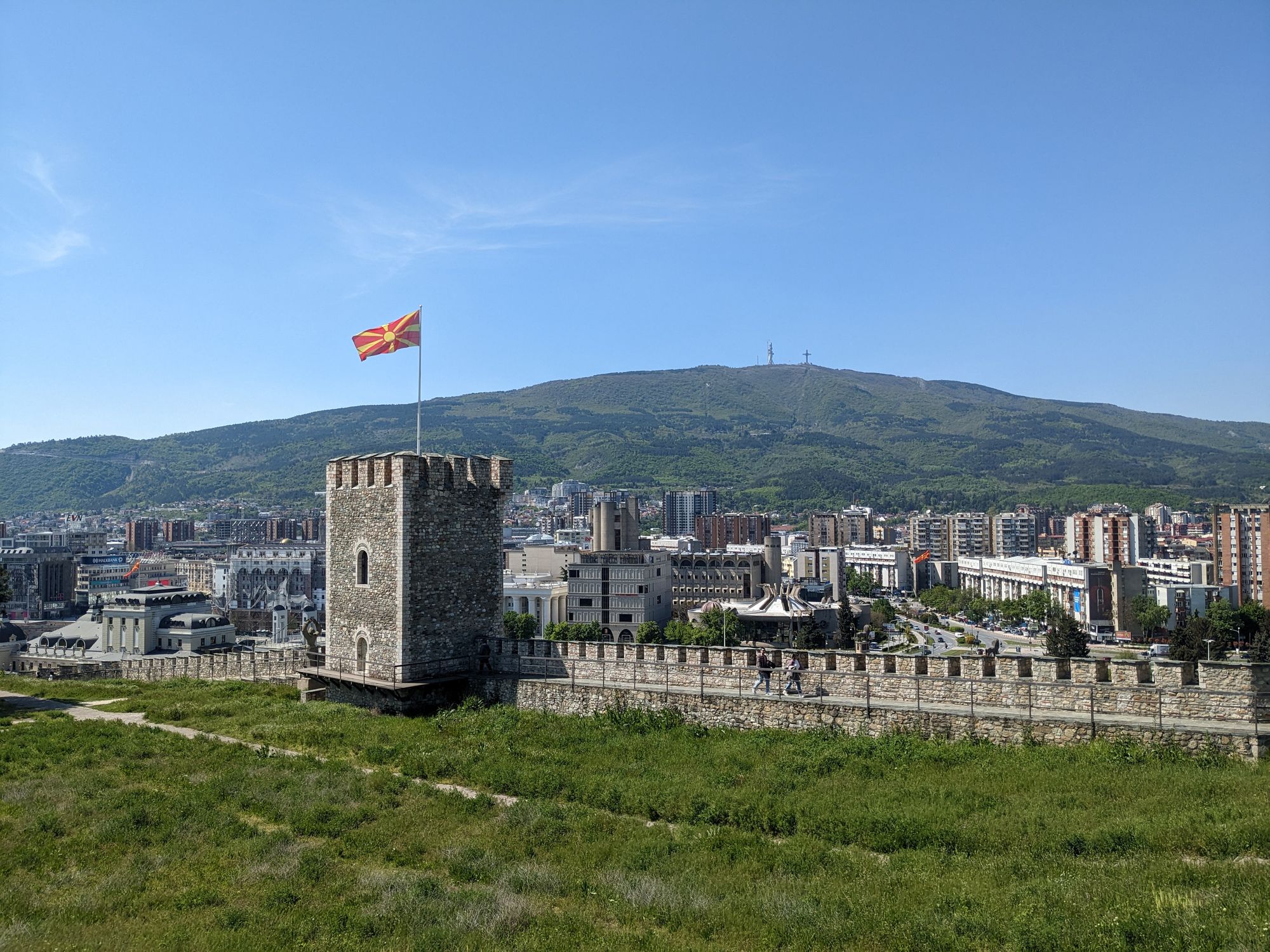
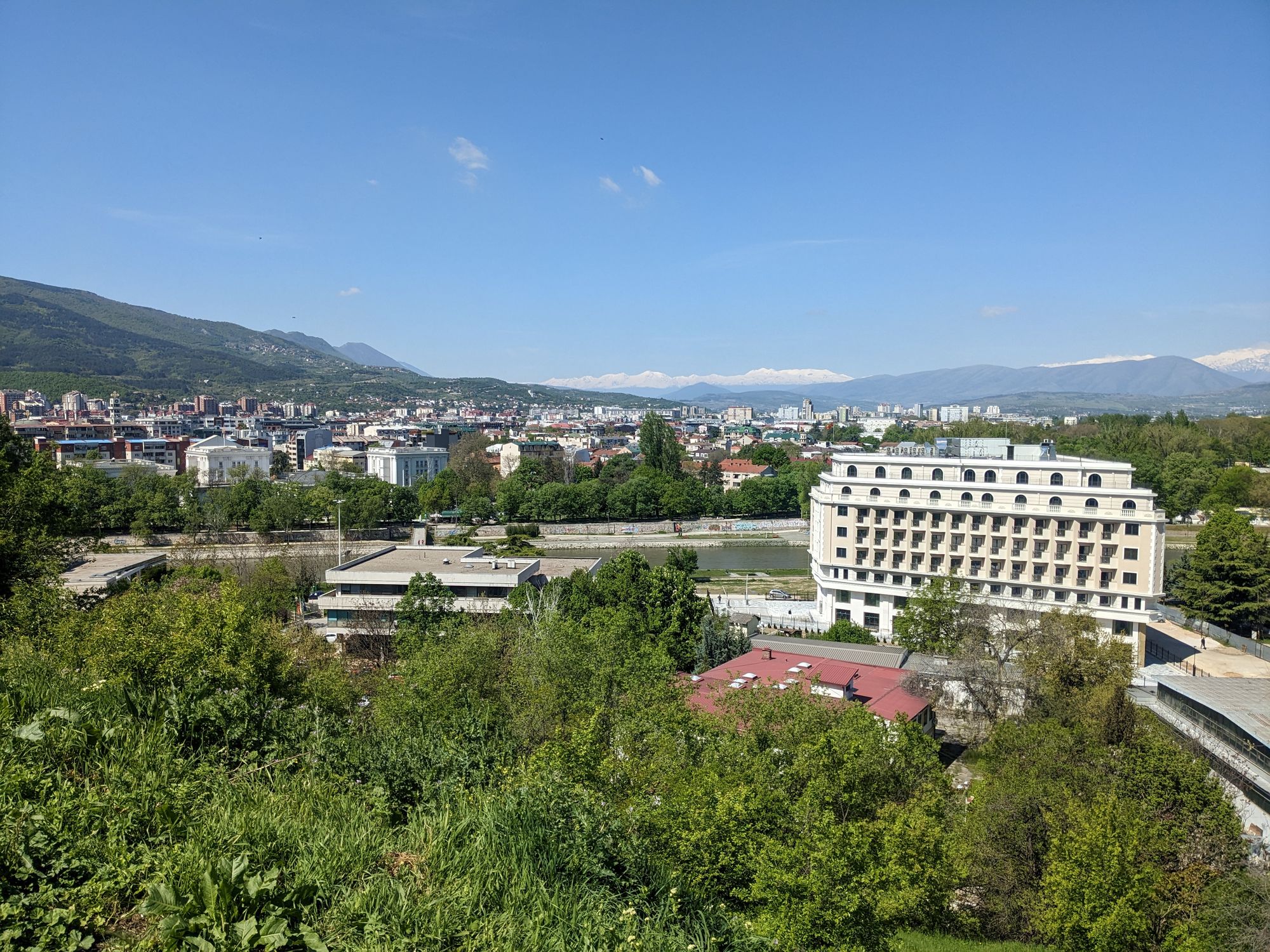
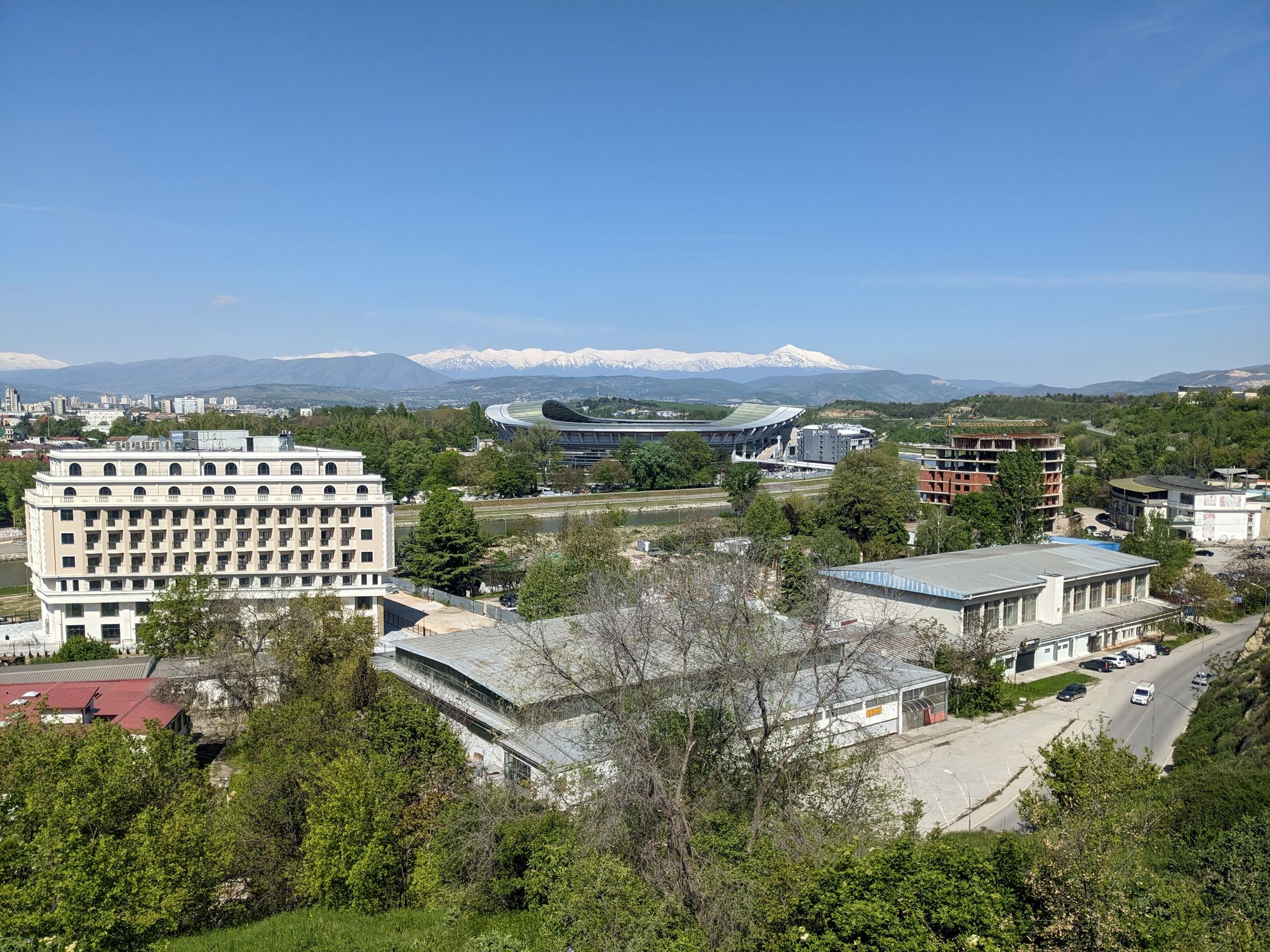
After the tour I boarded the coach to Thessaloniki. At the border crossing we stood around for 30 minutes, admiring the North Macedonian flag behind us, the flags of Greek and the European Union before us. We reached Thessaloniki just before sunset.
2023 April 29, Saturday
The city of Thessaloniki is known as the 'co-capital' of Greece as it was once the co-reigning capital of the Roman empire alongside Constantinople.
The city centre is organised around long, straight roads running east to west. Starting in the Roman forum in the northeast, you can walk through the park past the statue of Prime Minister Eleftherios Venizelos, down the Platia Aristotelous and to the sea in the southwest. Heading south-east along the seafront is a pedestrian strip, restaurants and benches where you can feed the friendly sea-life. At the end of the strip is a square that houses the White Tower of Thessaloniki, which is no longer white but actually quite buff in colour.
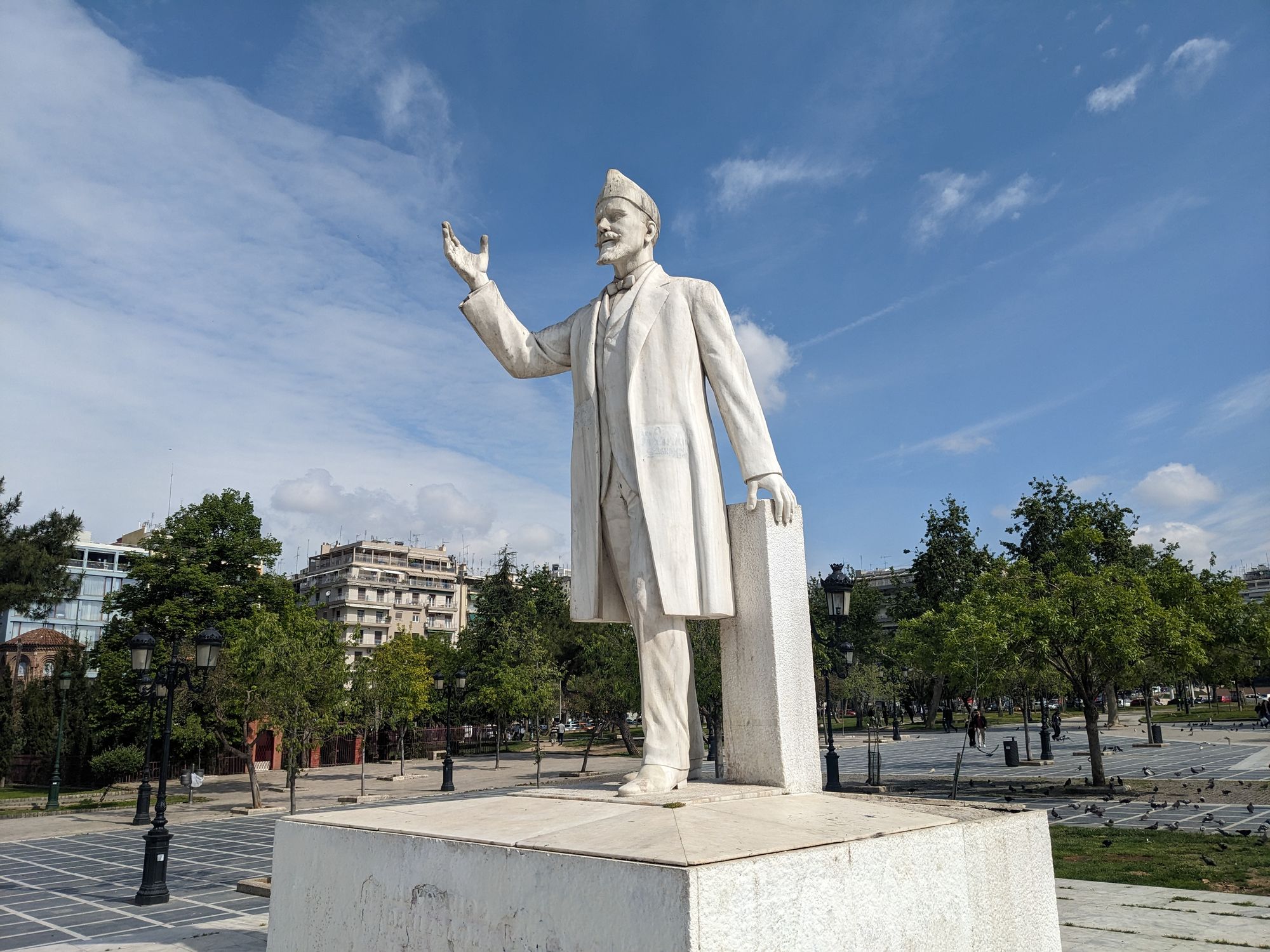
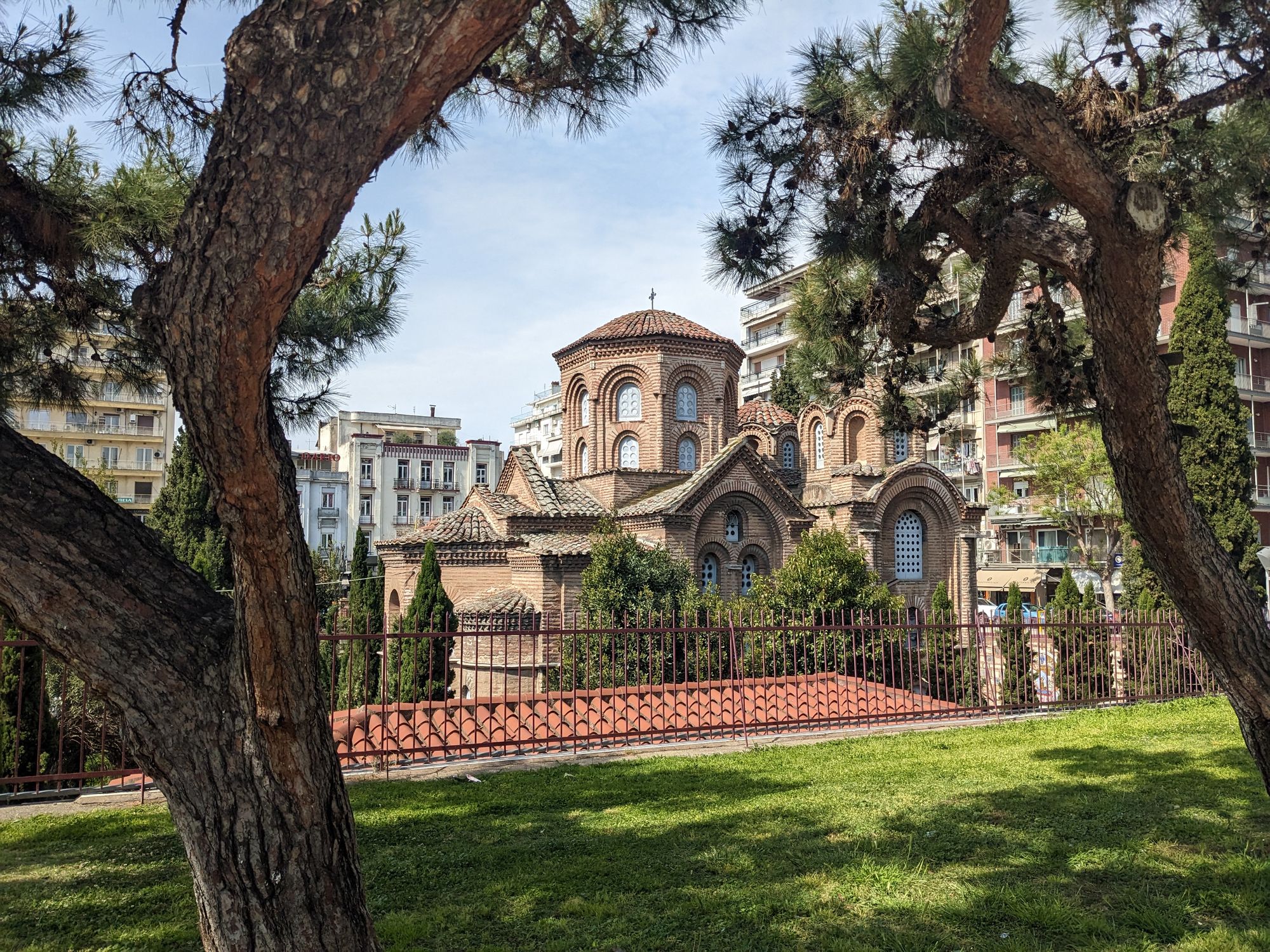
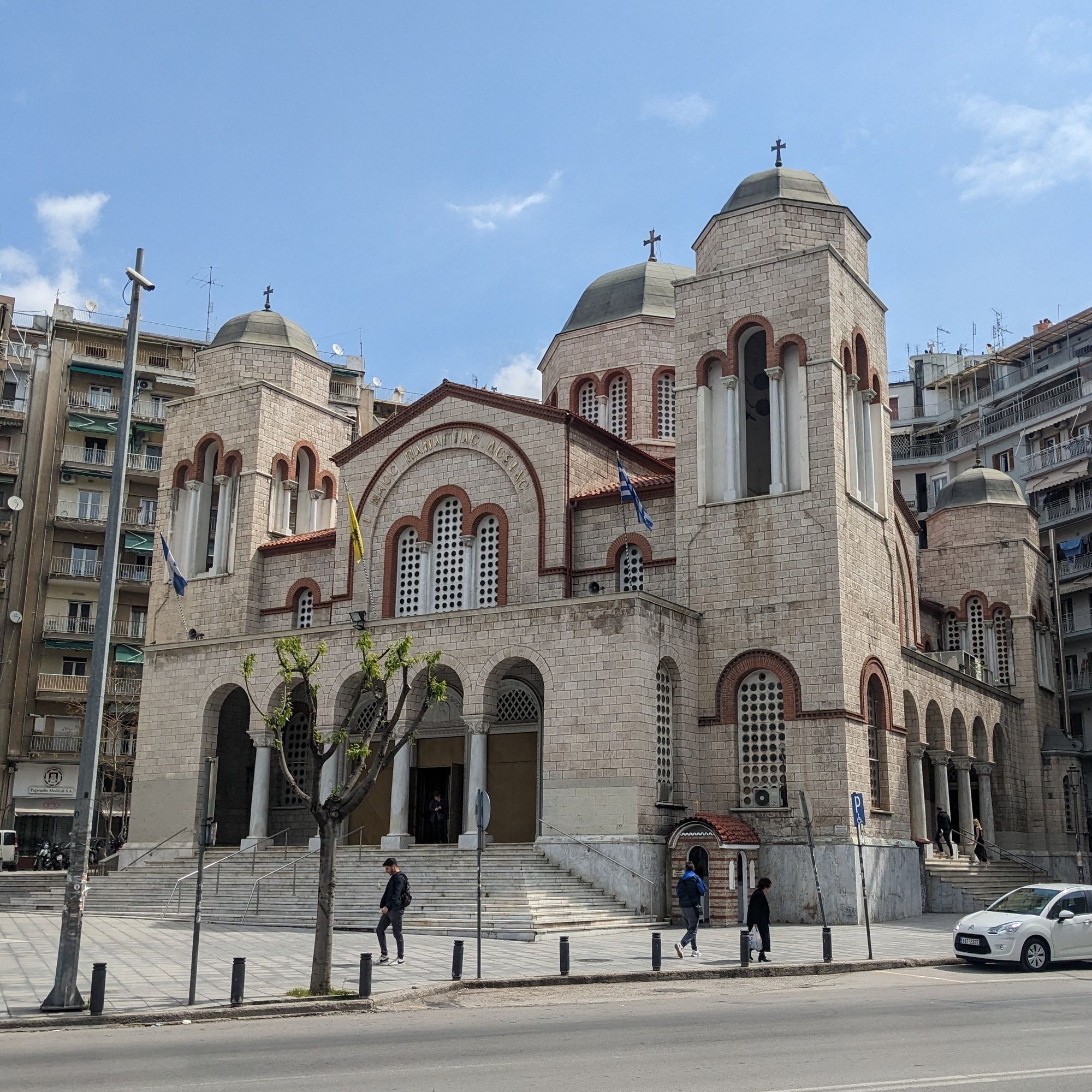
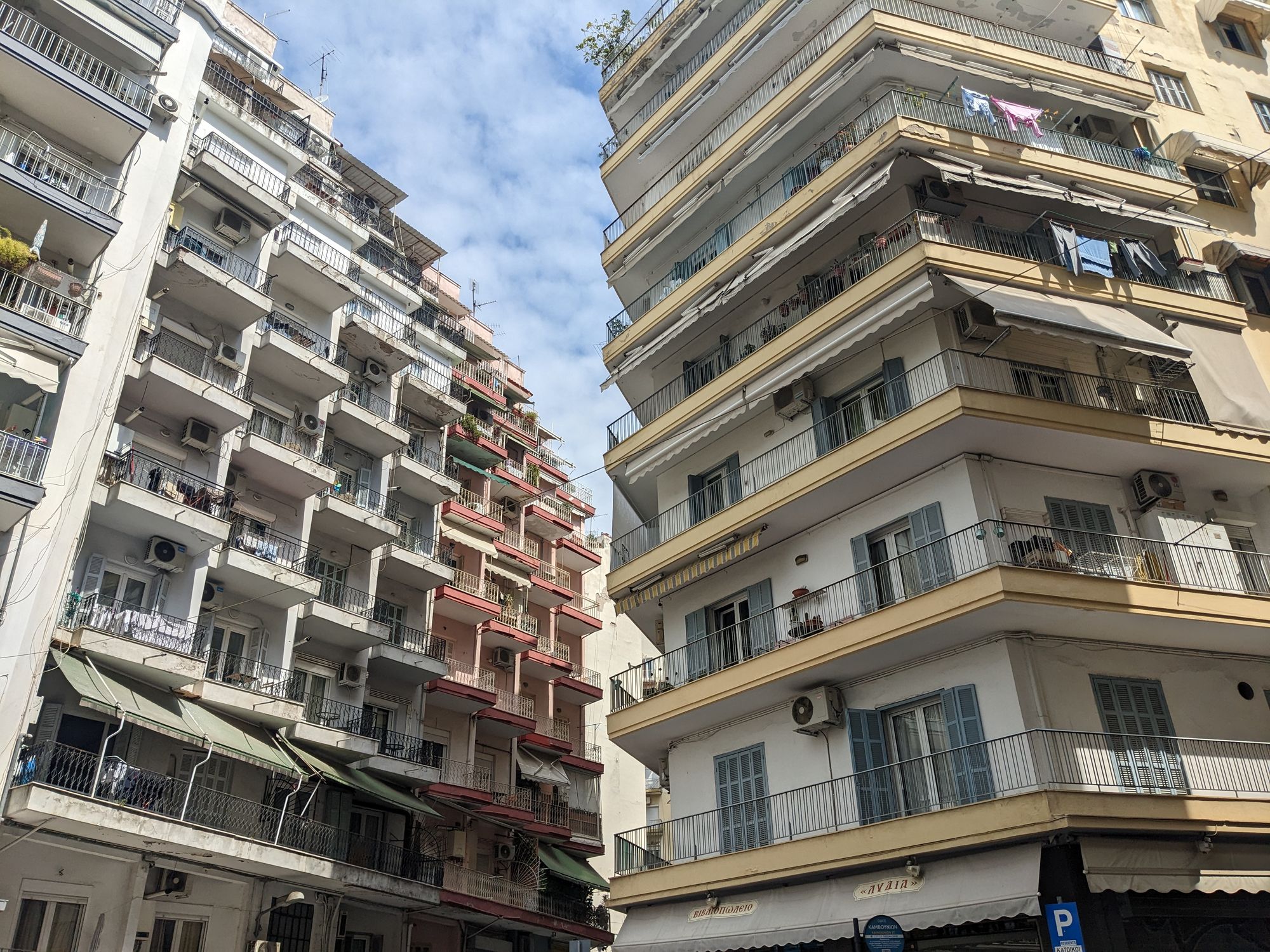
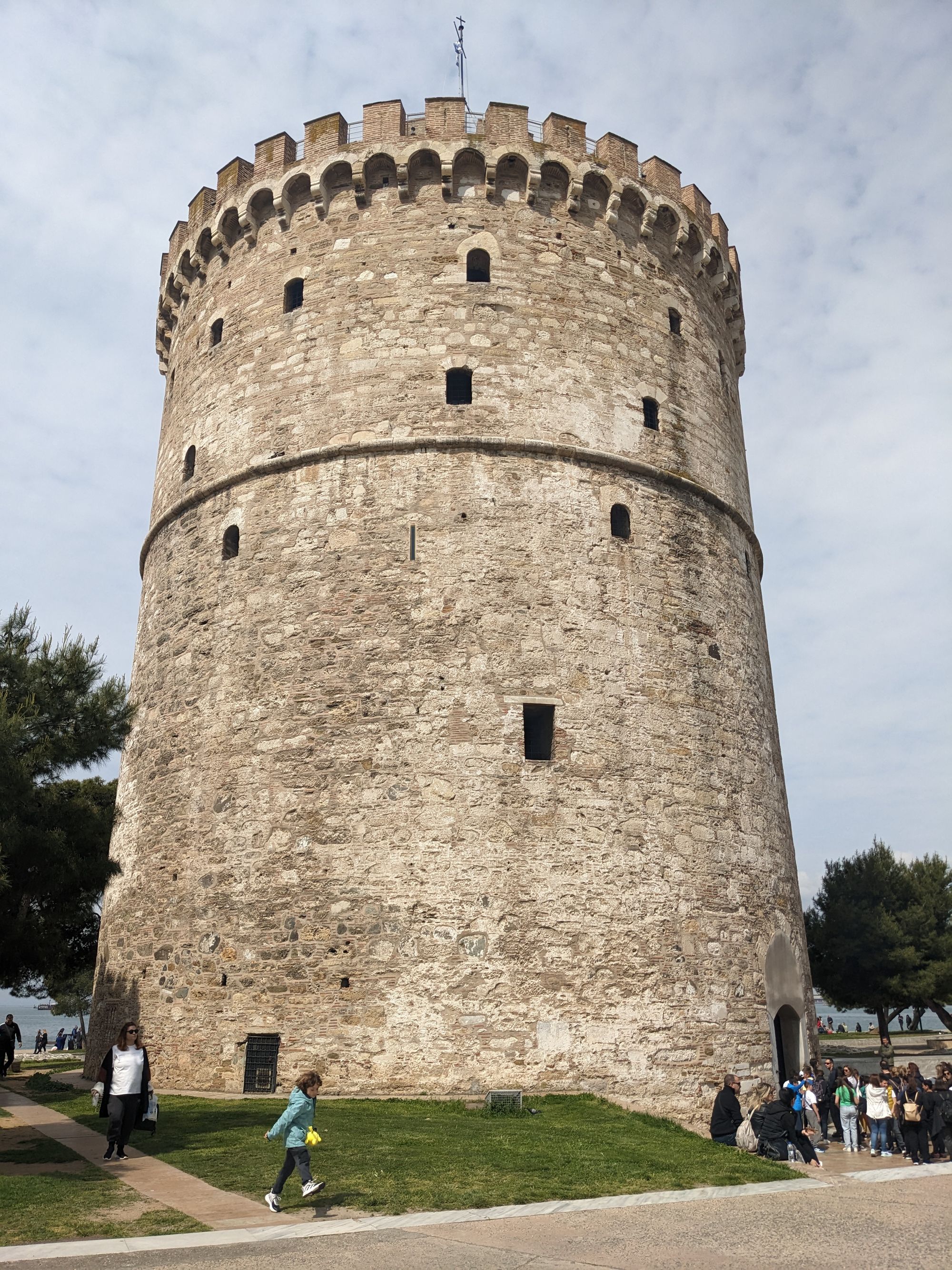
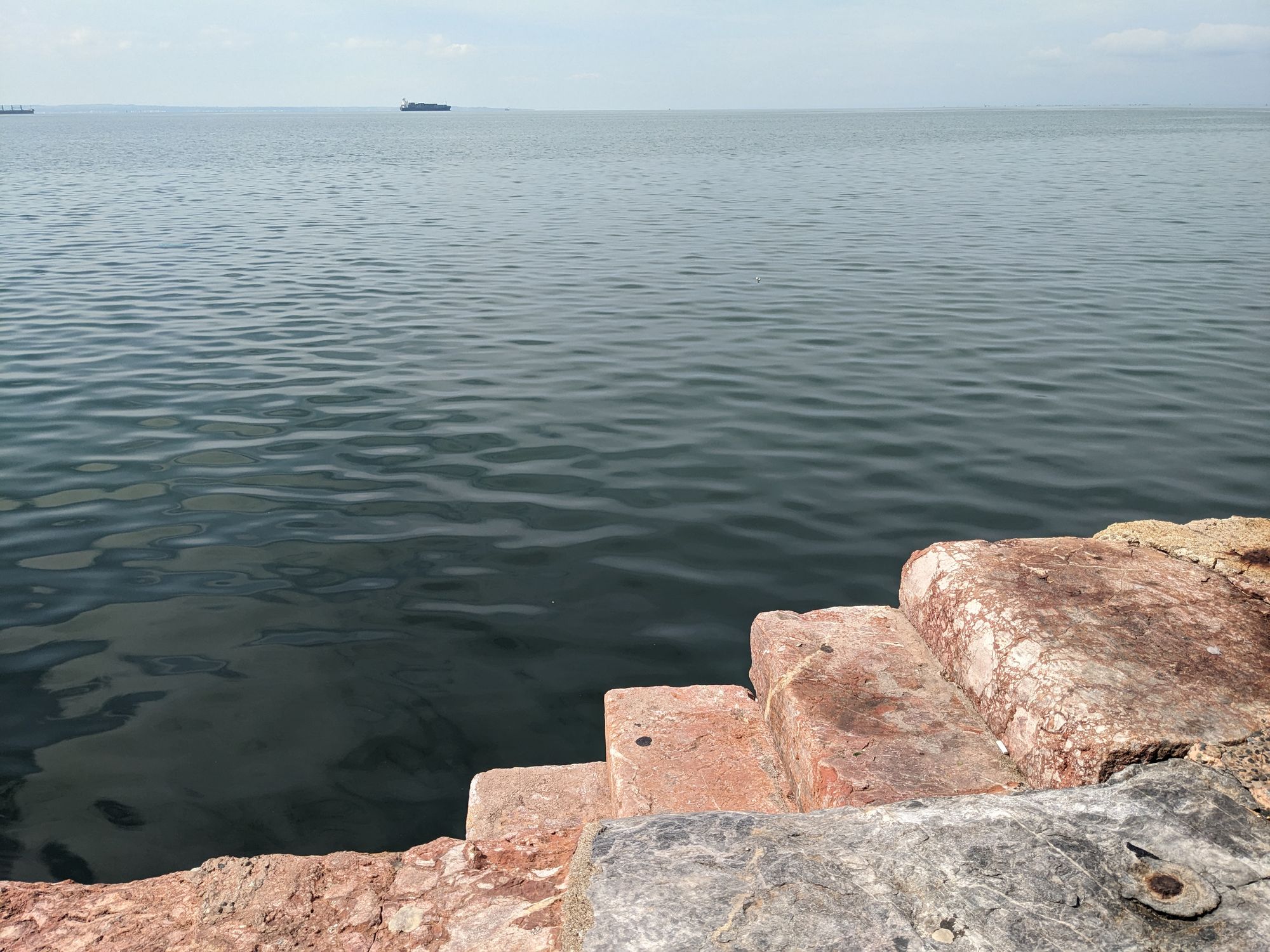
That morning the train from Thessaloniki was cancelled, likely due to a high-profile train crash on February 28. While waiting for the replacement bus I spoke with the station cafe's barista. He told me about his Grandmother's migration to Greece after the Turkish government expelled Istanbul Greeks in the 1960s. He told me about his Greek military service, where they had been training in the wilderness and had to forage their own food. He said that he stolen a farmer's olives to survive, but only enough to get by. Then it was time to board the bus to Athens.
2023 Apr 30, Sunday
The Sunday in Athens was my only chance to see the sites because the next day was a Greek holiday and after that I would fly home. I met my tour guide outside a nearby hotel and it turned out that the group tour I'd booked consisted of just me, so off we went.
First we went to the Acropolis to beat the crowds. Acropolis, my guide told me, simply means "the city's highest point". The Greek government maintains this distinction by limiting the height of buildings in a 116 hectare circle around the Acropolis so that when you wander the old town you can look up and see the Parthenon from wherever you are.
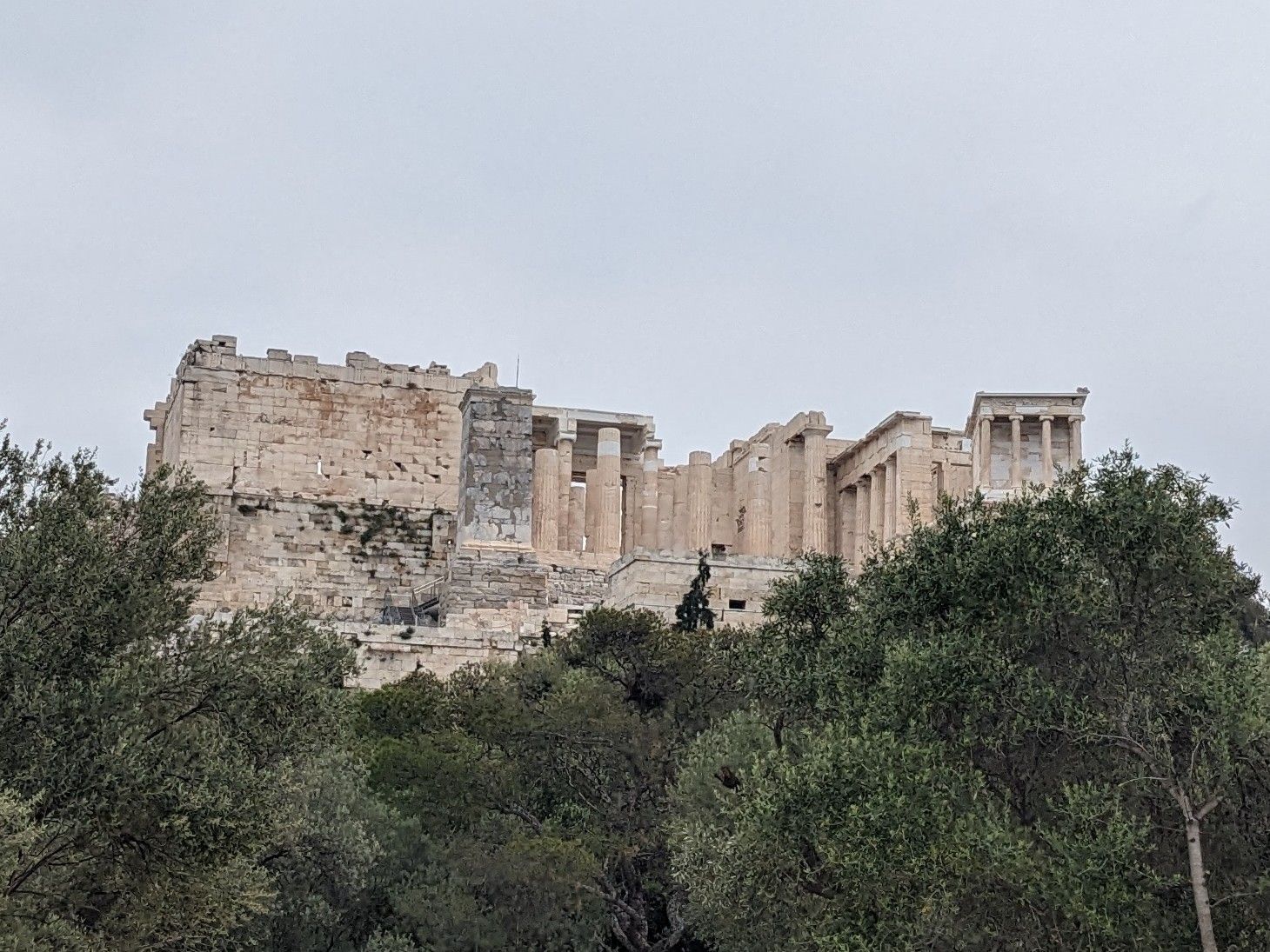
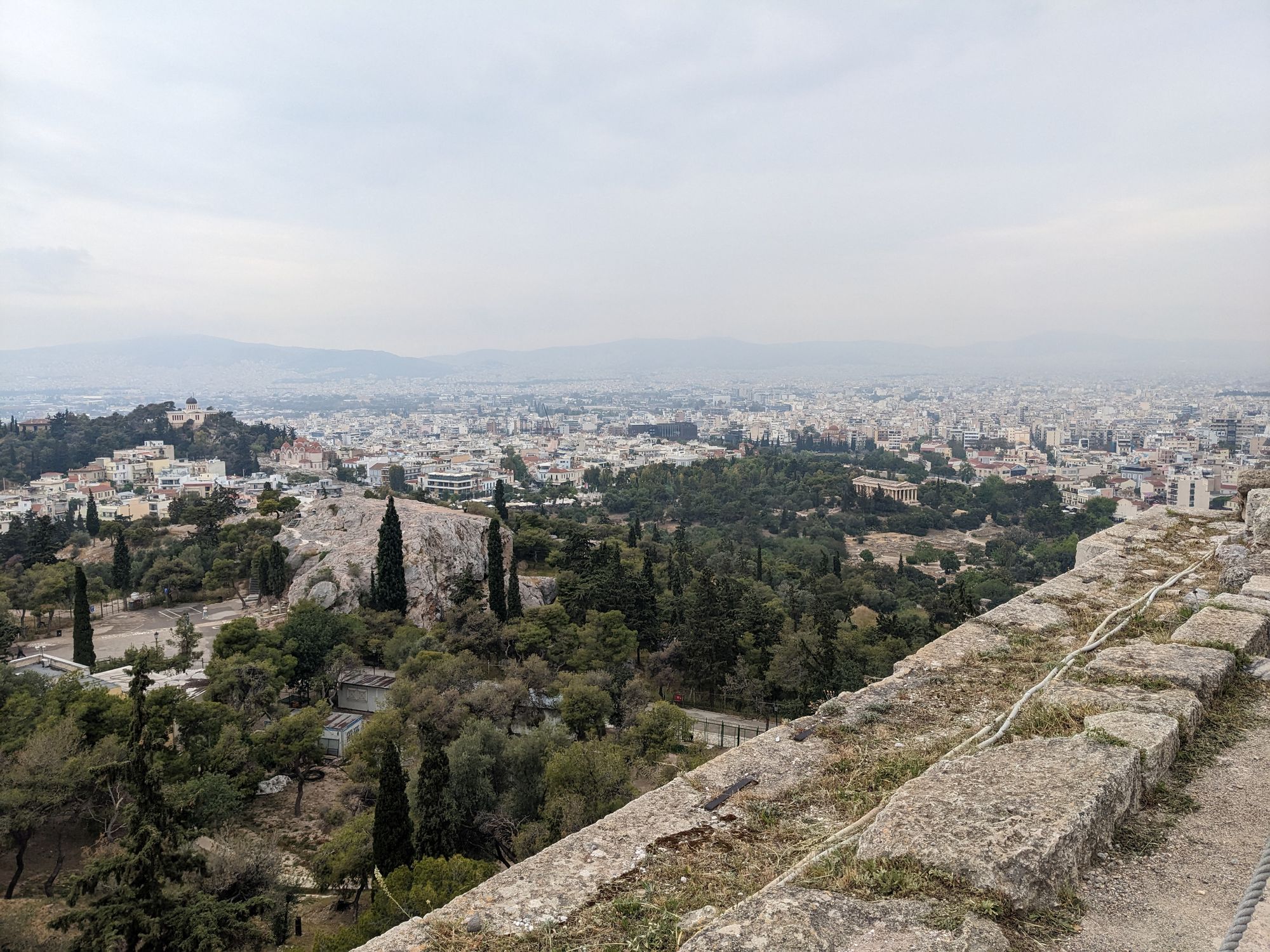
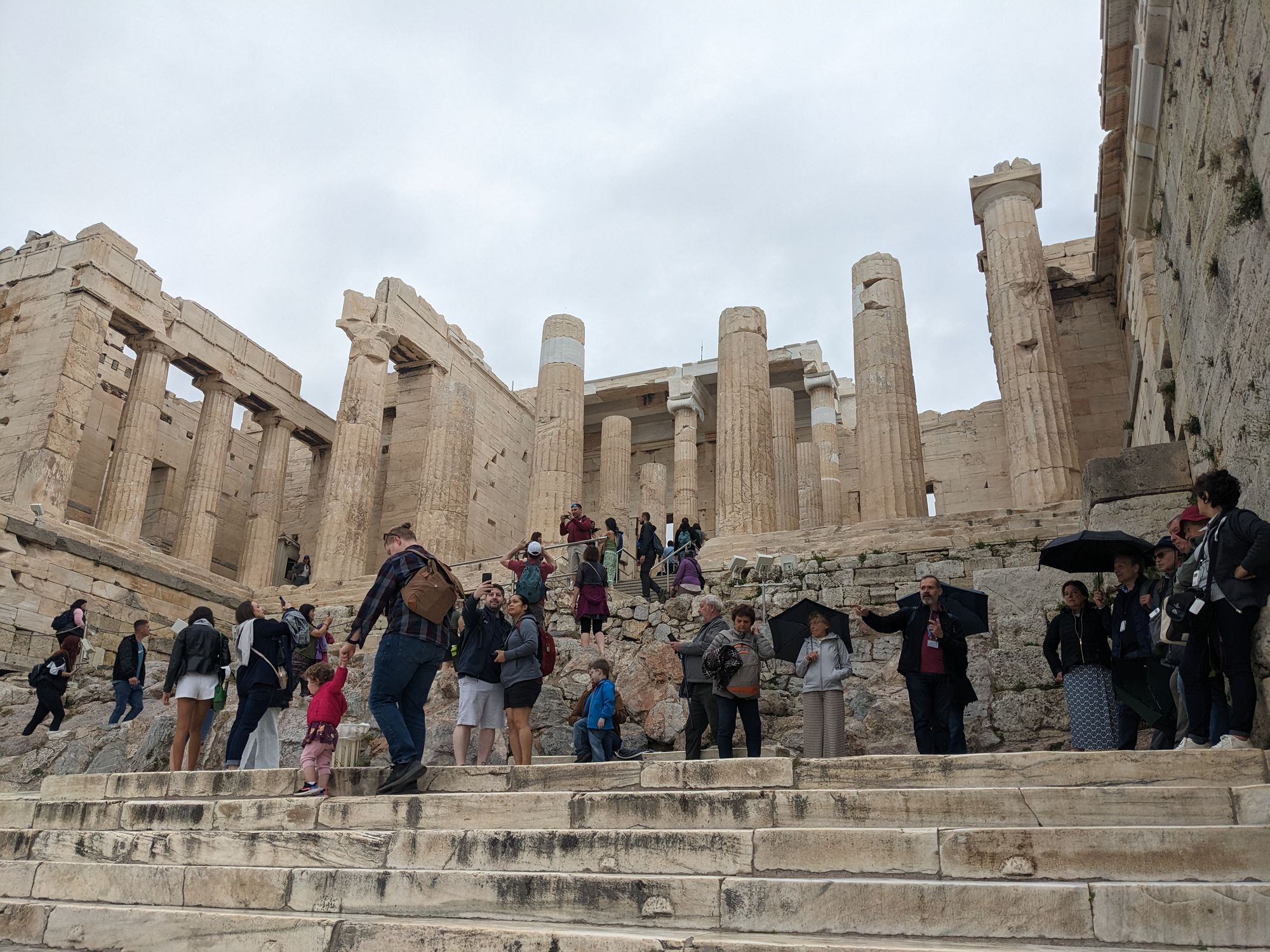
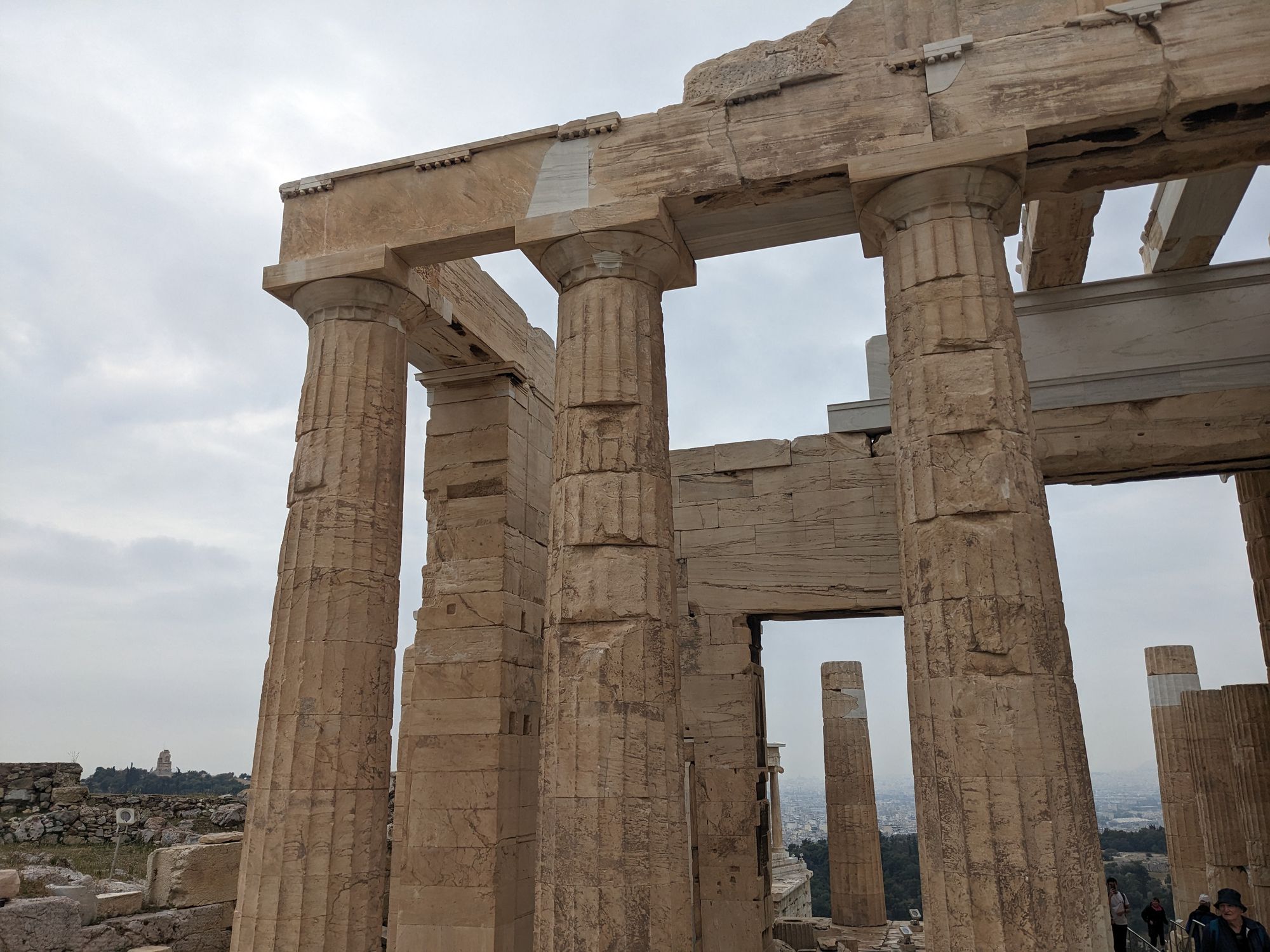
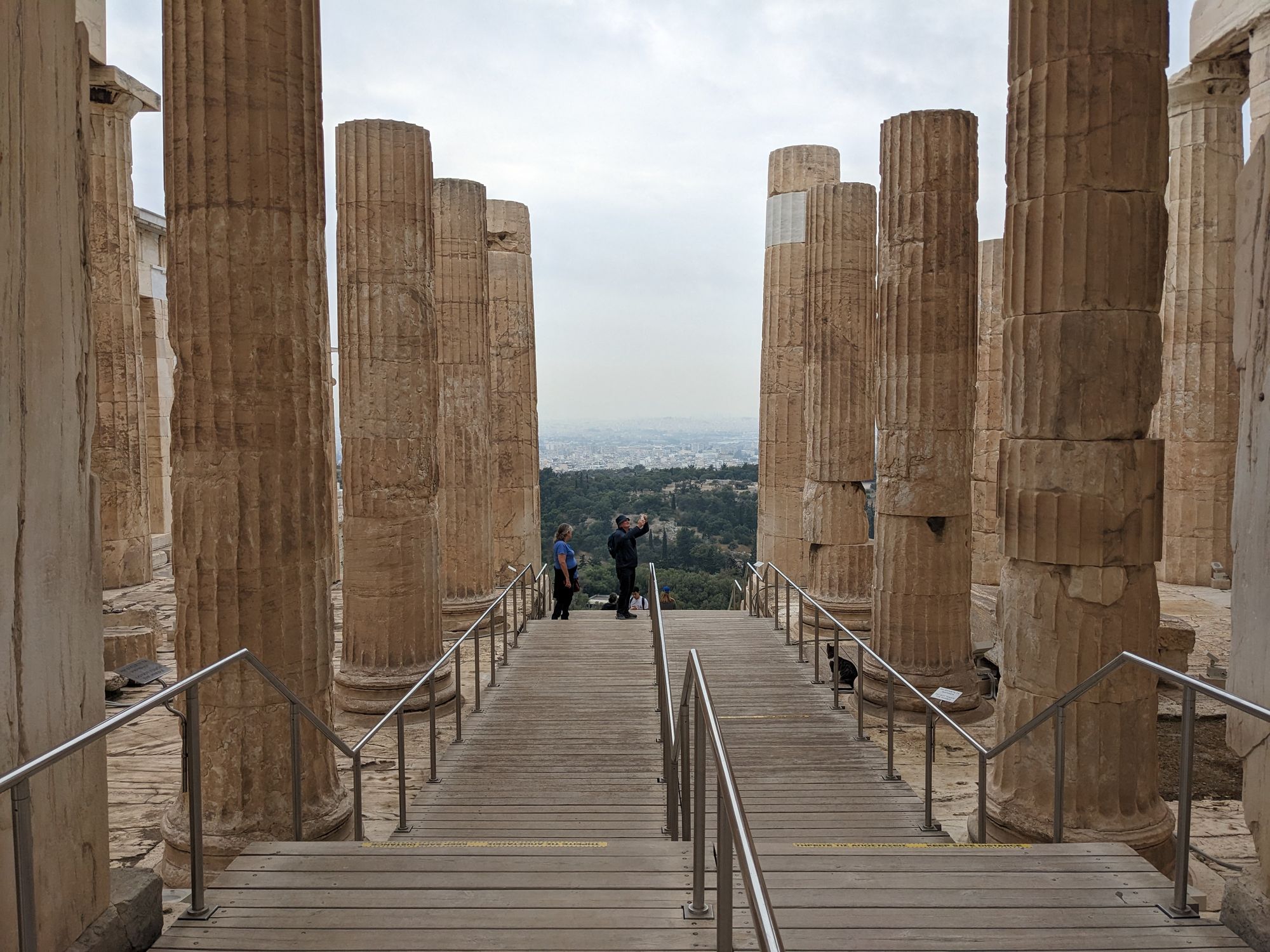
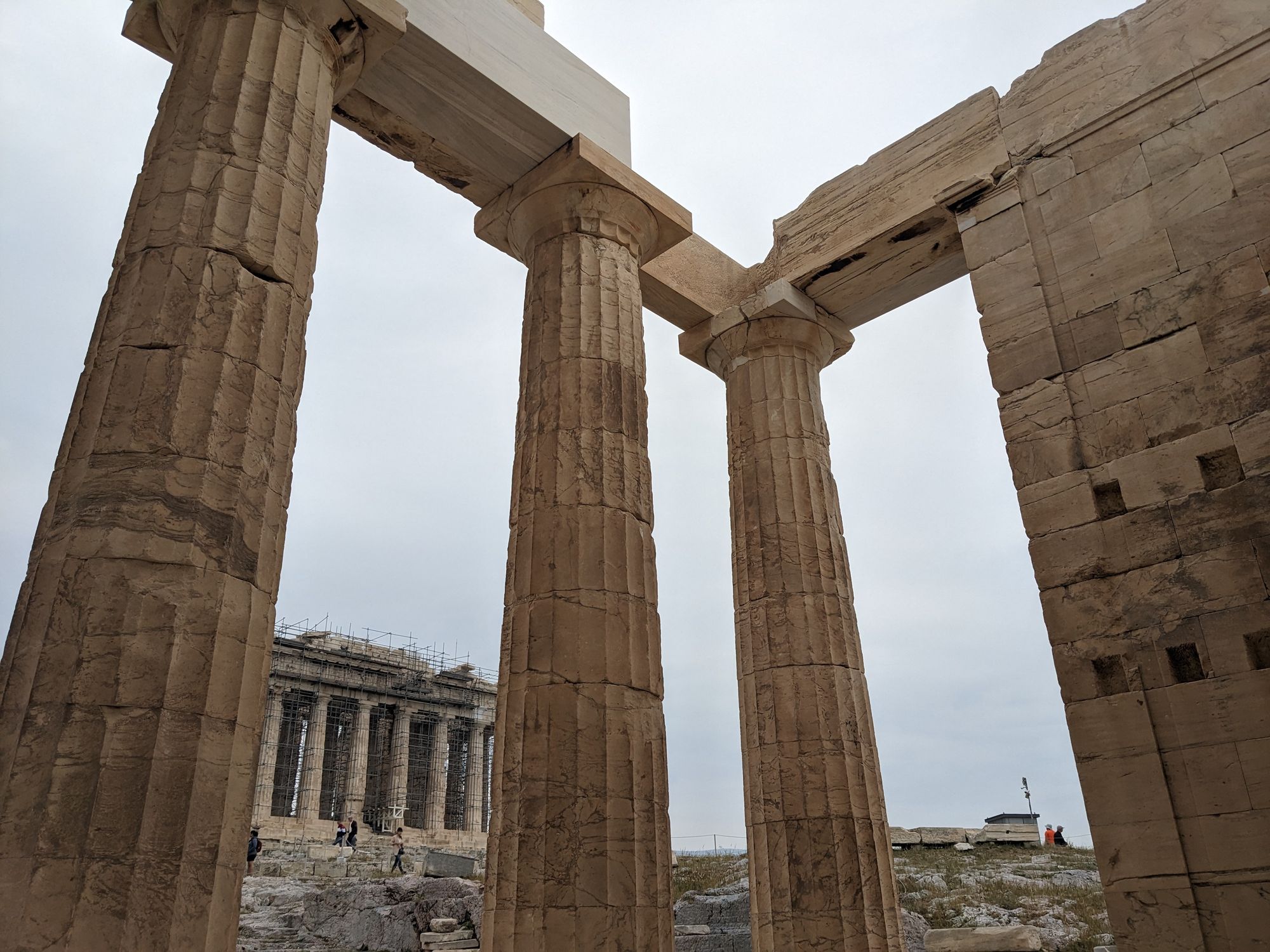
The Acropolis itself is a hilltop citadel that houses several ancient buildings. The first is the Propylaia, a grand entrance gateway designed to impress visitors with its imposing size and intricate details. It was built in the 5th century BCE and features six Greek Doric columns on the façade.

Past the entrance lies the Erechtheion, a temple dedicated to Athena and Poseidon. It is famous for its Caryatids - six sculpted female figures that support the roof. If the figures were male, they'd be called telamones or atlantes.
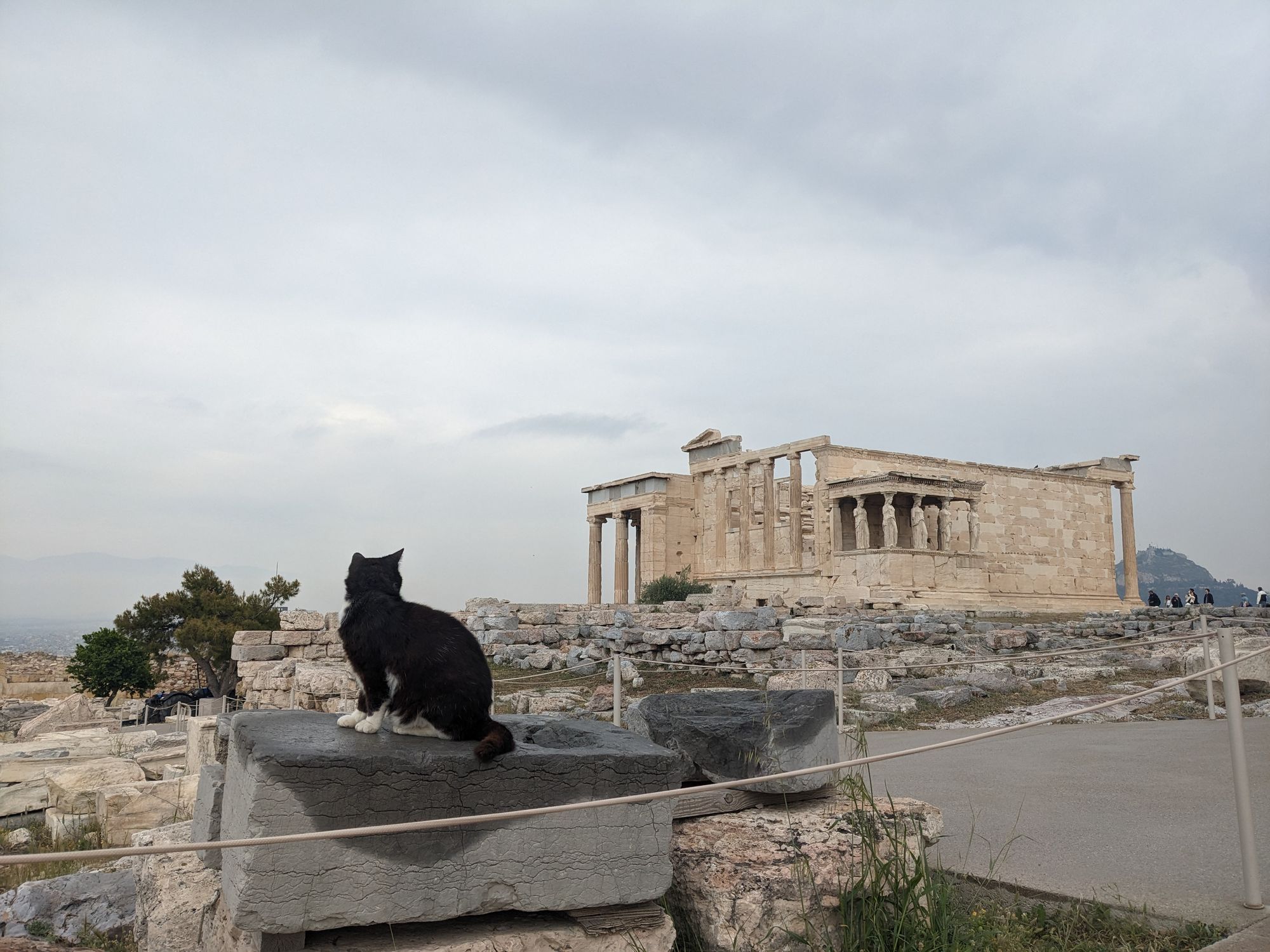
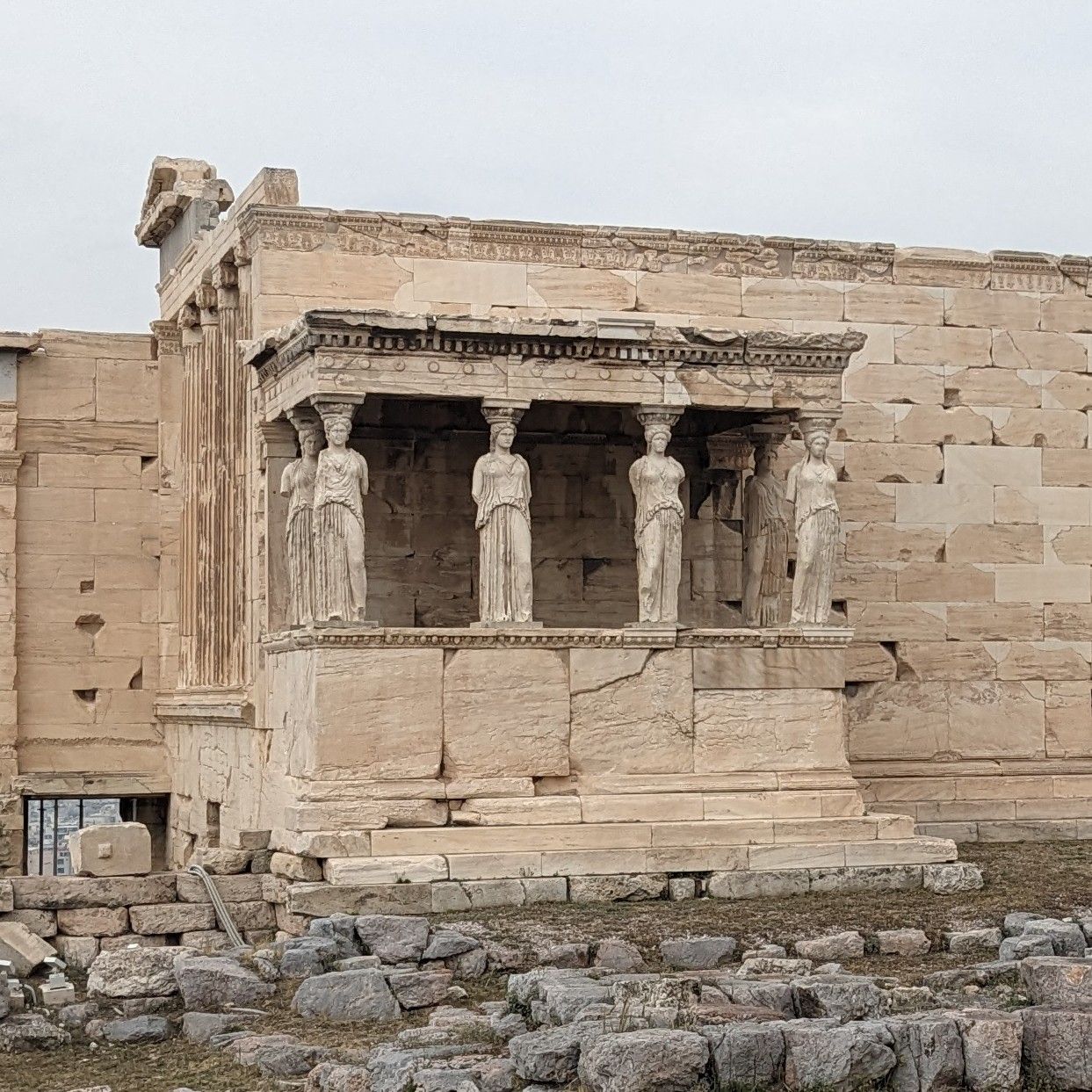
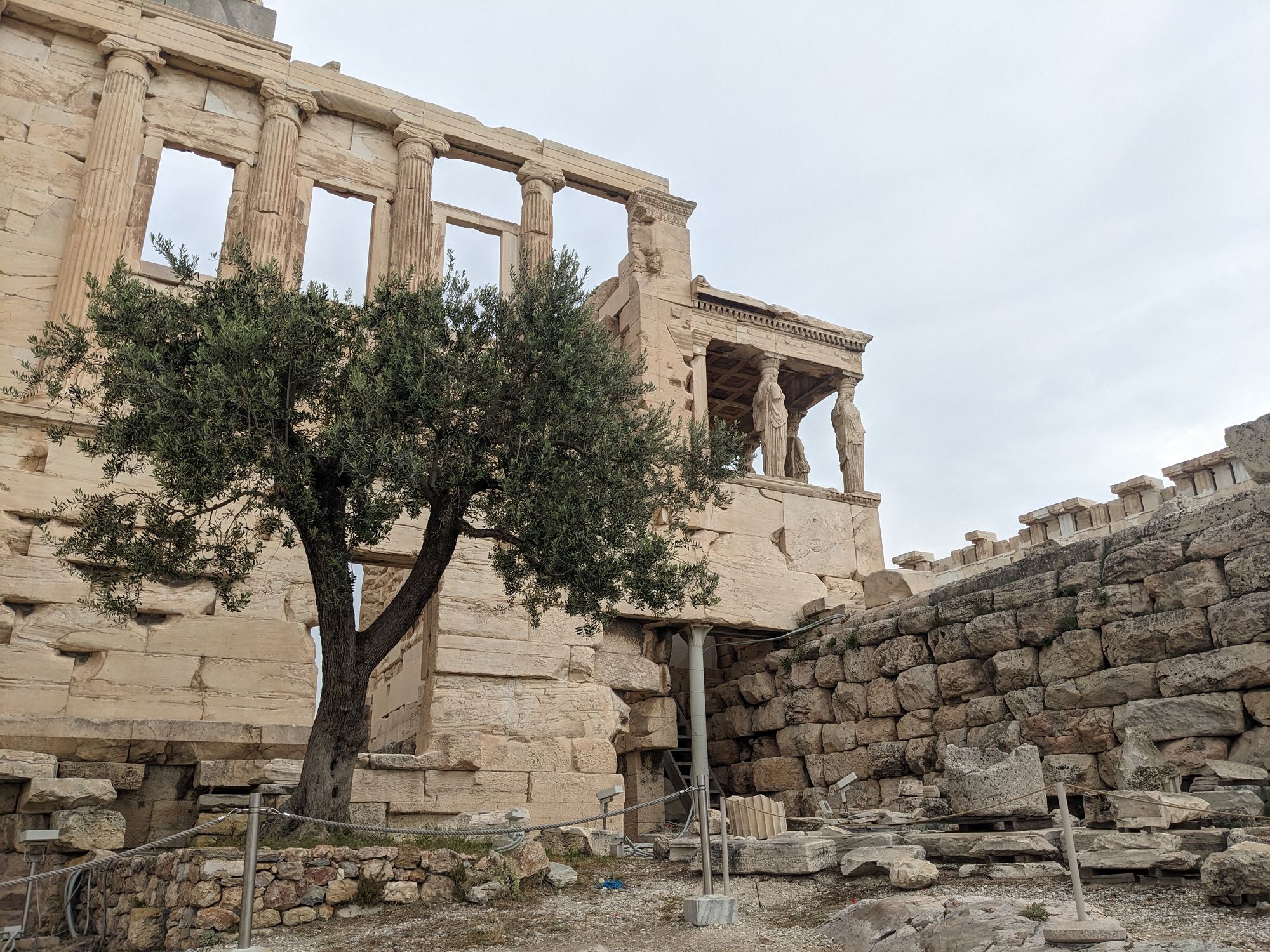
The piece de la resistance of the Acropolis is the Parthenon, an ancient temple dedicated to Athena, and which also served as the city treasury. It was built in the 5th century BCE as a celebration of the Greek victory over the Persians and is renowned for its Doric columns. It's also renowned for the fact that Lord Elgin stole the Parthenon's marbles, which are still on display in the British Museum.
The Parthenon was partially destroyed during a siege in the 17th century. It was used as a munitions store at the time and a hot Venetian cannonball ignited the gunpowder, obliterating the southern wall. The hole is still there today.

Down from the Acropolis is the Agora of Athens, an archaeological site in Athens that was once the center of civic life in ancient Greece. It was a marketplace, a gathering place for citizens and the location of several important government buildings.
Inside the Agora is the Temple of Hephaestus. The Temple is like the Parthenon in many ways - it's a temple (shock horror), it was built in the 5th century BCE, and its a perfect example of Doric architecture. So perfect that many archaeologists use the Temple of Hephaestus as a blueprint for what an undestroyed Parthenon ought to have looked like.
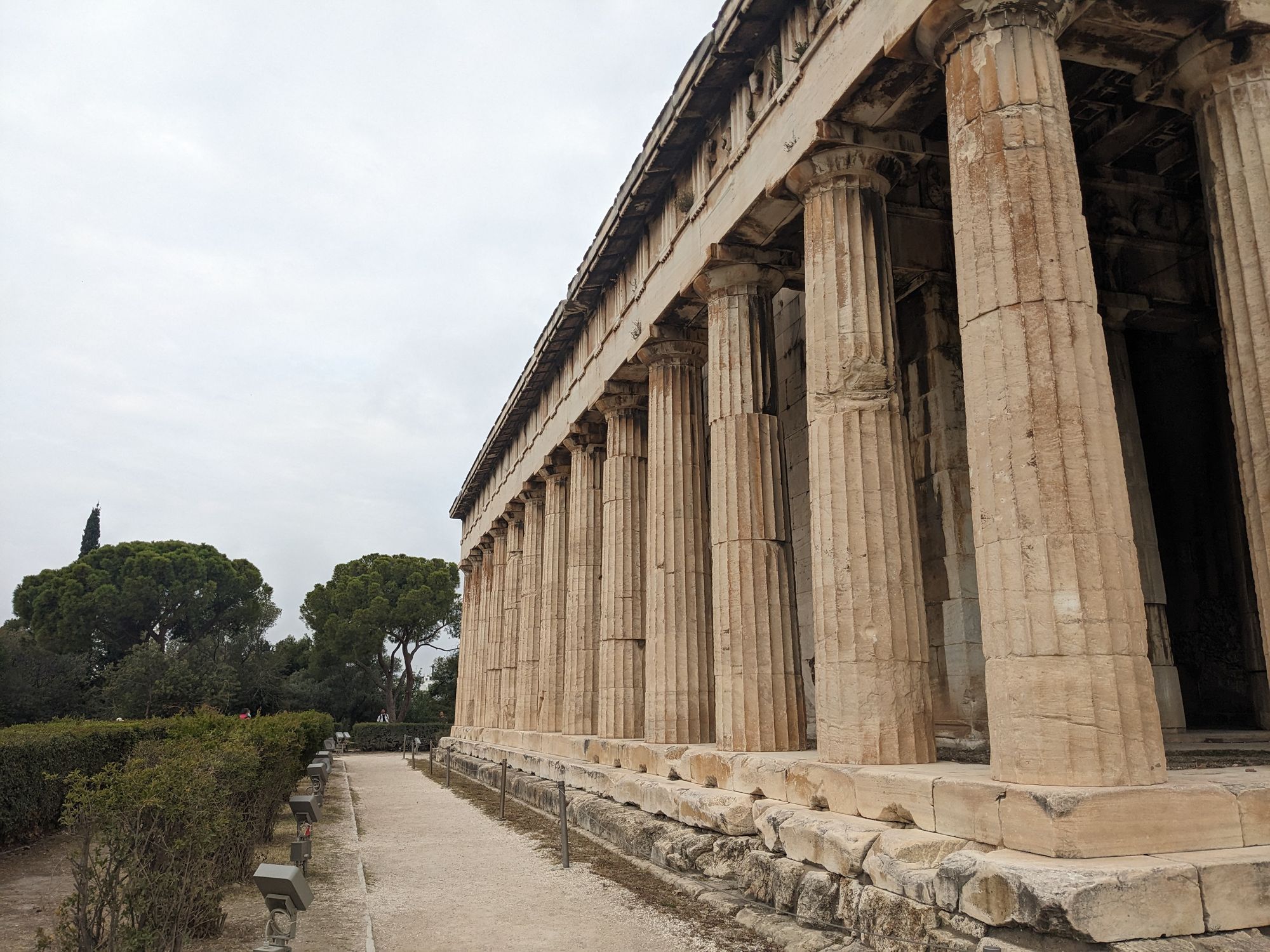
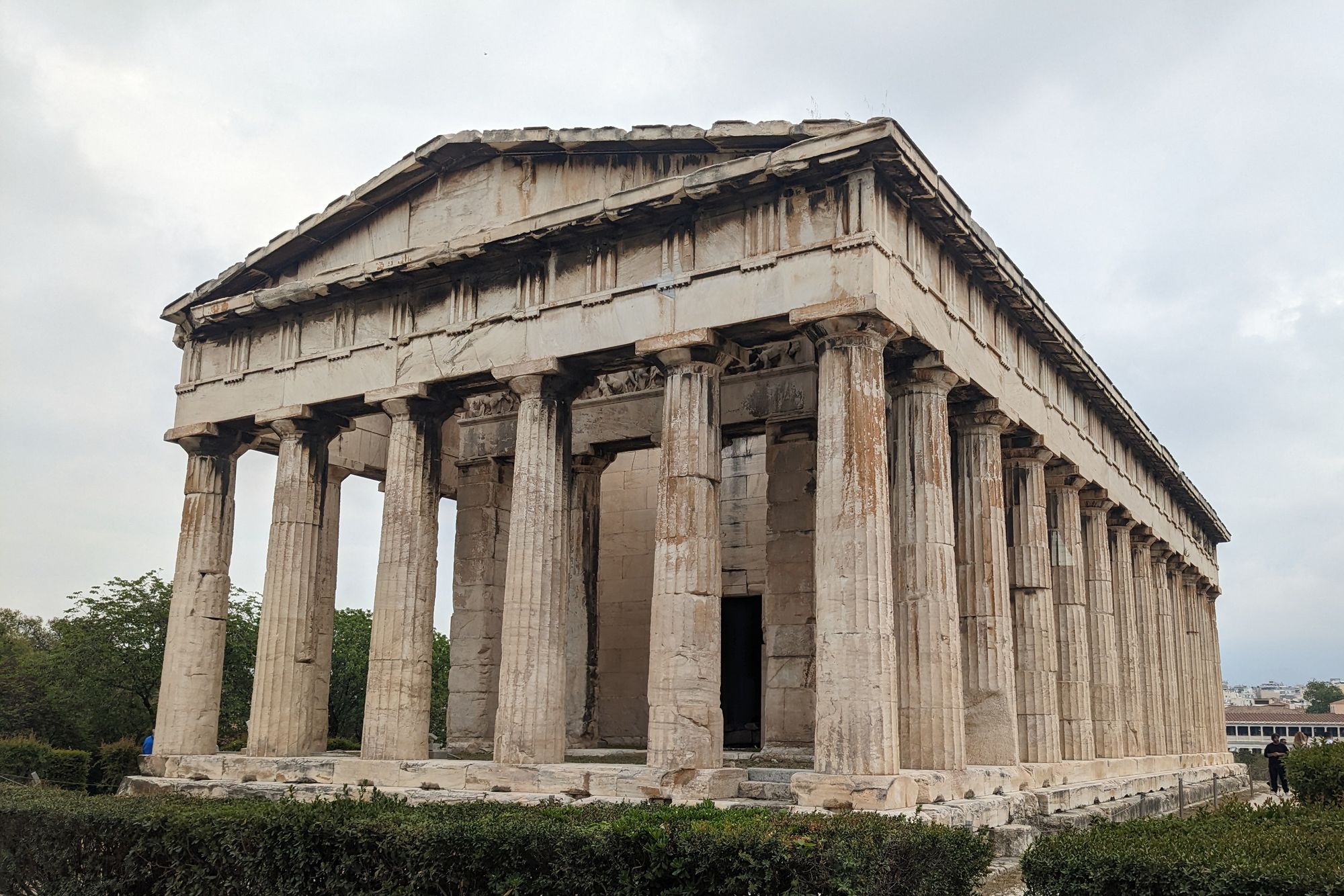
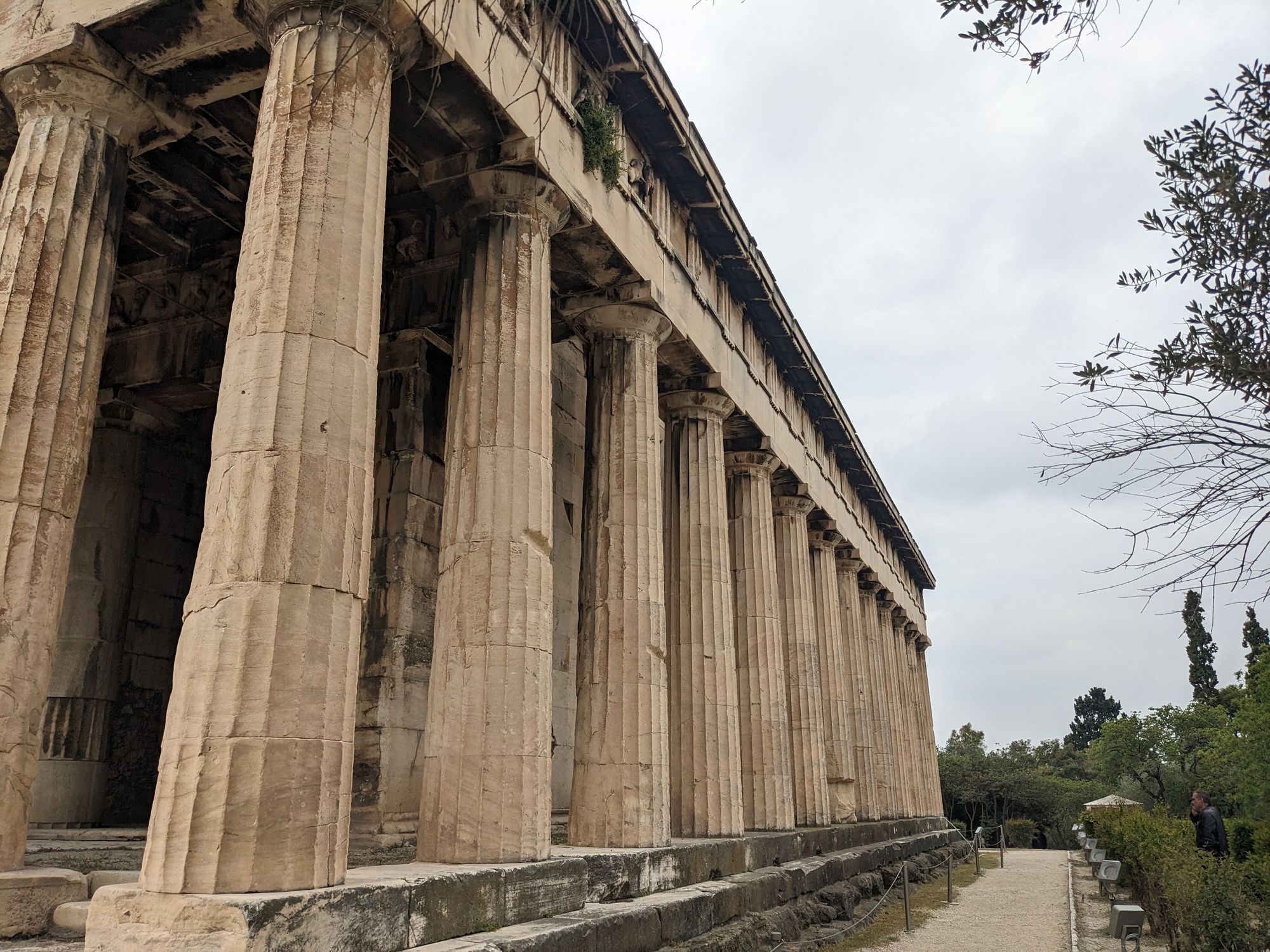
Also within the Agora is the Stoa of Attalos, a large covered walkway that was built in the 2nd century BCE as a marketplace and gathering place for citizens. The stoa was restored in the 1950s and now houses a museum of ancient artifacts. My guide reported that the statues here are missing their heads because the Roman Emperor Hadrian, who was usually such a Hellenophile, decapitated the statues as a strike against Hellenic polytheism.
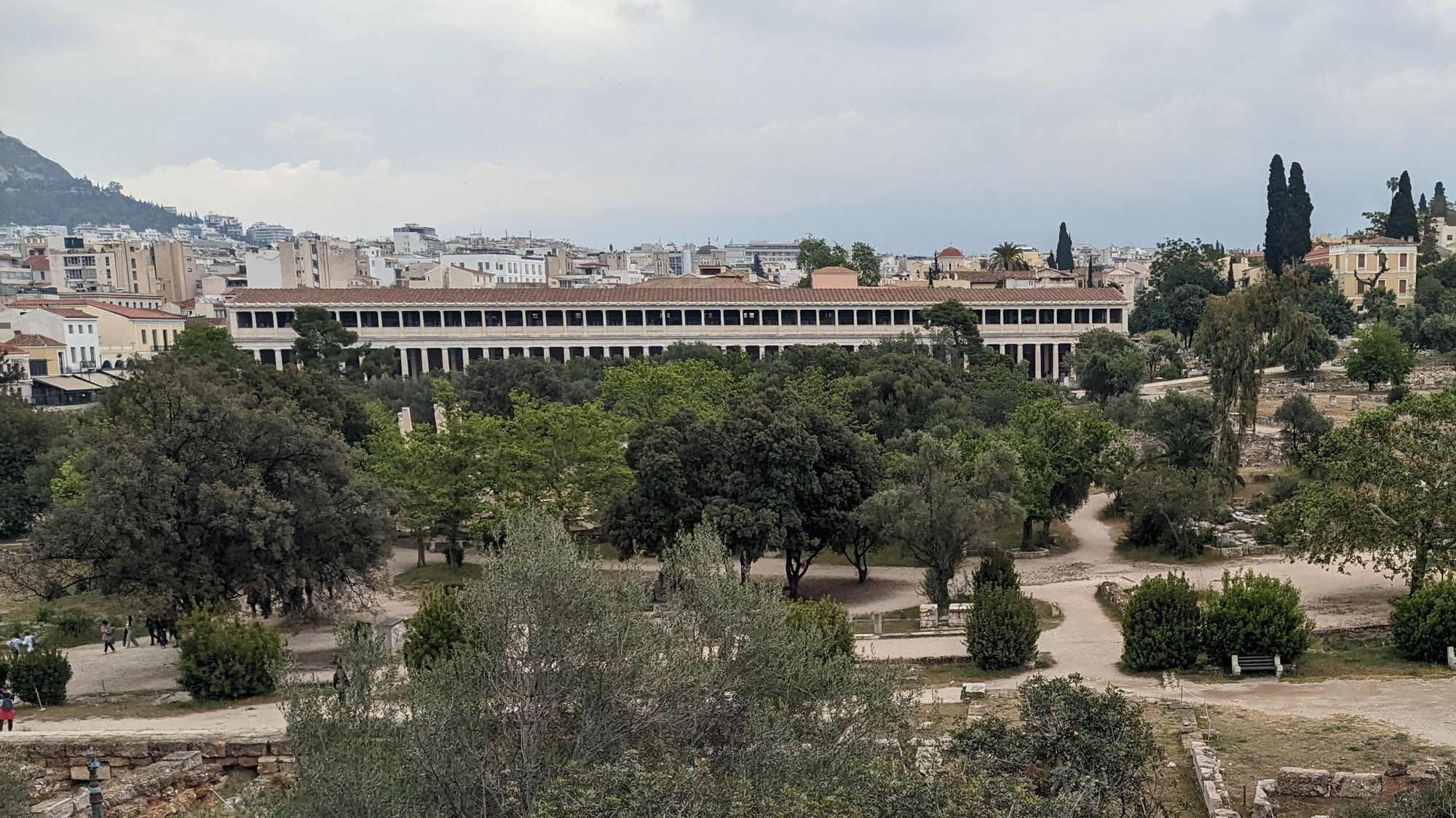
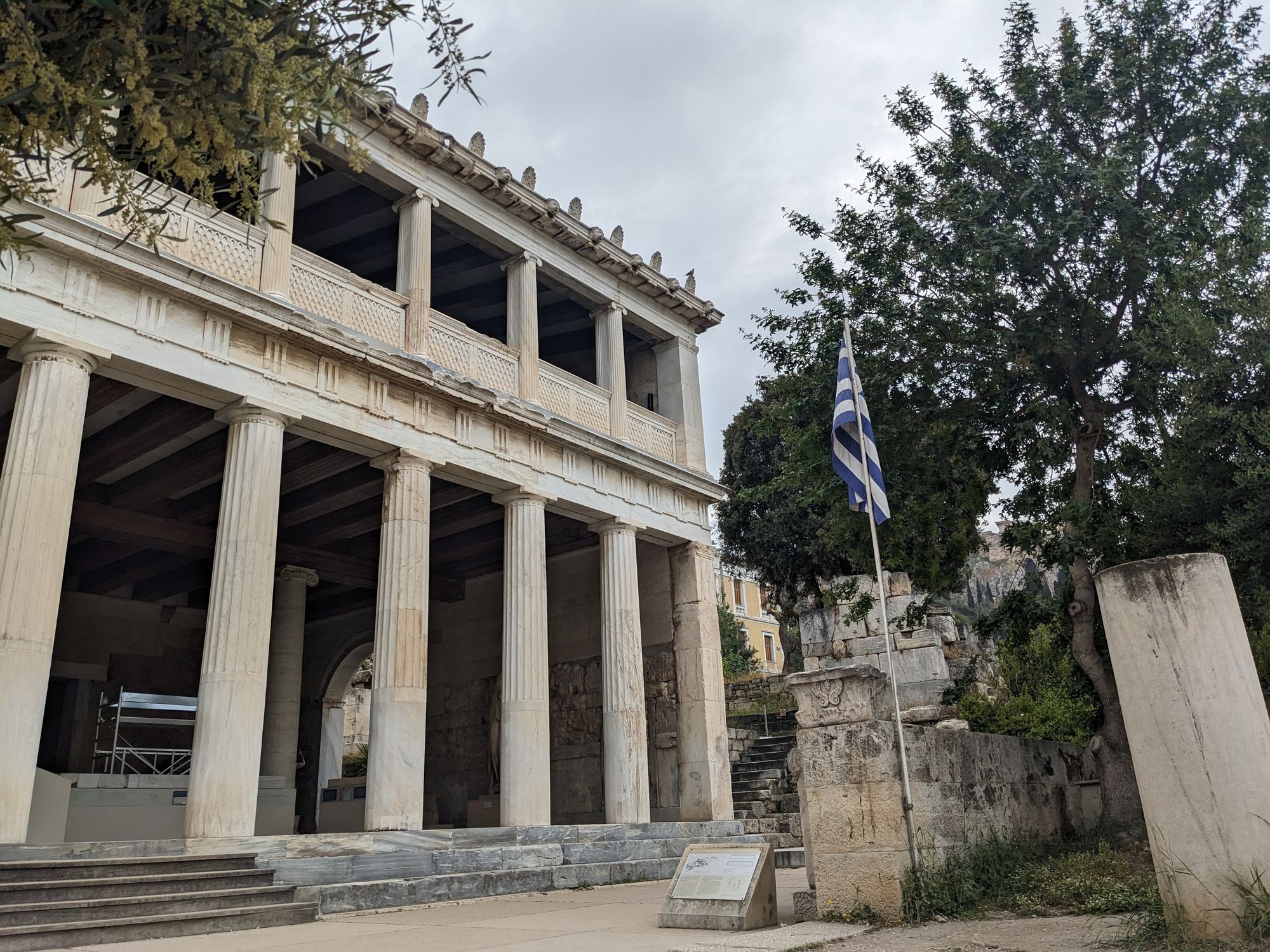
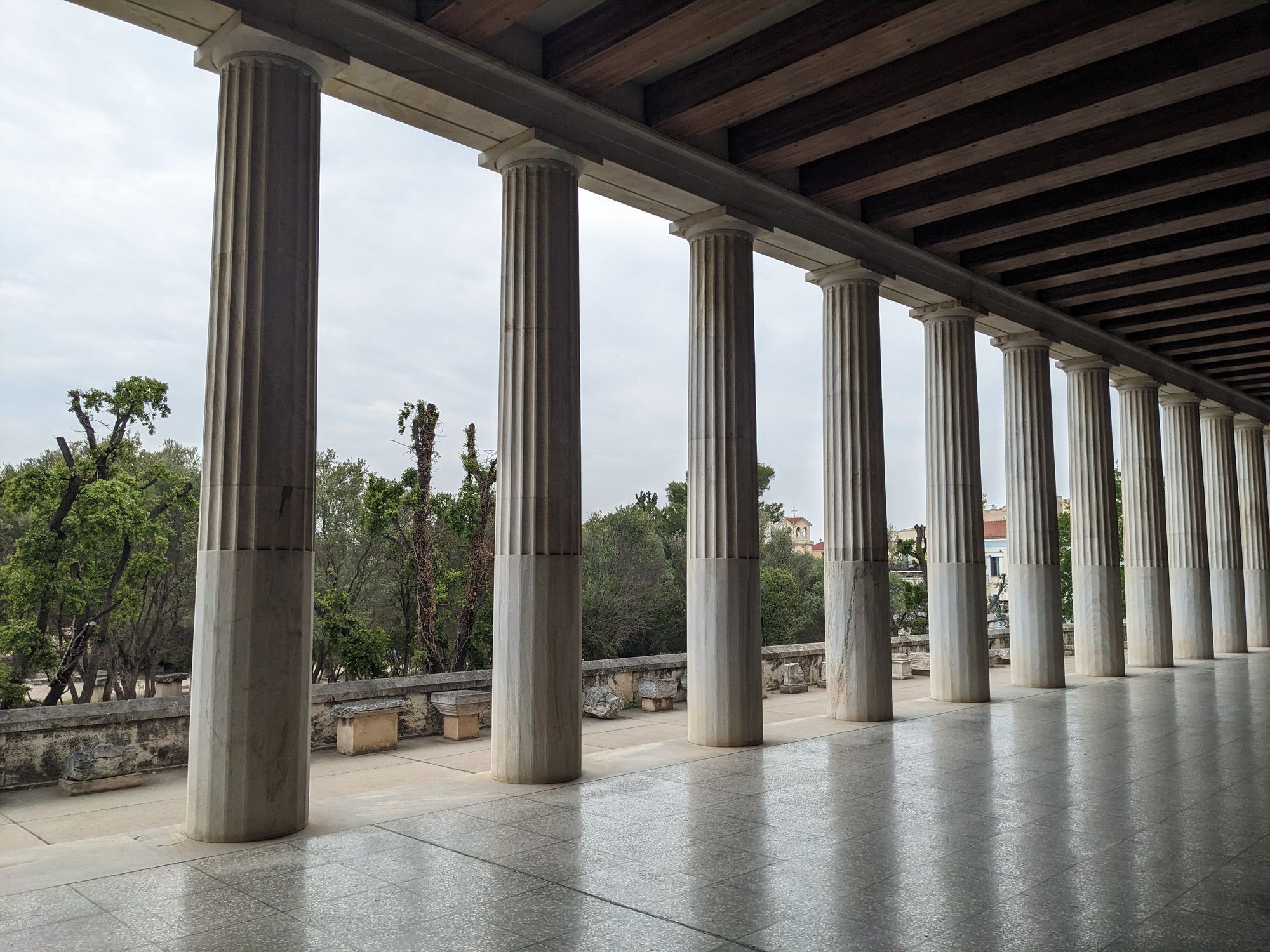
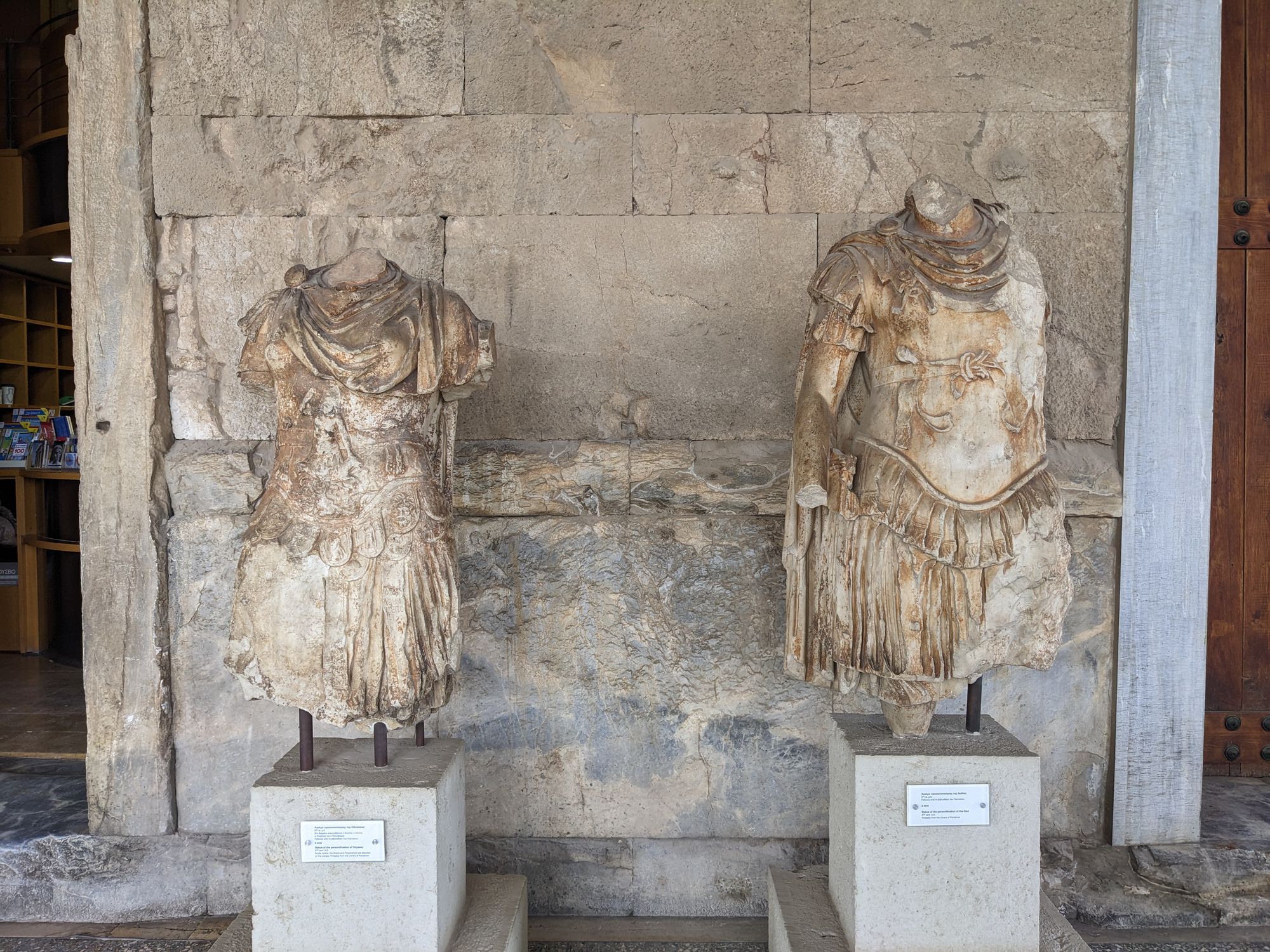
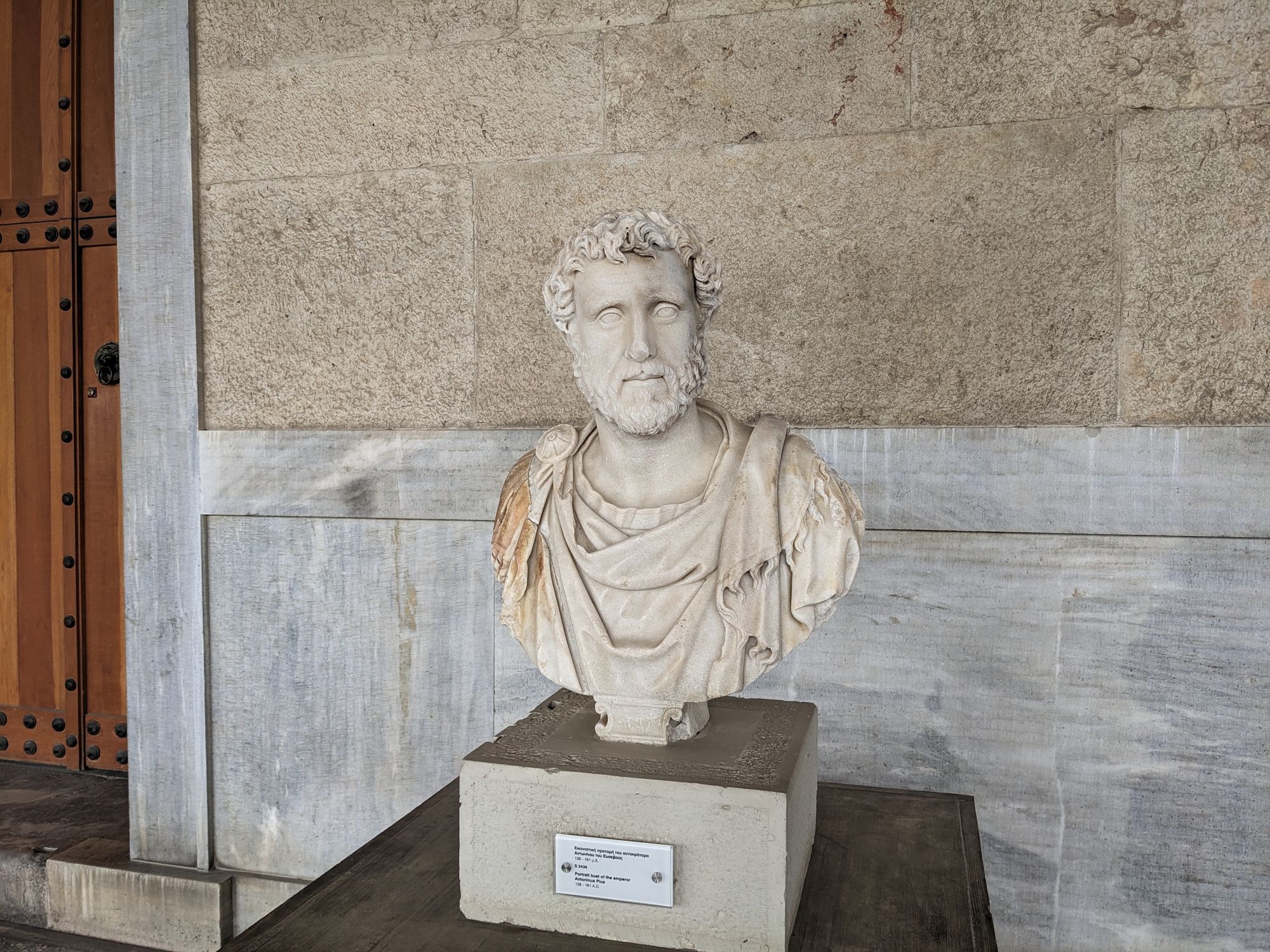
Near the Agora is the Archaeological Site of Kerameikos, an ancient cemetery that dates back to the 8th century BCE. It was a burial ground for prominent Athenians and is home to several tombs and monuments of notable Greeks who I cannot name.
My guide and I then drove to the Temple of Zeus, southeast of the Acropolis. It was one of the largest temples in the ancient world, but only a few columns remain standing today, as Athenians had gradually scavenged pieces of the temple for their own building materials.

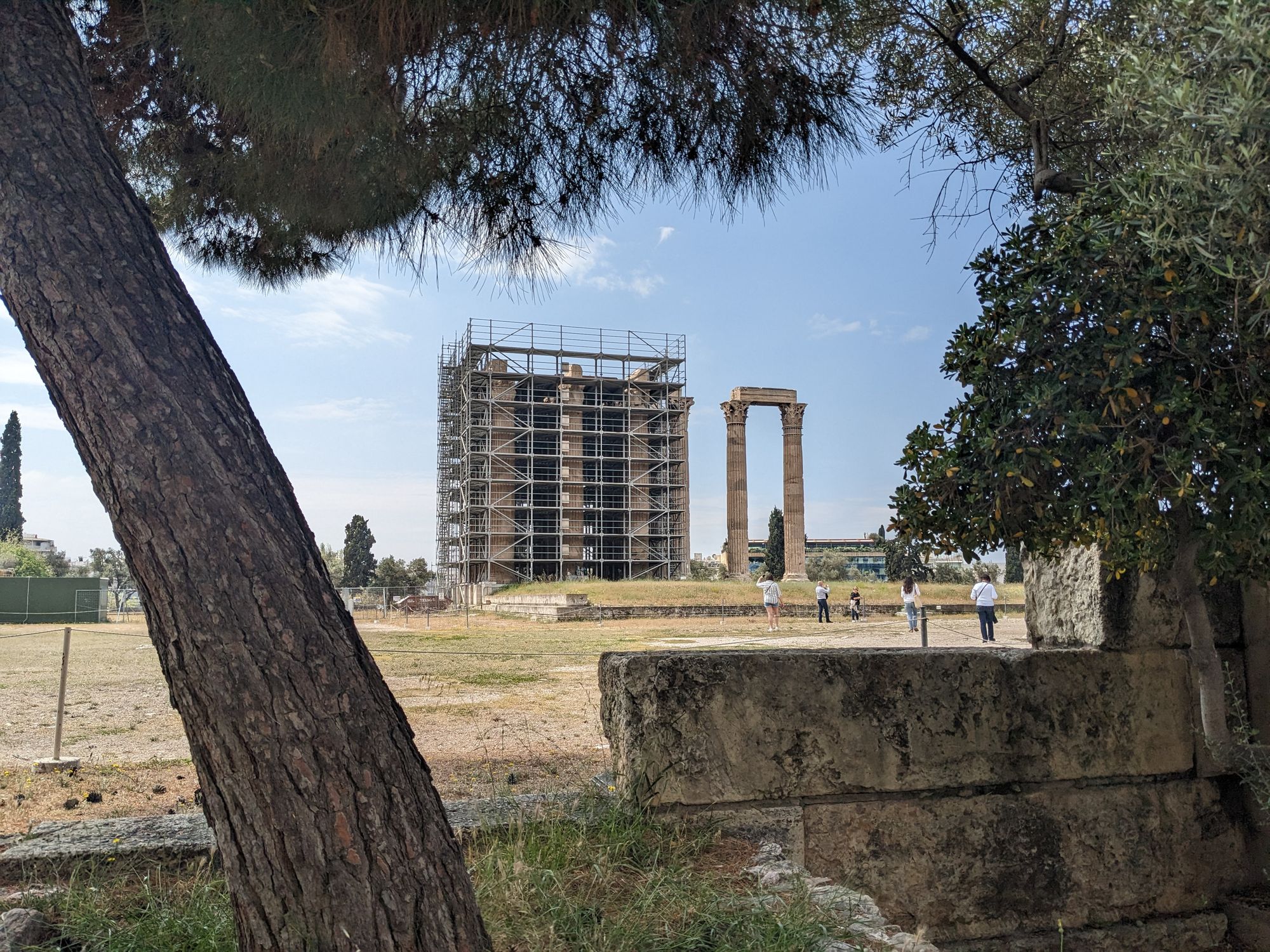
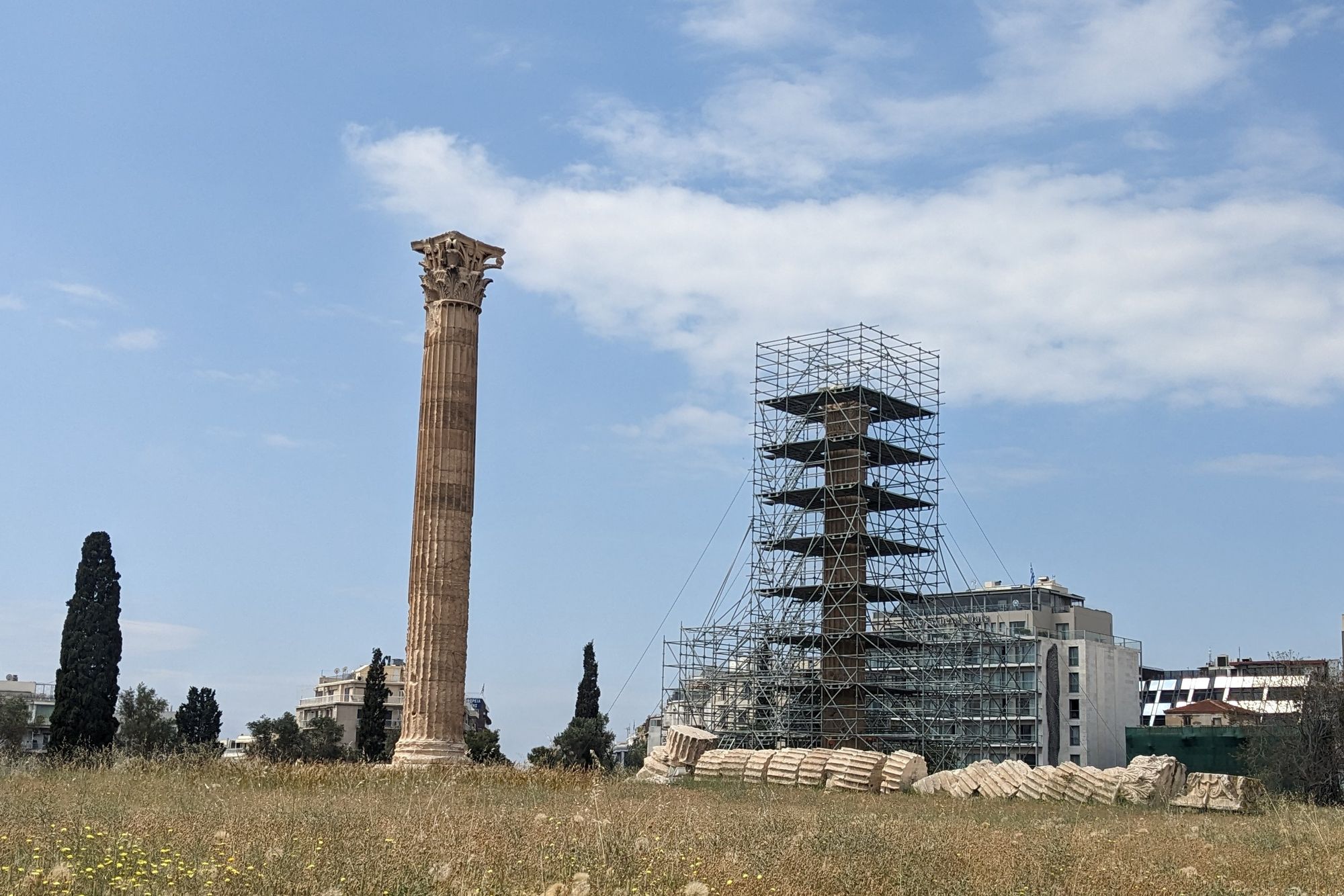
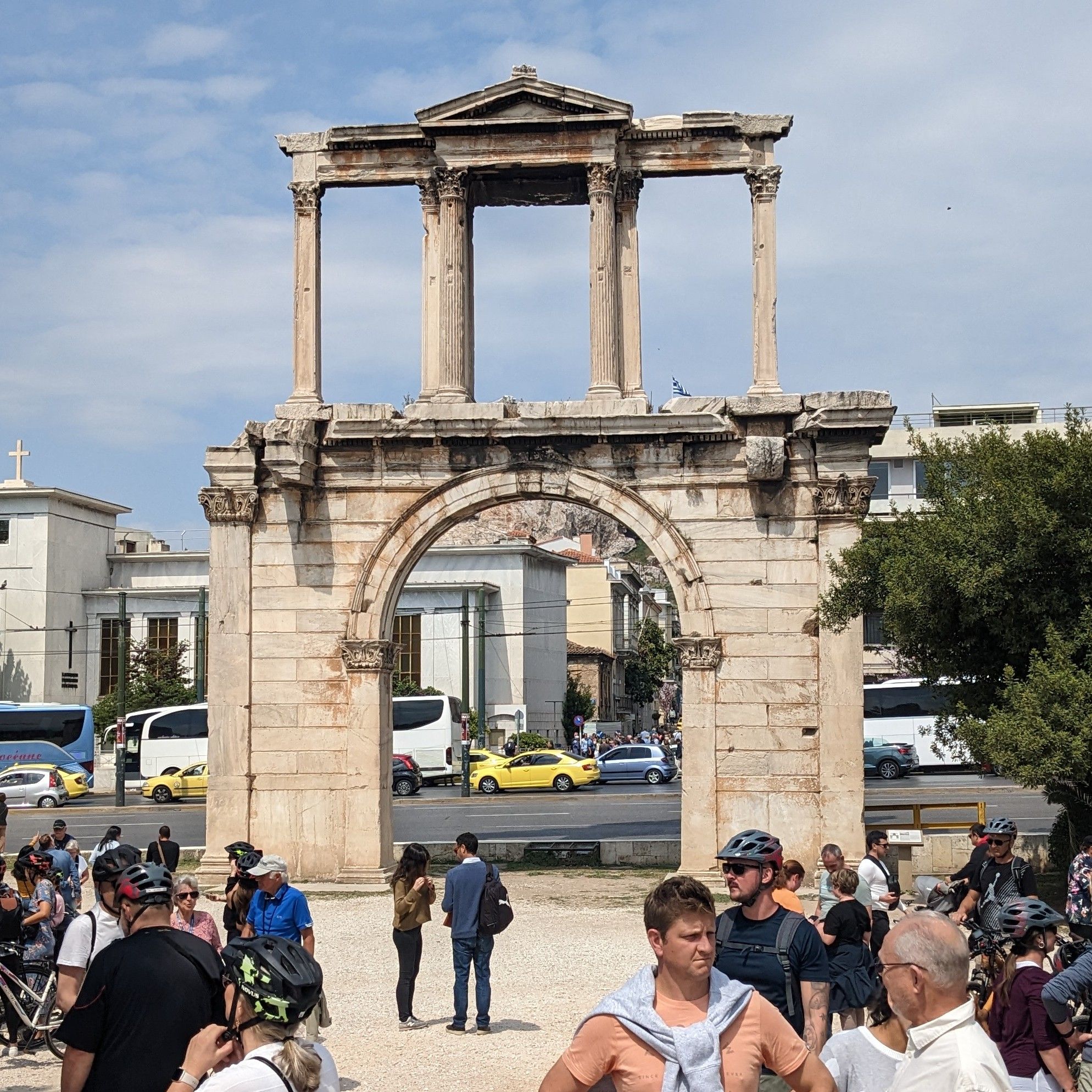
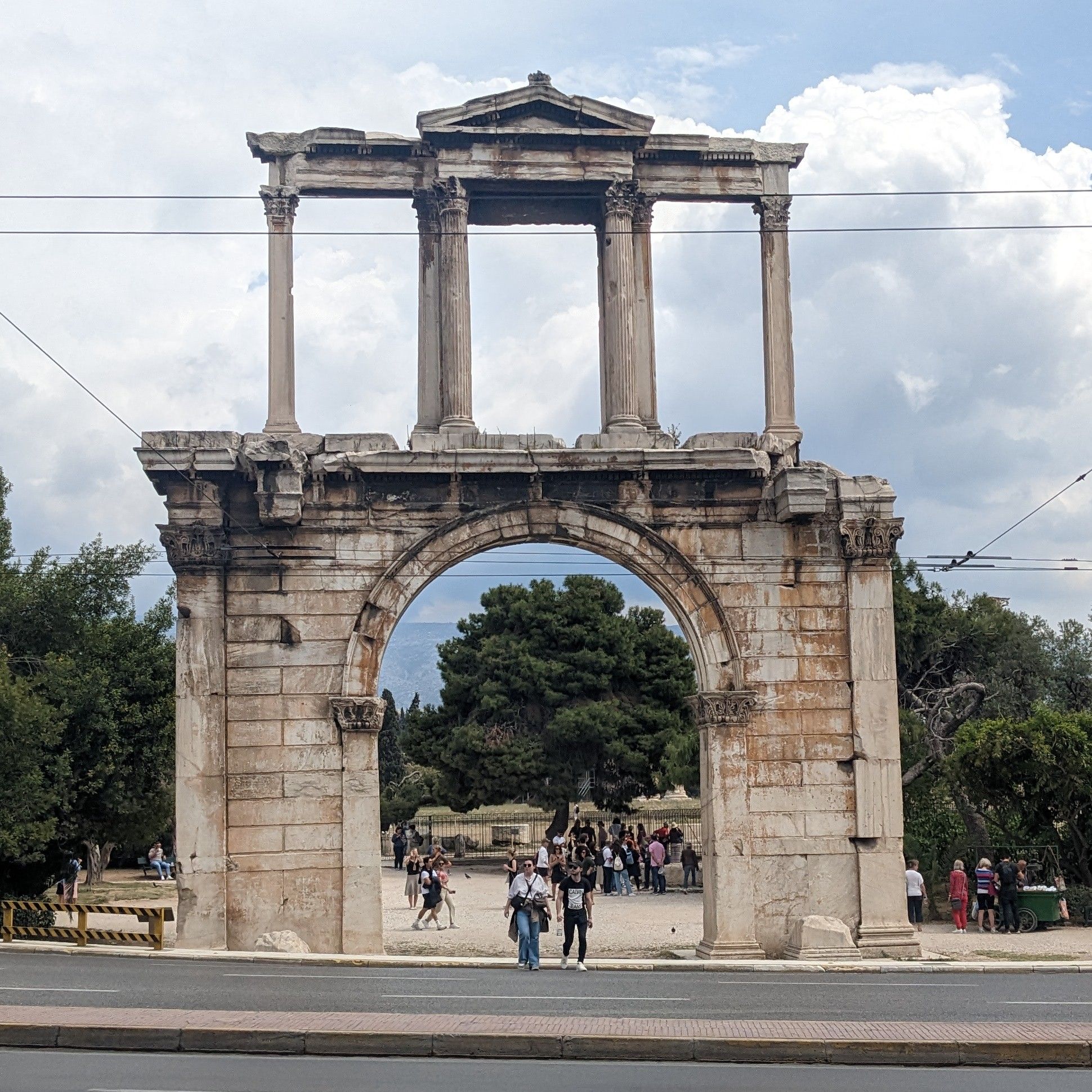
Next was the Panathenaic Stadium, originally built in the 4th century BCE for athletic contests. The stadium fell into ruins from the 4th century onwards, hosting little more than the occasional crusader tournament. In the 1890s, the recently embiggened Greek state invested in two mega-projects to demonstrate the Greece was 'back' - the Corinth Canal and the Panathenaic Stadium. Despite the exorbitant cost and vast amounts of local marble, the mad lads pulled it off and the renovated stadium hosted the first modern Olympic Games in 1896.

Just north of the Panathenaic Stadium is the Presidential Palace, where the extravagantly-dresssed soldiers, known as Evzones, stand watch and change guard every hour. This was my guide's favourite part of the tour because he was an Evzone during his military service.
The Evzones wear traditional uniforms rife with symbolism. The kilt is comprised of 400 pleats, symbolizing the 400 years of Ottoman occupation of Greece. The shoes come with pom-poms that the freedom fighters wore to prevent the toes developing frostbite during long months of mountain fighting, and to conceal small daggers should they need to stick one in their foes.
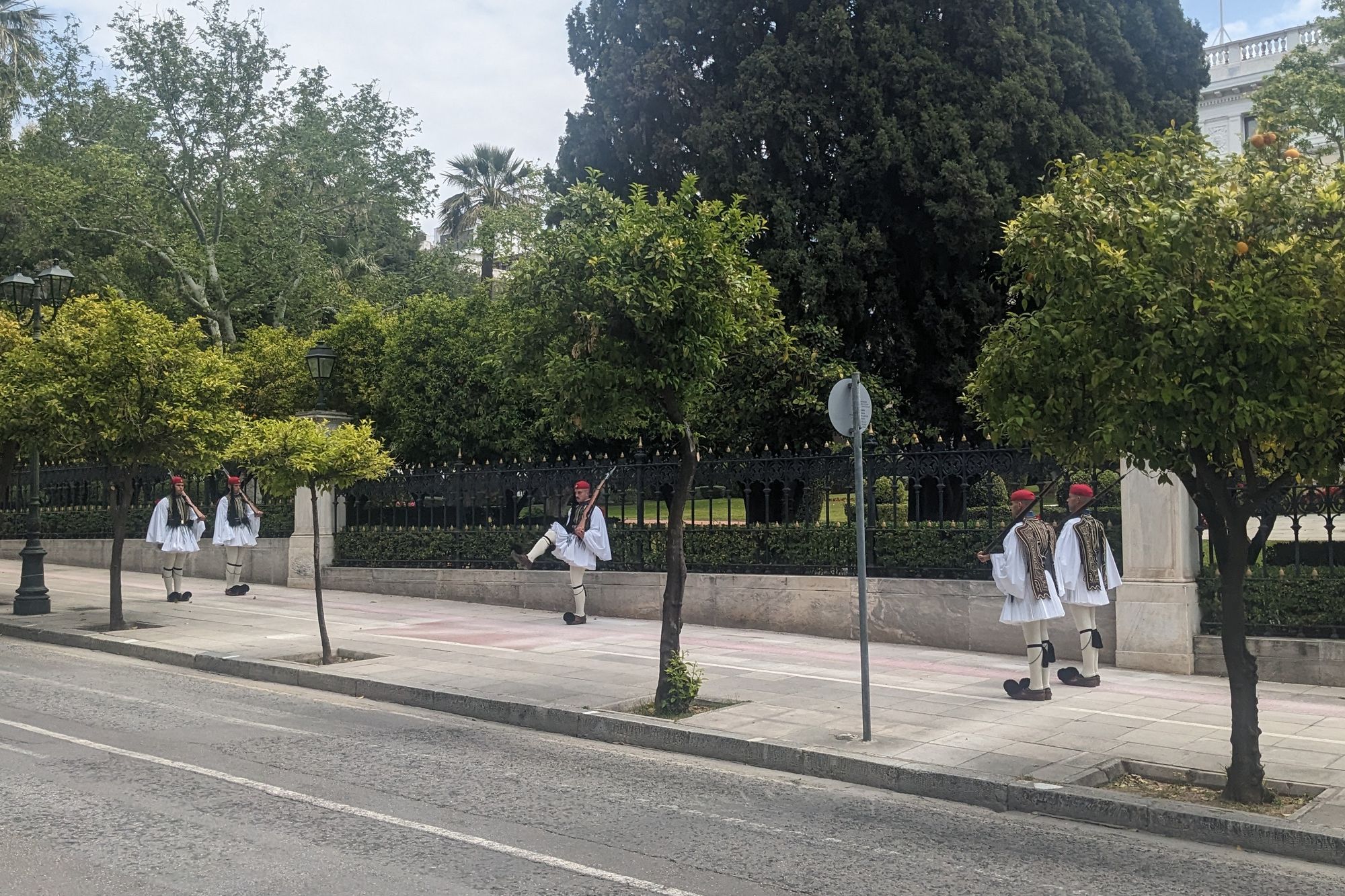
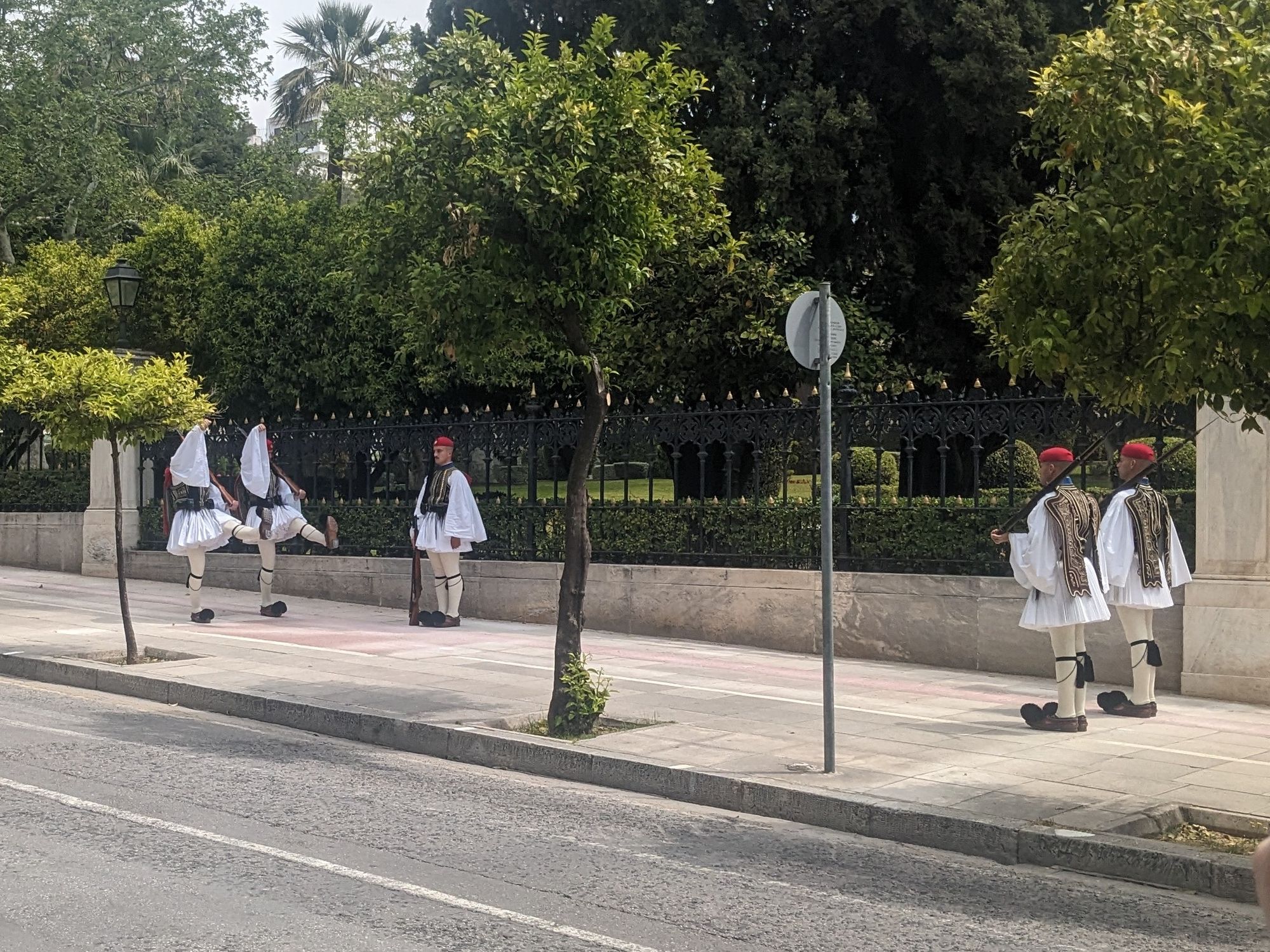
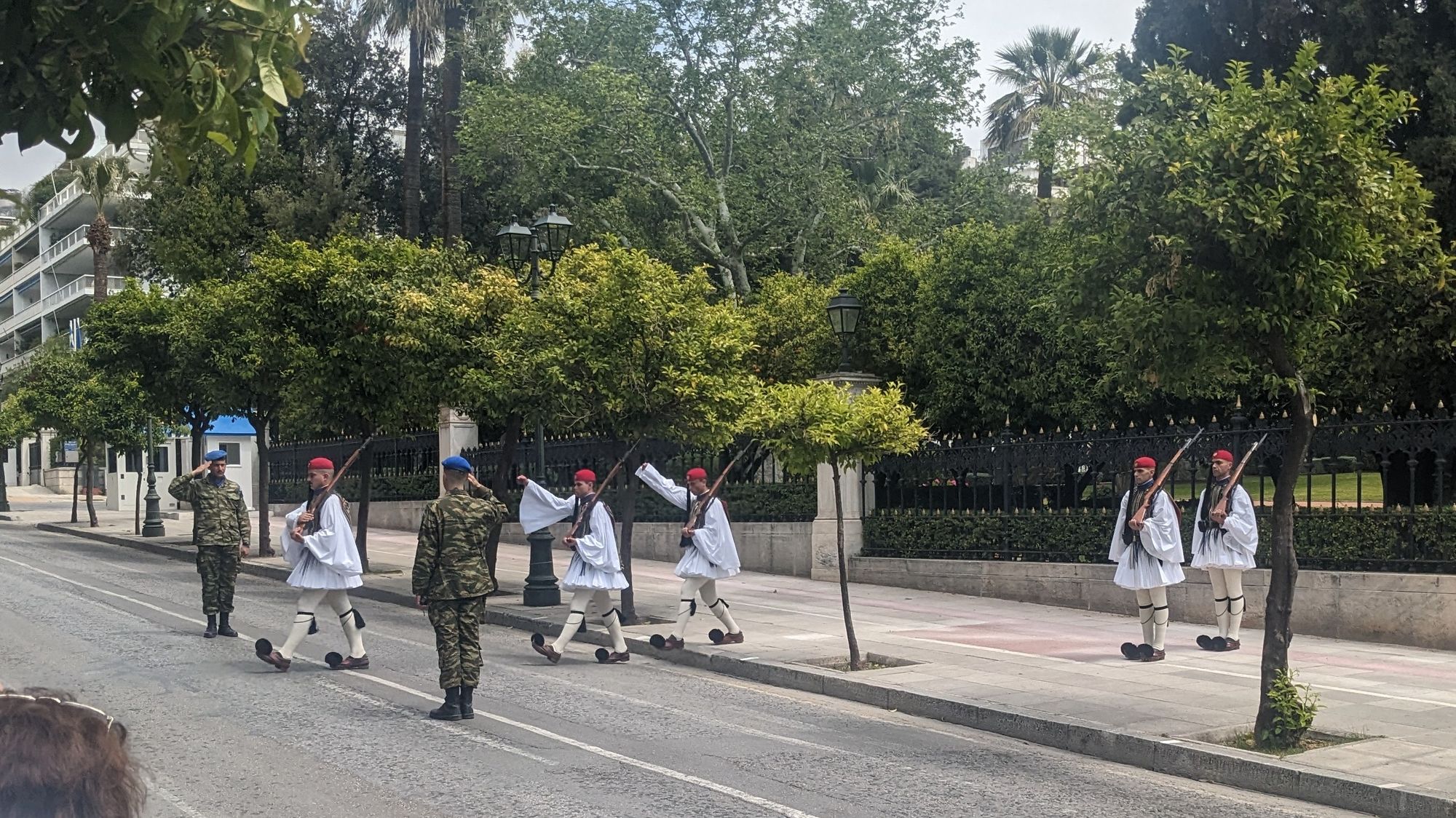
Finally we drove up the Lycabettus Hill, the highest point in Athens at 277 meters. From the top you can see the Acropolis, which is only 150 meters, but still looks lovely from afar.
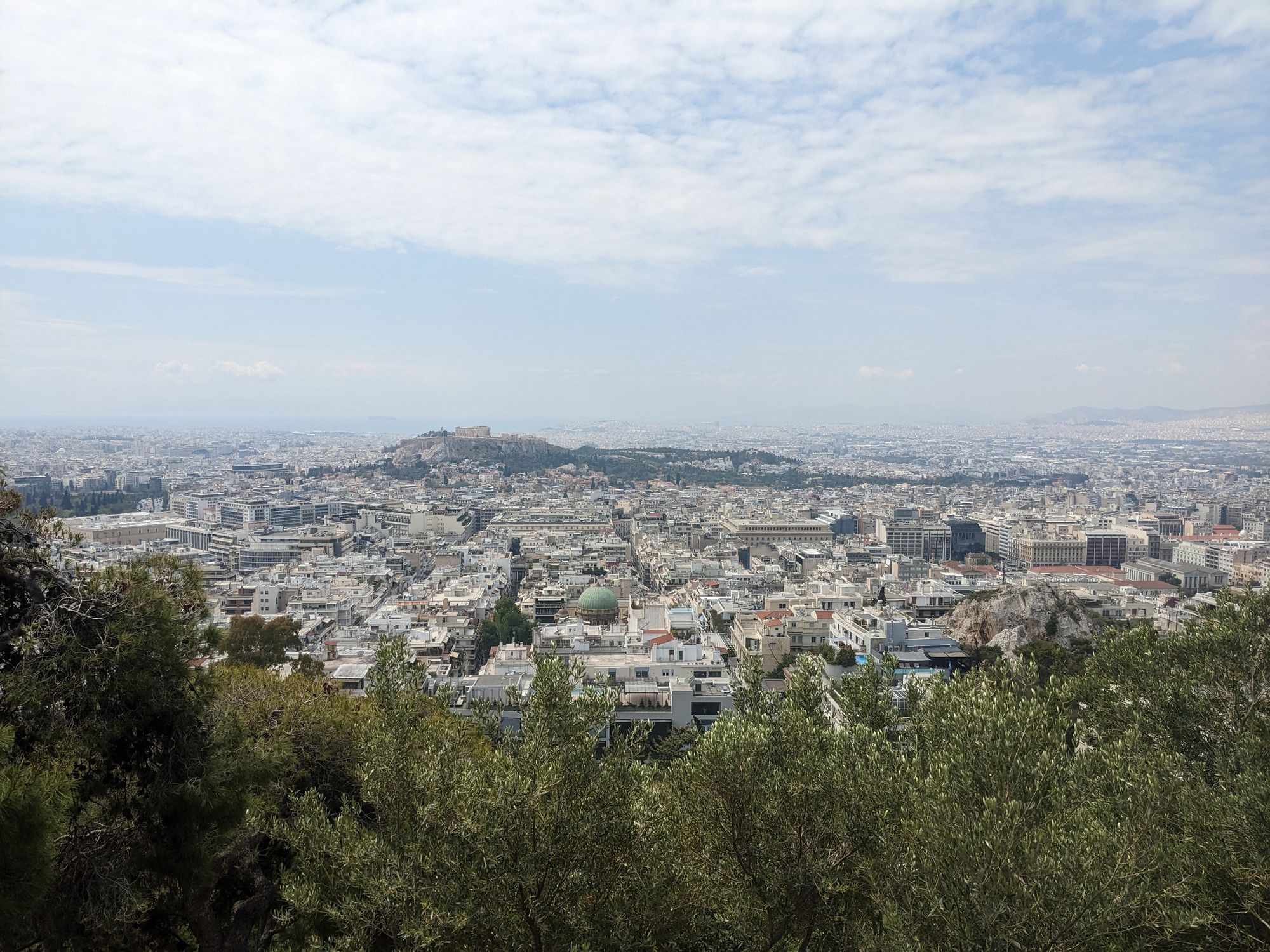
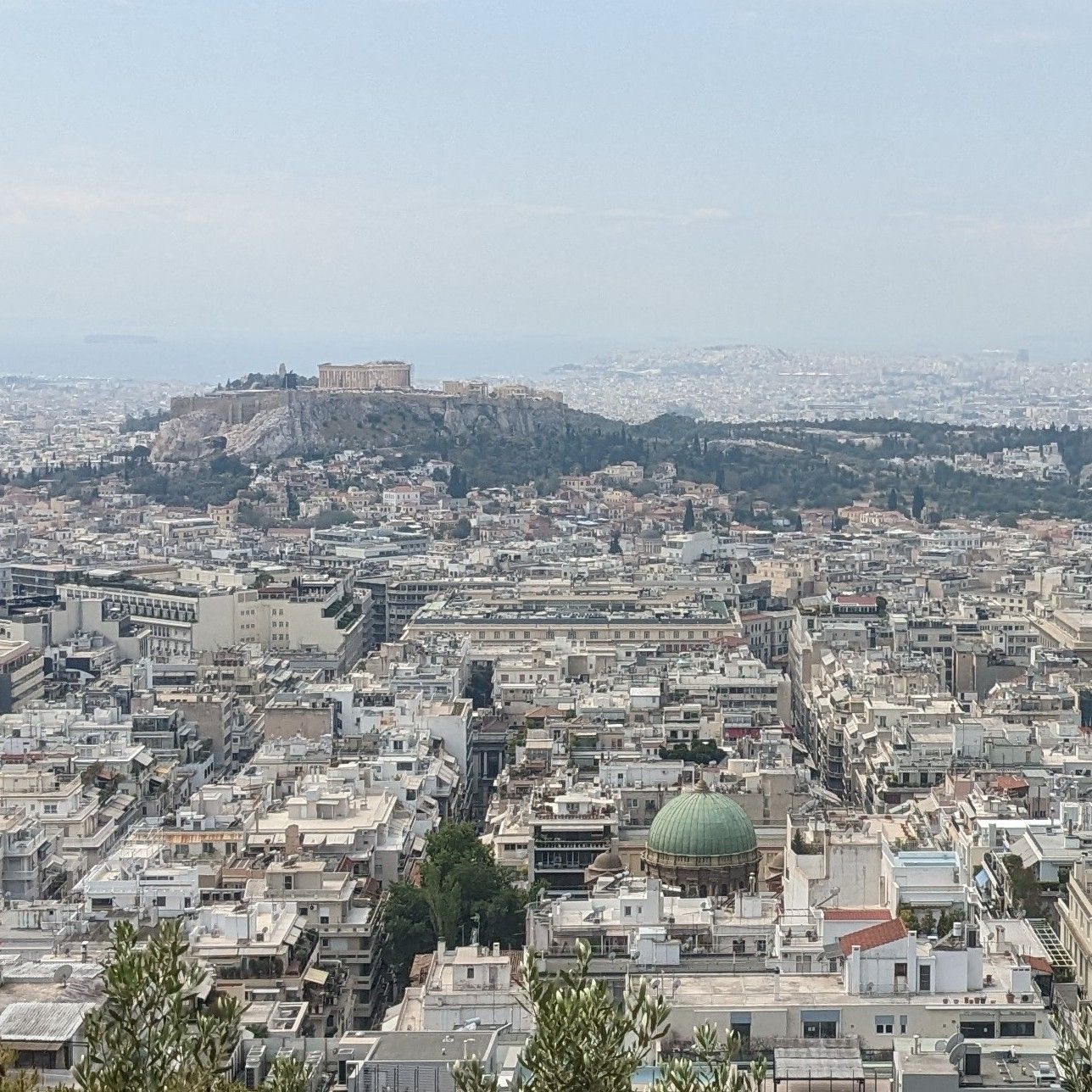
2023 May 01, Monday
The first of May is Labour Day, a public holiday, in much of Europe. Most things were closed that day. Early in the morning I did a load of washing in my hotel room with a Scrubba bag, pegged the clothes in the bathroom, then went out to enjoy walking the empty streets.
At the Syntagma Square, the metro station was closed but that hadn't stopped a mob of labour activists assembling outside the Parliament. Most in attendance waved red banners, Greek flags and, strangely, Australian flags. No other national flags, just Greece and Australia.
I headed up the road towards the Academy of Athens. Police had setup cordons around the street and were watching everything along the route. The Academy was closed, but many tourists, such as myself, had gathered to photograph its classical exterior without students entering the shot.
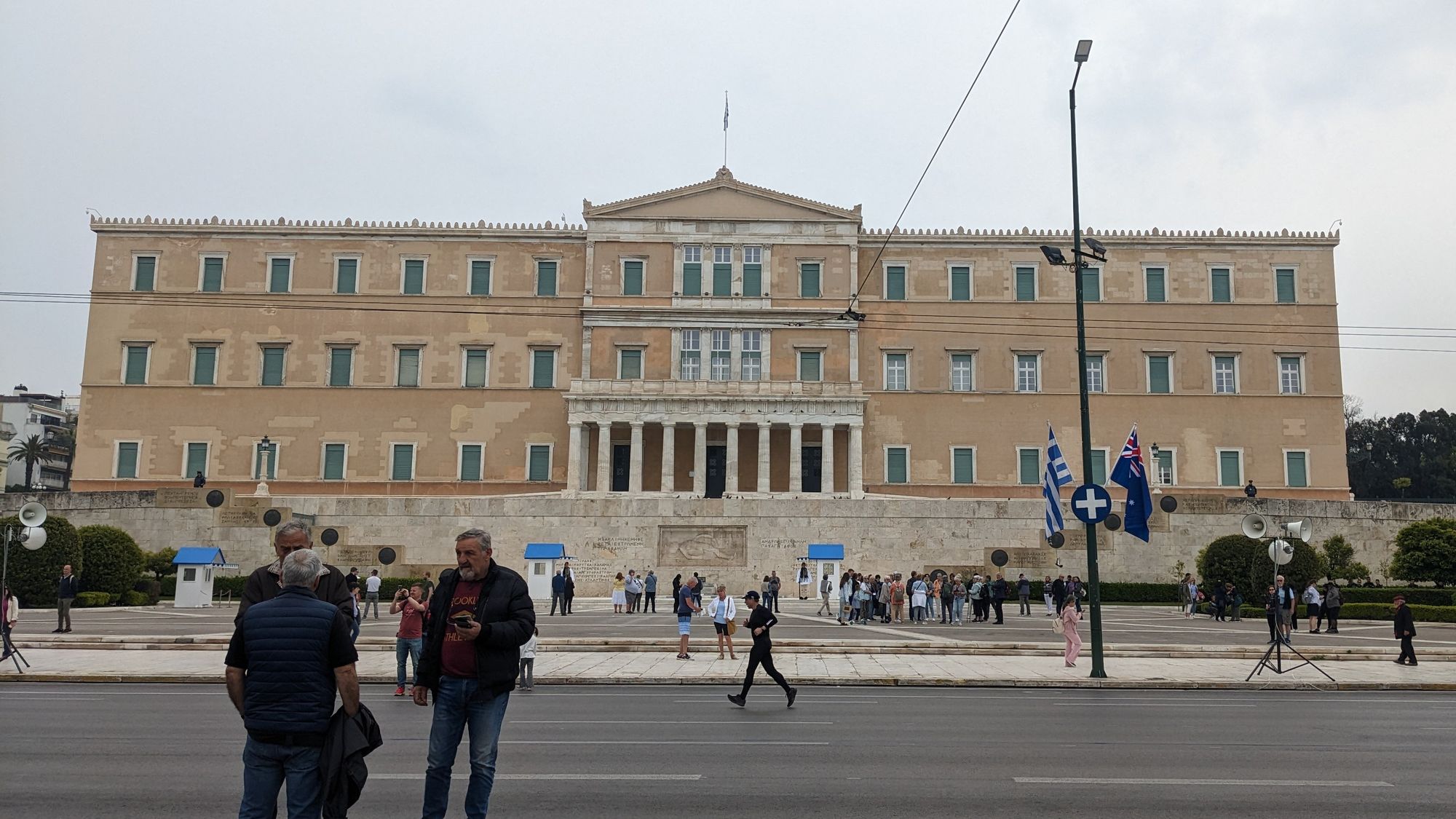
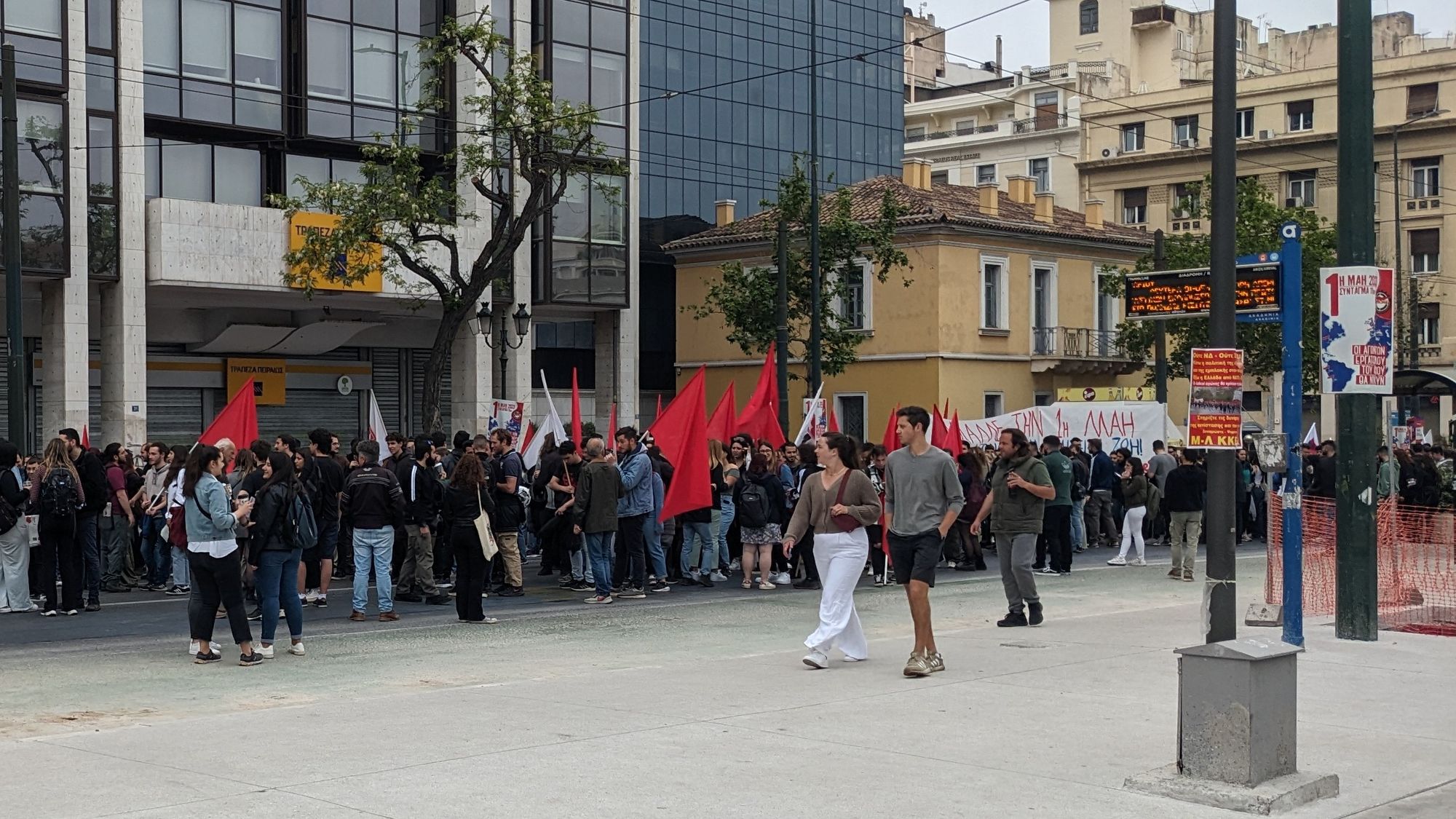
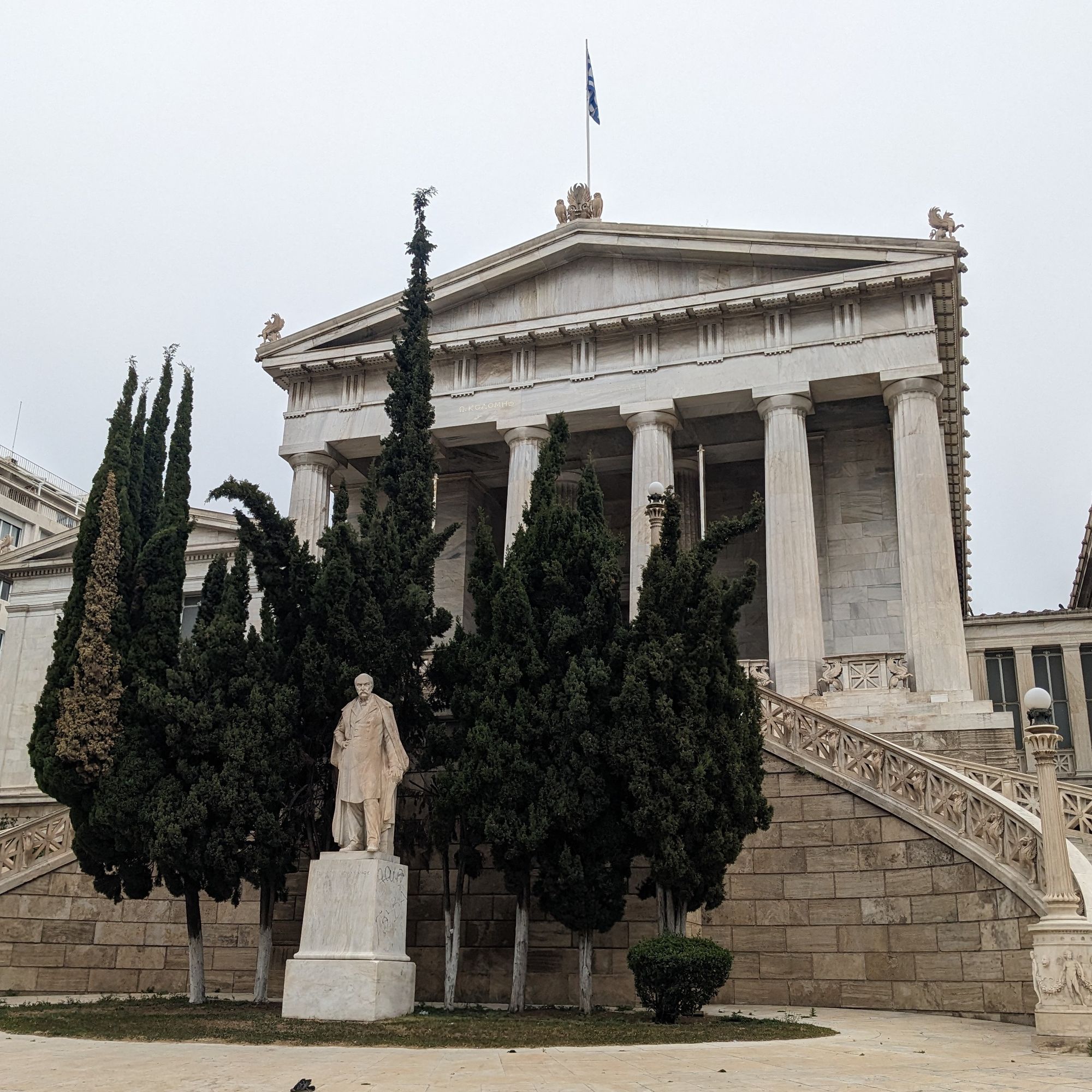
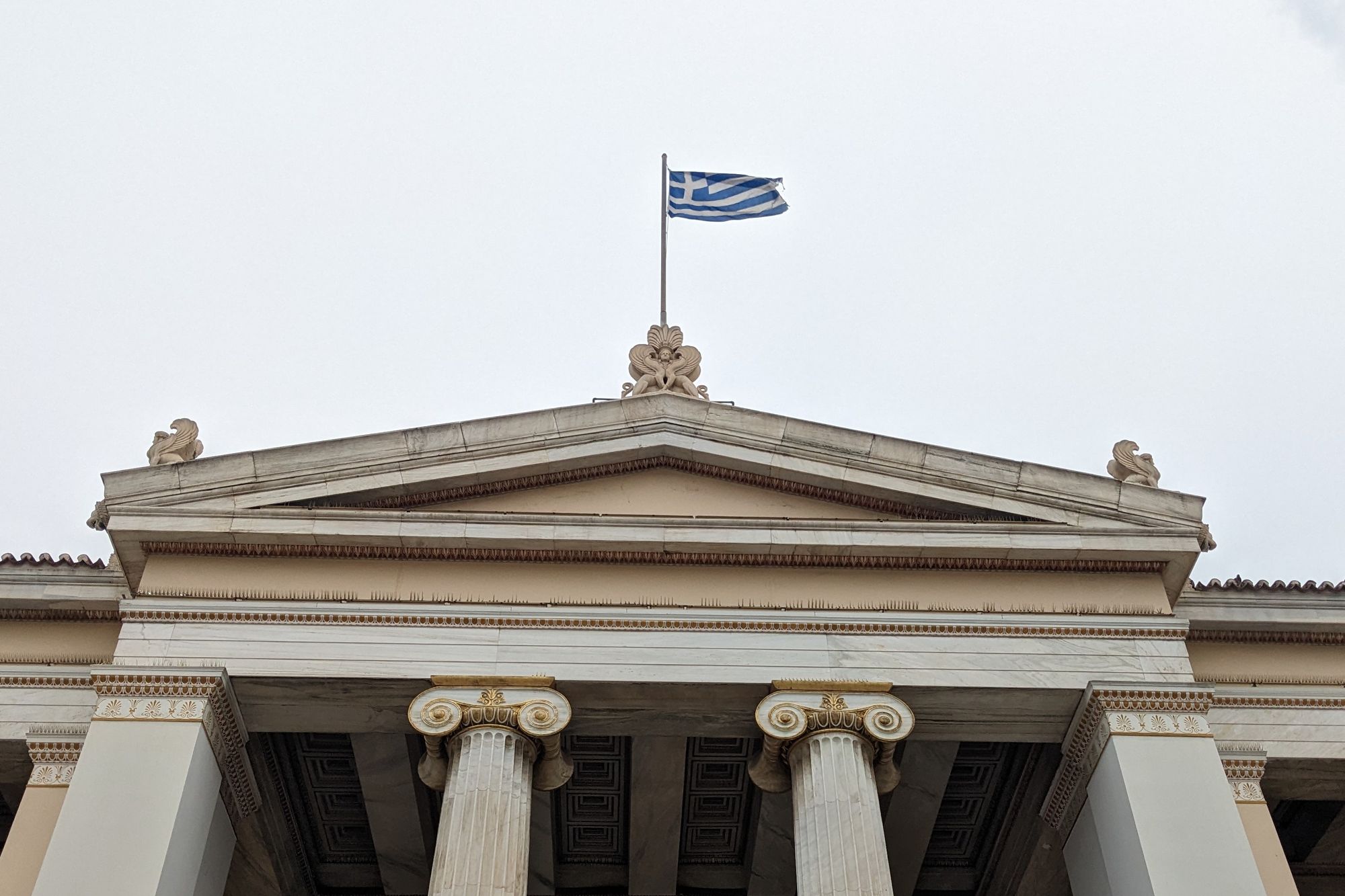
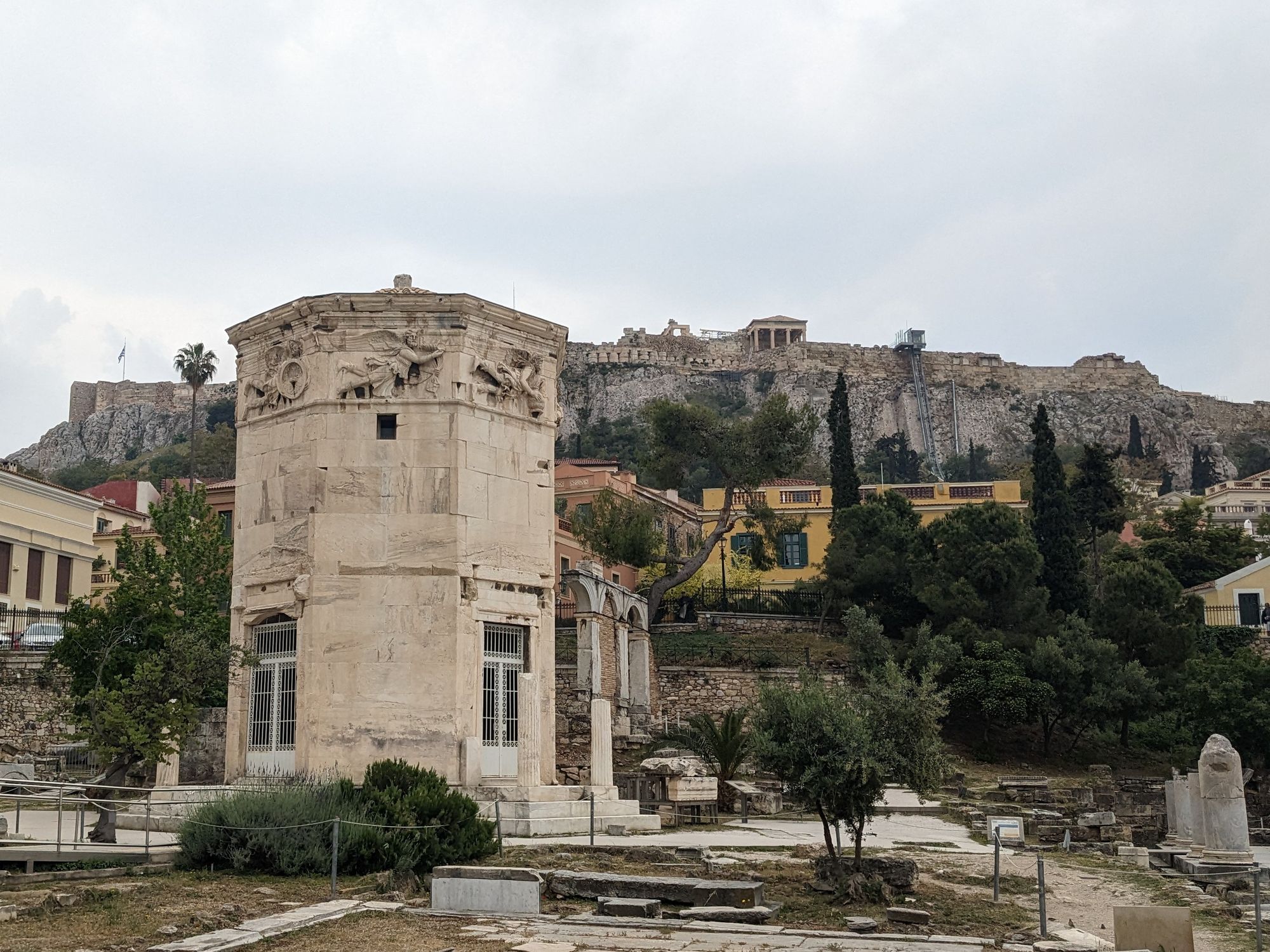
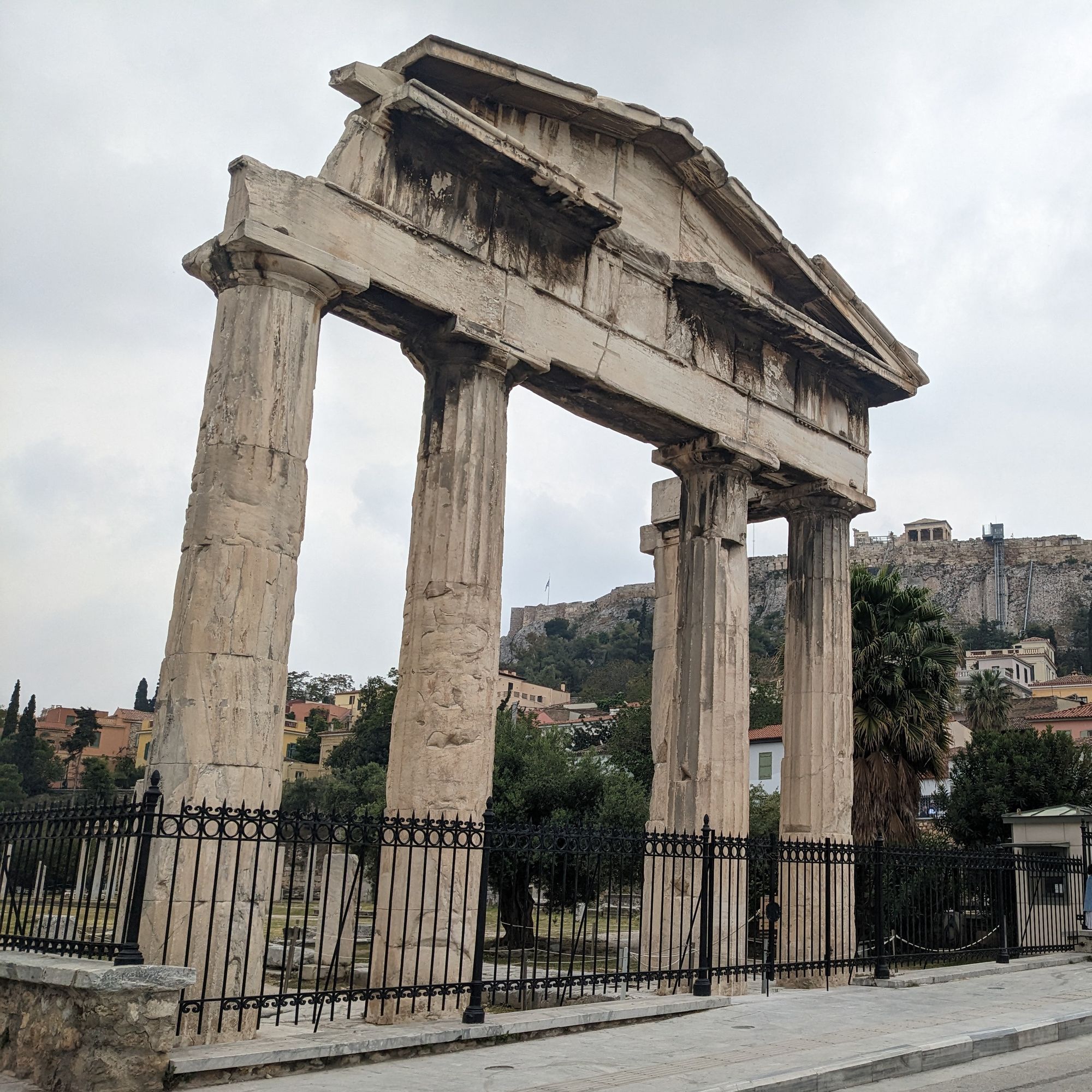
I ducked into the central city with its winding alleys and cafes and made my way to Atlantikos for lunch on the basis that it was recommended by Lonely Planet and open on Labour Day. Inside the restaurant was thronging with locals, to the point that staff were erecting tables on the street outside. The staff were able to accommodate me at a table in the lane-way beside the entrance. The sardines and the beetroot salad were fantastic. The only problem was that as I went to pay, a passer-by knocked my empty side dish off the table and it smashed on the pavement, thus perpetuating the crazy falsehood that Greeks end their meals by breaking plates. But the staff were cool about it. I returned to the hotel where I found that my laundry was mostly dry.
2023 May 02, Tuesday
For my flight back, I aimed to reach the airport a very conservative three hours before take-off. This proved wise as the airport train didn't show up at the connecting station. All of us on the platform had to shuffle onto a suburban commuter train instead, which added a good hour to the trip.
Just as when I went through Changi airport, so too in Athens Airport I went straight from the terminal to the gate as fast as I could. This took 44 minutes all up, three times longer than Changi because the check-in and emigration desks weren't automated, which they are in Singapore, causing long queues to form.
At the gate I claimed one of the few remaining power points to charge my devices. Soon I had throngs of Singapore aunties asking if they could use my adapter to charge their tablets. While I waited for boarding I listened to an audio-book about the Balkans, curious about this region I'd just passed through.
Flight TR 713 is a somewhat notorious route from Athens to Singapore because it's 12 hours without in-flight entertainment or complimentary meals. I knew about this beforehand, so I packed food from an Athens grocer and downloaded some lengthy audio-books. However, I ended up listening to none of them because I'd just started getting Menswear Guy in my Twitter feed. I actually spent half the flight reading blogs about men's suits and six hours sleeping. The flight passed in no time.
Reflections
- Lonely Planet is great for restaurant recommendations. It might not always recommend the best restaurant that only locals know, although it certainly can do that from time to time. What's more important is that they will never recommend a crummy tourist trap with a deceptively high rating on Google reviews. Lonely Planet minimises the downside risk of a bad restaurant.
- The Scrubba bag was really useful for doing laundry. The trick to remember is 1) add plenty of detergent; 2) you need to wring out the wet clothes in your bathroom towels before hanging them up; an,d 3) the clothes will take about 24 hours to air dry.
- Having a day pack is a awesome. This was my first flight with both a carry-on pack and a day-pack as a 'personal item'. It let me carry an umbrella, water and battery while my heavier carry-on pack stayed at the hotel. No flight attendant weighed my day-pack, so I could transfer heavy items like my laptop and comfortably weigh under the carry-on limit. And with my personal item under my seat during the flight I didn't need get anything from the overhead compartment. Game changing.
Miscellaneous Photos
